- Skip to primary navigation
- Skip to main content
- Skip to primary sidebar
Travel Blog, Itineraries & Guides, Hotel Reviews

The Perfect Osaka and Kyoto Itinerary – Kansai Travel Guide (2024 Update)
December 4, 2023 by Bino 2 Comments
One of Japan’s most iconic touristic regions is Kansai where the cities of Osaka and Kyoto are located. In contrast to other regions such as Tokyo or Central Japan , the Kansai region offers both the ultramodern comforts that Japanese big cities are known for as well as charming old towns dating back from the time of the geishas and samurai warriors. Another good thing is that traveling between Osaka and Kyoto takes less than an hour by train which makes combining these two cities in one trip highly advisable. Whether you love shopping, eating or exploring cultural attractions, check out this itinerary for your trip to Kyoto and Osaka.
Day 1 – From Osaka Castle to Shinsaibashi
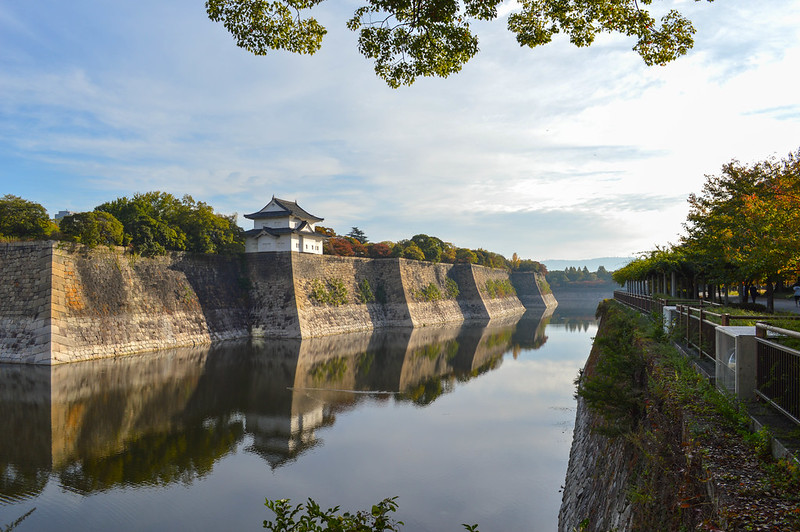
osaka castle moat by francisco anzola
Beat the crowds and head to Osaka Castle first thing in the morning. Your closest train station would be Koen on the JR Osaka Loop. Though you can easily find similar buildings in many Japanese cities, the Osaka Castle is still worth a visit and is a popular stop among visitors. It’s especially charming during spring when there are cherry blossoms on the grounds surrounding the castle. For a unique bird’s eye view, you can climb up on one of the higher floors of the Osaka History Museum (admission: 600 yen).
Tip: If you are planning to visit a number of tourist attractions in Osaka, consider purchasing the Osaka Amazing Pass . It gives you access to over 30 places over 2 days including Osaka Castle, Umeda Sky Building Floating Garden Observatory, Osaka Science Museum as well as unlimited subway/bus rides within Osaka.
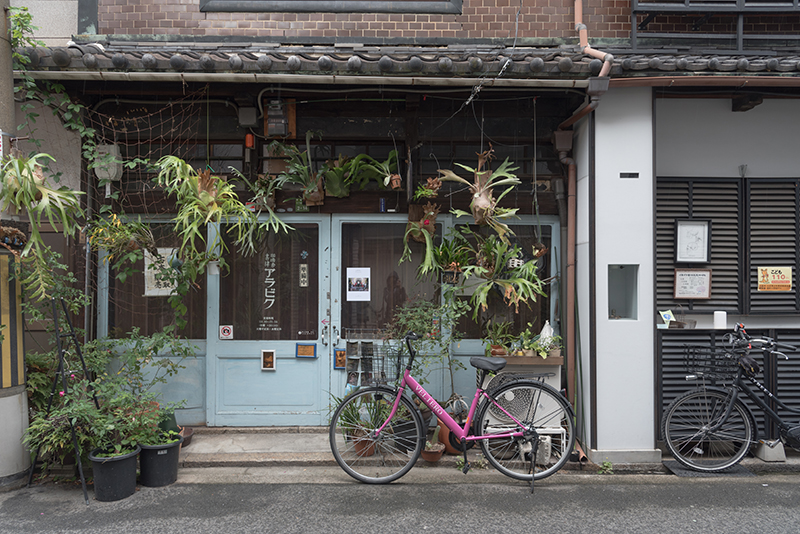
nakazakicho hipster area – must include in your osaka itinerary
By late morning, the cafes and specialty shops at Nakazakicho will be open. This is Osaka’s version of the hipster district with plenty of quirky items as well as specialty food items on sale. You can go cafe hopping here or just soak in the alternative vibe. The district is accessible from Nakazakicho station or if you’re on the main line, you can walk around 10 to 15 minutes from Umeda station.

cup noodles museum in osaka
Head to the suburb of Ikeda to check out the Cup Noodles Museum (8-25 Masumicho, Ikeda; open 9:30AM to 4:30PM daily). This popular Asian staple is said to originate here in the Kansai Region and the museum is a homage to the humble origins of today’s instant noodles. The museum itself is free but for a nominal fee, you can participate in a DIY cup noodle making session.
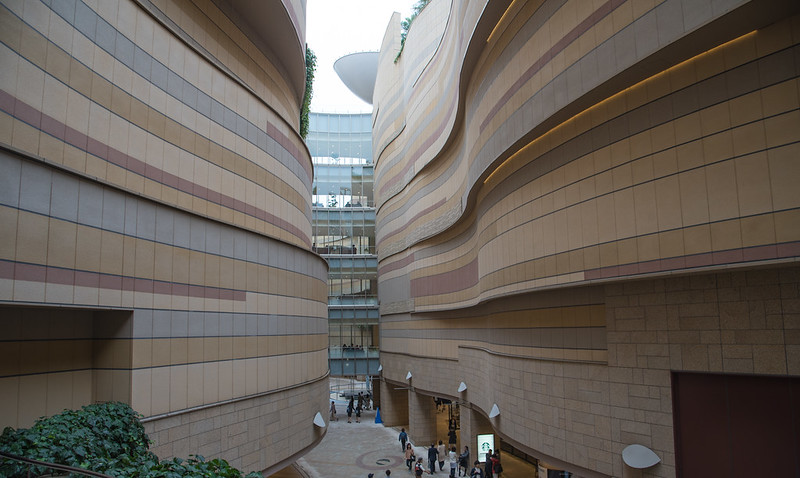
stunning curves at namba parks
By the afternoon, you can head back to the city to check out the lively Shinsaibashi and Namba areas. I suggest you start in Namba and keep Shinsaibashi for the evening when it’s especially atmospheric. While at Namba, you should not miss a visit to Namba Parks , a shopping mall with its interesting curved walls and rooftop garden. From here, walk north to America-mura , the center of youth culture in Osaka. You’ll find plenty in the way of big-name youth brands here if shopping is your thing. Head further west and you’ll come across another charming area in Osaka filled with specialty cafes and unique food shops. My to-go cafe here is Granknot (1 Chome 23-4 Kitahorie, Nishi Ward, Osaka; open from 9AM to 6PM Monday to Wednesday and Friday, from 11AM to 6PM Saturday and Sunday) where I had one of the frothiest lattes I’ve ever tasted.
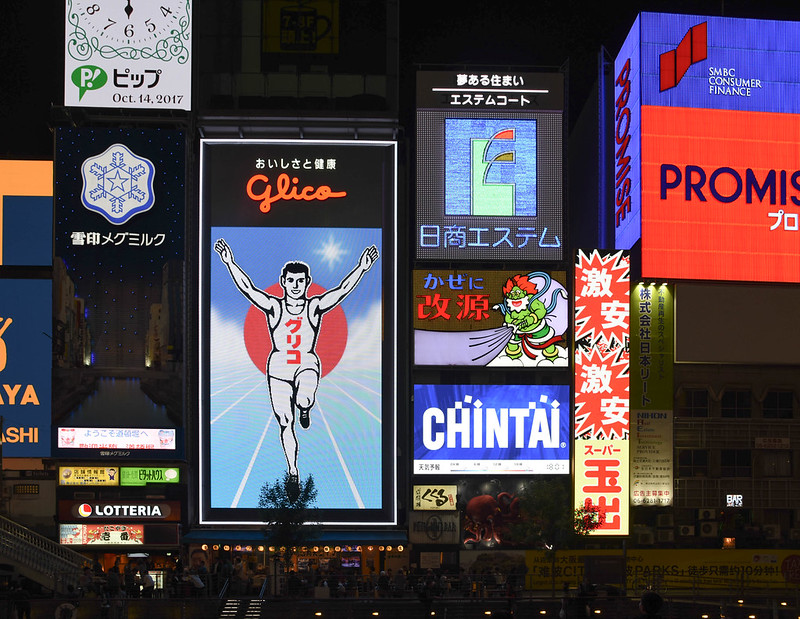
glico man advert
Make your way back to Shinsaibashi in late afternoon to do more shopping. While here, make sure to check out the takoyaki (octopus balls) which Osaka is known for. As night falls, head to Dotonbori for a glimpse of the famous Glico advertisement. It has become something of an icon over the years. It is best viewed from the Ebisu Bridge .

Just a few blocks east of the famous Glico man sign is the relatively unknown Hozenji Yokocho Alley . This is a narrow, pedestrian-only street with an old town feel. Here, you’ll find the quaint Hozenji temple as well as a number of izakayas and bars.
Check out my Osaka and Kyoto food guide here
Day 2 – traveling from osaka to kyoto.
Unless you plan to go indepth or have an interest in Universal Studios , one day is probably enough for Osaka and your best bet is to catch a train to Kyoto. From Osaka, the cheapest train to Kyoto is one on the Hankyu Kyoto Line. It’s just 43 minutes from Umeda to Kawaramachi (Kyoto’s main street). The fastest method is the shinkansen or bullet train from Shin-Osaka Station to Kyoto Station that takes only 15 minutes. Rides on the bullet train are covered by the JR Pass .
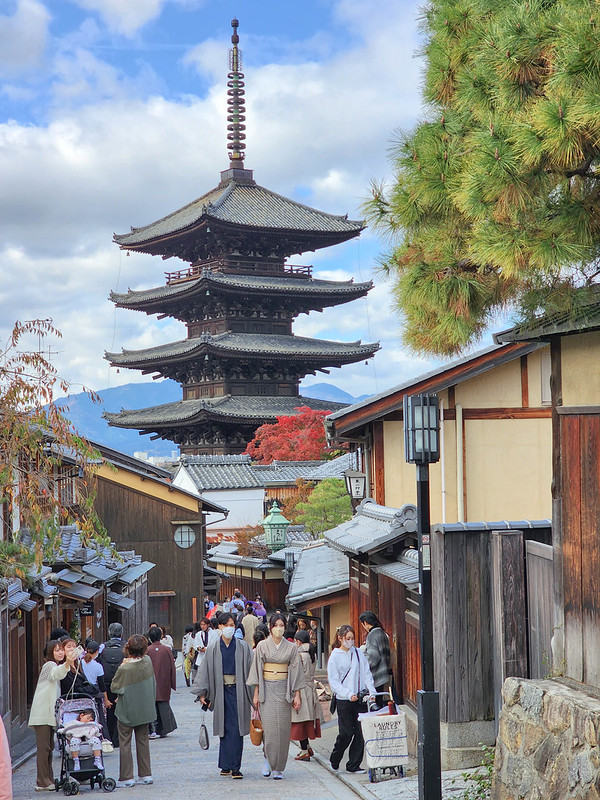
hokanji temple in higashiyama district of kyoto
There are hotels all over Kyoto but for the atmosphere, I recommend staying somewhere in the old town of Gion. I personally stayed at Hotel Celestine Kyoto Gion during my last visit to the city and absolutely enjoyed the zen vibe at a reasonable price. It will be late morning by this time and you may want a caffeine fix. %Arabica is undoubtedly the cafe of choice here. In Kyoto, especially in the old town of Gion, many travelers walk around town wearing rented kimonos while taking selfies. You can rent a kimono there at a reasonable price.

Kyoto has so many temples that it’s futile to try to visit them all. There are a few I would recommend for their varying styles. Since you are already in Gion anyway, check out the Entoku-in (530 Shimokawara-cho, Kodai-ji, Higashiyama-ku; open daily 9AM to 5:30PM), an unassuming temple whose gate you’ll easily miss unless you make a conscious effort to locate it.
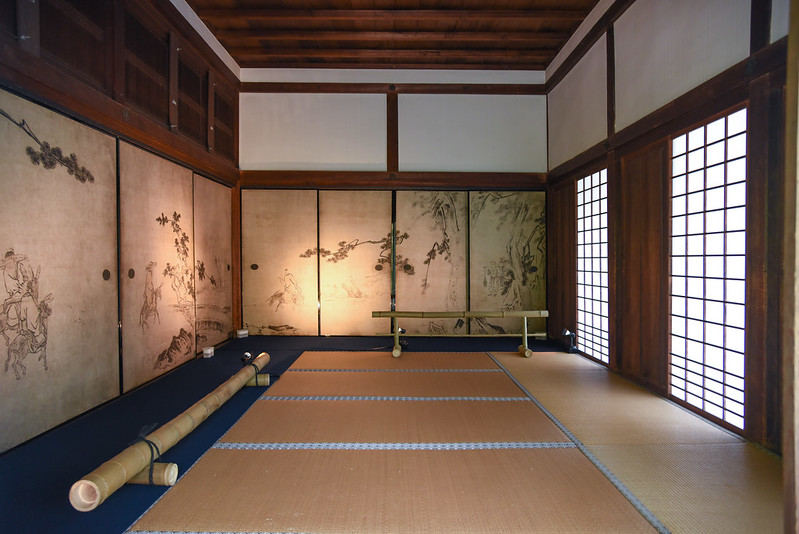
tenjuan gardens
Afterwards, make your way up north for the breathtaking Tenjuan Gardens (admission: 400 Yen) located within the Nanzenji complex. The grounds boasts of an impressive rock garden and a larger garden at the back surrounded by a pond. If you visit during November, the garden is illuminated at night to highlight autumn colors. As a final sightseeing stop, check out the less-visited Shisendo Temple . This is another place with a nice zen garden that looks especially scenic when viewed from the terrace.
As night falls, head back to Gion and stroll around Hanamikoji-dori . This is the best place to spot geishas in Kyoto, especially during the weekend. While the geisha culture is mostly lost in most of Japan, here, ladies who work in offices by day fulfill their geisha inclinations by dressing up at night. A nice place to have dinner nearby is the Michelin-starred Uokeya-U (605-0074 Kyoto, Higashiyama Ward, open daily 11:30AM to 2PM, 5PM to 8PM) which serves unagi rice bowls.
Day 3 – Arashiyama, Kinkakuji, Nishiki Market
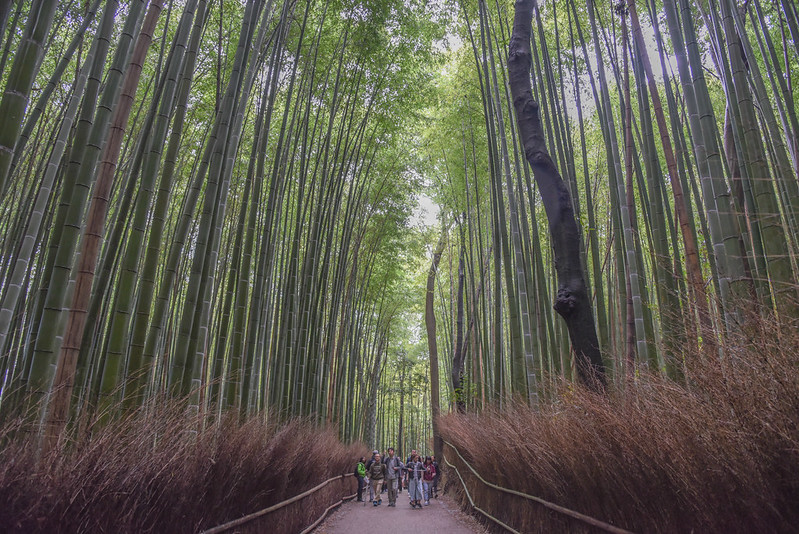
arashiyama bamboo forest
Head out early in the morning to Arashiyama Bamboo Forest . This is one of Kyoto’s most instagrammable spots with tall bamboo groves swaying with the wind as you walk past the well-trodden path. Admission’s free and the place is open 24 hours but the place can get really busy by midday. While in Arashiyama, make your way as well to Gio-Ji’s moss-covered grounds. The greenery is a sight to behold and is a tempting place for a short nap (though you can’t actually lie on the grounds). While in Arashiyama, you might also want to go for a cruise down the river to fully appreciate the scenery. Just go towards the direction of the river and you’ll easily find boats for hire. Do check on the length of the boat ride before boarding.
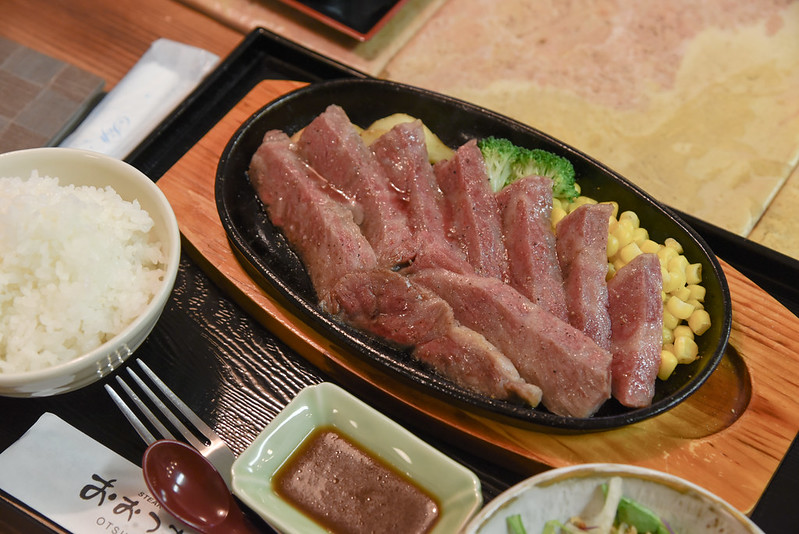
delicious steak at otsuka
For lunch, check out the delicious steaks at Otsuka . (open daily except Thursday 11AM to 2:30PM) I can’t recommend this place enough for its succulent steaks.
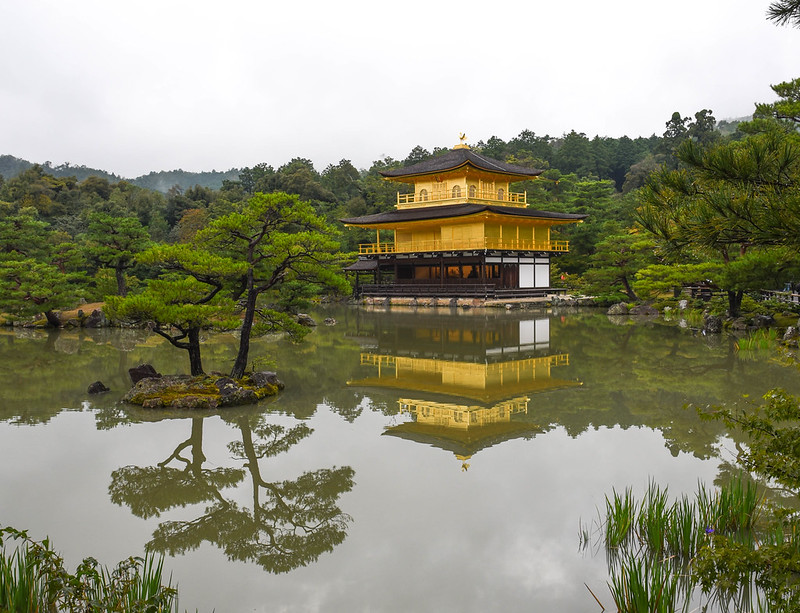
From Arashiyama, all it takes is a bus ride (take #11 then change to #59) to the trio of temples – the Kinkakuji, Ryoan-ji and Ninna-ji. By now, temple fatigue would probably set in and if you’re to choose only one, I would suggest you check out the golden Kinkakuji . The place is more a spectacle than anything. Visitors are prohibited from entering the building and there is just a walkway which allows visitors to appreciate it from afar. This is one of Kyoto’s most popular sights and it can get crowded easily. However, since everyone’s restricted to the walkway, it’s very easy to get a decent shot of the Kinkakuji from almost any vantage point.
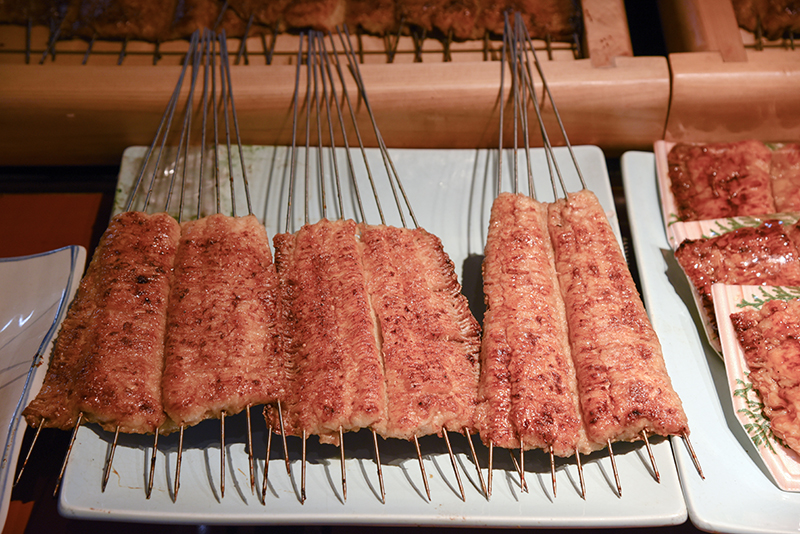
quick bites at nishiki market
By late afternoon, head back to downtown Kyoto and check out the bustling Nishiki Market . This is one place where you can sample a variety of street food, from delicious mochi to sushi and even grilled seafood. But don’t eat too much. You’ll want to save stomach space for dinner. The small alley of Pontocho to the east (walking distance from Nishiki Market) offers a plethora of dining options. My personal favorite is Iroha which serves excellent sukiyaki.
Day 4 – Fushimi Inari & Kiyomizu Dera
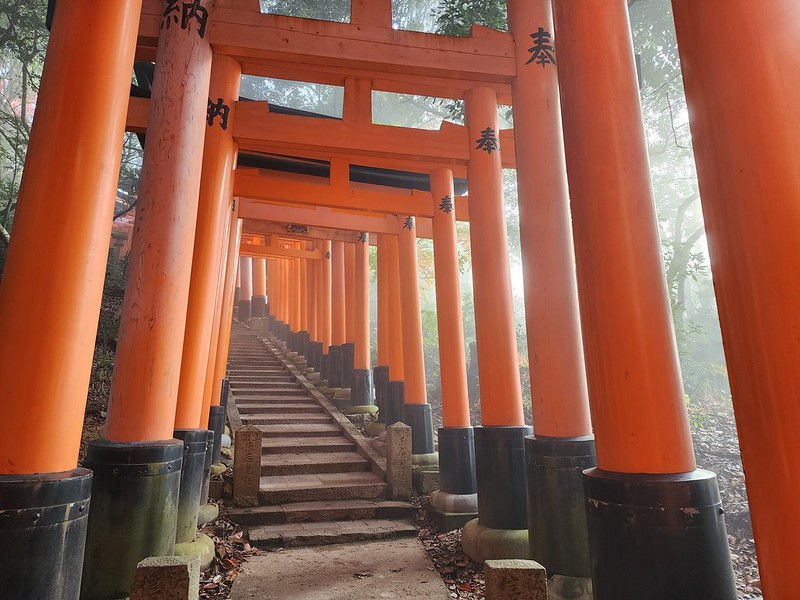
fushimi inari taisha
Head out early in the day for Fushimi Inari-taisha . The shrine is known for for its multitude of torii gates that lead up to the summit – Mt Inari at 233 meters high. There are said to be over 1,000 torii gates in Fushimi Inari and several shrines within the complex. Although it has been a popular shrine to visit among Japanese, it became popular among foreign travelers during the social media age, especially as the rows of torii gates make for good photo taking spots. Because of this, and due to the free admission, the shrine is one of the busiest tourist attractions in Tokyo. If you’d like to come here without the crowds, try to arrive before 8AM or after 8PM (it is open 24 hours). From Kyoto Station, you can take the JR Nara line to Inari Station which is right in front of the shrine. If you have any of the JR passes, you don’t have to pay extra for this train ride.
Allow for about 2 hours (inclusive of photo stops) to complete the loop and make it back down. Just opposite the road leading to the entrance of the shrine, there is a store selling excellent daifuku (glutinous rice ball) stuffed with fresh fruit.
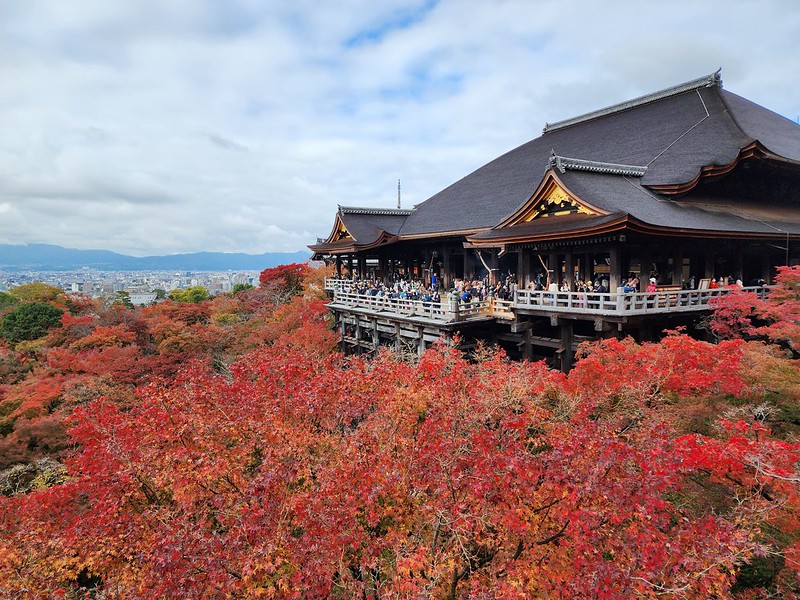
kiyomizudera
Another spot not to be missed – especially if you are in Kyoto during cherry blossom or autumn season – is Kiyomizudera . Perched on the foothills of Mt Otowa, the massive temple is perhaps best surveyed from the viewing deck just next to it. You’ll see a flood of colors – whether it be pink during cherry blossom season or red and yellow during autumn. This makes for a quintessential photo spot in Kyoto. The surrounding gardens are also a joy to walk around in during these periods.
If you have an extra day to spare, you can also check out Wakayama which is around a 1 hour journey from Osaka / 1 hour 45 minutes journey from Kyoto.
If you have an extra 3 or 4 days to spare, you can go further west to the cities of Himeji, Okayama and up to Hiroshima. Check out this Western Japan itinerary .
Getting From Kansai Airport to Kyoto (& Vice Versa)
If you are heading back to Kansai International Airport after visiting Kyoto, I would suggest purchasing a JR West Kansai Area Pass valid for 1 day rather than buying a one-off train ticket. This will save you 680 Yen on your train ride (780 Yen if you buy the area pass online). You can purchase the area pass online here for a further 100 Yen discount on top of the 680 Yen savings.
Getting From Kansai Airport to Osaka (& Vice Versa)
If you are heading back to Kansai International Airport from Osaka, hop aboard the Nankai Line Airport Express for a smooth 34-minute journey to the airport from Namba (or vice versa). You can purchase the ticket here .
Where to Stay in Kyoto and Osaka
Osaka: Few other hotels are as convenient as Hotel Hankyu Respire Osaka which offers direct trains to Kansai Airport or Kyoto. Room prices are also reasonable, rendering it an excellent mid-tier option. You can also check for the most competitive prices for hotels in Osaka through this aggregator here .
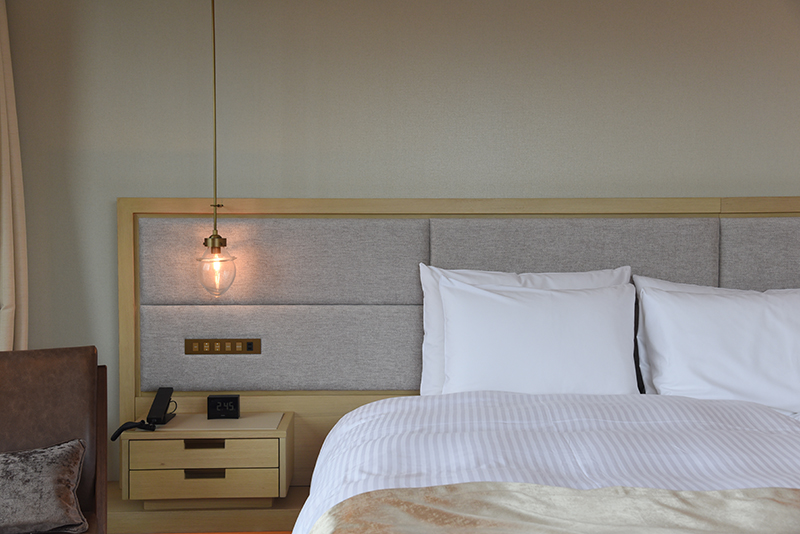
hotel celestine gion kyoto
Kyoto: In Kyoto, I stayed at Hotel The Celestine Kyoto Gion , a great find in the heart of Kyoto’s tranquil Gion old town. The zen vibe here is more in tune with luxury hotels but the price tag is surprisingly mid-tier. Many of the city’s tourist attractions are a short walk away. Among budget or midrange options, you can check out the relatively new Hotel The M’s Kyoto which is situated within walking distance from Kyoto Station in the city’s commercial district. If you prefer to stay near the shopping area (Kawaramachi), Cross Hotel Kyoto is highly rated for its good-sized rooms and close proximity to bus lines and the main shopping street.
You can also check for hotels in Kyoto through this aggregator here .
Train Passes – Which One to Get?
If you are intending to include Tokyo to your trip to Osaka and Kyoto, it may be worthwhile to get the JR Pass . A one-way trip from Osaka to Tokyo on the shinkansen (bullet train) costs about 14,720 yen or slightly more than half the price of the JR Pass . Assuming you take it round trip and ride local JR trains as well, you’ll end up saving more money with the JR Pass than buying tickets ala carte. You can purchase the JR Pass here .
Alternatively, if you are just staying within the Kansai area (i.e. Kyoto, Osaka, Kobe, Himeji), you can check out the cheaper JR Kansai Pass which you can use for shinkansen, limited express trains and JR buses. You can get the JR Kansai Pass here .
Other Practicalities
- While in Japan, I typically pre-purchase my prepaid data sim card as it is cheaper compared to buying it on the spot upon arrival. The sim comes with unlimited data and you can purchase here and pick up when you arrive at the airports of Osaka or Tokyo.
- Given how expensive Japan is, I typically purchase travel medical insurance whenever I’m coming here in case I need to see the doctor or miss my flight/s unexpectedly. You can check out SafetyWing which provides travel medical insurance on a subscription basis for as low as US$37/4 weeks of coverage. The good thing about going with them is that one child up to 10 years of age is automatically included with every adult possessing the travel medical insurance policy and you can purchase a plan while you’re already on your trip.
- Osaka and Kyoto are year-round destinations but do note that it can bet unbearably hot in the summer which is from July to September. I’d recommend coming here in May (after the cherry blossom and after the Japanese golden week) or October (before the peak autumn period) during the shoulder season in order to escape peak prices with pretty decent weather.
You May Also Like
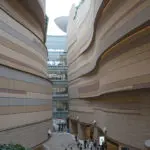
Let me know your thoughts by leaving a comment below. Alternatively, you can also email me at b i n o (at) iwandered.net. You can follow I Wander on Facebook , Telegram , or Instagram . Also, if you liked this article, please feel free to SHARE or RETWEET
More Posts - Website
Reader Interactions
Older posts.
April 11, 2018 at 12:06 am
Lovely post. Thank you for sharing
August 30, 2019 at 6:04 pm
Thanks for sharing, The Cherry Blossom during the spring is amazing. We took spectacular photos and enjoyed a wonderful family trip.
Leave a Reply Cancel reply
Your email address will not be published. Required fields are marked *
Save my name, email, and website in this browser for the next time I comment.
Notify me of follow-up comments by email.
Notify me of new posts by email.
We’re in Myanmar right now and it’s SO epic… click here to follow along on Instagram.
- Meet the Team
- Work with Us
- Czech Republic
- Netherlands
- Switzerland
- Scandinavia
- Philippines
- South Korea
- New Zealand
- South Africa
- Budget Travel
- Work & Travel
- The Broke Backpacker Manifesto
- Travel Resources
- How to Travel on $10/day
Home » Asia » Japan » Kyoto vs Osaka: The Ultimate Decision
Kyoto vs Osaka: The Ultimate Decision
Japan is an island nation where incredible history and culture meet a fast-paced, high-tech environment. From the dense wilderness of Hokkaido to the dynamic city life in Osaka to the tropical coastline of Okinawa, traveling to Japan should be on everyone’s bucket list.
Just behind the capital of Tokyo, Kyoto, and Osaka are two of the country’s most significant (and largest) cities. With over 2.8 million people living in Osaka, the city offers a vibrant buzz you can’t find in many other cities. Big city life, high-end hotels and restaurants, and bustling nightlife make this city ideal for younger travelers and culture lovers.
Kyoto is considered Japan’s most beautiful city. It is much smaller than Osaka, home to around 1.5 million people. With over 1000 Buddhist temples, cherry blossoms galore, and incredible traditional architecture, the city has a laid-back and relaxed vibe and offers a more authentic Japanese experience.
While it is totally worth visiting both cities, some travelers will need to choose between Kyoto and Osaka as vacation destinations. In this article, I’ll put both cities head to head, comparing them against common questions you might ask as a tourist.

Unlock Our GREATEST Travel Secrets!
Sign up for our newsletter and get the best travel tips delivered right to your inbox.
Kyoto vs Osaka
Is kyoto or osaka better, visiting kyoto and osaka, faqs about kyoto vs osaka, final thoughts.
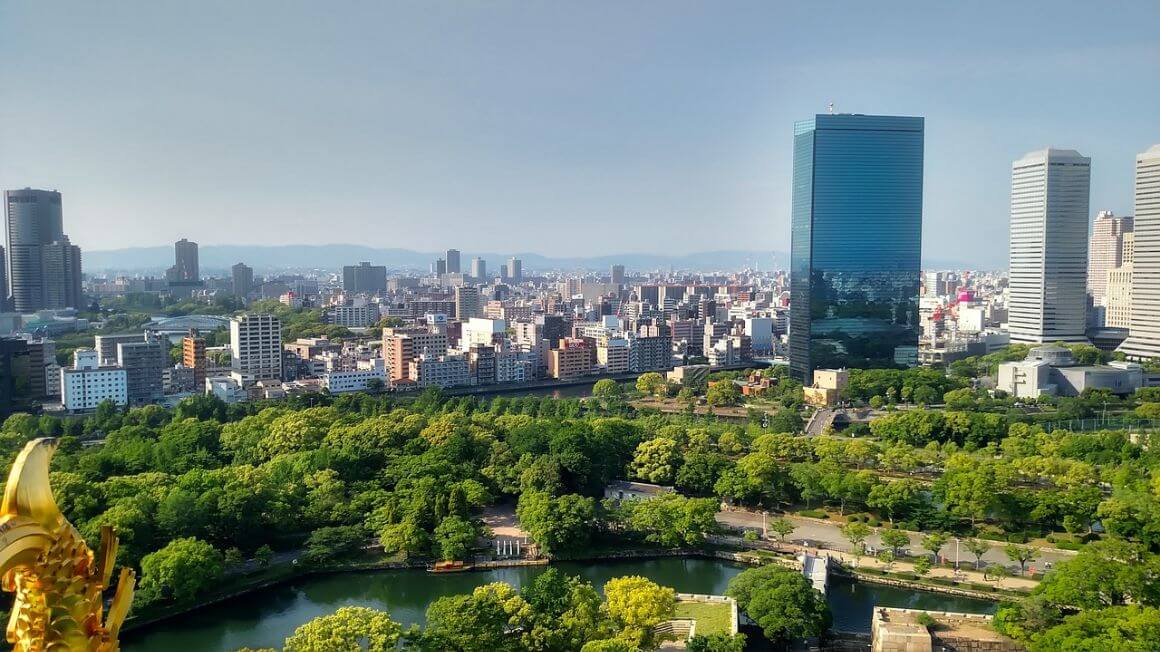
These two Japanese cities offer a unique atmosphere for tourists: one is a big-city environment where life moves at a fast pace, while the other is a peaceful gem set amongst the blossom trees, offering an authentic taste of Japanese life.
Kyoto Summary
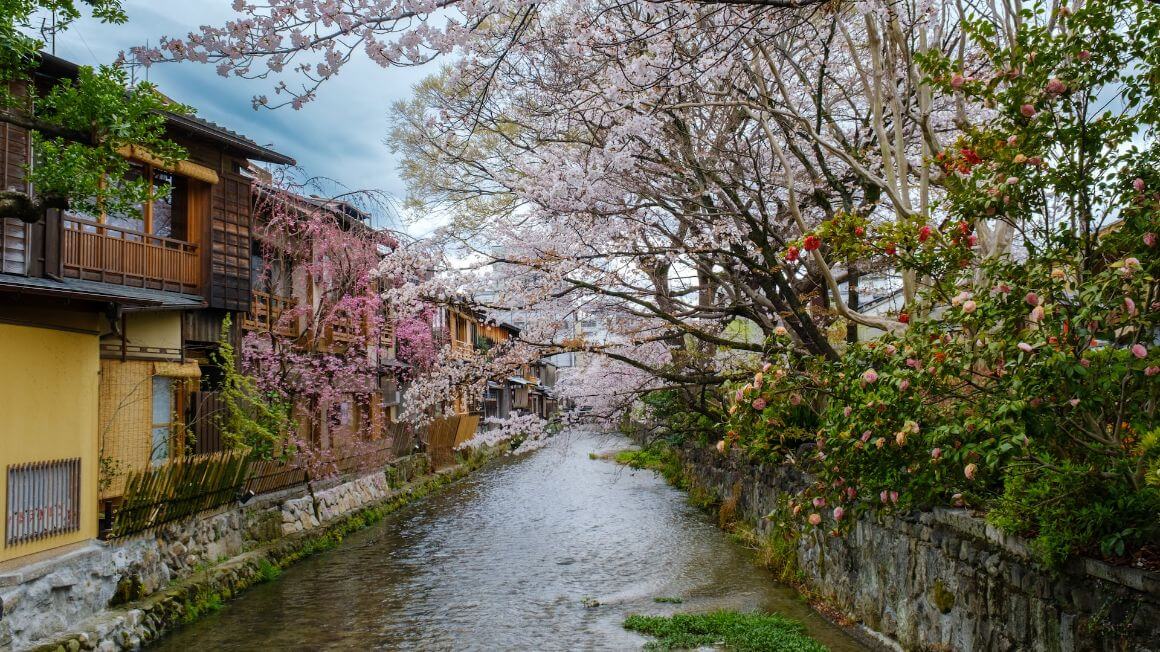
- Kyoto is a large city in Japan, reaching 320 square miles inland of the island. Much of this area includes outlying districts in the Kyoto province, and the city center is more compact.
- Famous for its hundreds of historic temples, Shinto shrines, palaces, and gardens (awarding it as a World Heritage Site). It was once Japan’s capital and largest city, with incredible culture and heritage to match.
- The best way to travel to Kyoto is by bullet train. These high-speed trains connect the city with other large metros like Osaka and Tokyo and are safe, affordable, and always on time. The city of Kyoto doesn’t have its own airport and uses the Osaka Airport (15 minutes away by train).
- Kyoto is a compact city with many walkable areas/centers. There is also a well-developed transport network with subways, trains, and buses. Taxis are abundant and relatively affordable. Cycling is a popular way to get around Kyoto.
- Kyoto is home to the most well-known hotel brands, lower-budget hotels, guesthouses, bed and breakfasts, and a few affordable homestays and hostels for budget travelers.
Osaka Summary
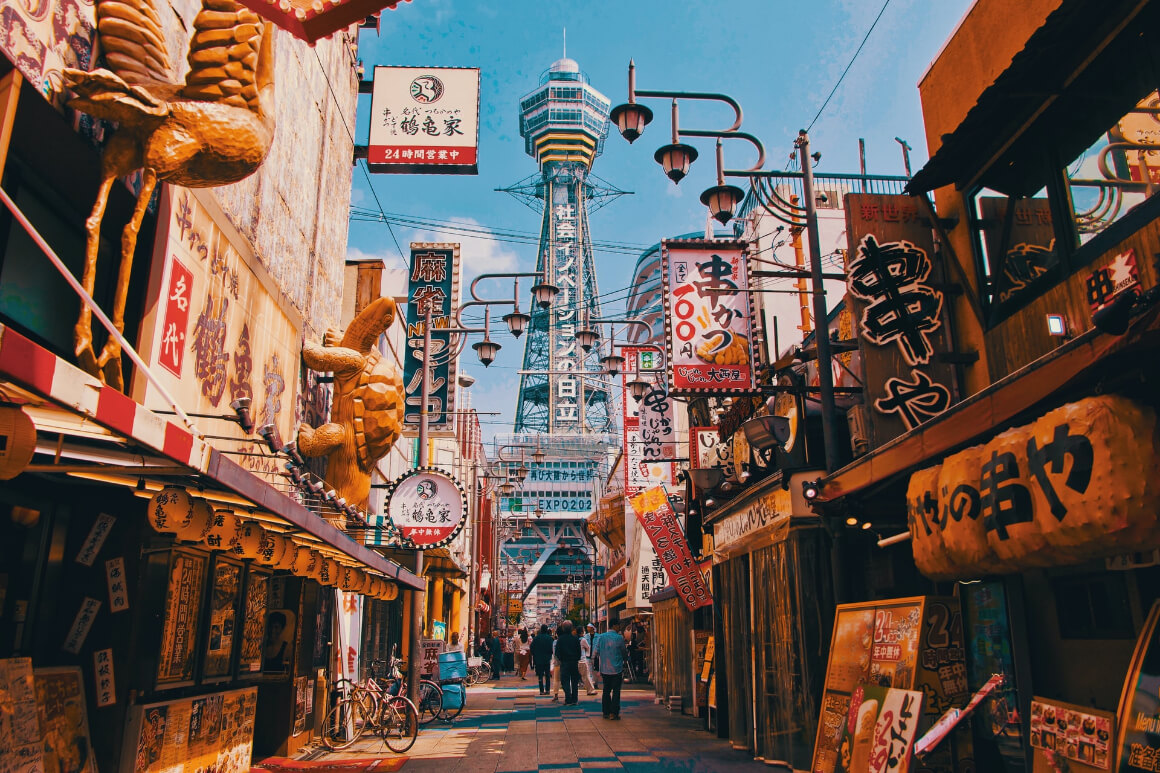
- Osaka is Japan’s third largest city, home to over 2.8 million people. It is located on Japan’s main island of Honshu at the mouth of the Yodo River on Osaka Bay, and the city alone extends for over 86 square miles.
- Most well known for its incredible food scene and the outgoing local population. The street scene brings a fun atmosphere to the dynamic city, which is also famous for its high-rise skyline.
- The city can be accessed via plane, train, bus, and boat. The bullet train is the best way to travel between Japanese cities. Flying is possible using the Osaka Kansai International Airport , but it is more expensive and time-consuming than taking the train. Ferries and cruises leave from Osaka Nanko Port.
- Osaka is a big city with an excellent public transport network. Transport is relatively expensive but always runs on time, efficiently connecting all parts of the city. The network includes trains, subways, and buses. However, buses aren’t recommended for short-term visitors.
- Accommodation in Osaka includes brand-name hotels, local boutique hotels, affordable hostels and backpackers, self-catering vacation rentals, and ryokans (a traditional Japanese-style inn).
Kyoto and Osaka are sometimes viewed as one destination since they are just a short train ride away from one another. However, each city offers a unique blend of old and new Japan. Let’s take a look at what sets Kyoto and Osaka apart from one another and which city is better for your visit to Japan .
For Things to Do
Depending on what interests you most, there are plenty of things to do in Osaka and Kyoto.
Culture and history fans should make a beeline for Kyoto. As Japan’s past capital city, Kyoto is overloaded with cultural attractions and historical intrigue. The city is dotted with thousands of Buddhist temples and shrines, with the most famous being the Kinkakuji Temple, Ryoanji Temple, Kifune Shrine, Fushimi Inari Shrine, and Kiyomizudera Temples.
With a rich traditional culture and history following both the Buddhist and Shinto religions, Kyoto is a great place to educate yourself on Japanese culture.
Fushimi Inari Taisha is one of the most famous and iconic landmarks in Japan. To make your visit truly magical and unforgettable, follow this EPIC travel guide and you’ll leave with cherished memories of this wonderful place.
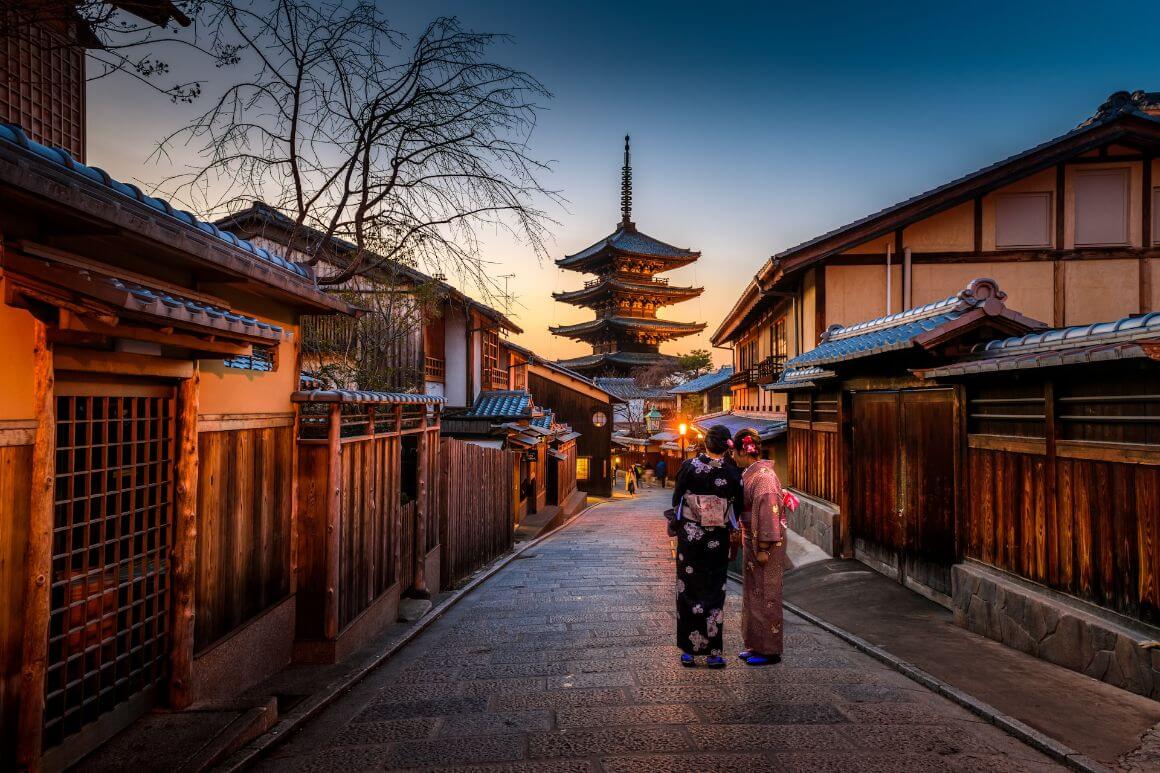
Architecture fans will be blown away by both cities. Osaka offers a typical Asian high-rise experience, with high-tech buildings and lights dominating the skyline. On the other hand, Kyoto has more of a small-town feel, with more traditional Japanese architecture.
When it comes to outdoor activities, Kyoto has more going for it compared with Osaka. The city is surrounded by greenery and mountains, which visitors can take advantage of for cycling, hiking, and even trying out some traditional activities like Sumarai fighting, ninja training, and Japanese archery.
Foodies might prefer Osaka, which has a memorable food scene ranging from ramen to sushi to curry and udon. The city offers everything from high-end restaurants to hole-in-the-walls and street food vendors – equally worth a taste.
Winner: Kyoto
For Budget Travelers
Kyoto is more of a tourist hotspot than Osaka, which has a local big-city scene. Because of this, accommodations and restaurants tend to be more expensive and targeted toward international visitors. If you’re on a budget, Osaka is the more affordable city to stay in.
Accommodation is typically semi-urban or urban in Kyoto, while urban in Osaka. The average price for one-person accommodation is around $50 in Kyoto and $40 in Osaka, and a double occupancy room would cost around $100 in Kyoto or $80 in Osaka. Affordable hostels are available for as low as $30 for a shared dorm room and are more common in Osaka.
The primary mode of transport in both cities is the subway and trains. Since distances can be longer in Osaka, expect to pay around $8 per day to get around Kyoto or $13 in Osaka.
A meal at an average restaurant in either Kyoto or Osaka costs around $10, or $23, on food per day, averaging out affordable street food and more expensive restaurants. Street food and markets are significantly cheaper.
A bottle of beer from a known brand costs around $3 in Kyoto or $2.50 in Osaka.
Winner: Osaka

Wanna know how to pack like a pro? Well for a start you need the right gear….
These are packing cubes for the globetrotters and compression sacks for the real adventurers – these babies are a traveller’s best kept secret. They organise yo’ packing and minimise volume too so you can pack MORE.
Or, y’know… you can stick to just chucking it all in your backpack…
Where to Stay in Osaka: Guest House MIYABI
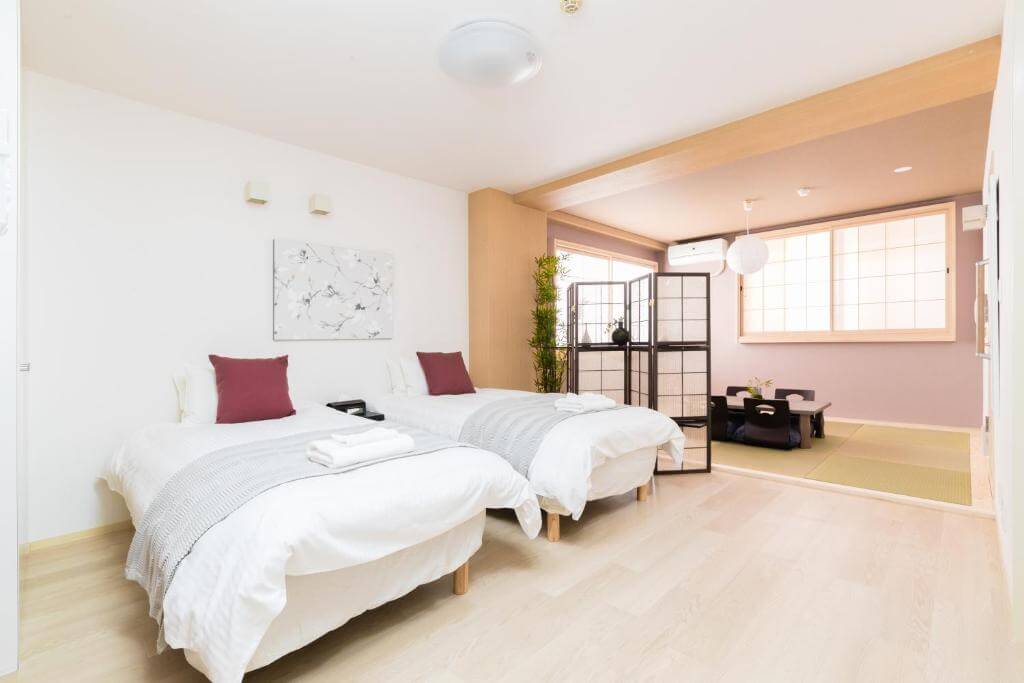
Guest House MIYABI is a traditional Japanese-style ryokan that blends Japanese interiors with western familiarity. Just a short distance from the heart of the city, this spot is the perfect budget accommodation to experience traditional Japanese hospitality first-hand.
For Couples
Couples seeking a dose of culture and history will prefer Kyoto. Scattered with exquisite traditional Japanese architecture, Buddhist temples, and Shinto shrines, there are more than enough attractions to keep you busy for weeks.
The city is also better for museums, with the Kyoto Art Center, Kyoto City Archaeological Museum , Kitamura Museum, and Koryo Museum of Art showcasing Japan’s most prestigious art collections. Osaka has 15 museums, which are also worth researching.
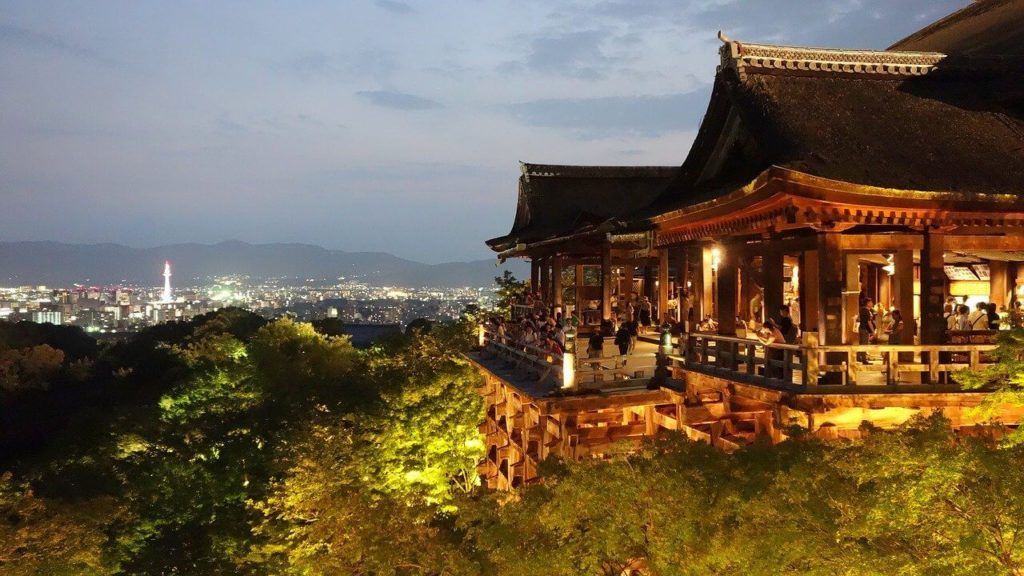
Couples looking for a big city experience packed with exciting nightlife and dining experiences should opt for Osaka. The city is buzzing with activity for all ages and is a nightlife hotspot for clubs, trendy bars, and some of the finest cuisine in Japan.
If you’re after a pampering, relaxing experience, both cities have their fair share of high-end hotels and resorts. If I had to compare Kyoto to Osaka, there are a few more exquisite resorts just outside the city center of Kyoto that offer a more tranquil natural setting for a pampering vacation.
Where to Stay in Kyoto: Ace Hotel Kyoto
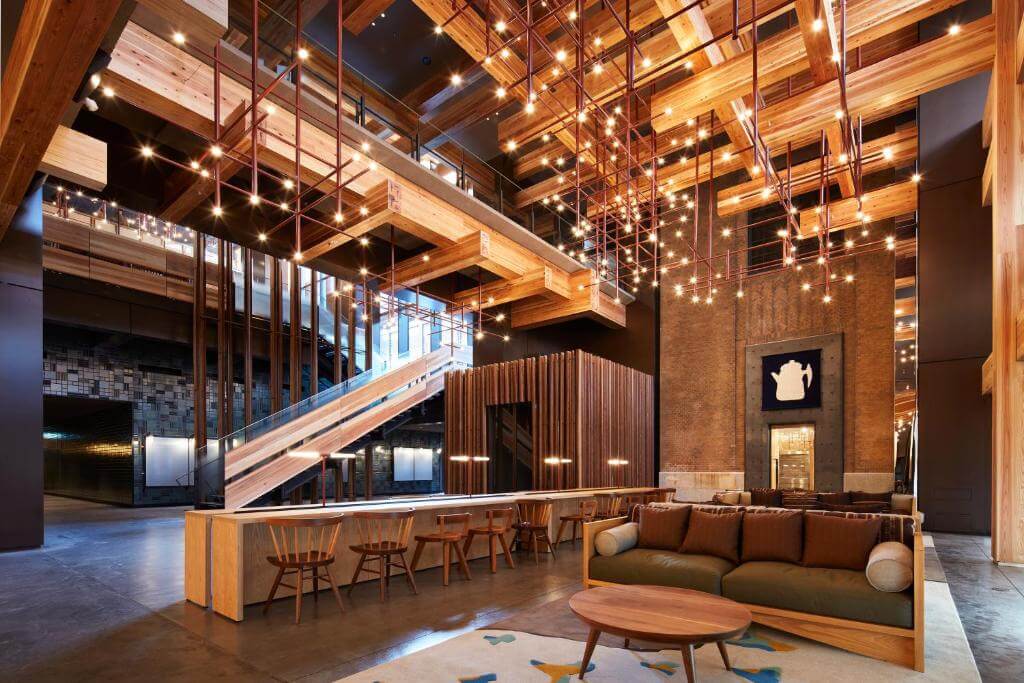
Ace Hotel Kyoto is an exceptional example of modern Japanese architecture. With clean lines and contemporary interiors, the entire space is overflowing with romance for a relaxing vacation with a significant other. The hotel includes a garden and terrace and offers daily a la carte breakfast.
For Getting Around
The best way to get around Kyoto is on foot or by bike. The city is designed with safe and well-signposted cycling lanes and streets dedicated to pedestrians. Within the city center and the heart of each ward, the city is very walkable, with significant attractions located relatively close to one another.
When you need to travel longer distances, Kyoto is also easy to explore using public transport, with trains, subways, buses, and taxis servicing the area.
Some areas of Osaka are walkable, with the central shopping districts and the city center offering clear walking side streets and a few pedestrian-only streets.
Subways and trains are the best way to get from one area to another in Osaka. Organize a prepaid ICOCA card to pay for your transport. Stations can be overwhelmingly large and busy, but English signs make them possible to navigate. Taxis are another great way to get around, but they can be expensive when you take traffic into account.
It is not recommended to rent a car in either Kyoto or Osaka.
For a Weekend Trip
Don’t get me wrong; you could easily spend months exploring the streets of Osaka , digging into the city’s local city scene and culture. However, if you only have a quick weekend trip to visit Japan, you could easily fit in all the city’s main attractions in a short visit.
Two days in Osaka is the perfect amount of time to see most of the city’s main attractions. Despite being the third-largest city in the country, Osaka is easy to navigate without spending too long transiting between neighborhoods. Attractions are relatively near to each other, making it possible to explore on foot or using the metro.
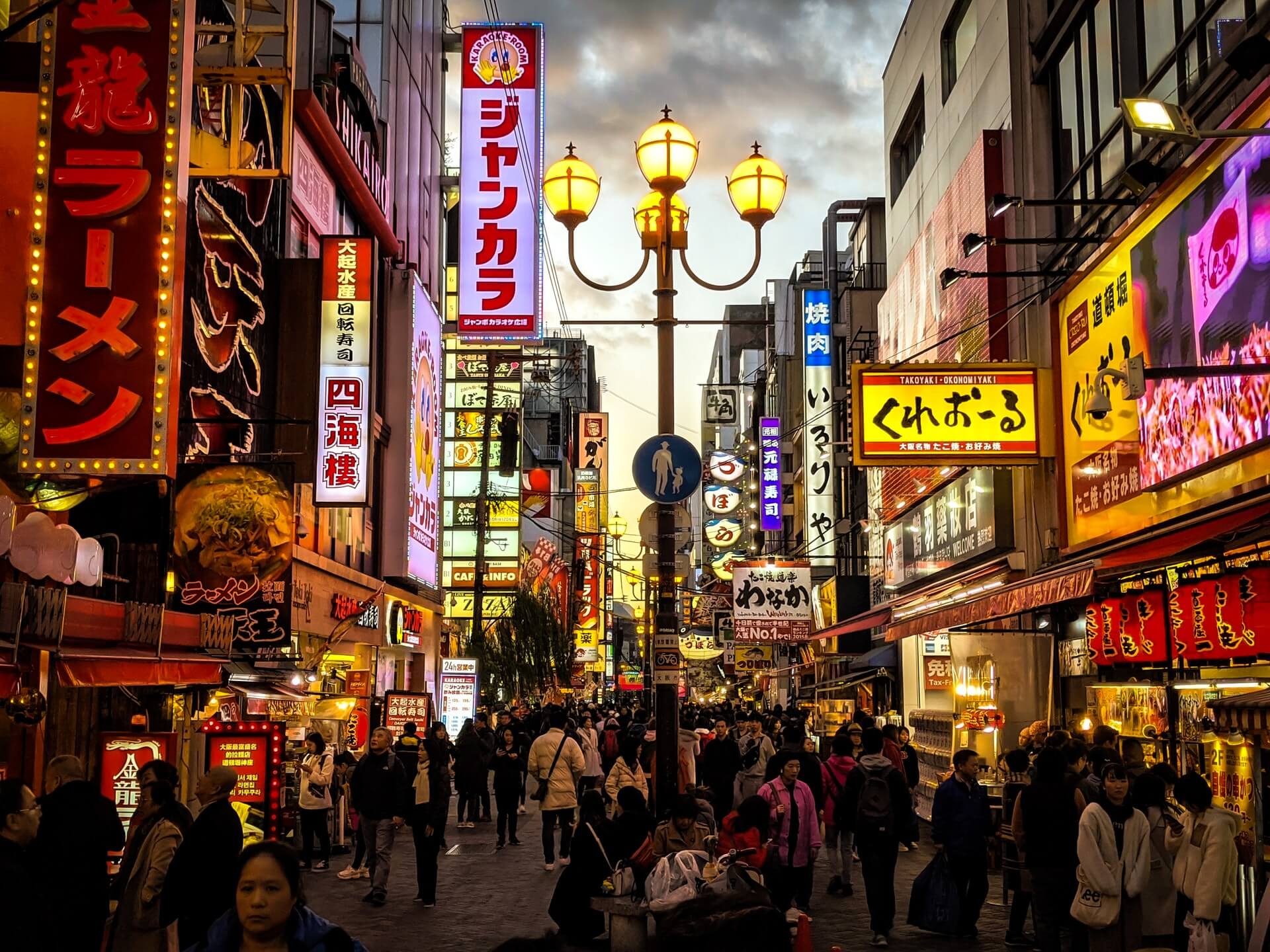
Spend a day in Minami, the vibrant southern hub of Osaka. Dotonbori is a popular neighborhood known for being the entertainment hub of the city, packed with markets, theatres, and authentic Japanese charm.
Shinsaibashi-suji is one of Osaka’s longest-covered shopping streets, lined with shops, restaurants, karaoke booths, and more. The streets adjacent to the riverwalk are dotted with tasty street food vendors.
A night out in Shinsaibashi is a must, with some of Osaka’s most vibrant bars and clubs in the area.
For your second day, head to Kita – the trendy historic downtown area in northern Osaka. Here you can marvel at Osaka Castle and catch some vitamin D in the surrounding park.
For a Week-Long Trip
If you have a whole week to spend in Japan, I recommend basing yourself in the cultural hotspot of Kyoto . With an abundance of cultural attractions, history to be learned, incredible cuisine, and gorgeous natural landscapes, there is enough to do and see in Kyoto to keep you busy for a good week.
If you have a full week in the city, I advise enjoying getting to know Kyoto before spending a few days taking day trips to nearby cultural attractions, natural parks, or even Osaka (which is just a hop and a skip from Kyoto by bullet train). It’s the best of both worlds.
At least three full days are needed to get a taste of downtown Kyoto. You could easily spend a week exploring the hidden streets and alleyways of Japan’s ancient capital and not run out of things to do.
Spend a day sightseeing in Southern Higashiyama – Kyoto’s most important sightseeing district. For your second day in the city, head to the west side of the city to Arashiyama to visit some incredible temples. Kurama in Northern Higashiyama is also worth checking out. It’s a rural town in the northern mountains with some of the most breathtaking views in the area.
Comparing Kyoto and Osaka isn’t an easy task, so, If you’re able to visit both cities, you’re in luck! One of the best things about these two cities is that they are just a short train ride away from one another.
They’re so close, in fact, that you could travel from city to city (around 34 miles distance) in around 15 minutes on the famous bullet train.
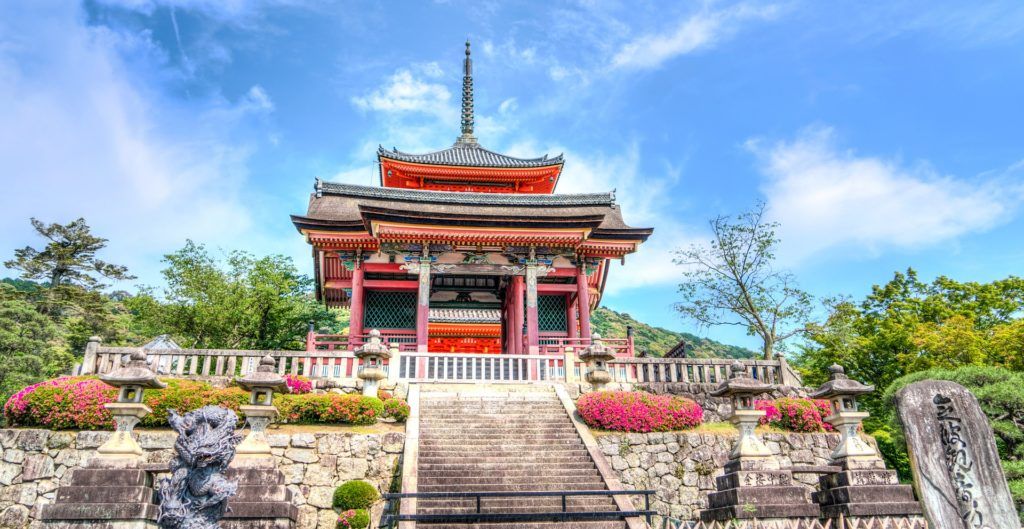
The experience alone is worth the journey, and traveling from Kyoto to Osaka and vice versa is as easy as stepping out to get your groceries in any large city. The journey costs around $11 for each direction between Shin-Osaka Station and Kyoto Station.
Driving is possible (and will take around one hour without traffic) but is not advised since traffic and parking will cost you more time, money, and energy.
In fact, the cities are so close to one another that you could base yourself in one city and travel to the other whenever you need.

We’ve tested countless backpacks over the years, but there’s one that has always been the best and remains the best buy for adventurers: the broke backpacker-approved Osprey Aether and Ariel series.
Want more deetz on why these packs are so damn perfect? Then read our comprehensive review for the inside scoop!
Which city is more affordable to travel to, Kyoto or Osaka?
Japan is one of the most expensive countries to visit in the world, and both cities are equally as expensive as one another. However, since Osaka is much bigger, there are many more affordable places to eat and stay in this city.
Which city is better for young children, Kyoto or Osaka?
Kyoto is the better city to base yourself in when traveling with young kids. The city is smaller and more manageable to get around and has plenty of outdoor space for kids to enjoy.
Is there better nightlife in Kyoto or Osaka?
While this depends on the type of party you are looking for, Osaka has some of the most exciting nightlife in Japan. Kyoto has many relaxed bars, but Osaka is the better bet if you are looking for clubs and discos.
How long does it take to get from Kyoto to Osaka?
You can take a bullet train from Kyoto to Osaka in under 15 minutes. The distance between the two cities is just 34 miles.
Which is the more romantic city, Kyoto or Osaka?
With its narrow alleyways, gorgeous cherry blossoms and outdoor spaces, quaint neighborhoods, and an incredible selection of cultural attractions and temples, Kyoto has more going for it in terms of romance and charm.
Japan is on the rise, and it’s no surprise. The country is packed with culture and history for the ages, cuisine so good it has made its way across the globe, incredible natural scenery from snow to tropics, and a nightlife scene to be reckoned with.
Kyoto and Osaka are two of the country’s most famous cities, home to a good portion of Japan’s urban population and welcoming millions of tourists each year. Kyoto is a relatively small city spread out across a natural wonderland. Gorgeous mountain views, dense forests, and cherry blossom fields surround the city, which attracts crowds after a more authentic, laid-back Japanese experience.
On the other end of the spectrum, Osaka offers a high-paced environment for tourists willing to jump right into the action. Flashing lights, enormous billboards, and a buzzing nightlife and dining scene make this city ideal for young and adventurous travelers.
Whichever city you choose, Kyoto or Osaka are bound to exceed your expectations and have you coming back for more.
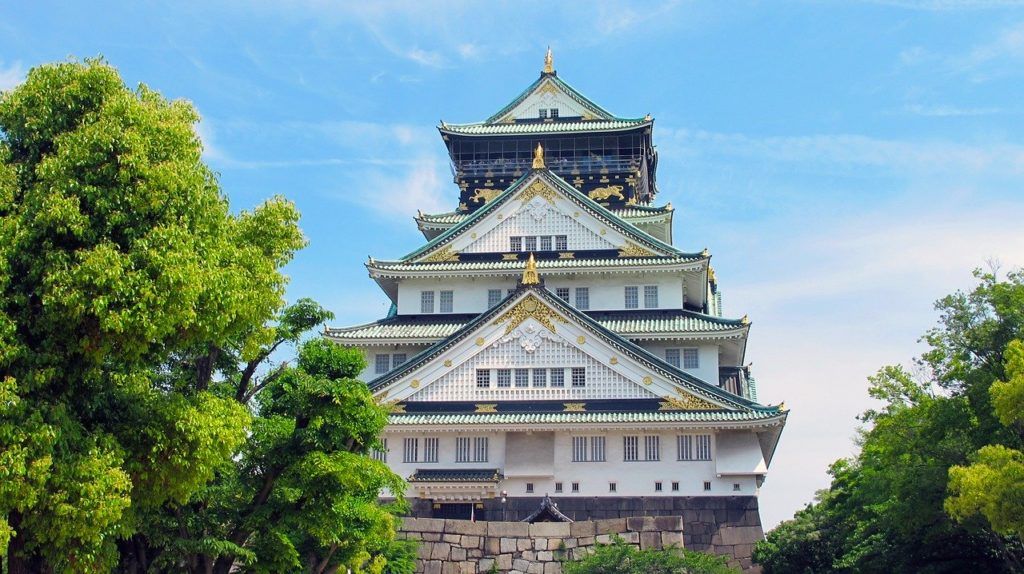
ALWAYS sort out your backpacker insurance before your trip. There’s plenty to choose from in that department, but a good place to start is Safety Wing .
They offer month-to-month payments, no lock-in contracts, and require absolutely no itineraries: that’s the exact kind of insurance long-term travellers and digital nomads need.

SafetyWing is cheap, easy, and admin-free: just sign up lickety-split so you can get back to it!
Click the button below to learn more about SafetyWing’s setup or read our insider review for the full tasty scoop.

And for transparency’s sake, please know that some of the links in our content are affiliate links . That means that if you book your accommodation, buy your gear, or sort your insurance through our link, we earn a small commission (at no extra cost to you). That said, we only link to the gear we trust and never recommend services we don’t believe are up to scratch. Again, thank you!
Share or save this post

Leave a Reply Cancel reply
Your email address will not be published. Required fields are marked *
Save my name, email, and website in this browser for the next time I comment.
Notify me of followup comments via e-mail.

Home » Travel » Destinations » Osaka-Kyoto-Nara Itinerary: 6 Amazing Days in Kansai Japan
Osaka-Kyoto-Nara Itinerary: 6 Amazing Days in Kansai Japan
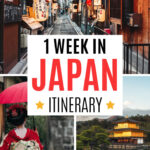
Vibrant streets, awe-inspiring temples, delicious street food… This Osaka-Kyoto-Nara itinerary has it all. If you only have one week in Japan and want to experience as much of the country’s culture and history as possible, head to the Kansai region!
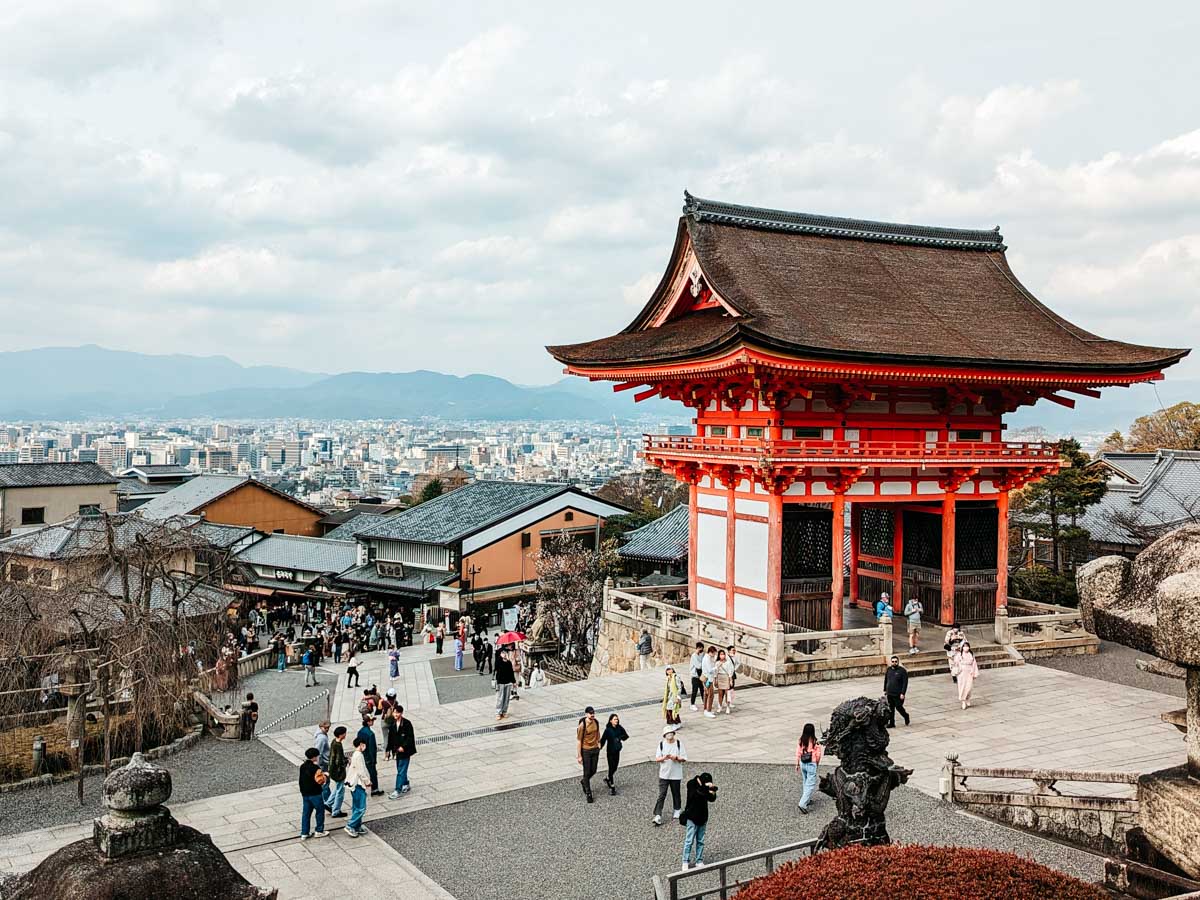
Japan’s blend of old world charm and modern invention is a sight to behold. It’s a country where 1,000-year-old buildings are squeezed between skyscrapers, and the best shops are hidden down a maze of lantern-lit corridors. Journeying from Osaka to Kyoto to Nara is the ideal way to enjoy the unique atmosphere of Japan.
This six day Japan itinerary starts in Osaka, the street food capital of Japan. You’ll chow down on takoyaki and curry as you explore the city’s billboard-lined canal streets, castles, and shrines.
From there, you’ll head to Kyoto, the former capital of Japan that’s utterly packed with ancient temples, narrow alleys, and world-class restaurants. Kyoto is my favorite city in the world, and I’ll be sharing my top highlights and hidden gems to visit.
Finally, you’ll round out your journey with a trip to Nara, another historic Japanese capital. This town is brimming with UNESCO World Heritage sites, but the biggest draw are the sacred deer that roam the streets.
There’s a lot to see and do in this Osaka-Kyoto-Nara itinerary, so be sure to save it for reference later!
This post contains affiliate links. As an Amazon Associate, I earn from qualifying purchases. For more information, click here .
Have more than a week in Japan? Check out my 10 day Japan itinerary !
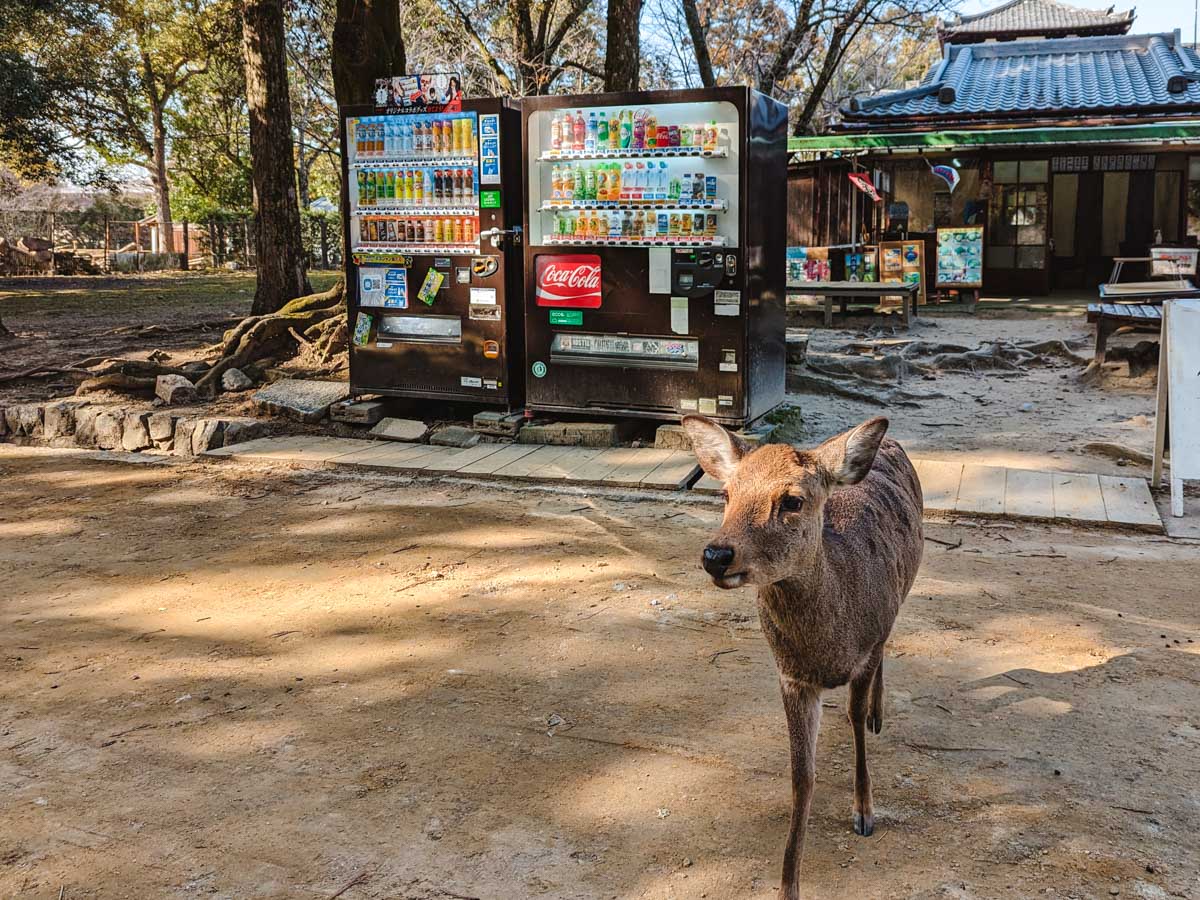
6 Days in Japan: Kansai Region
Day 1: osaka’s famous shrines and streets, day 2: osaka highlights and hidden gems, day 3: kyoto’s top sights, day 4: kyoto’s cultural hotspots, day 5: kyoto like a local, day 6: fushimi inari shrine and nara.
Don’t Forget Your Japan Rail Pass!
Buying a Japan Rail Pass will save you a ton of time and money on this Osaka Kyoto Nara itinerary.
I’ve purchased a JR pass for two out of three Japan trips, and here’s why:
– Free bullet trains and reservations : Quickly travel all over Japan to maximize vacation time, including to and from the airport.
– Easy to use: Just show your pass to the gate attendant and walk to your train!
– Affordable day trips: Visit popular places like Uji, Kanazawa, and more without spending a fortune on tickets.
Order your Japan Rail Pass now for speedy delivery!
Osaka Kyoto Nara Itinerary
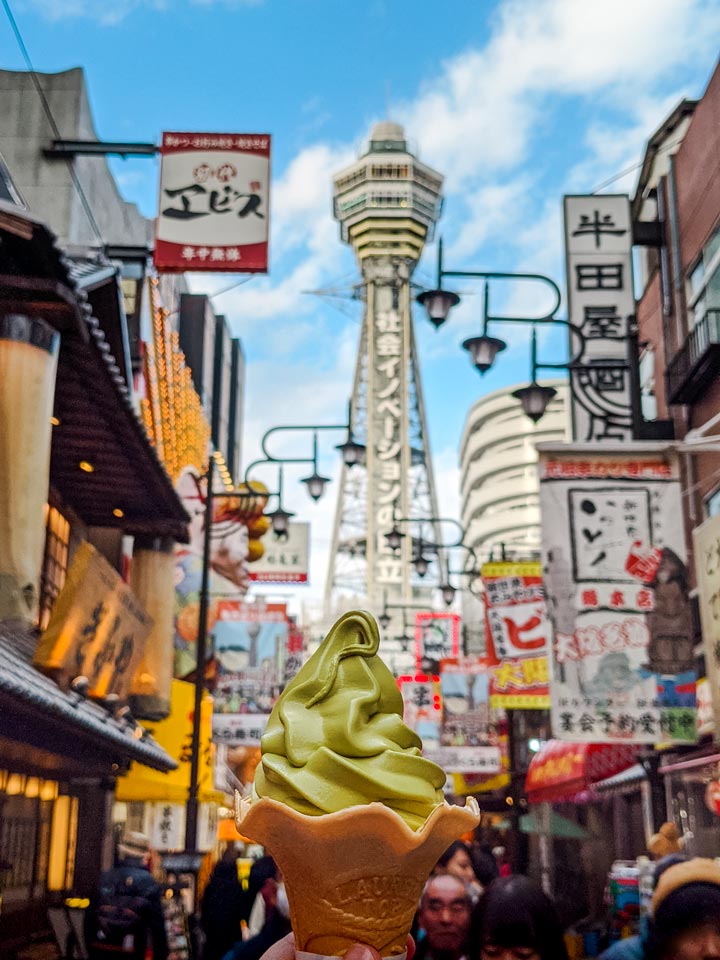
Sumiyoshi Taisha
Kick off your Osaka itinerary at Sumiyoshi Taisha, a 1,600-year-old Shinto shrine. This stunning and sprawling complex is best known for its arched red footbridge that reflects beautifully in the surrounding pond. If you arrive in the early morning (around 8-9am), you’ll have the peaceful place mostly to yourself.
When you’ve finished exploring the shrine’s nooks and crannies, exit on the eastern side and cross the street to reach Sumiyoshitorii-mae tram stop (it’s the raised platform in the median). Catch the Hankaidenki-Hankai tram to Dobutsuen-mae to get back to the city center.
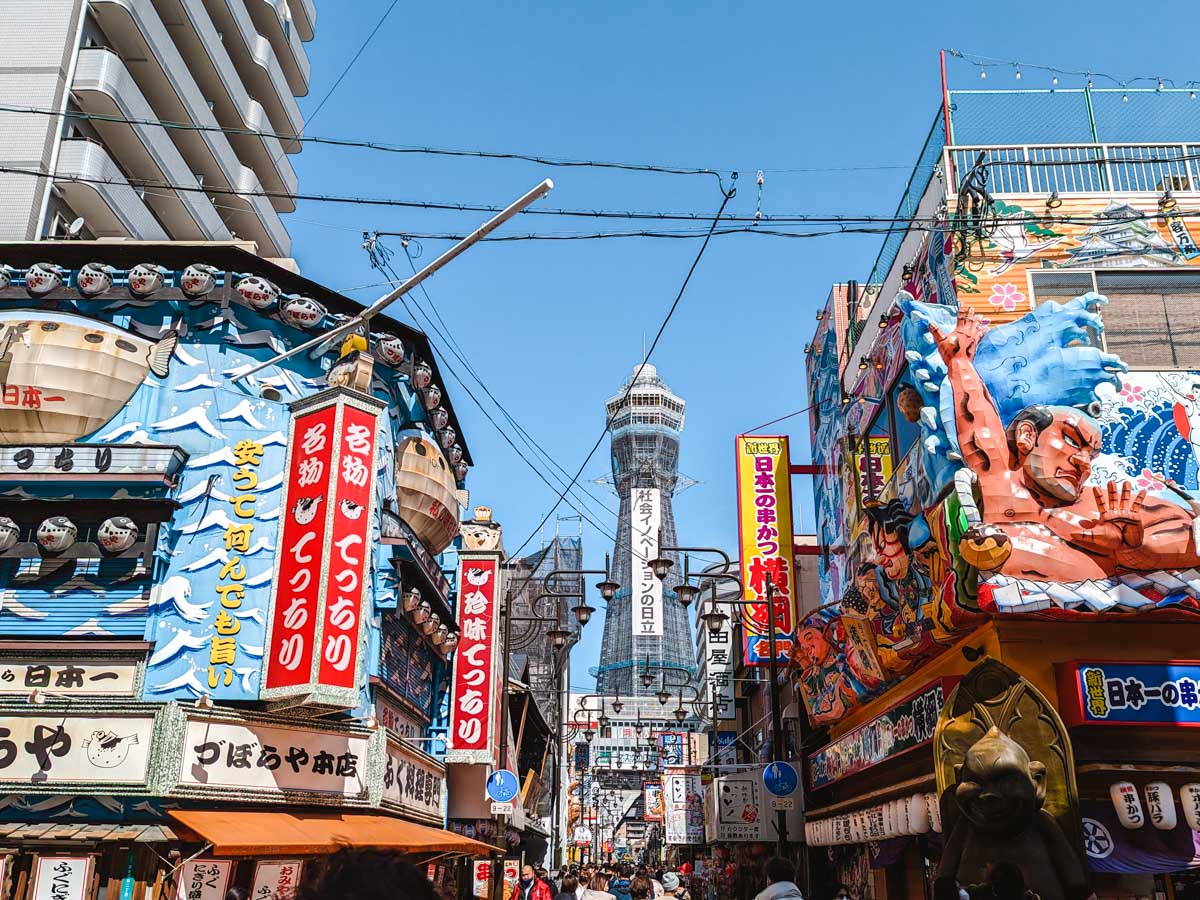
If you scrolled through Instagram when planning your trip to Japan , you probably saw a few shots of Shinsekai. This iconic pedestrian street leads straight to Tsutenkaku tower, one of Osaka’s famous landmarks.
The whole place has the feel of a carnival with music, game centers, and abundant street food vendors. Its retro covered shopping arcade feels as though it hasn’t changed since the late 80s, which is Osaka’s vibe in general.
There are dozens of shops and restaurants in the area, including a giant Don Quijote perfect for buying cute and cheap souvenirs.
Pro tip: if you want to re-create the matcha ice cream photo I posted earlier, head to Kokomoyotteya near the base of the Tsukenkaku tower. They sell a variety of soft serve ice creams along with cute souvenirs.
Tennoji Park and Keitakuen Garden
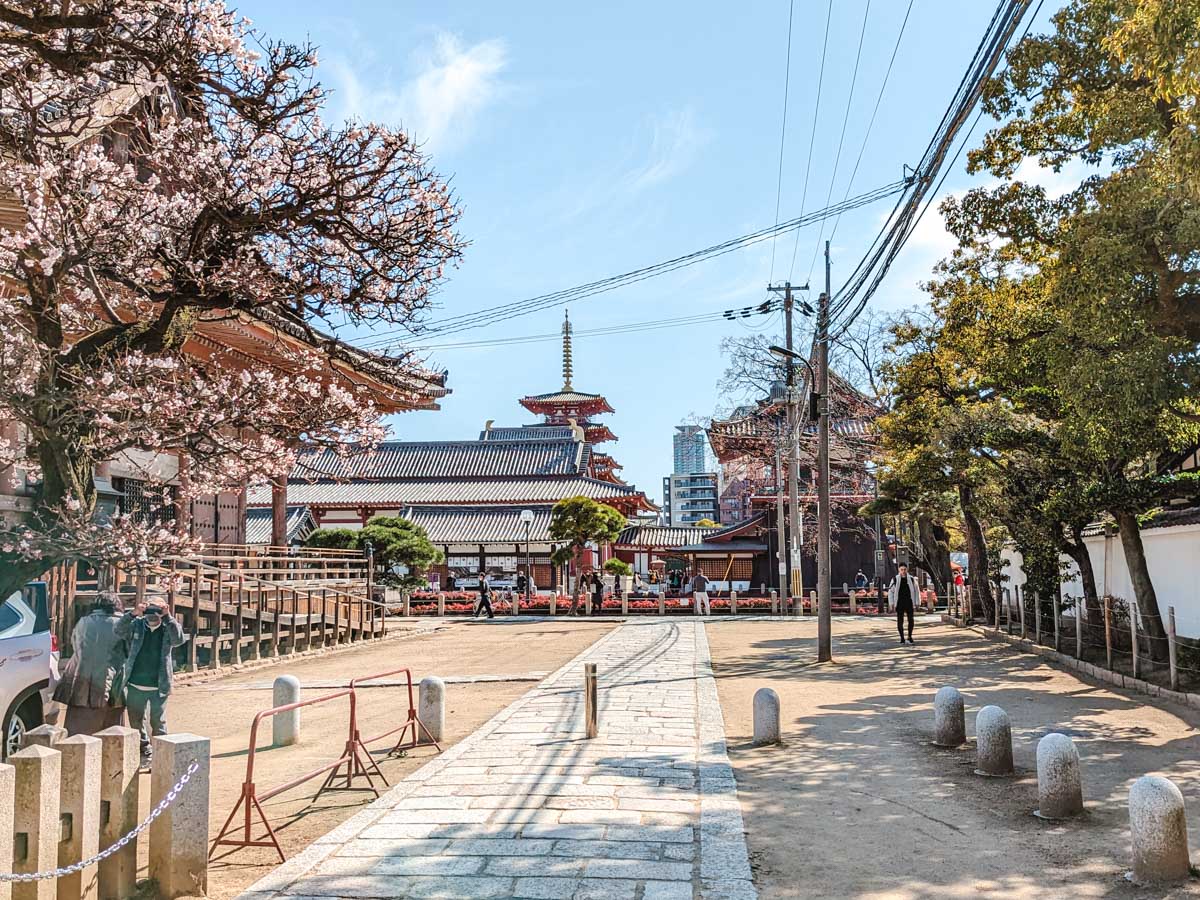
Just a few blocks east of Shinsekai lies Tennoji Park, a massive green space nestled in the city center. There are several points of interest inside the park, from the modern-looking Osaka City Museum of Fine Arts to the Kawazokoike red footbridge (keep your eyes peeled for herons and cranes!).
I highly recommend paying the small admission fee (150 yen in 2021) to visit Keitakuen Garden. It’s a serene and traditional Japanese garden in the heart of Osaka. As you walk around the reflecting pond and see glass skyscrapers rising in the distance, you’ll see how Japan beautifully combines urban and natural landscapes.
There are several paths that loop and cross Keitakuen Garden, so keep an eye on the small wooden signs as you explore. You’ll eventually need to exit the same way you entered before making your way to some nearby temples.
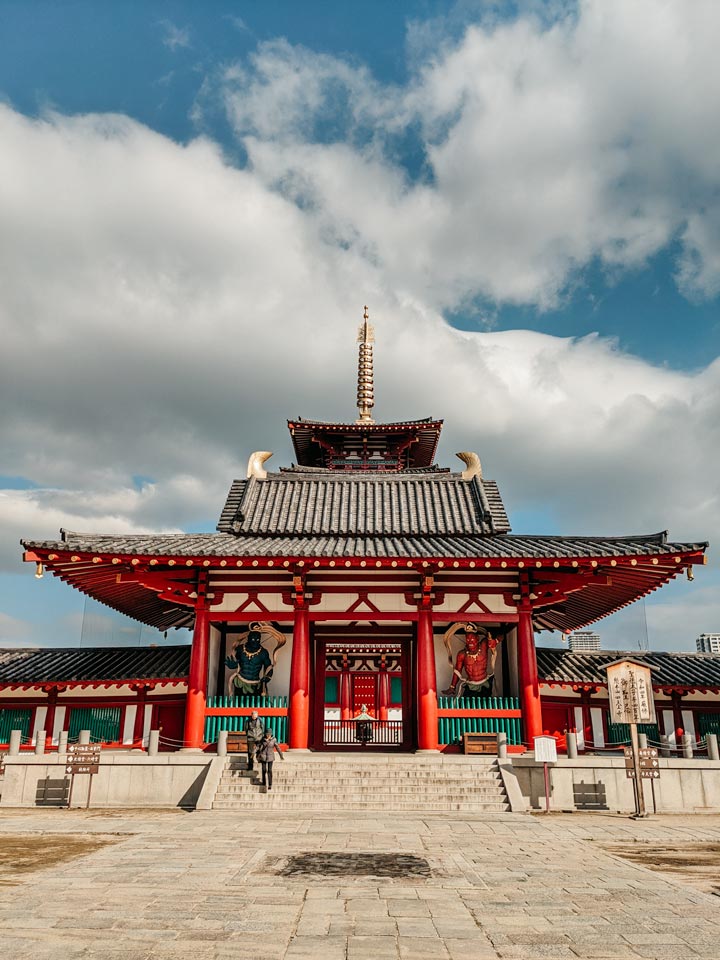
Isshinji & Shittenoji
Nestled along the northern border of Tennoji Park, Isshinji is a Buddhist temple best known for its Buddha statues made of cremated bones. The complex is small and uniquely laid out so that smoke and incense swirls heavily through the air. Walking through here was one of the more memorable parts of my Osaka-Kyoto-Nara itinerary.
About 10 minutes east of Isshinji lies Shittenoji, another impressive Buddhist temple. Constructed in 593 A.D., Shittenoji has a remarkable 5-story pagoda and several buildings painted in striking red and white. If you’re lucky, you might spot a few turtles peeking out of the surrounding moat.
Shinsaibashi
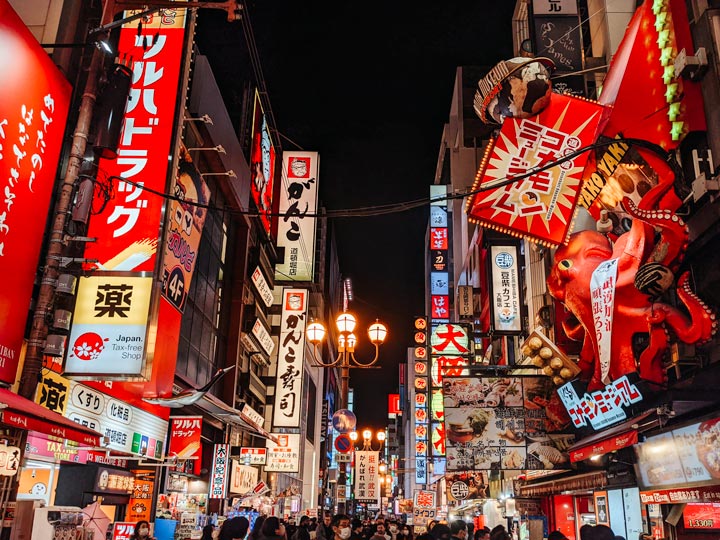
The bustling, billboard-lined streets of Shinsaibashi are one of the most famous things in Osaka. Try not to stumble as you look up at the giant octopus, fish, and gyoza models hanging off the buildings.
Shinsaibashi is the go-to shopping district of Osaka. You’ll find all sorts of goods for sale in the small and large shops here, including electronics and Japanese ingredients. There’s also a vibrant covered market–Shinsaibashi-Suji Shopping Street–with a mix of high-end brands and budget finds.
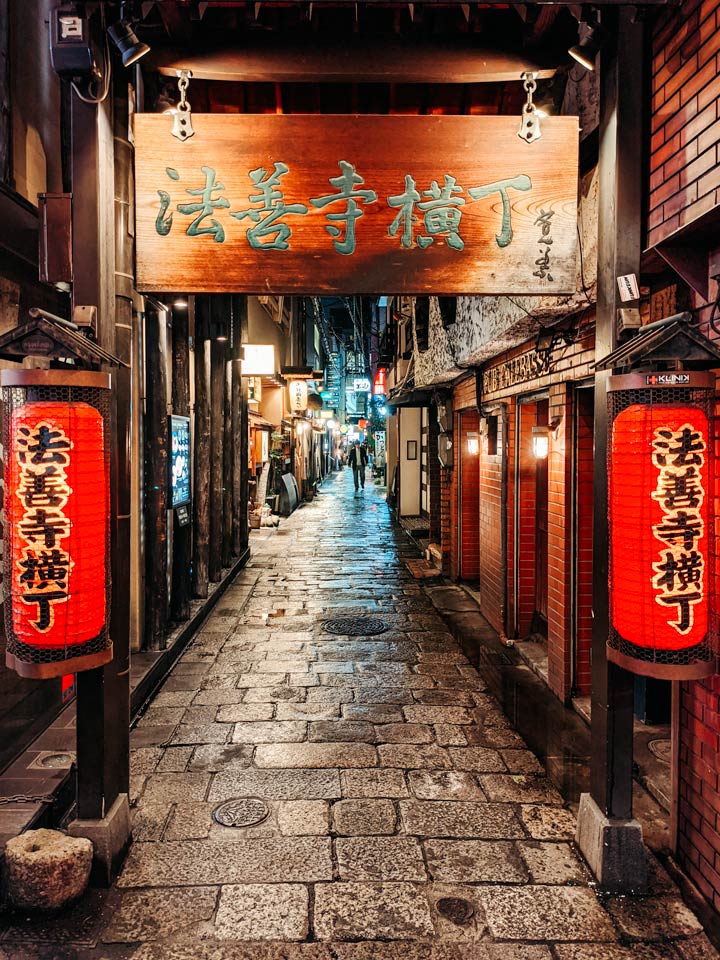
Easily the most popular place to visit in Osaka, Dotonbori district is like something out of a cyberpunk novel. Towering electronic billboards line either side of the canal, with bridges criss-crossing the water. The place is impressive any time of day, but Dotonbori is best enjoyed after sunset.
Be sure to check out Hozenji Yokocho while you’re here. This lantern-lit alley is one of the most Instagrammable spots in Osaka that’s somehow remained off the tourist radar.
Osaka is the street food capital of Japan, and there’s no shortage of it in Dotonbori. While local ordinances have forced many stalls to close, you’ll still find plenty of counter-style places selling takoyaki, matcha ice cream, yakisoba, and other must-eat Japanese food .
However, if you’re after a sit down meal, head to Fukutaro. This restaurant specializes in okonomiyaki, a savory cabbage pancake filled with your choice of meats and veggies. The line can get pretty long at dinnertime, so I suggest arriving when they open at 5pm to get your name on the list (I think they can read English, but I wrote mine in Japanese characters just to be safe).
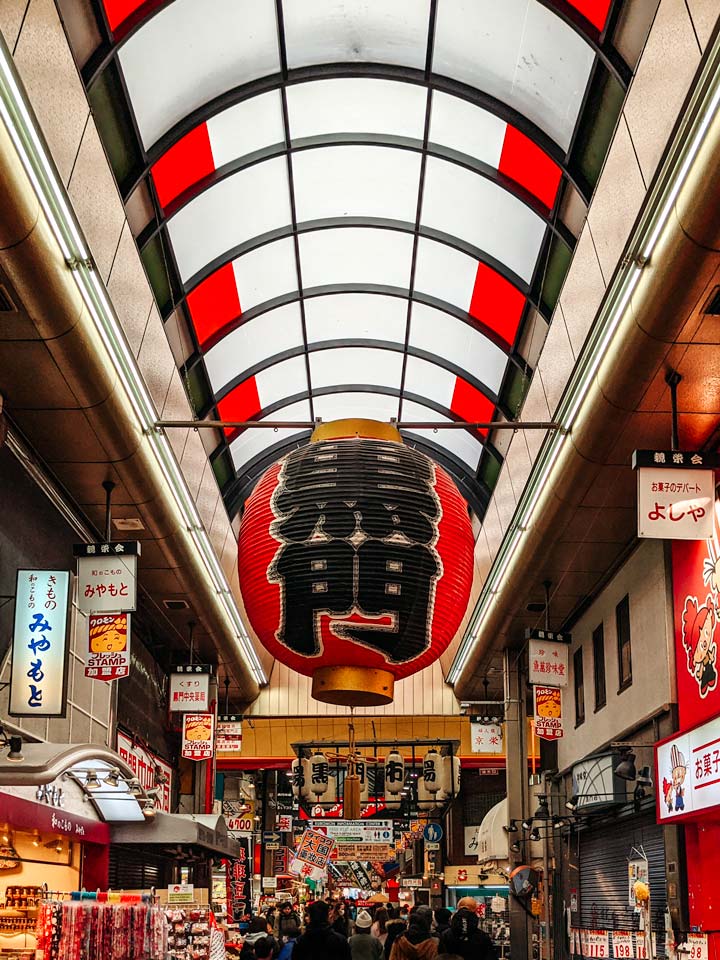
Domyoji Tenmangu OR Daisen Park
Day two of this Osaka-Kyoto-Nara itinerary is all about mixing popular attractions and lesser known spots. You’ll start off with one of the latter. However, your first destination of the day depends on the season.
If you’re visiting Japan in spring , head to Domyoji Tenmangu. Like the hundreds of other Tenmangu shrines in Japan, Domyoji is dedicated to Tenjin, the patron deity of academics. During exam season, Japanese students and their parents journey to Tenmangu shrines to pray for wisdom and passing scores.
Tenmangu shrines are also famous for their plum blossom trees, and Domyoji is one of the best places to view plum blossoms in Osaka. Plum blossom season always comes at the end of winter (before cherry blossom season), usually around mid to late February. Being surrounded by hundreds of red and white blooming plum trees is truly magical.
If you’re visiting Japan in autumn , travel to Daisen Park. This lovely green space has a gorgeous Japanese garden, traditional tea house, and numerous Japanese maples and trees perfect for leaf-peeping. You’ll also find various historical landmarks here, including the mausoleum of Emperor Nintoku.
After exploring your chosen destination, head back north to JR Namba Station for a mouthwatering excursion.
Kuromon Market Tour
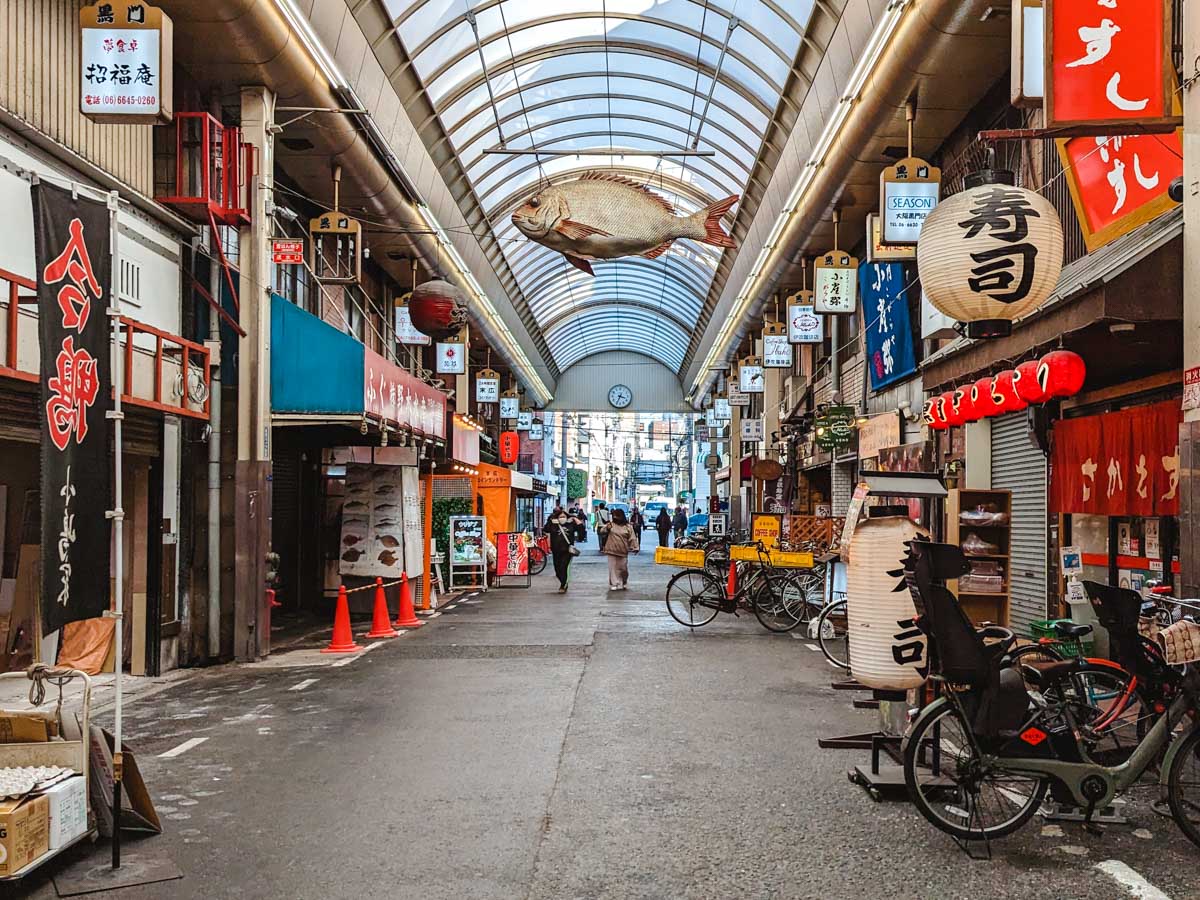
Kuromon Market is a must-see when visiting Osaka. The covered market is 100 years old, but only started selling street food around 2016 due to an influx of Chinese tourists. Prior to 2016, it was mainly frequented by locals shopping for groceries.
Kuromon can be pretty intimidating, especially if you don’t speak Japanese, so I strongly recommend booking a guided food tour with a local . I had tons of fun sampling and learning about Japanese cuisine with Hiro, our local guide.
Book your Kuromon Market food tour here!
If you’re visiting Osaka with kids , the food tour is a great way to introduce them to Japanese foods in small bites. And if they’re not into the cuisine, they’re sure to love the sampuru shops filled with realistic food displays.
Depending on your appetite, you may still be hungry after the food tour. Fortunately, Kuromon Market is one of the best places to eat cheaply in Osaka . Just be sure to bring cash, as some stalls don’t accept card payments.
Den Den Town
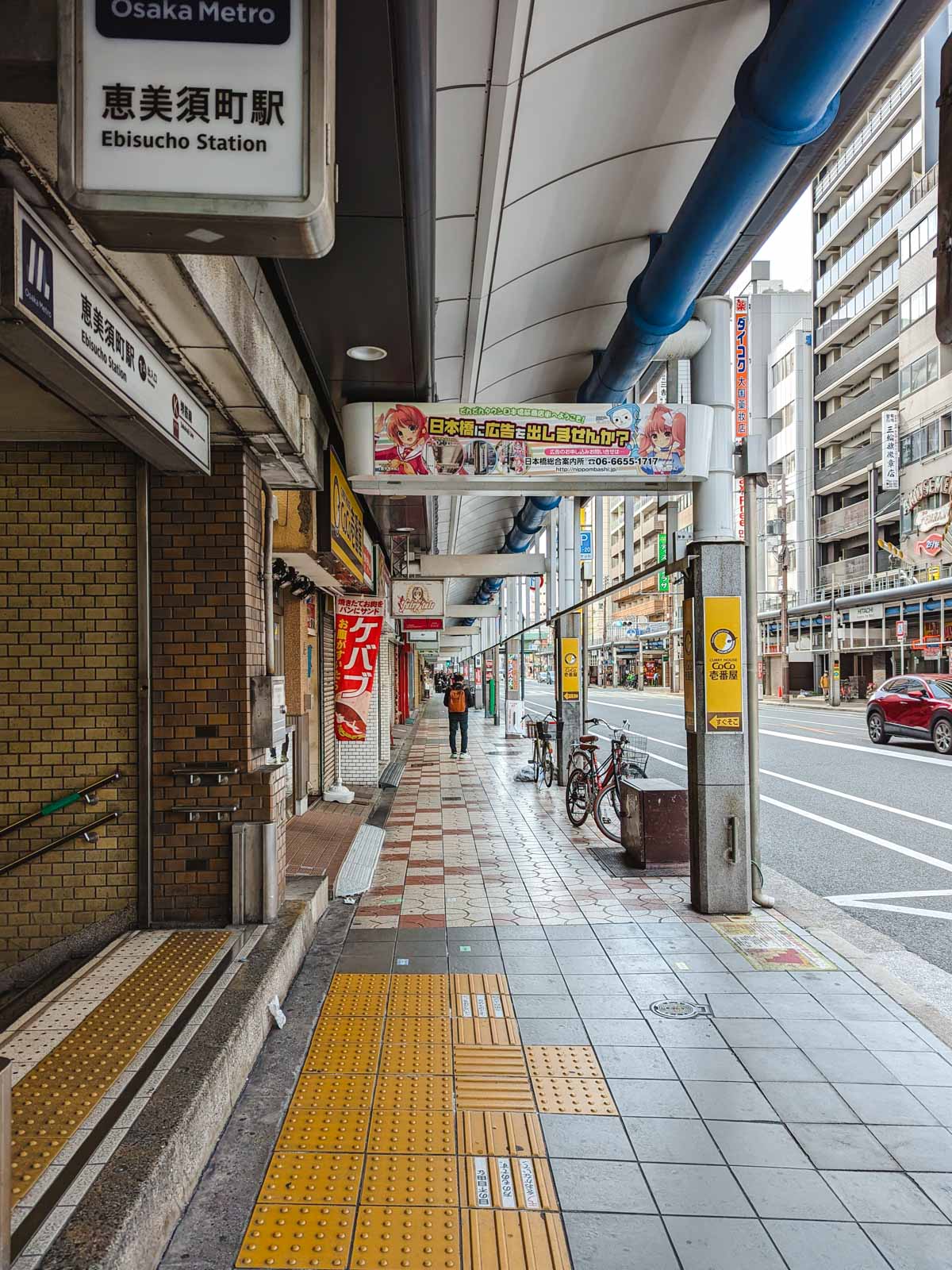
Known as the Akihabara of Osaka, Den Den Town is filled with arcades, figure sellers, manga stores, and electronic shops. While there aren’t as many colorful billboards lining the streets like its Tokyo counterpart, there’s still plenty to see and do here.
Super Potato has a location here, and Super Kids Land is jam-packed with figures, model kits, trading cards, and other nerd culture favorites. For gaming, check out Namco’s classic arcade or The Silver Ball Planet if you like pinball.
Osaka Castle
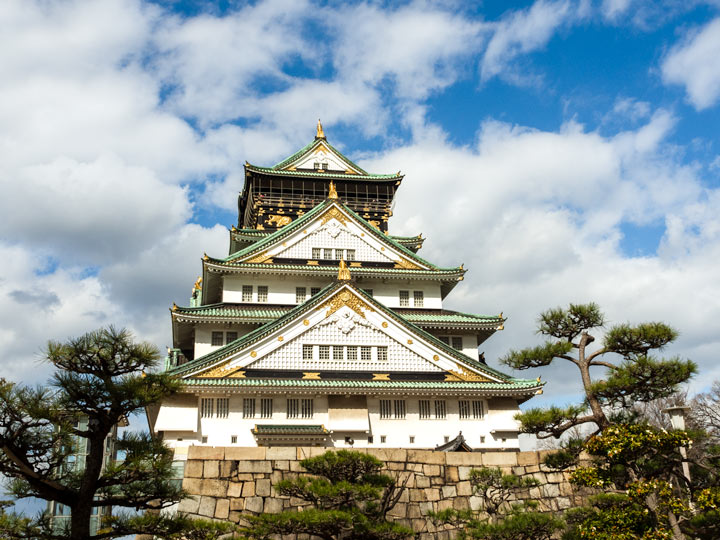
And now for the moment you’ve been waiting for! Osaka Castle is one of Japan’s most famous places for a reason–photos simply can’t do this place justice.
The castle’s five-storied layers of white, gold, and teal are absolutely breathtaking when viewed up close, especially through a veil of plum and cherry blossoms. Take your time to stroll around the exterior and interior walking paths, and don’t miss the plum blossom grove if you’re visiting in late-February/early March.
You can also pay to visit the castle tower for stellar views over the city below ( check the website to confirm opening times).
Nakazakicho
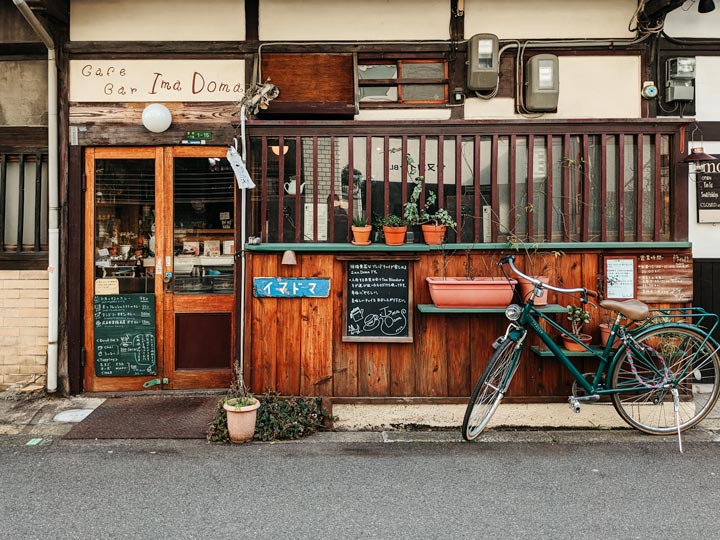
Nakazakicho is akin to the “hipster” neighborhoods of western countries. The trendy cafes and cute shopfronts are popular with Japanese visitors, but remains off the radar for most foreign tourists.
It’s a great place to grab a coffee and take a leisurely stroll. You’ll need to refuel if you want to make the most of this Osaka Kyoto Nara itinerary! I highly recommend the colorful Taiyō No Tou, which looks like something out of a Studio Ghibli film.
And if you’re craving sweets, the strawberry and cream crepes from Uncouple Anglecam’s street stall are a must try (it’s not on Google Maps, so search for ImaDoma which is across the street).
Umeda Sky Building
What better way to end your Osaka adventure than with a birds-eye view of the city? The Umeda Sky Building’s 40th floor observation deck provides unparalleled panoramic views over Osaka. You’ll need to make an online reservation , and I suggest choosing a sunset time slot for the ultimate experience.
Other things to do in Osaka
Here are a few alternate ideas to customize your Osaka-Kyoto-Nara itinerary:
- Learn about the history of instant ramen and make your own signature flavor at the Cup Noodles Museum
- Discover Osaka’s nightlife and street food with a local guide
- Glide along the moats of Osaka Castle in a traditional Gozabune boat
- Live out your childhood fantasies at Universal Studios Japan (note: you’ll need an extra day in Japan for this)
Where to Stay in Osaka
For this Osaka itinerary, I recommend staying near Namba Station . You’ll be within walking distance to a variety of public transit routes and restaurants. Plus, you’ll have an easy connection back to the shinkansen station or airport.
Hotel WBF Namba Motomachi is a great option for budget travelers. The rooms are simple and small, but the location is ideal for exploring Osaka in a short time.
Save me for later!
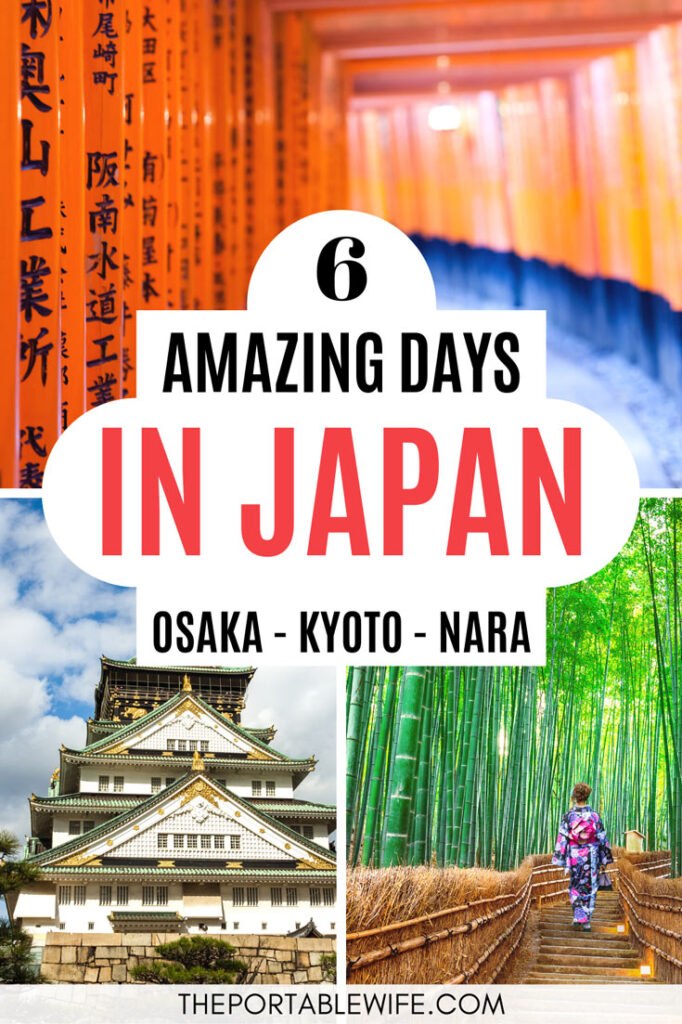
When you think of Kyoto, what comes to mind? For many people, it’s the swaying green stalks of Arashiyama.
Between the district’s mystical bamboo forest, renowned temples, and monkey mountain, you could easily spend an entire day here and not see it all! Due to its far west location and abundance of sights, I usually categorize it as a day trip from Kyoto .
However, there’s a lot on the agenda today, so I’ll only cover the primary highlights in this Osaka-Kyoto-Nara itinerary.
Start bright and early with a stroll through Arashiyama Bamboo Grove . The experience of walking beneath these towering, swaying green stalks is truly otherworldly. And if you arrive before 9am, you’ll avoid the crushing crowds that flow through here like a slow-moving river.
Situated along the forest’s border, Tenryuji Temple is an impressive complex of ancient buildings with a remarkable Japanese garden. It’s a gorgeous place year-round, but it’s particularly impressive in autumn. If you’re visiting on the weekend, you can pay to enter the Hatto hall and see the famous Cloud Dragon painting.
From the temple, head south towards the Katsura River. As you cross Togetsu-kyō Bridge , take a pause to soak in the spectacular views of traditional boats drifting along the waterbank.
At this point, you have two choices depending on time: head back towards central Kyoto or continue on to Arashiyama Monkey Park Iwatayama. This mountainside park is filled with Japanese macacques, and the overlook point at the top has incredible panoramic views over Kyoto. You’ll need about 30 minutes to reach the overlook, so plan accordingly.
When you’re ready to leave Arashiyama, head to Saga-Arashiyama Station and take the JR San-in Line to Nijo Station ( free for JR pass holders ).
Getting Around Kyoto
Unlike other cities, Kyoto’s main mode of public transit is bus. While there are metro and train lines connecting key sites, you’ll make use of local and sightseeing buses (and walking) for most of this itinerary.
The Raku sightseeing buses travel clockwise and counterclockwise to all the major tourist spots. It’s a flat rate fare (230 yen in 2021) no matter where you get on or off, and they accept change and ICOCA cards.
There’s also a JR bus route that stops at popular sites like Nijo Castle and Kinkakuji. JR pass holders can ride for free.
Although you can purchase a two day Kyoto subway + bus pass, you won’t save much money (assuming you follow this itinerary).
Nijo Castle
This former home of the Ieyasu shogunate is one of Kyoto’s many UNESCO World Heritage Site. Nijo Castle’s whitewashed walls and grey-black tiles are unmistakably Japanese. Inside the walls, you can tour the elegant Ninomaru Palace and grounds and marvel at the intricately painted gates.
From here, take either the JR Bus or the Raku sightseeing bus to Kinkakuji.
Kinkakuji and Ginkakuji
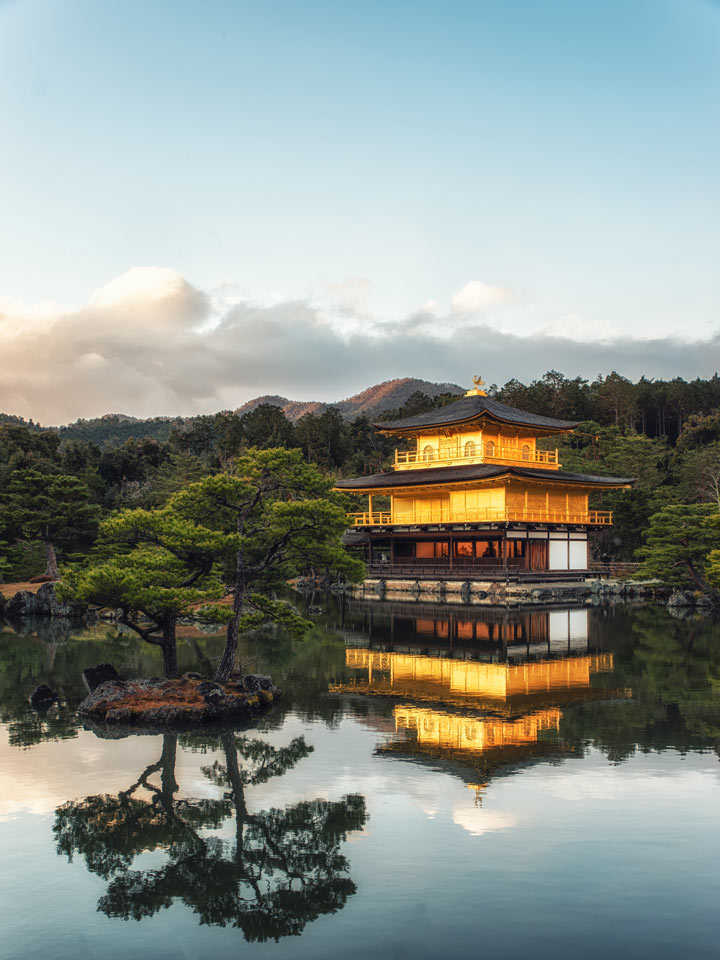
Known as the Golden Pavilion, Kinkakuji is a glittering Zen temple covered in gold leaf. While the original temple was built in the 1300s, the building you see today is a 1955 reconstruction. The view of the central pavilion from across the reflecting pool is one of Japan’s greatest sights.
Follow the strolling garden path past the tea house and back outside, where you can hop on the Raku bus towards Ginkakuji . Though the temple is called the Silver Pavilion, you won’t find a hint of silver on its facade!
Ginkakuji’s official name is Higashiyama Jisho-ji,and it was supposed to be a shiny silver version of Kinkakuji. Unfortunately, the project to cover the facade in silver leaf never happened. To this day, the temple remains a humble–albeit pretty–wooden structure.
I think Ginkakuji’s fantastic gardens, including one made of raked sand, more than make up for the disappointment.
Philosopher’s Path (Tetsugaku No Michi)
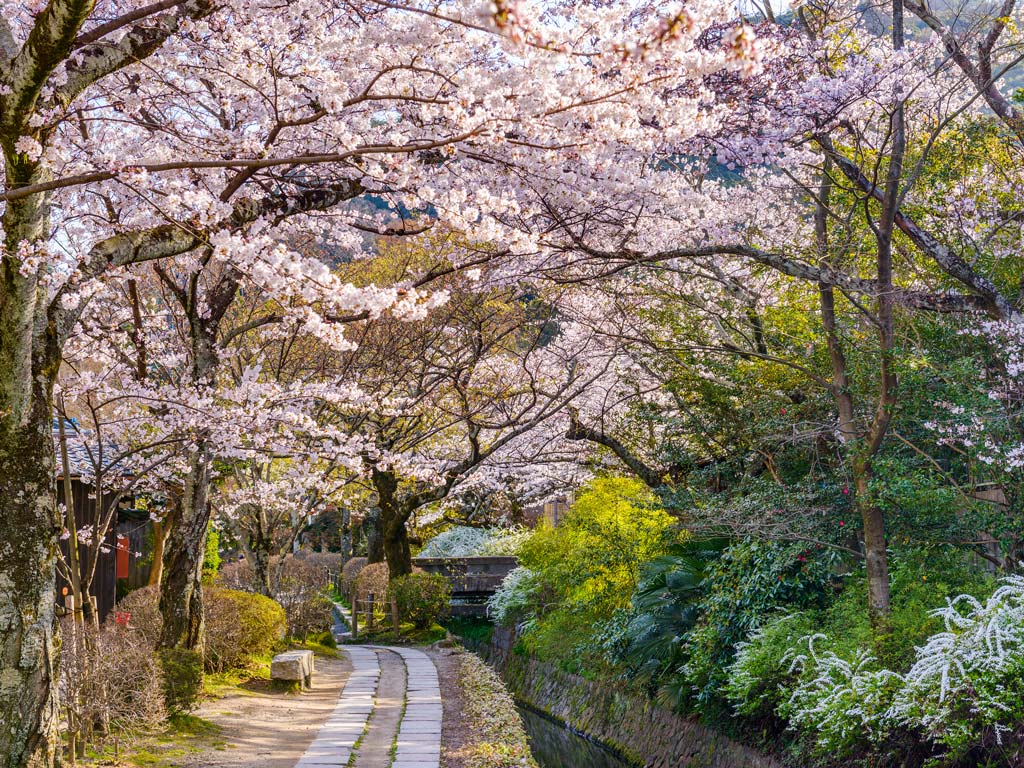
The northern entrance to the Philosopher’s Path is conveniently located up the road from Ginkakuji. This scenic footpath gets its name from Nishida Kitaro, the 20th century Japanese philosopher said to have walked the route every day in meditation.
You’ll find charming cafes, independent shops, and hundreds of cherry blossom trees lining the canal path. Keep an eye out for Suzuki Shofudo , an adorable papercraft shop with a frog mascot.
It takes about 20 minutes to walk the entire 2km path, though you’ll surely need more time as you stop to shop and take photos. And when you reach the southern exit, you’ll be just around the corner from one of my favorite temples in Kyoto.
Eikan-do Zenrin-ji
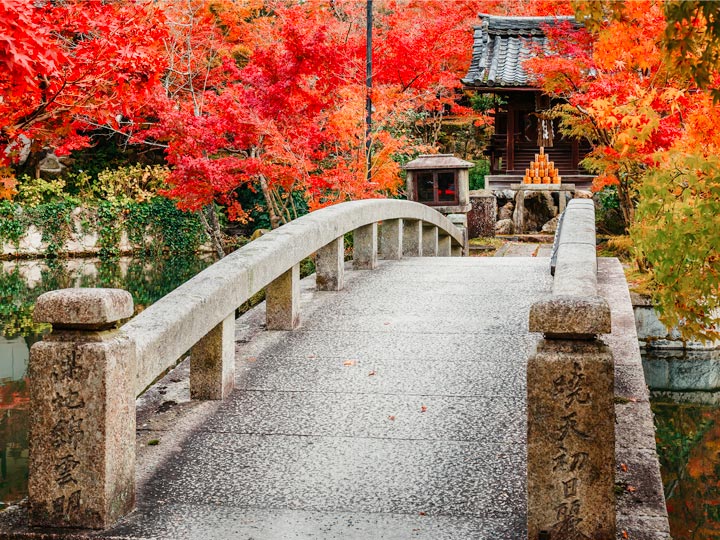
It’s hard to compete with the natural beauty of Eikan-do Zenrin-ji. People travel from all over the world to see the incredible autumn colors surrounding the vast Hojo Pond and stone bridge. However, the temple deserves to be explored no matter the season.
If you have time, climb the steps of the pagoda for stellar views of the complex before walking south to the next temple.
Nestled near the base of Kyoto’s eastern mountains, Nanzen-ji is one of Japan’s most important Buddhist temples. Thanks to its hillside placement, the towering temple gate offers lovely views, and the sprawling grounds are a peaceful escape from the city. I loved feeling the cool mountain breeze at my back as I looked out over Kyoto.
After exiting the temple grounds, walk west up Niomondori to the Okazaki Koen bus stop. From here, catch the 100 Rakuten bus to Kiyomizu-dera.
Kiyomizu-dera
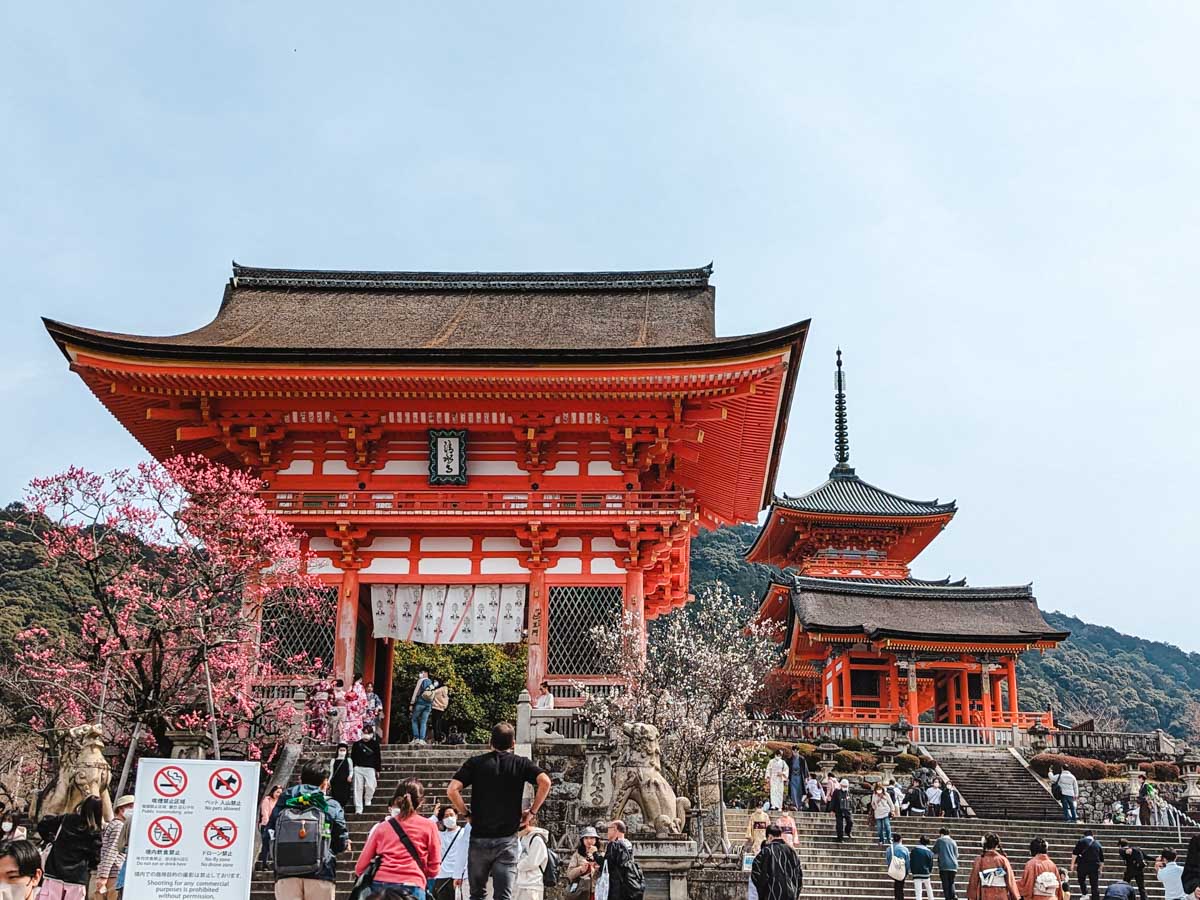
Easily the most visited temple in Kyoto, Kiyomizu-dera is a vast temple complex of buildings and gardens set on a hill among a forest of trees and bamboo. The multi-story wooden main hall is mind-bogglingly enormous, and its observation deck boasts the best views over Kyoto.
Kiyomizu-dera is particularly striking in the fall, when the surrounding forest explodes with red and gold leaves. This place is a must-see for any Osaka Kyoto Nara itinerary!
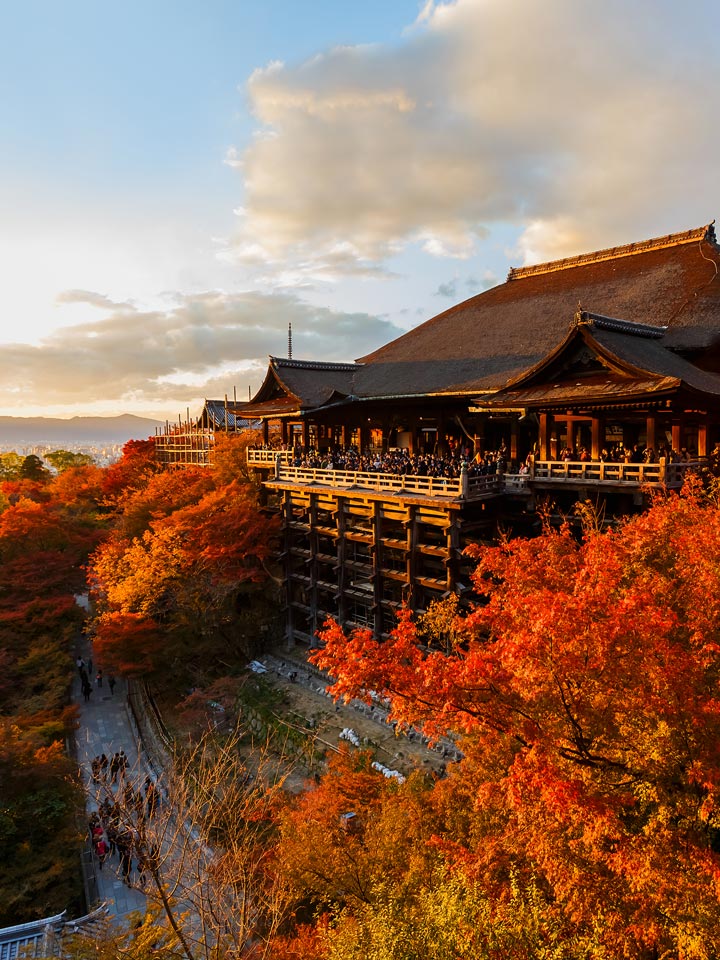
By now it should be evening, which makes it the perfect time for a stroll through Gion. Known as Kyoto’s geisha district, this area is full of traditional shops, maze-like alleys, and elegant tea houses. If you’re lucky, you might catch a glimpse of a geisha or maiko (apprentice) on their way to an appointment (but please appreciate them from a distance).
Enjoying Gion at Night
This historic distict holds a ton of secrets and charms, and the best way to discover them (and spot a few geisha along the way!) is on a walking tour with a local.
Book your evening walking tour of Gion here!
Just down the hill from Kiyomizu-dera lie Ninenzaka and Sanenzaka . These picturesque neighborhood streets are lined with lanterns and offer amazing views of Kiyomizu’s pagoda. Note that people still live in this area, so please respect the “no photography” signs where posted.
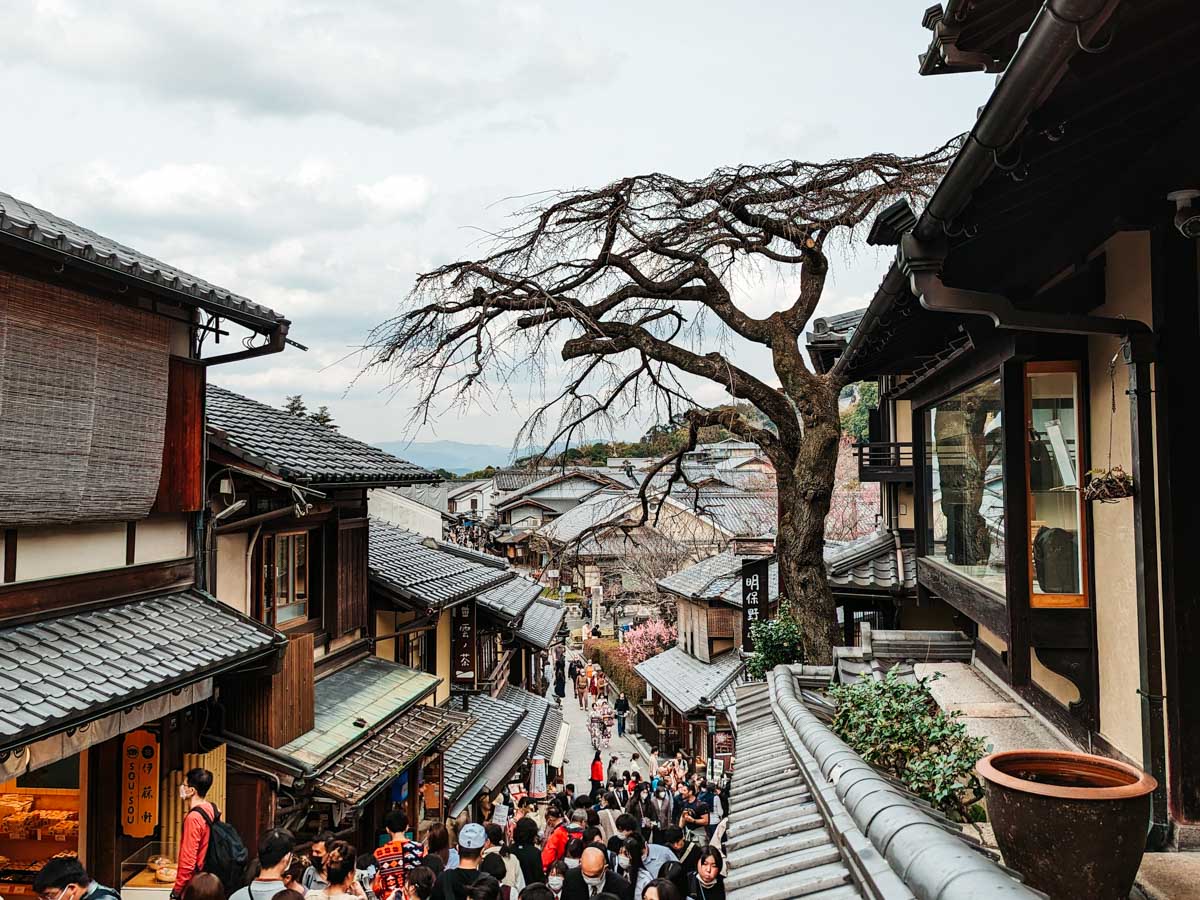
Meander north towards Kodaiji, where you can explore the illuminated temple grounds and mini bamboo forest. They also run a three minute light and sound show after dark in the sand garden area.
Work your way northwest until you reach Yasaka Shrine , one of the most culturally significant shrines in Japan. Every July, the Gion Matsuri festival begins here, with an ornate deity float ( mikoshi ) parading through the gate and around the city.
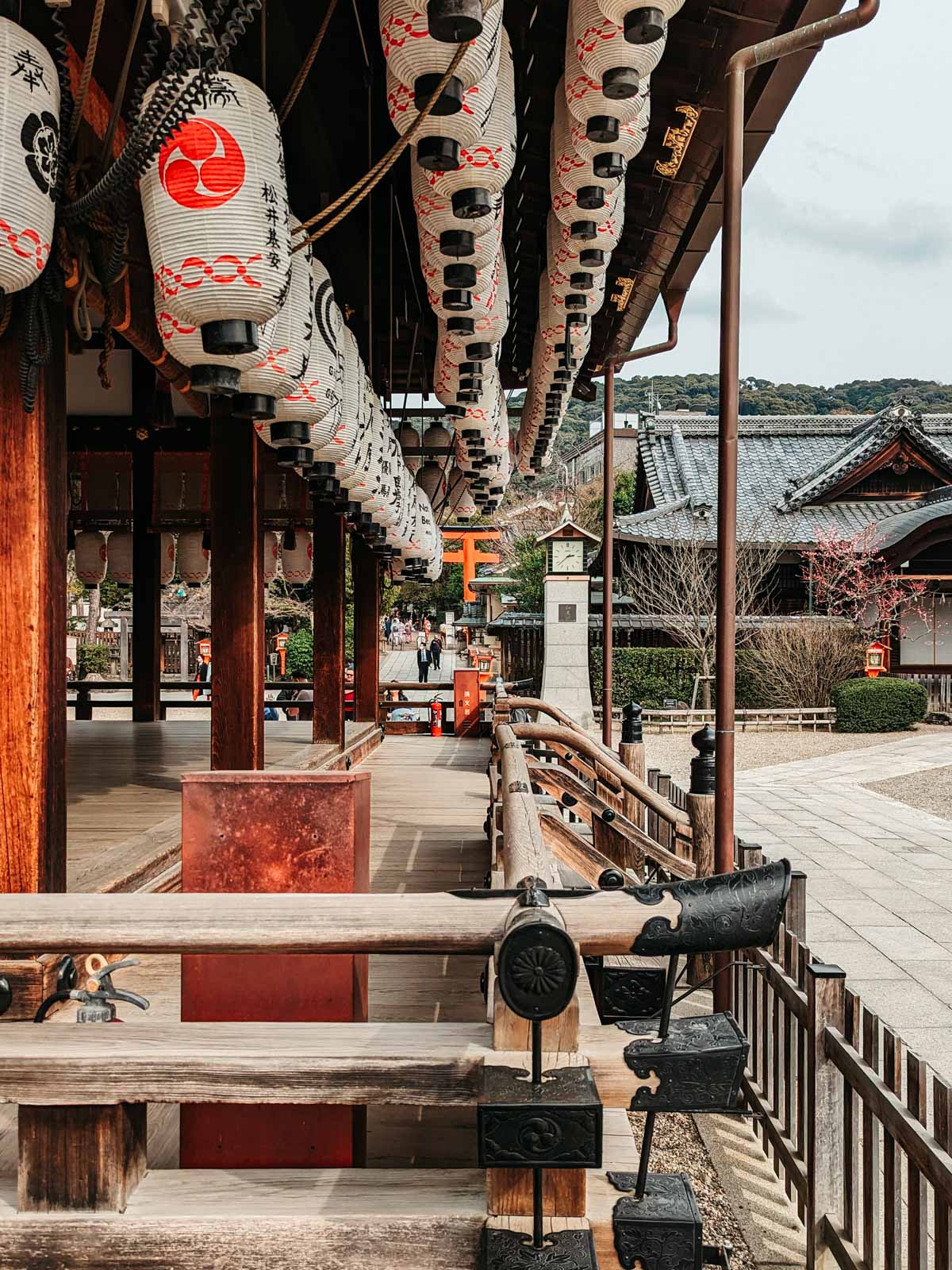
Finally, take a stroll up Hanamikoji. Gion’s main street is home to hundreds of shops and street food counters operating under the iconic sakura lanterns. The numerous souvenir shops are perfect for picking up traditional wagashi –Japanese sweets–to bring back home (Kagizen Yoshifusa is my favorite wagashi shop).
Many shops close at night, but don’t worry: you’ll return to Gion again tomorrow!
Gion Revisited
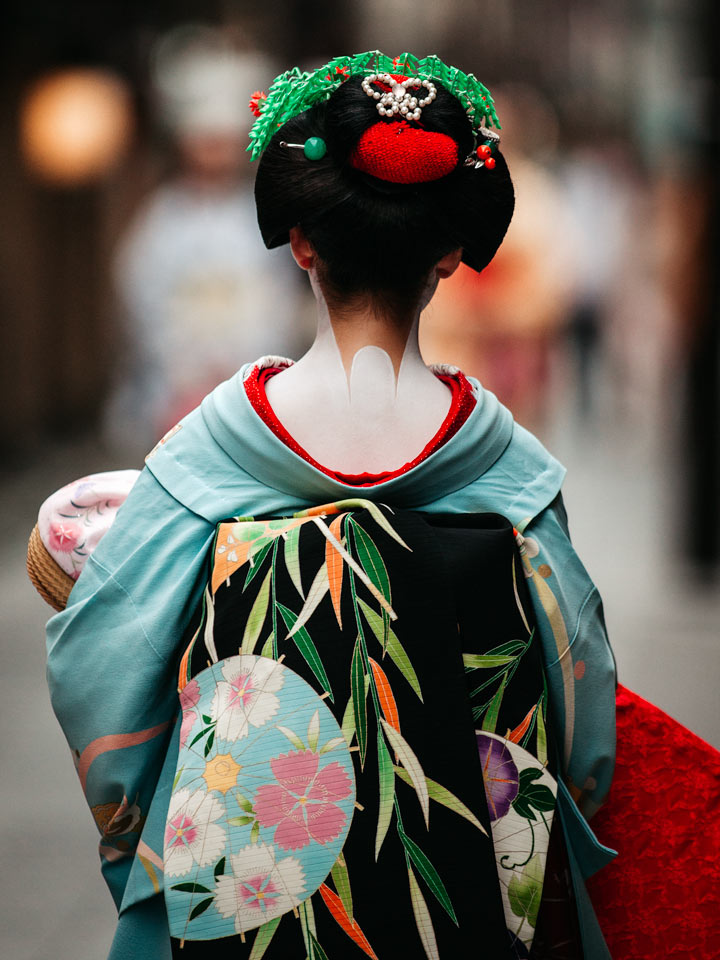
You’ll pick up the second day in Kyoto where you left off: Gion.
There’s still a lot to see and do here, but these highlights are not to be missed:
- Gion Tatsumi Bridge spans a small canal and leads down one of the district’s prettiest alleyways.
- Behind Yasaka Shrine lies Maruyama Park , a lush green space that’s home to multiple temples and Japanese gardens. It’s a must-see during cherry blossom season.
- Adjacent to Maruyama Park, you’ll find Chion-in and Shoren-in . The temples’ wooden facades blend in beautifully with the natural surroundings.
- Enjoy a (mostly) crowd-free stroll down Ishibe-koji Alley.
Manga Museum OR Daimaru
It’s time for another “choose your own adventure” moment in this Osaka-Kyoto-Nara itinerary.
Anyone who loves libraries or has even a passing interest in manga (Japanese comics) should visit the International Manga Museum . There are towering shelves packed with every manga series imaginable, as well as exhibits and art galleries in English/Japanese that showcase both famous and up-and-coming illustrators.
If manga isn’t your thing, how about some fancy Japanese-style shopping?
Daimaru Is Kyoto’s 2nd largest department store, with 10 floors packed with clothes, accessories, electronics, and more. Highlights include the giant handkerchief selection on 1F, and the elegant kimonos and super cute stationary on 6F.
Don’t leave without visiting the massive basement food hall, where hundreds of stalls sell everything from bento to bread to traditional sweets.
Kyoto Imperial Palace
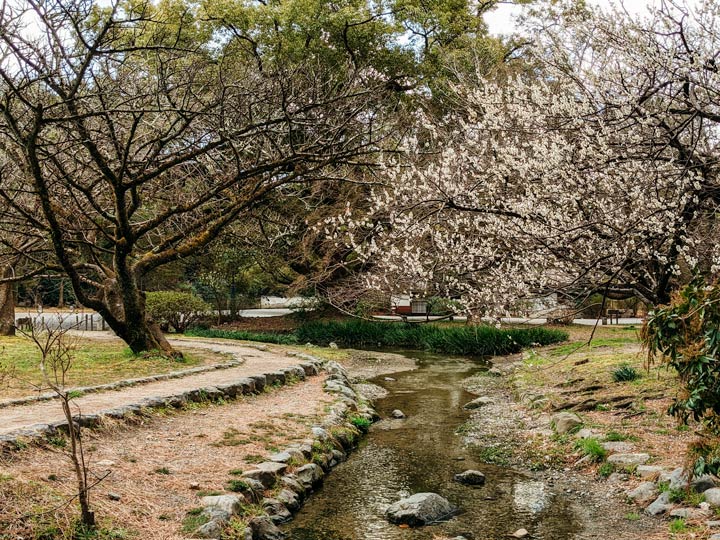
Kyoto Imperial Palace was the official home of the Japanese Imperial family for 500 years. It’s a confusingly large complex that’s mostly empty space (you can’t enter most of the buildings). However, the architecture is impressive and the gardens (especially the plum blossom grove) are spectacular.
In the past, a reservation was required to enter the complex, but today it’s freely accessible. Check the website for more details on English guided tours and changes to opening hours.
Nishiki Market
Although Nishiki Market has transformed from a local’s shopping market into a tourist attraction, it’s still a significant part of Kyoto’s cultural history. The market was built on top of cold water channels so that vendors could keep their food fresh.
Locals may not come here to do their grocery shopping anymore, but Nishiki is still a phenomenal place to sample Japanese cuisine like grilled oysters, taiyaki (fish-shaped pastry with sweet bean paste), and dango (grilled dumplings with sweet sauce).
Rengeoin Sanjusangendo
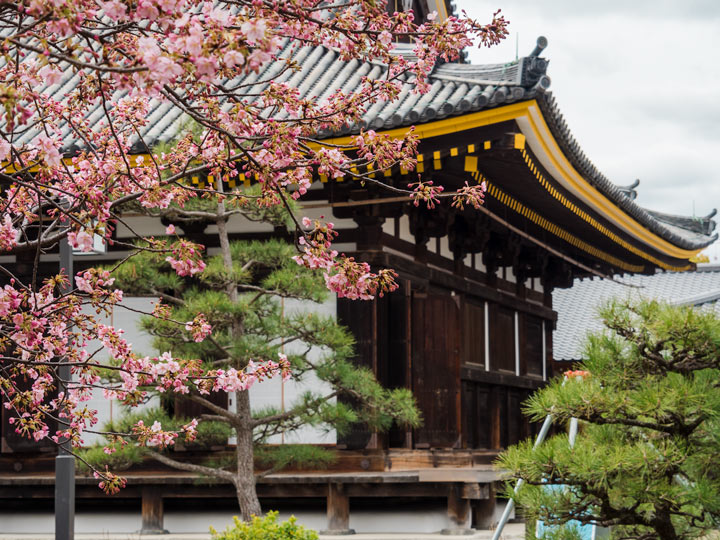
Walking through the halls of Rengeoin Sanjusangendo is a truly humbling experience.
Founded in 1164, this enormous Buddhist temple will blow you away with its 1,001 tall statues of the Goddess Kannon arranged in rows. Various displays detail the evolution of Buddhism in Japan, and many Kyoto natives consider this one of the city’s most important cultural sites.
If you have some extra time, check out the beautiful Japanese garden at nearby Chishakuin Temple.
Pontocho Alley
The first time I spent 2 days in Kyoto , I fell in love with Pontocho alley. The old wooden facades, paper lanterns, and narrow side corridors were exactly what I dreamed Kyoto would look like.
Wandering the lantern-lit alleys is one of the most magical things to do in Kyoto at night . You’ll find tons of small izakaya specializing in everything from yakitori to wagyu beef. However, there’s one more food stop left in today’s itinerary, so save some room for an elegant Japanese dinner!
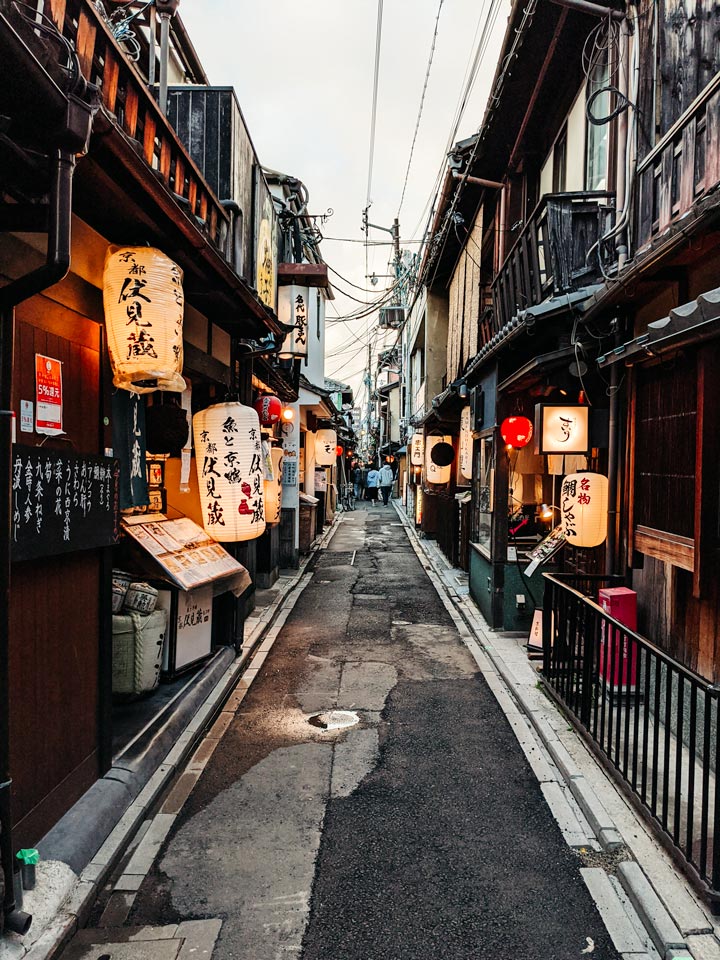
Known as Japanese haute cuisine, kaiseki is a traditional meal that dates back hundreds of years. Every aspect, from the ingredients to the plating to the order in which dishes are served, is governed by Japanese principles of nature, balance, and order.
Kaiseki isn’t cheap, with dinner prices starting around 9000 yen (~$90 USD) per person. You’ll also need to make a reservation, sometimes weeks or months in advance if the place is well-known (your hotel can help you with this if there’s no online system). Our kaiseki dinner at Yuzuya Ryokan was the highlight of our first trip to Japan.
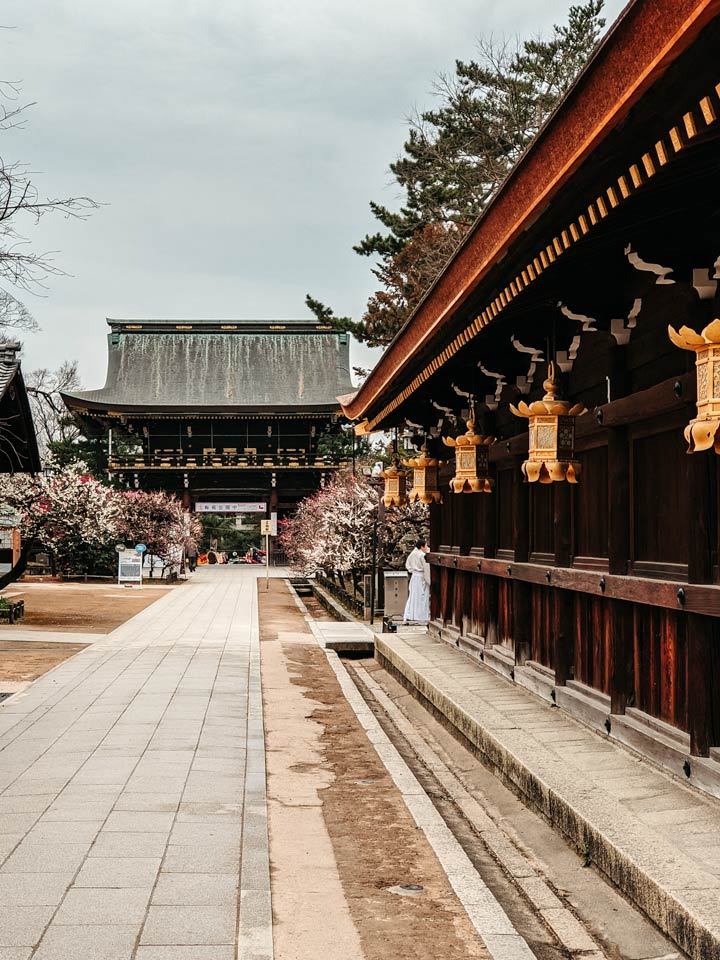
Kitano Tenmangu
Kitano Tenmangu’s plum blossoms and golden lanterns have become a symbol of Kyoto. While it’s a somewhat popular spot for tourists, locals also come here to pet the heads of the various cow statues to gain wisdom before exams.
The temple also sells various good luck charms for academic success, an important commodity in a city known for its prestigious universities and top-tier schools.
If you visit on the 25th of the month, stop by the huge Tenjin Market for some antique shopping and street food.
Toyouke Chaya
I don’t often recommend restaurants in my itineraries, but this place is special. Kyoto’s tofu is regarded as the best in the country (if not the world), and Toyoukechaya is THE place to sample it.
Toyouke Chaya’s tofu is incredibly fresh because it’s processed just around the corner. Their various set meals feature all sorts of tofu preparations, from fried agedashi and inari to delicate soft cubes served with a side of dashi.
They open at 11am, but you should arrive by 10:30am to get a good spot in line. The whole process of waiting in line and eating will take up a couple hours, but it just might be the most memorable meal you’ll have on this Osaka-Kyoto-Nara itinerary.
Heian Shrine and Garden
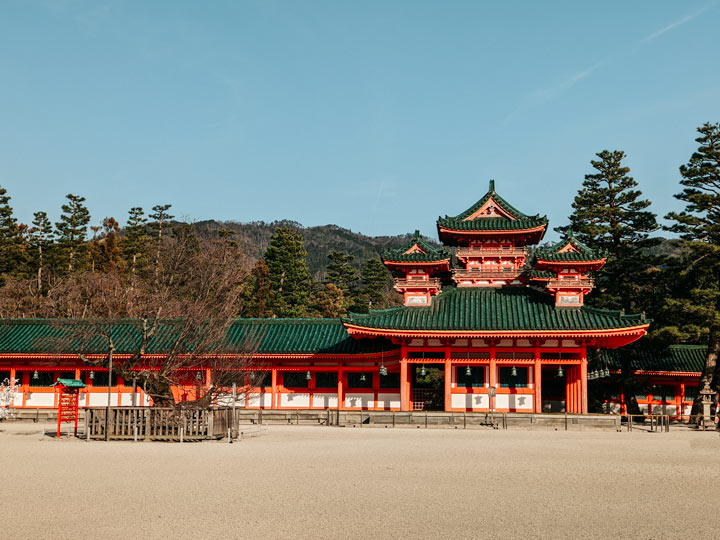
Like Kitano Tenmangu, Heian Shrine is a sightseeing location with an important local custom. Unlike the city’s other ancient buildings, Heian Shrine was built relatively recently in 1898 to commemorate Kyoto’s 1100th birthday. Its giant torii gate is the largest in Kyoto and spans the width of Jingu-michi street.
Every April, locals enter the shrine’s splendid inner garden to celebrate the Heian Jingu Reisai Festival. There are dancing geishas, tea ceremonies, and musical performances that invite the audience to sing along. Aside from the festival, Heian Shrine is a popular place for traditional Japanese weddings.
Yoshida Shrine and Park
If you want to explore an ancient site off the beaten path, head to Yoshida Shrine. Located next to Kyoto University, this 1,200-year-old shrine houses the same gods as Nara’s famous Kasuga shrine (which you’ll visit tomorrow) and played an important role in the Shinto religion. The nearby park is a popular hangout spot for university students.
Horiikecho neighborhood
While there’s nothing particularly exciting about Horiikecho, it’s canal-lined streets and traditional buildings make for a scenic stroll.
Aside from the area’s charm, there’s also a fantastic local sushi shop here: Hatsune Sushi . The owner and his wife serve up delicious Kyoto-style sushi at an affordable price.
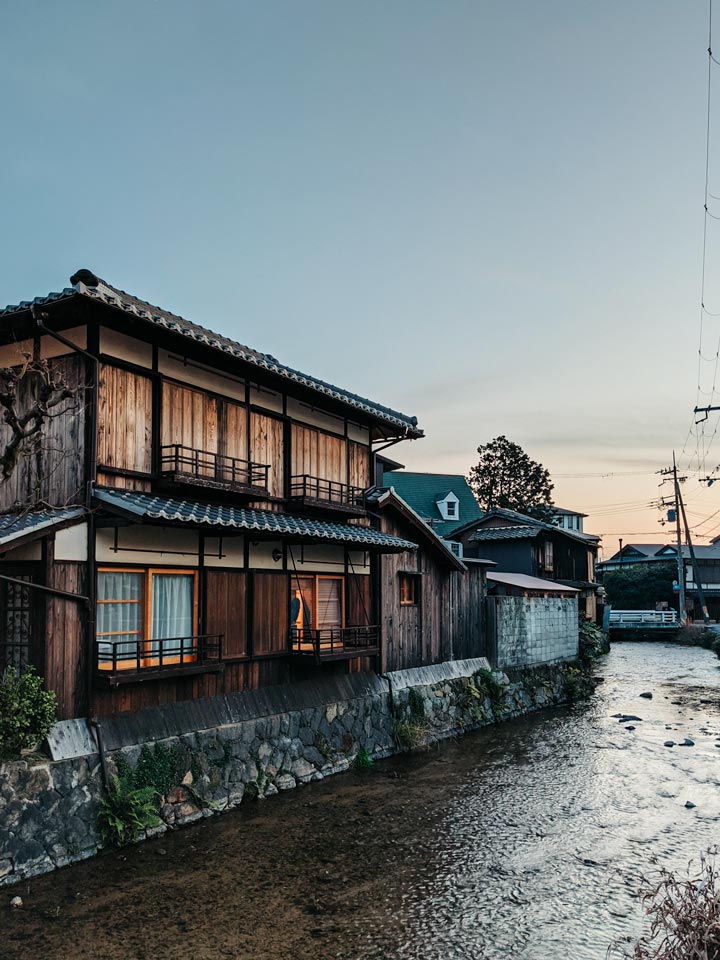
Furukawacho Shopping Alley
Kyoto has no shortage of covered markets, but it’s hard to resist one that’s dripping in colorful paper lanterns!
Unlike the touristy markets near Gion and the city center, Furukawacho still caters to Kyoto natives. You’ll find flower shops, produce stalls, and several restaurants here that are a welcome reprieve from the maddening crowd.
To eat like a local in Kyoto, head to an obanzai restaurant. Best translated as “Japanese home cooking”, obanzai serve a seasonal selection of traditional foods, many of which are displayed in large bowls on the counter. I suggest brushing up on some basic Japanese dining phrases before you order.
Other things to do in Kyoto
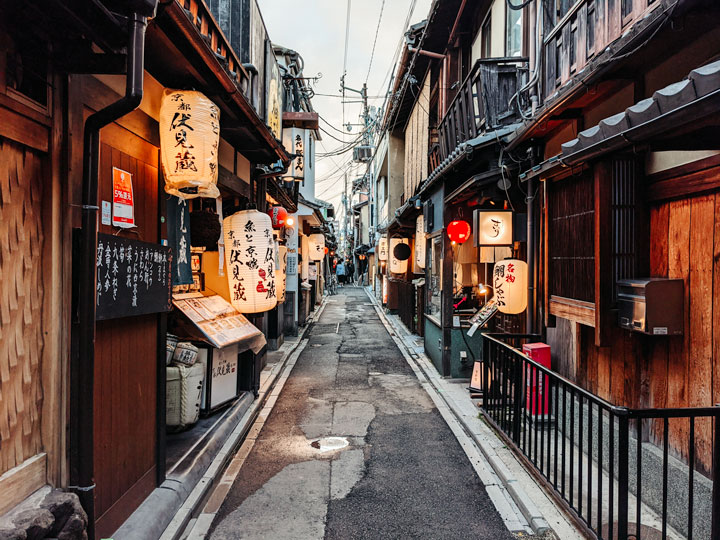
Here are some alternate ideas for your Kyoto itinerary:
- Participate in a tea ceremony
- Tour the beautiful Old Mitsui Family Shimogamo Villa
- Go on a sake tasting tour and learn about Kyoto’s brewing history
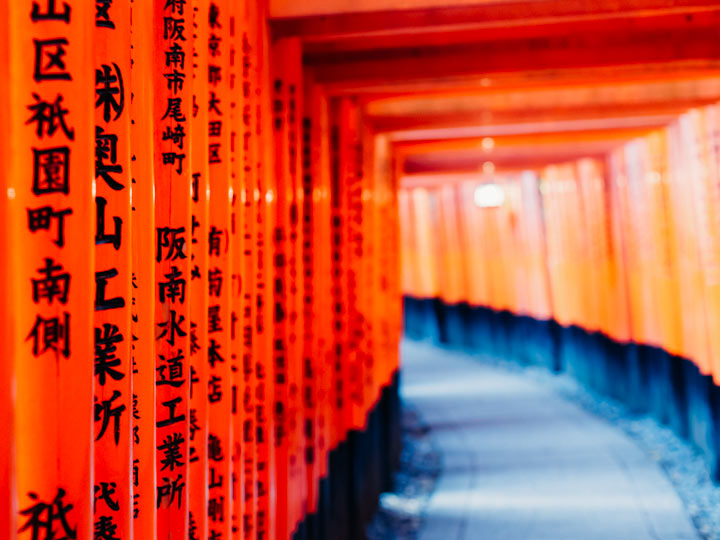
There’s no better way to end a Osaka-Kyoto-Nara itinerary than with a trip to Fushimi Inari Shrine and Nara. Both of these destinations are tourist hotspots, so I suggest getting off to an early start!
Fushimi Inari Taisha’s seemingly endless vermillion torii gates–more than 10,000–draw millions of tourists a year. The gates line the path up Mount Inari, linking the main Shinto shrine at the base to smaller ones further up the mountain. As you walk up the mountain, you’ll spot plenty of fox statues that represent the god Inari, protector of rice growing.
It takes around three hours to walk all the way to the top and back, and it gets tiring quickly. Luckily, there are multiple landing spots where you can easily turn around and descend back to the train station if needed.
After you’ve finished exploring Fushimi Inari Taisha, head back to Inari Station and take the JR Nara line to JR Nara Station.
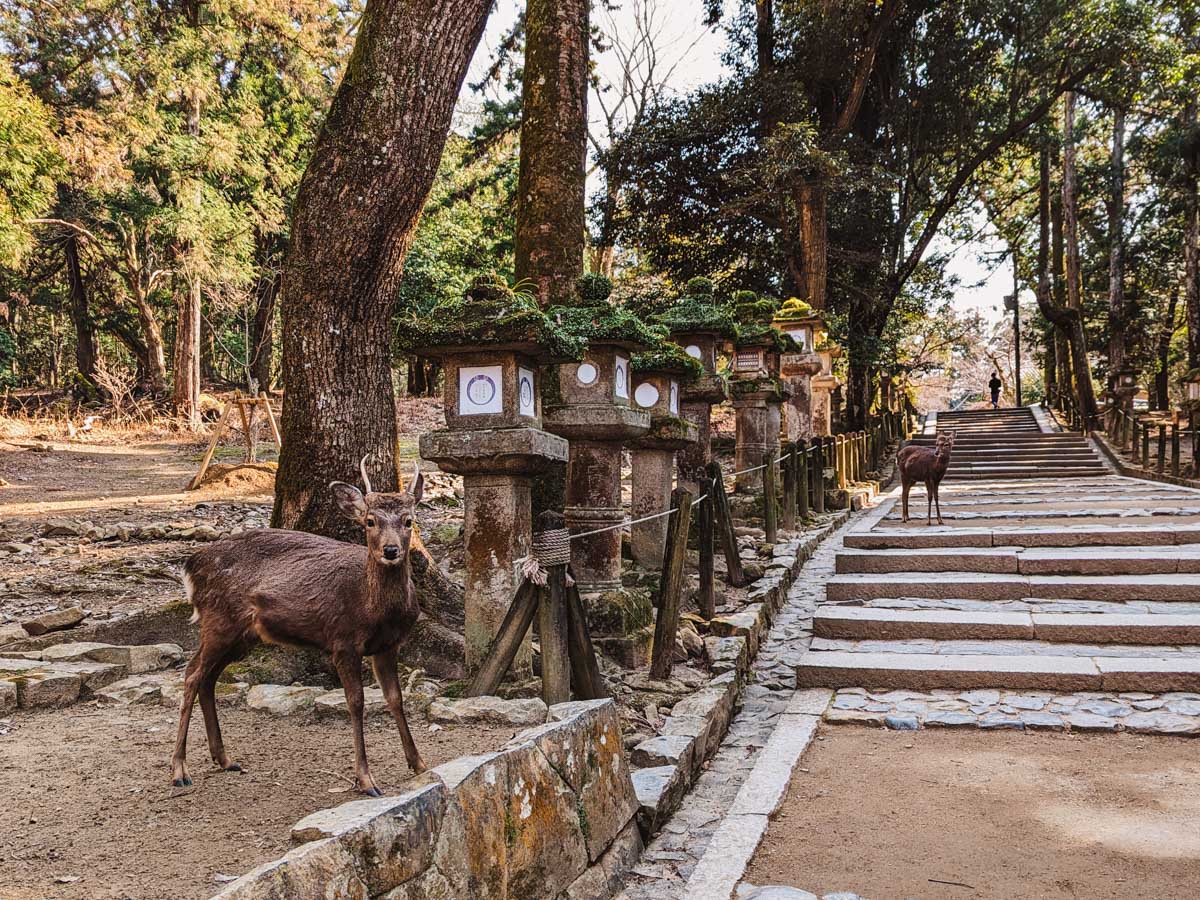
Nara is an extraordinary and utterly unique Japanese city. Once an ancient capital city, Nara has a whopping eight UNESCO World Heritage Sites, including a giant Buddha and a petrified forest. And of course, it’s especially famous for the sacred deer that freely roam the streets.
See my detailed Nara day trip itinerary to plan your visit!
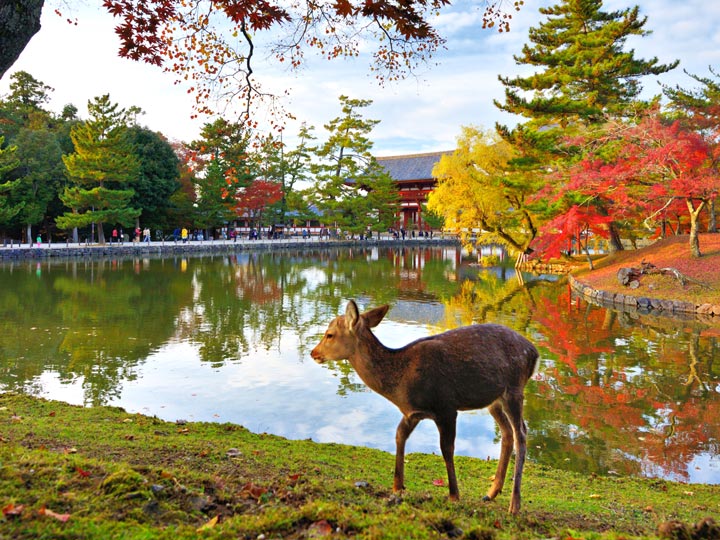
Where to Stay in Kyoto
I’ve been to Kyoto several times and can personally recommend two places to stay.
If you’re after the classic, old-world Kyoto experience, book at Yuzuya Ryokan .
The name comes from the yuzu citrus trees that grow in the inner garden. They’re conveniently located next door to Yasaka Shrine in Gion and offer everything from kaiseki dinner to in-room massages. We loved coming back after a long day of exploring to rest in the traditional tatami room and soak in the wooden tub.
For a less expensive option, choose Kyoto Traveler’s Inn .
It’s conveniently located across from a sightseeing loop bus stop and a giant torii gate (so you’ll never get lost!). Gion and Pontocho are a short walk away. Plus, they offer a mix of Western and Japanese-style rooms depending on your preference.
Map of Osaka Kyoto Nara Itinerary
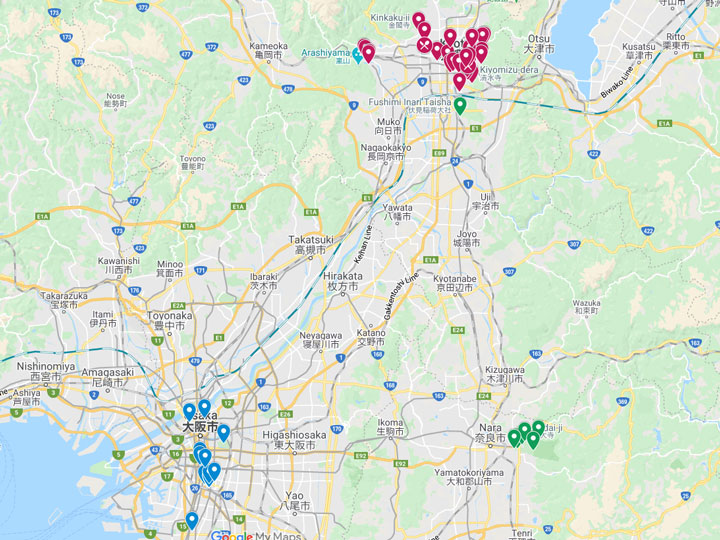
Click here to access the full interactive map!
Know before you go
Before you head to Japan, there are a few things you should know. These detailed guides cover everything from packing lists to cultural taboos:
- Common mistakes to avoid in Japan
- The solo travel guide to Japan
- Comprehensive Japan travel checklist
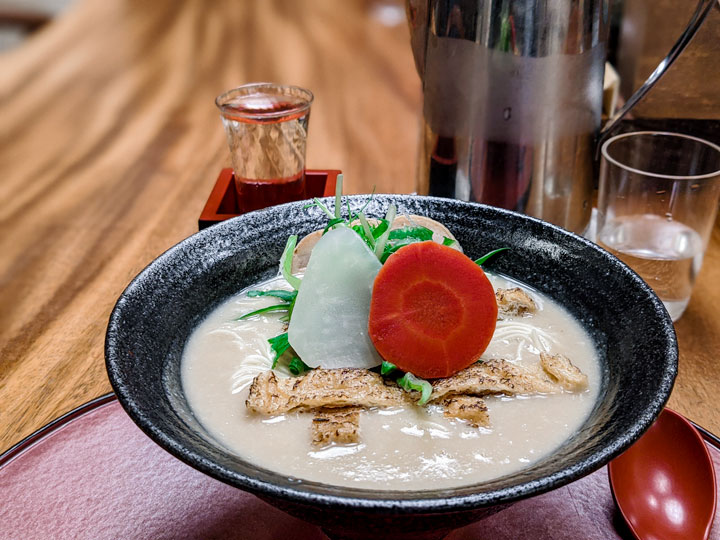
My favorite Japan travel books
These books are full of fun and practical information about traveling in Japan (I own all three!):
- Super Cheap Japan: Budget Travel in Tokyo, Kyoto, Osaka, Nara, Hiroshima and Surrounding Areas
- Lonely Planet Japan
- Cool Japan Guide: Fun in the Land of Manga, Lucky Cats and Ramen
You’ll find pretty much everything you need in the above resources. But if you’re after the TL;DR version, here are the must-knows:
- Cash is still king in Japan, so always keep yen in your wallet and check beforehand if restaurants accept card
- Rent a pocket WiFi or SIM card for mobile data on the go
- Knowing a few simple travel phrases goes a long way
- Download offline versions of Google Maps for each city you’re going to visit (in case you lose your signal and get lost)
- Eating and drinking while walking or on public transit (except for bullet trains) is not allowed
- If you have dietary restrictions, scout out restaurants in advance and have a way to communicate your needs in Japanese (ex. make some English/Japanese allergen cards)
Where to Stay in Each City
In case you missed my hotel recommendations within the article, here’s a summary of where to stay:
Osaka: Hotel WBF Namba Motomachi ($) or another hotel in the Namba Station area
Kyoto: Kyoto Traveler’s Inn ($) or Yuzuya Ryokan ($$$)
If you have more time in Japan
Here are some additional places to visit before or after this 6 day Japan itinerary:
- The Best Places to Visit Between Tokyo and Kyoto
- Lake Biwa Day Trip Itinerary: Water, Mountains, and Sacred Sites
- 12 Easy Day Trips from Kyoto
- Kanazawa Day Trip: Japan’s Samurai City
- 6 Day Tokyo Itinerary
Leave a Comment Cancel reply
This site uses Akismet to reduce spam. Learn how your comment data is processed .
Kyoto: Getting there and around
Getting to kyoto.
- ¥ 1,450
- frequent departures
The JR Tokaido Shinkansen requires 15 minutes and costs 1450 yen for an unreserved seat between not so centrally located Shin-Osaka Station and Kyoto Station . A reserved seat costs about twice as much. The Japan Rail Pass covers Hikari and Kodama trains between Shin-Osaka and Kyoto, but not Nozomi trains.
"Special rapid" trains on the JR Kyoto Line require about 30 minutes and cost 580 yen between centrally located Osaka Station and Kyoto Station . Stopping at a few more stations along the way, "rapid" trains require about 40 minutes and "local" trains about 45 minutes, but they are often less crowded. The one way fare is also 580 yen. All trains are covered by the Japan Rail Pass .
- ¥ 1,340 - 2,270
- about two departures per hour
Limited express trains are more expensive but not much faster than special rapid trains; however, they tend to be less crowded. As a result, they can be a comfortable alternative to special rapid trains for Japan Rail Pass holders.
Limited express trains on the Hankyu Kyoto Line get you from Osaka-Umeda Station (next to JR Osaka Station) to Karasuma and Kyoto-Kawaramachi stations in central Kyoto in roughly 40 minutes and for 410 yen. They are not covered by the Japan Rail Pass .
Limited express trains on the Keihan Main Line get you from Yodoyabashi Station in central Osaka to Sanjo Station in central Kyoto in roughly 50 minutes and for 430 yen. They are not covered by the Japan Rail Pass .
Above fees and schedules are subject to change. Be sure to check current yen exchange rates .
Getting around
Kyoto features a rectangular street system. Unlike the streets in other Japanese cities, most of central Kyoto's streets are named. The main streets running from east to west are numbered in ascending order from north to south, and are about 500 meters apart from each other, with several smaller streets in between. For example, Shijo means "4th Avenue" and Nijo means "2nd Avenue".
Kyoto's city center with the highest concentration of dining, shopping and entertainment opportunities, is located around the junction of Shijo-dori (4th Avenue) and Kawaramachi-dori (Kawaramachi Street). JR Kyoto Station is located south of the city center at the height of Hachijo-dori (8th Avenue).
The most prominent north-south street is Karasuma-dori (Karasuma Street), which runs from Kyoto Station via the city center to Kyoto Imperial Palace . Another north-south axis is Kamo River, about one kilometer east of Karasuma-dori.
Kyoto has a rather inadequately developed public transportation system for a city of its size, consisting of two subway lines, a dense bus network and several railway companies, whose lines are not always conveniently connected with each other. Taxis and bicycles can be worthwhile alternatives.
The recommended way to get around Kyoto by public transportation is to use an IC card , such as Icoca, which is accepted on virtually all trains and buses in the city. Alternatively, travelers intending to use buses or subways extensively, should consider one of the 1-day passes available. See the ticket section below for more details.
Below is a simplified map of the railway and subway lines of Kyoto:
Few of Kyoto 's tourist attractions are located close to subway or train stations. Instead, Kyoto has a dense bus network with direct bus lines from Kyoto Station and/or the city center around Shijo-dori and Kawaramachi-dori to most major sights.
Kyoto is served by multiple bus companies. For central Kyoto, the green Kyoto City Bus buses are most numerous and useful. The red buses by Kyoto Bus are second most prominent and tend to be convenient to access sights in more outlying areas of the city.
The tourist offices provide a useful English network map for the Kyoto City Buses, which makes it quite easy for foreign visitors to access tourist attractions by bus. Despite the good map and English displays and announcements, however, getting off at the correct bus stop can still be stressful, especially in crowded buses.
Since buses are small and operate surprisingly infrequently even on some major routes, buses to major tourist sights can often get crowded, especially on weekends and during holidays. In addition, much time can be lost when buses get stuck or only proceed slowly in the busy street traffic. Consequently, it is recommended to use subways and trains as much as possible, and use buses only for medium and short distances, for example, from the closest subway station to the destination.
Most buses are entered through the back door and left through the front door. The fare has to be paid when leaving the bus. Inside much of central Kyoto, there is a flat rate of 230 yen per ride. Outside the flat fare zone, the fare increases with the distance. Click here for more information on riding buses.
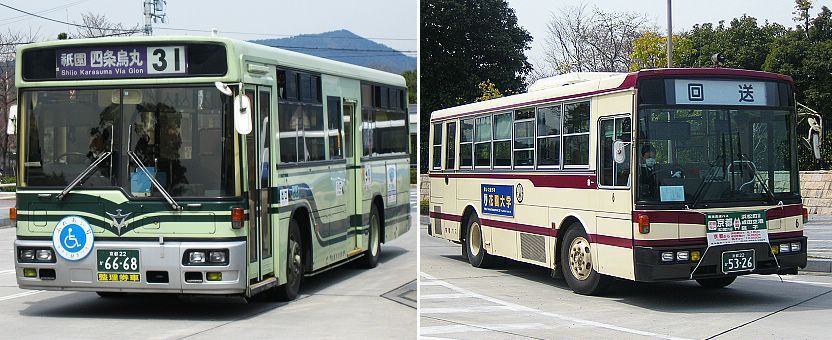
There are two subway lines in Kyoto , the Karasuma Line which runs from south to north along Karasuma-dori and stops at JR Kyoto Station, and the newer Tozai Line which runs from east to west and meets the Karasuma Line at the intersection of Karasuma-dori and Oike-dori.
Japan Railways
All JR lines, including the Tokaido Shinkansen , pass through or commence at JR Kyoto Station . JR trains can be a convenient for accessing the Arashiyama area (JR Sagano Line) and some attractions in southern Kyoto along the JR Nara Line, e.g. Fushimi Inari Shrine and Uji .
Other Railways
- Hankyu Railway connects Kyoto with Osaka . The line initially runs below Shijo Avenue from Kawaramachi westwards in direction of Osaka. It is a good option for accessing the area around Katsura Rikyu , from where a branch line also connects to Arashiyama .
- Keifuku Railway (also known as Randen) operates two tram-like train lines in northwestern Kyoto. For train lovers, a ride on these trains is a small attraction by itself. The lines can be an option for accessing Arashiyama and the area around Ryoanji and Kinkakuji .
- Keihan Railway 's main line runs next and parallel to Kamo River, but unfortunately does not connect to Kyoto Station . The line continues to Osaka and is an alternative to the JR Nara Line to access some of the attractions in southern Kyoto.
- Eizan Railway operates two train lines from where the Keihan Line ends, Demachiyanagi Station. One line leads to Kurama , while the other runs to the base of Hieizan .
- Kintetsu Railway connects Kyoto Station to Nara . Note that some trains on the Karasuma Subway Line continue to run on the Kintetsu Nara Line and the other way around.
By sightseeing bus
The Sky Hop Bus is an expensive but convenient way to visit Kyoto's most famous sightseeing spots. Double-decker buses with an open-air second floor run clockwise every hour from Kyoto Station in a large circle around the city, stopping near major tourist sites along the way, including Nijo Castle , Kinkakuji , the Imperial Palace , Heian Shrine and Kiyomizudera . A 12-hour pass costs 2500 yen and a 24-hour pass costs 3600 yen and can be purchased through Klook .
Kyoto is probably the Japanese city with the highest concentration of taxis . Especially in the city center, taxis are found everywhere. Taxis can not only be a more comfortable, but also an economical alternative to buses on short to medium distances for groups of three or more.
Most taxis accommodate up to four passengers (not including the driver), while larger vehicles are able to accommodate an additional fifth passenger. The rate starts around 610 yen for the first two kilometers and increases by 80 yen for every additional 300-400 meters traveled.
Kyoto City's simple layout and flat terrain make it easy and convenient to explore by bicycle . Numerous bicycle rental outlets can be found around the city, especially around major stations, such as Kyoto Station or in popular biking areas like Arashiyama . Typical rental prices are around 1000-1500 yen per day for basic bicycles and around 1700-2000 yen for electric assist bicycles. Some lodgings may provide their guests with bicycles for a small fee or for free.
Kyoto is generally a bicycle-friendly city with relatively easily navigable roads and a handful of cycling routes, most notably along Kamo River. Designated bicycle parking is often freely available around popular sightseeing spots. The situation is a little bit more challenging in the city center due to congested roads, crowded sidewalks and a lack of designated parking areas. Also, distances to some of the more outlying sightseeing spots should not be underestimated. For example, it is about eight kilometers (typically a 45-75 minute ride) from Kyoto Station to Kinkakuji or about ten kilometers to Arashiyama .
Passes and Tickets
See also our separate page about the various passes available for the Kansai Region .
The prepaid IC card available in Kyoto is called Icoca . It does not give you any discounts over regular tickets, but it makes the process of taking trains and buses easier, as you do not always need to buy a ticket for each ride. Icoca cards can be purchased through ticket machines at JR stations. Local non-JR railway companies offer their own IC card called Pitapa ; however, Pitapa is a postpaid card that works more like a credit card and is targeted at residents.
Icoca and Pitapa can be used on virtually all trains and buses in and around Kyoto (and most other major cities in Japan). Additionally, eight other IC cards from other major cities of Japan can also be used on the trains and buses of Greater Osaka and Kyoto, including Suica, Pasmo, Kitaca, Toica, Manaca, Sugoca, Nimoca and Hayakaken.
The Kansai One Pass is a special version of Icoca exclusively for foreign tourists that additionally qualifies for discounts at various attractions in the Kansai Region . It is available for sale at Kansai Airport and major railway stations in the Kansai Region.
Furthermore, the following one day passes are available for Kyoto :
- Kyoto Sightseeing Card (1100 yen) Unlimited use of Kyoto's two subway lines and most buses (including Kyoto City Buses, Kyoto Buses, JR buses and Keihan buses) in central Kyoto and outskirts, including Ohara and Daigoji on one calendar day. The pass also comes with discount coupons for selected sights in Kyoto. It can be purchased from ticket machines in subway stations, at bus ticket centers and from some hotels. The pass can pay off especially if you visit outlying areas such as Ohara . The downside is that, besides the subway lines, the pass does not cover any other trains which are often a convenient means of getting around.
- Kyoto Subway One Day Card (800 yen) Unlimited use of Kyoto's two subway lines on one calendar day. The card can be purchased from ticket machines at subway stations. It generally pays off if you use subways more than three times per day, however its value is restricted by the subway's limited coverage area.
Questions? Ask in our forum .
Links and Resources
Arukumachi kyoto route planner, kansai one pass, kyoto municipal transportation bureau, keihan railway, kintetsu railway, hankyu railway, kansai airport transportation, osaka airport transport, sky hop bus, enjoy cycling in kyoto, keifuku railway, eizan railway, hotels around kyoto.
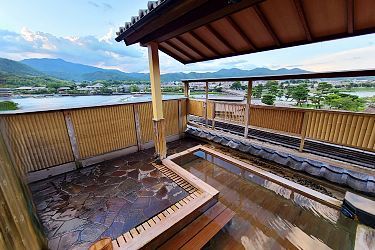
Experiences around Kyoto
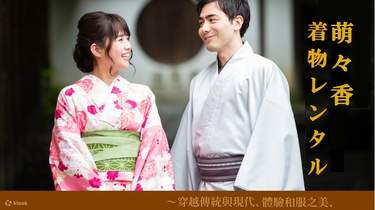
gohsomewhere
6d kyoto and osaka itinerary — ultimate guide to the kansai region.
- Japan , Kyoto , Osaka
Kyoto, the historical capital and Osaka, the second largest metropolitan area in Japan are some of the top cities to visit in the Kansai region. Temples, shopping street and animal cafes, here’s everything we did in the Kansai Region in this Kyoto and Osaka itinerary.
Overview of Kyoto and Osaka Itinerary
Getting to kyoto, day 1: kyoto, day 2: kyoto, day 3: day trip to nara, day 4: kyoto, day 5: osaka, day 6: usj, osaka, frequently asked questions (faq), from kix airport.

The nearest international airport to Kyoto is the Kansai International Airport (KIX). From KIX, the fastest option to get to Kyoto is the JR Haruka Limited Express. It that takes around 1 hour 15 minutes to get from KIX to Kyoto and is covered by the Japan Rail Pass . Tickets cost ¥2850 for non-reserved seats and ¥3500 for reserved seats if you do not have the JR Pass.
If you don’t have a JR Pass and are looking for cheaper options you can take the Nankai-Limited Express followed by changing to local subway lines but the journey will take over 2 hours. You can find various routes on Google Maps with estimated costs.
If you’re heading to Kyoto from Tokyo, the most efficient way would be to take the Tokaido-Sanyo Shinkansen from Tokyo Station, which will take around 2 hours 19 minutes.
Read also: 5D Tokyo itinerary
Route: Arashiyama Bamboo Forest – Tenryu-ji Temple – Miffy Sakura Kitchen – Arashiyama Park
Arashiyama Bamboo Forest
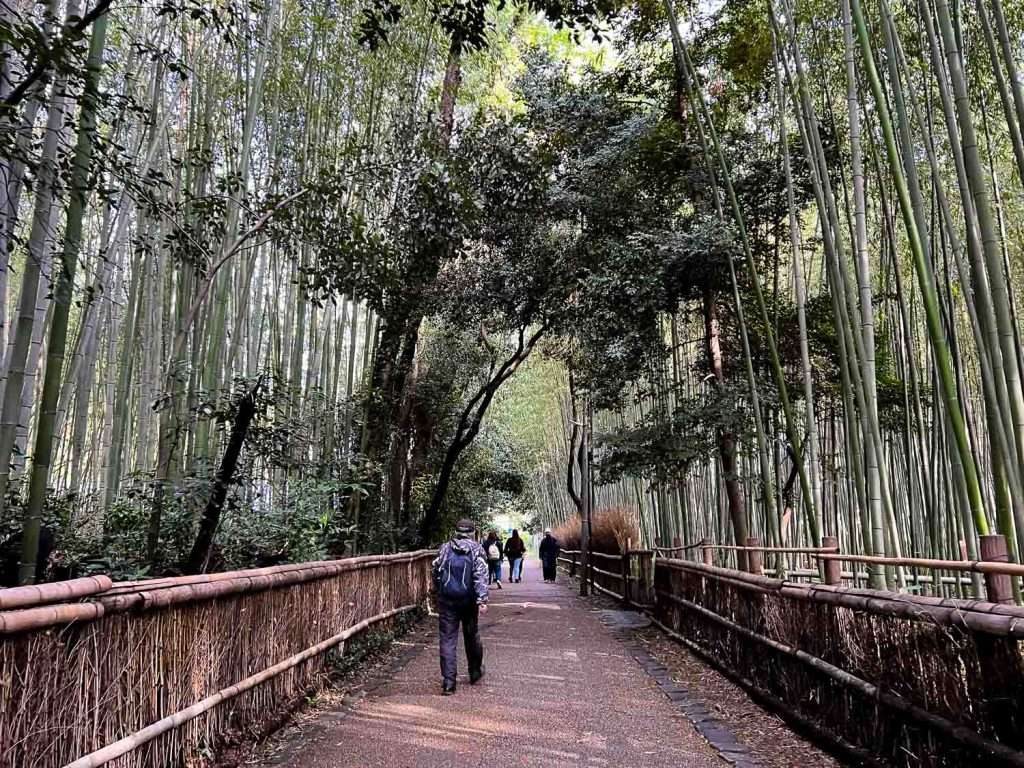
This peaceful and serene forest is located about an hour from Kyoto. The forest is open 24 hours a day, so you can visit at any time. However I would recommend visiting early around 7 or 8am to avoid the crowds and not late at night as it would not be well lit.
Tenryu-ji Temple

A short walk from the bamboo forest, Tenryu-ji Temple is a UNESCO World Heritage site that was founded in the 14th century and is considered one of Kyoto’s most famous temples. One of the highlights here is the Cloud Dragon painting in its Dharma Hall. You will also spoil many dragon paintings around, a homage to the temple’s name, which directly translates to “heavenly dragon”.
Opening hours: 8.30am – 5.30pm Entrance fee: ¥500
Miffy Sakura Kitchen

Miffy fans, you have to drop by the Miffy Sakura Kitchen. Just a minute from Tenryu-ji Temple, Miffy Sakura Kitchen is a bakery that features a fusion of traditional Japanese designs Dick Bruna’s bunny character. The Miffy Sakura Kitchen is a takeaway-only bakery.

We got the Miffy Anpan (¥302), Miffy Cube (¥270), Chocolate Miffy Palmier (¥302) and a hot milk tea ( ¥ 440). The chocolate palmier was our favourite; the pastry was pretty airy and not too sweet. The milk tea was disappointing as it was from a drink machine and it tasted diluted.
Opening hours: 10am – 6pm Address: Japan, 〒616-8384 Kyoto, Ukyo Ward, Sagatenryuji Tsukurimichicho, 三日月
Arashiyama Park (Nakanoshima Area)

Next, take a 5-minute walk to the picturesque nearby Arashiyama Park. This lovely park is offers stunning views of the surrounding mountains and river. You can enjoy your Miffy bread or other snacks you’ve bought along the way at the park.
The park is open 24 hours a day, and admission is free.
Esperanto Kokoro Kyoto Okazaki Studio

If you’ve always wanted rent a kimono or yukata but wanted something a little different, this experience is for you. Studio Kokoro is a photo studio where you can don on beautiful kimono and experience an oiran makeover! An oiran is a highly ranked courtesan.
Studio Kokoro currently has 3 outlets, but we picked the Esperanto outlet, as they had the most elaborate backdrops. We chose the couple without hakama plan (¥31,350). For this plan, we had individual shots and couple shots.
The whole shoot took about 3 hours, including dressing up, make up and dressing down. This was by far my favourite experience out of everything I’ve done in Japan, I’d really recommend it if you have the budget and time to spare.
Besides oiran makeovers, there are also other styles such kokohime, and also limited time ones .
You can make an appointment via the contact form on their website, or drop them an email like I did, as the form wasn’t working when I tried filling it.
Opening hours: 10am – 8pm (last appointment at 5pm) Address: 53-37 Awadaguchi Toriicho, Sakyo Ward, Kyoto, 606-8436, Japan
Kiyomizudera Temple
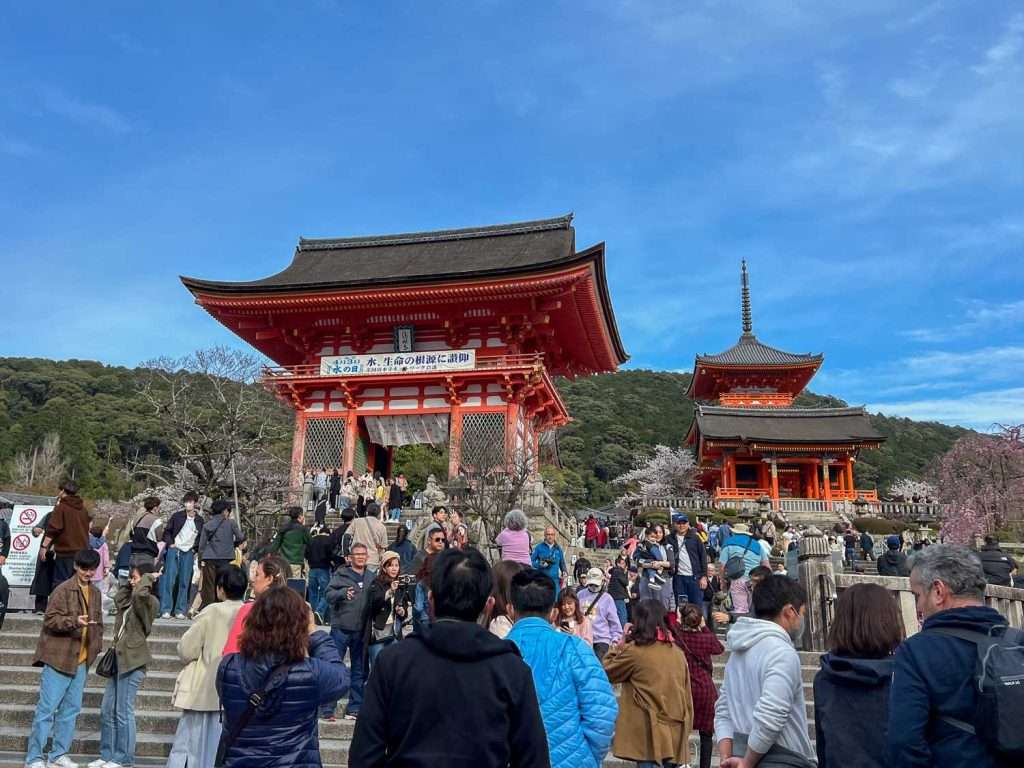
Literally translated to “Pure Water Temple” and a reference to the pure spring water that flows beneath the main hall, Kiyomizudera Temple is one of Japan’s most famous temples.
The temple has been rebuilt several times throughout history due to fires and earthquakes and the temple is considered a masterpiece of Japanese wooden architecture.
Opening hours: 6am – 6pm Entrance fee: ¥400
Jishu Jinja Shrine

Behind the main hall of Kiyomizudera is Jishu Jinja Shrine , a shrine dedicated to the deity of love and match making. There are 2 love stones here, placed 18m apart and it is said that if you are able to walk from one to the other with your eyes closed, your wish will be granted.
It was a fun but scary experience since I was terrified of walking into people. But hey, for those seeking out love, this is worth a shot 😉
UPDATE 2023: The Jishu Jinja Shrine is currently closed for renovations, check the website for more updates.
Opening hours: 6am – 6pm
Ninenzaka and Sannenzaka

Ninenzaka and Sannenzaka are famous shopping streets that are lined with historic Japanese-style buildings that have become synonymous with the image of Kyoto. The streets are on a slope and consist of many steps at certain points.
Tip: Come early, if you want to walk through the streets without having to squeeze through the crowds. The streets get really crowded after 11am.
Ninenzaka is also home to the world’s first tatami-floored Starbucks, so you can grab a coffee as a break from shopping!
Ninenzaka Starbucks opening hours: 8am – 8pm Ninenzaka Starbucks Address: Japan, 〒605-0826 Kyoto, Higashiyama Ward, Masuyacho, 349
Kodaiji Temple
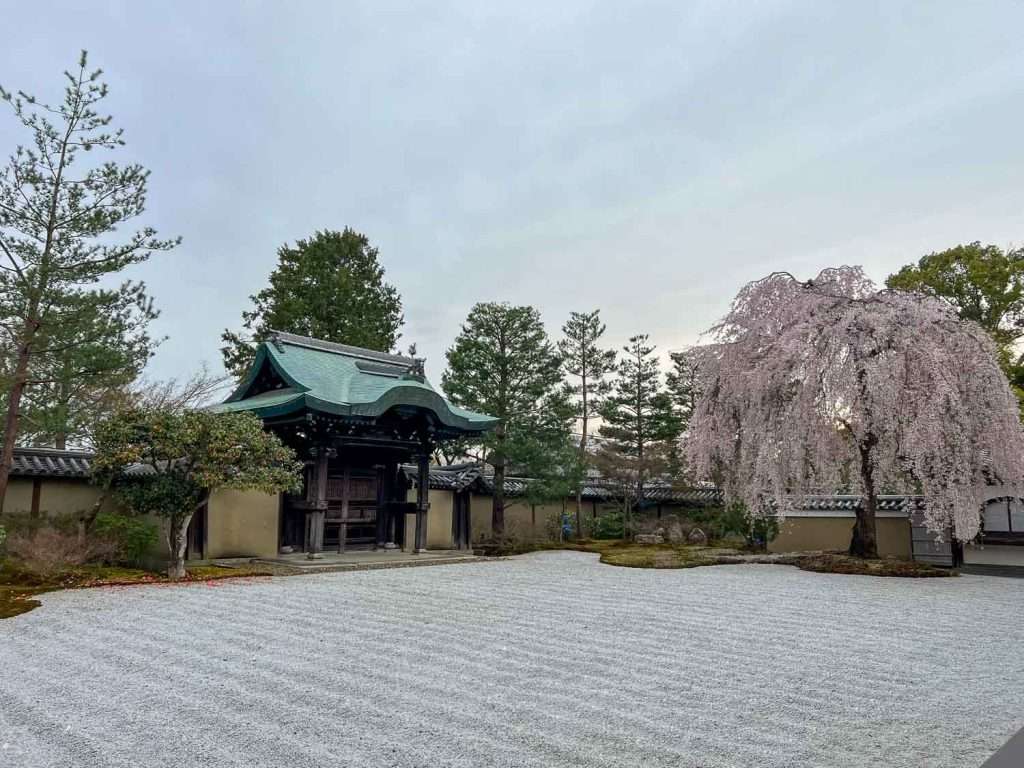
Kodaiji is a Buddhist temple founded in 1605, built in memory of Toyotomi Hideyoshi by his bereaved wife, Kita no Mandokoro.
Seasonal nighttime illuminations run in the spring, summer, and autumn at the temple. We were lucky enough to have visited during the spring event whereby one of the highlights was the light show in the courtyard, where the majestic lone sakura tree stands.
Opening hours: 9am – 5pm. Please take note of the illumination time as it may be different for each season, check out Kodaiji’s website for the updated timing before visiting. Entrance fee: Adults ¥600, Children 12–18 years ¥250, free for children under 12 Address: 526 Shimogawara-cho, Higashiyama-ku, Kyoto, 605-0825 Japan
Fushimi Inari Taisha
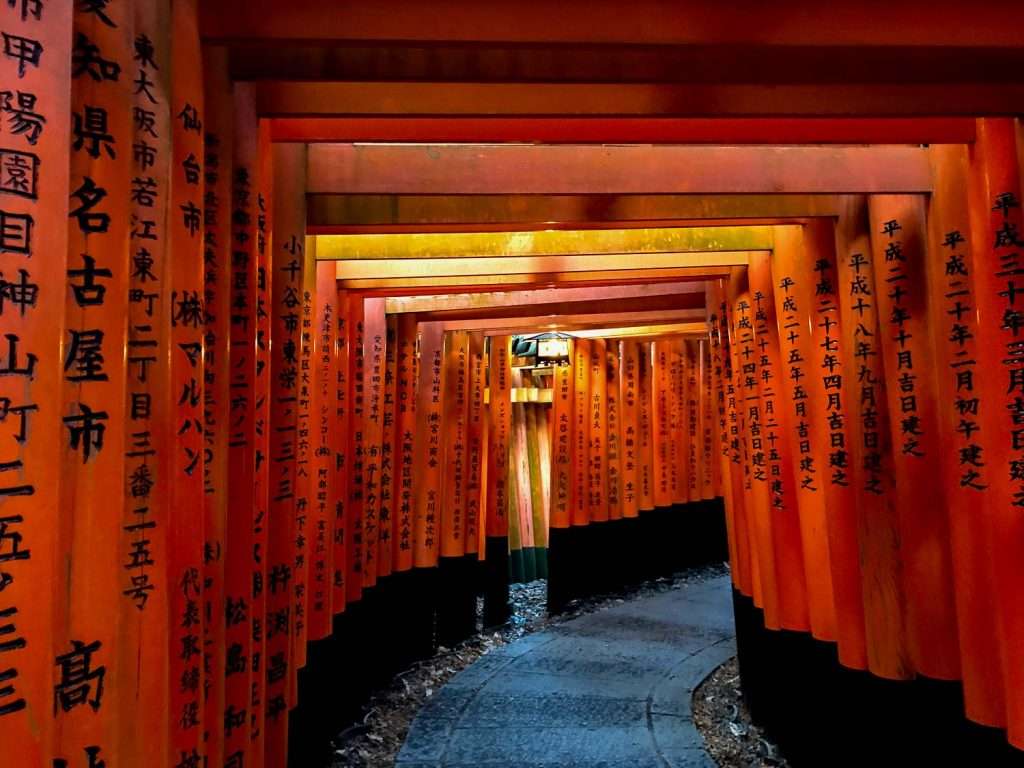
Fushimi Inari Taisha is one of Kyoto’s most iconic landmarks. This Shinto shrine is famous for its thousands of vermilion torii gates (also known as senbon torii in Japanese), which form a tunnel-like pathway through the forest.
You can hike all the way up for a beautiful view, 233m above sea level! The hike takes at least an hour each way, which means at least 2 hours for a return trip. What makes the hike difficult is the number of steps. Be sure to wear comfortable shoes and clothing for the hike.
Tip for photographing senbon torii
- It’s crowded at the start of the senbon torii trail, walk further in and it will be much quieter.
- There are torii of 2 sizes, if you want your photo to look like it has more torii gates, photograph the shorter ones.
Contrary to popular belief, you don’t have to reach the shrine extremely early to beat the crowd. As mentioned earlier, if you’re unable to get to Fushimi Inari Taisha, you can walk further up the trail. It gets quieter the further you walk as not many do the entire hike up.
Opening hours: The shrine is open 24 hours a day, so you can visit at any time. Entrance fee: Free
Route: Nara Park – Tōdai-ji – Nakatanidou
Nara is a popular day trip location from Kyoto and Osaka, due to its proximity and ease of traveling there. The journey from Kyoto or Osaka only takes around 45 minutes by train. If you have the JR Pass , this train journey is also free.

Nara Park is well known for its cute park’s inhabitants – the deers. These charming creatures roam freely in the area, and are even known to bow to visitors; in exchange for some food of course.
There are many stands and shops that sell deer crackers for ¥200. A good trick is to break up the crackers so they last longer and you will be able to feed more deers. Also be sure to show the deers your empty hands when you’re out of crackers, or they may continue following you for more!
Note: some deers can get really pushy and may even snatch paper from your hands, so be careful, especially with your maps!
Entrance fee: Free
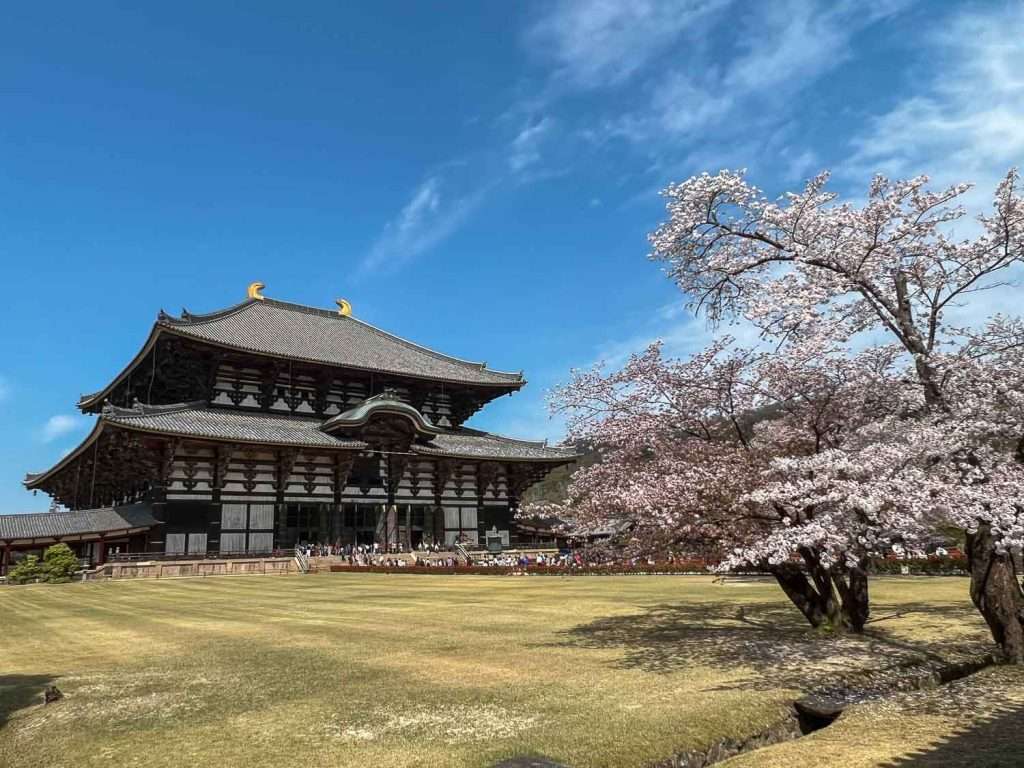
North of Nara Park is Tōdai-ji , one of the largest Buddhist temples in Japan. This significant landmark houses a 15m tall Buddha, one of the tallest in Japan.

A popular activity in the main hall is trying to squeeze through a hole in the pillar to the back right of the giant Buddha statue. It is said to be the same size as the Buddha statue’s nostril and it is believed that those who can pass through the 37 by 30 cm wide hole will be granted good health and luck.
Opening hours: 7.30am – 5.30pm Entrance fee: ¥600 Address: 406-1 Zoshicho, Nara, 630-8211, Japan
Nakatanidou

This small yet legendary mochi shop has gained international acclaim for its mochi pounding performances. Many people crowd around to watch the mochi pounding and it is very entertaining. There are no regular “showtimes”, so you’ll have to try your luck, or ask the staff the time for the next mochi pounding.
A mochi with red bean filling costs ¥180. Don’t expect great service here as it’s really a grab and go concept. As the shop is so busy, the staff are always shouting in order to get heard and to ensure visitors don’t become traffic obstruction. To be honest, although the mochi was fresh, I found it too soft and difficult to eat as it does not stay in shape. The mochi tasted average as well and felt like I’ve had way better elsewhere.
Opening hours: 10am – 7pm Address: 29 Hashimotocho, Nara, 630-8217, Japan
Route: Philosopher’s Path – Omen – Ginkakuji – Cho-in temple
Philosopher’s Path

Philosopher’s Path is a picturesque walking trail that runs along a canal. The path is a great temporary escape from the city for you to enjoy some peace and quiet. It takes about 30 minutes to walk along the entire path, but you can also stray off the path to visit the surrounding shops like we did.
This spot is exceptionally spectacular during the cherry blossom season and I would strong recommend for you to check it out if you are in Kyoto during the season!
Omen Ginkakuji

Just a veer off Philosopher’s path, Omen is a popular udon restaurant that has been in the business for over 300 years.
The menu is small and the main difference between the options are its side dishes. You can choose to have your udon served hot or cold. We chose Omen noodles Regular set (¥1280), in the hot option as it was a cold day. The noodles and soup tasted plain, but was immediately made better once I added the garnish provided.
We got to the restaurant at 12pm, there was a long line with around 20 people in line. We waited for almost an hour before getting into the restaurant. There is no reservation system at this restaurant so I suggest getting here near opening time so you wouldn’t have to queue long.
Opening hours: 11am – 8.30pm Address: Bowls of udon noodles served with sides, spices & dipping sauces at Japanese & Western-style tables.
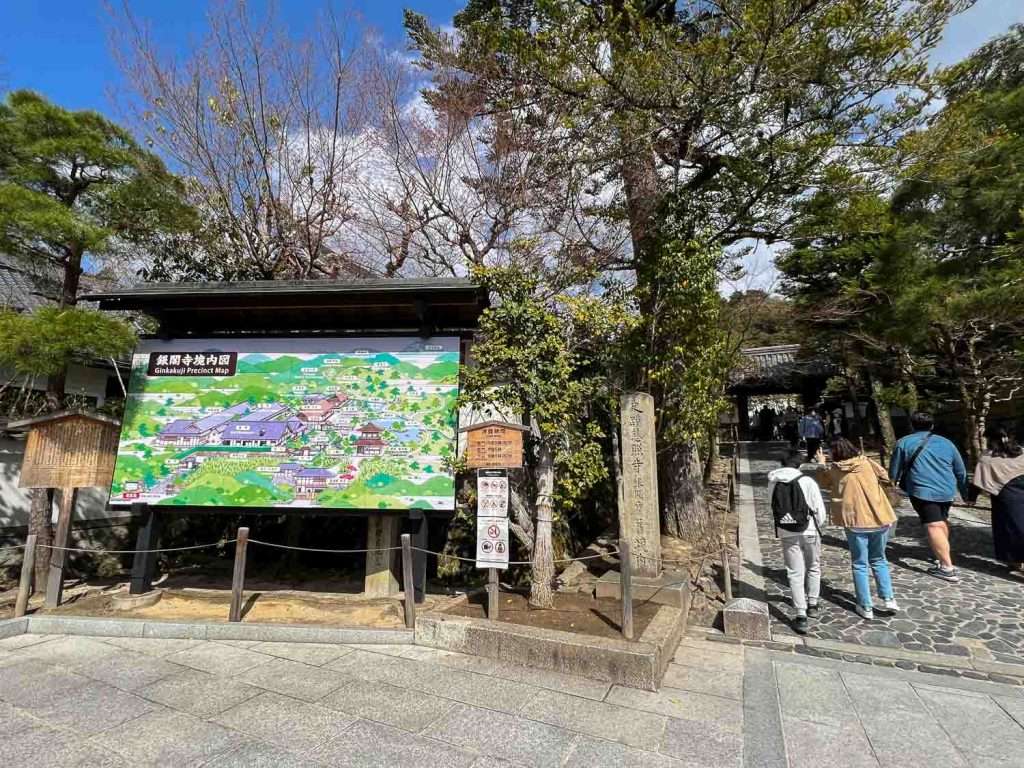
Also known as the Silver Pavilion and a short walk from Omen, this temple is famous for its stunning gardens. The gardens is the real star here but if you’re short on time, I honestly think this place is skippable.
Opening hours: 8.30am – 5pm Entrance fee: ¥500
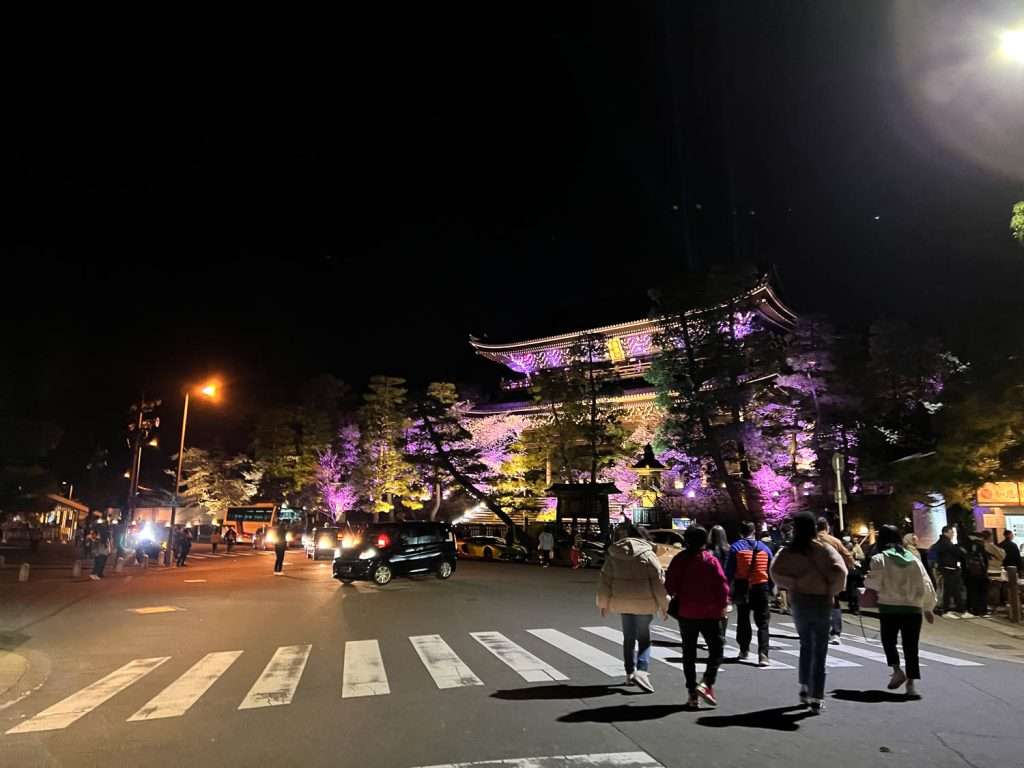
Chion-in is the headquarters of the Jodo sect of Buddhism, and was one of my favourites amongst the temples I’ve visited during my trip. The grounds of Chion-in are really big, I would suggest having at least 1-2 hours to spend here. We visited during the Spring illumination event and got a chance to go up to the balcony of the Sanmon gate, which is usually closed to visitors.
Tip: if you’re visiting for illumination event, you can get ¥100 discount by following their social media pages.
Entrance fee: Free, but charges apply for the gardens and special illumination events. Opening hours: 9am – 3.50pm, hours will differ if there are illumination events

Gion is one of the most enchanting districts in Kyoto. This historic neighbourhood is famous for its traditional architecture, teahouses; and geishas. Walking through Gion in the evening is a magical experience, as the paper lanterns and atmospheric lighting transport you back in time to old Japan.
Hanamikoji is one of the most popular streets in Gion and many flock over to catch a glimpse of a Maiko or Geisha. If you do spot one, please be respectful. Do not photograph or touch them without permission, please remember they are real human beings!
Gion is just a short walk from Chio-in, making a great area for dinner and to end of your day.
Route: Travel from Kyoto to Osaka – Osaka Castle – Dotonbori
Osaka is just a 30-minute train ride from Kyoto, but can also be done in 15-minutes via the Shinkansen and for ¥1450. If you do not have the JR Pass or don’t want to take the Shinkansen, you can also take the Hankyu Kyoto Line from Kyoto-Kawaramachi station to Osaka-Umeda Station in about 40 minutes.
Osaka Castle
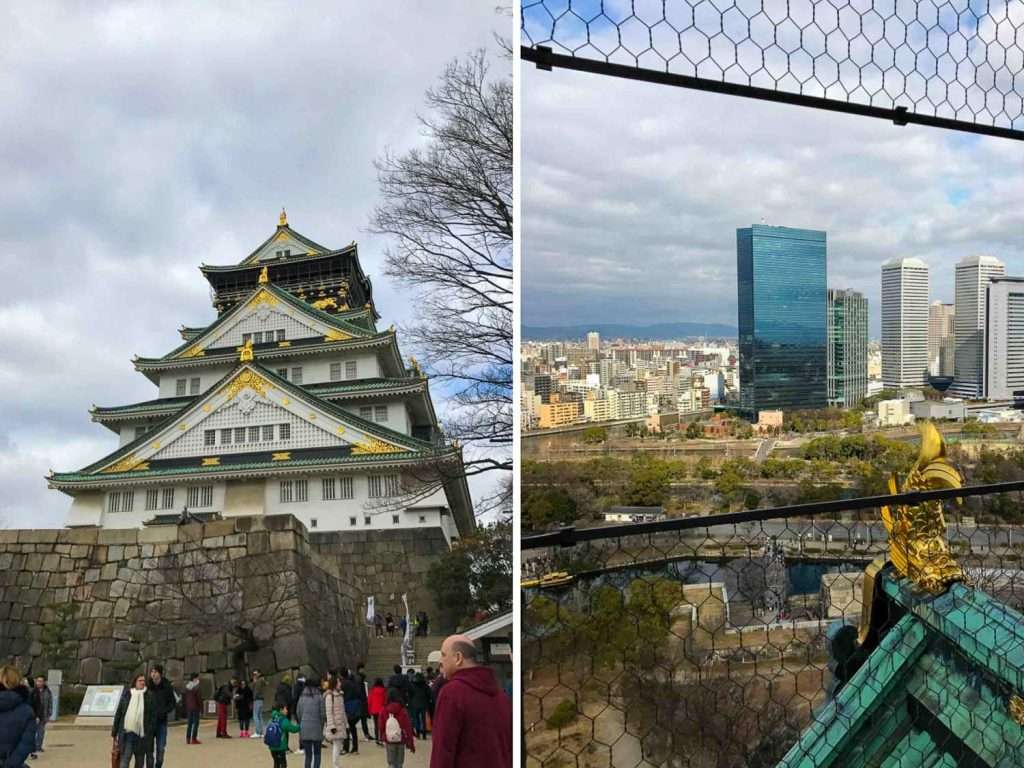
Osaka Castle is one of the most famous landmarks in Japan, and it tells the story of the city’s history. Inside the castle is a museum showcasing exhibits from the Edo Period, while the castle’s observation deck offers panoramic views of Osaka city. The entire area spans around two square kilometers and beautiful surrounding park are also well worth a visit.
Opening hours: 9am – 5pm Entrance fee: ¥1500, free for youths under 15 Address: 1-1 Osakajo, Chuo Ward, Osaka, 540-0002, Japan
Reptile Cafe Rock Star or Small Animal Cafe Rock Star
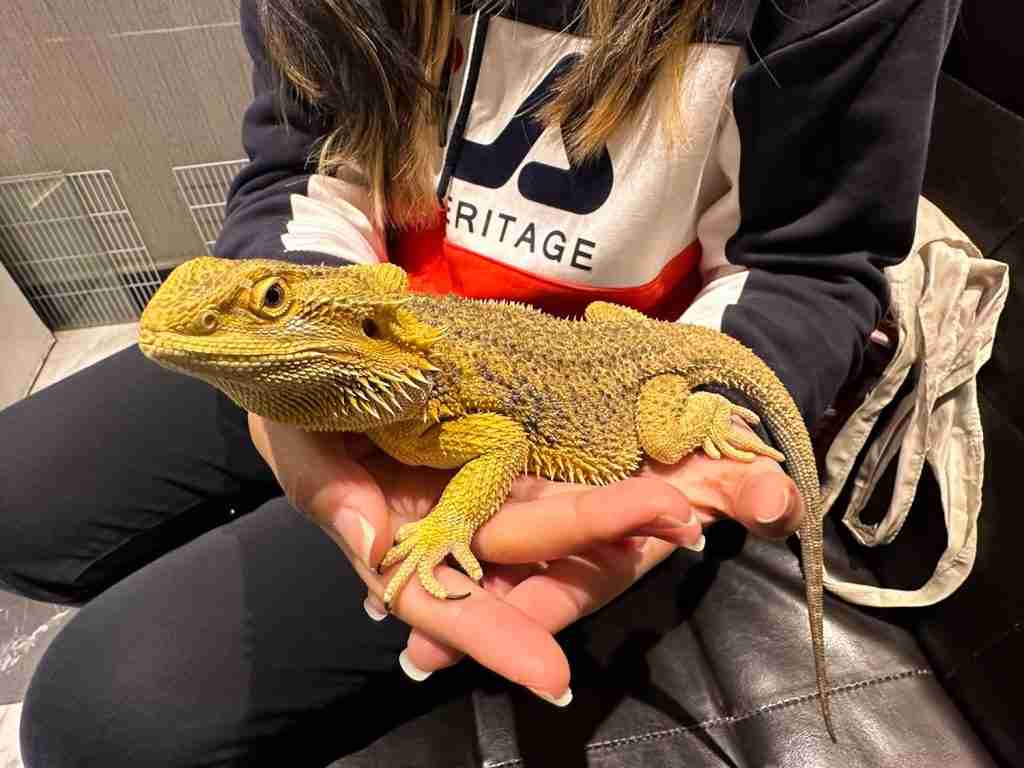
As its name suggests, Reptile Cafe Rock Star is an animal cafe where you’ll get to interact with reptiles like geckos and snakes. If reptiles are not up your alley, check out Small Animal Cafe Rock Star, where there are meerkats, ferrets and even chickens. Both cafes are ran by the same company and are located in the vicinity of each other.
Both cafes charge ¥1000 for a 2-hour entry and you’ll also have to minimally order a drink, which costs ¥1100.
Read more about both cafes: 7 Animal Cafes In Japan To Check Out
Opening hours (for both): 11am – 10pm Address (Reptile Cafe Rock Star) : 2-7-7, Naka, Namba, Naniwa District, Osaka City, Osaka Namba FK Building 3F Address (Small Animal Cafe Rock Star) : 6-7, Sennichimae, Namba, Central District, Osaka TSUJI Building 5F

End the day with a visit to Dotonbori, a vibrant area is known for its colourful signboards, particularly the famous Glico Man. Dotonbori has a variety of street food stalls serving takoyaki, okonomiyaki, and other Osakan delicacies.
Head to Dotonbori before peak dinner period as queues can get very long. The queues were mild between 3pm – 4.30pm, but on our second visit, we were there around 8 – 9pm and the queues for popular stalls were insane. But do stay around till after sunset as the Dotonbori looks beautiful lit up!

Round 1 Stadium
If you’re a fan of arcades games, you can also visit the Dontonbori Round 1 Stadium outlet. Probably one of the biggest arcades in Japan, this outlet has a ton of claw machines, game machines, karaoke and even bowling.
Opening hours (Round 1 Stadium): Open 24 hours Address (Round 1 Stadium): 1-3-1, Namba, Chuo-ku Osaka-shi, Osaka
Universal Studios Japan

Universal Studios Japan (USJ) is the main reason to visit Osaka for many. From thrilling rides like the Hollywood Dream to the enchanting world of Harry Potter, USJ has something to entertain everyone.
There are seasonal events such as anime themed attractions, be sure to check out the website for updates prior to your visit!
Express Passes, should I get them?

As we visited during the peak period, we decided to buy the Express Pass. What really irked me was that the Express Pass does not include entry into USJ and it was something you had to pay on top of the entry. USJ’s Express Pass is priced dynamically, which means visiting during high seasons like spring will cost you more. We ended up paying a total of nearly SGD 400 for our Express Pass and entry per pax.
But would I spend the money again? Absolutely.
The Express Pass saved us so much time and also gave us guaranteed entry into Super Nintendo World. If you don’t want to spend so much on the Express Pass, you can head to the park at least an hour before opening hours and RUN to Super Nintendo World once the gate opens to get a timed entry ticket. The same goes for Harry Potter World.

Once you get the timed entry tickets, RUN to the attractions you really want to play, but you will likely not be able to cover all the attractions.
Another tip would be to visit during winter. On my first visit to USJ, there was no queue for the Harry Potter attractions, mainly due to the weather. It was 5 degrees and drizzling the entire day. If you do not mind riding the coasters in the rain, this is a great opportunity for you to save on the Express Pass.
Opening hours: Typically, 8.30am – 8pm, but can vary depending on the season Entrance fee: ¥8,600 for adults, ¥5,600 for children aged 4-11, ¥7,700 for seniors 65+
When is the best time to visit Kyoto and Osaka?
Personally, I feel that autumn (September – November) is the best time as the weather is not too hot or cold. It is also not as crowded as spring. But if you’re looking for the cheapest seasons to go, it’ll definitely be during Summer or Winter. The weather will be bad, but it’ll be less crowded, which is great for popular attractions like USJ.
Related Posts

Kite.Mobi Review — Best Newcomer In The eSIM Industry?
Looking for a convenient and cost effective eSIM? Check out this comprehensive Kite.Mobi review for staying connected while travelling.

How To Take The Train From Singapore To JB – Get To JB In 5 Minutes
Get to JB in 5 minutes! Read for a comprehensive guide to taking the KTM train (Shuttle Tebrau) from Singapore to JB + money saving tip!

Gundam Factory Yokohama Guide — Your Last Chance To Visit
The Gundam Factory Yokohama is one of the most impressive attractions I’ve seen in Japan and is a must visit for all Gundam fans.
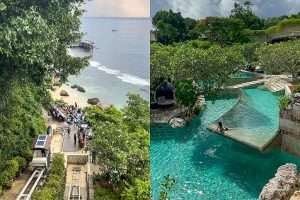
Ayana Resort Bali Review — Best Luxury Resort For Couples?
Large rooms, multiple pools, and taking a funicular to a cliffside bar with an ocean view? Let’s explore it all in this honest Ayana Resort Bali review.

Eki Stamps — Gotta Collect ’em All! It’s Free!
Like collecting things? Then collecting eki stamps might be something you would be interested in while traveling through Japan.

Holiday Inn Johor Bahru City Centre Review — Affordable Hotel By The Causeway
Looking for a convenient accommodation for your next JB trip? Holiday Inn Johor Bahru City Centre is one has one of the best locations near the causeway! Read about it in this review.

6 Best Day Trips From Munich — Castles, Alps, Medieval Towns
Explore fairytale castles, medieval towns, and alpine wonders through various day trips from Munich, all just a short journey away from the Bavarian capital.
Send Us A Message

The More I Travel
Travel Curator and Content Creation
What To Do In Osaka and Kyoto? The Amazing 7-Day Itinerary

Osaka is one of the most popular cities in Japan to visit for its food and sites. Kyoto on the other hand, carries more of a cultural side of Japan for your visit. If you are looking to spend about a week in the Kansai region, I suggest to do both Osaka and Kyoto together. This itinerary is highly recommended by locals. If you have a few more days to spare, consider adding Nara into your journey. Another must-visit is Universal Studios Japan, which is also the first theme park in Asia!
Day 1: Osaka
Flying into Kansai International Airport is your best option as it serves major airlines and their networks around the world. It is also one of the busiest airports in Japan alongside Narita and Haneda airport located in Tokyo. I would recommend to spend a minimum of 2 full days (excluding the day you arrive) in Osaka in order to have enough time to explore this amazing city.
Tip: Plan your journey well as it will save you significant transportation costs. If you know that you will rely quite a bit on the JR line or metro, you should purchase the day passes from the first day! There are various JR pass options so pick the one that best suits your itinerary.

Day 2 and 3: Osaka
Head to the Central Business District to check out the famous Osaka Castle. Here you can find a good mix of tourists and locals visiting the castle. I chanced upon a choir of adorable Japanese school kids singing right in front of the castle- an awesome performance to watch!

You can consider visiting both the Osaka Castle and Shinsaibashi together because of their close proximity to one another. In short, Shinsaibashi is Osaka’s version of Singapore City’s Orchard Road. You can find plenty of fashion shops and themed cafes. Fans of Pokemon, rejoice! There is a Pokemon cafe right here and a Pokemon Center at Daimaru Umeda department store near the Osaka main station.

Pokemon Center @ Daimaru Umeda and Pokemon Cafe at Shinsaibashi
Foods to try: Okonomiyaki @ Kazenomachi (2-9 Tamatsukuri Motomachi Tennoji-ku Osaka)

Fresh oysters and ingredients cooked right at the table

Food to try around Shinsaibashi area: Ichiran Ramen, Omurice

Cubicle eating concept @ Ichiran Ramen

You can’t leave Osaka without taking a visit to Osaka Aquarium . The aquarium houses a whale shark, so you can just imagine the size of the tank! Located right next to the aquarium is the Tempozan Market where you can try out a wide variety of Japanese cuisine. The Osaka Takoyaki can be tasted at the traditional Aizuya store. If you are craving for fresh sashimi or sashimi bowls, head to Maguro-Ya Ten to get your fix.

Feel the soft skin on the backs of stingrays at the petting area, perfect for kids

Check out the feeding times at Osaka Aquarium, you will not be disappointed by the well-trained sea lions

Fresh Maguro (tuna) on rice

Super fresh sashimi on rice

Osaka Takoyaki @ Aizuya
Day 4: Universal Studios Japan
Check out everything about Universal Studios Japan in another article here .

You can consider the amazing USJ and JR pass bundle
Day 5: Kyoto
There are a variety of ways to get to Kyoto, the main one being the JR line. However, if you are staying near to the metro in Osaka and in Kyoto, you can consider the Keihan Main Line which also runs through to Kyoto. One of my top favourites at Kyoto is Nishiki Market . There are plenty of delicious foods to choose from, so much that you probably wish for two stomachs.

Consider getting the Kyoto-Osaka sightseeing pass if you are traveling to these two cities

Japanese corndog

Kyoto Takoyaki, scroll up and notice the difference between this and the Osaka Takoyaki in terms of size and toppings

Guess the size of this oyster! Check out the answer two images down below

Food to try: Kichi Kichi Omurice ( FYI: book in advance!)
Day 6: Kyoto
No visit to Kyoto is complete without visiting Arashiyama Bamboo Forest . This picturesque forest gets super crowded starting from 10am onwards. I recommend to reach there before 9am so that you can snap your insta-worthy shots.

Our visit was during autumn and we witnessed the explosion of colors!

Came across this street store selling raw egg on rice

Man, it was so good!

Head to Fushimi Inari Shrine in the afternoon for a hike. Here, you get to walk past thousands of Torii gates to the top of Mount Inari.

Legs too tired? You can hire a trishaw too!

This is what happens if you head to the shrine during peak hours

If you are looking to check out the geisha scene in Kyoto, head to Gion for a glimpse of what life was like here centuries ago. There are plenty of kimino rental shops over there as well to immerse in the Japanese culture.

A taste of old Japan at Gion
Day 7: Osaka/Kyoto/Nara
There is an option to extend the trip in Kyoto or head to Nara for the bowing deers.
Otherwise, head back to Osaka to catch your flight!
If there’s anything I missed out or you have something awesome to share, free feel to comment below!
Share this:
- Click to share on Facebook (Opens in new window)
- Click to share on Twitter (Opens in new window)
- Click to share on Tumblr (Opens in new window)
- Click to share on Pinterest (Opens in new window)
- Click to share on Reddit (Opens in new window)
- Click to email a link to a friend (Opens in new window)
Leave a Reply Cancel reply
Discover more from the more i travel.
Subscribe now to keep reading and get access to the full archive.
Type your email…
Continue reading
Adventures in Destinations Unknown
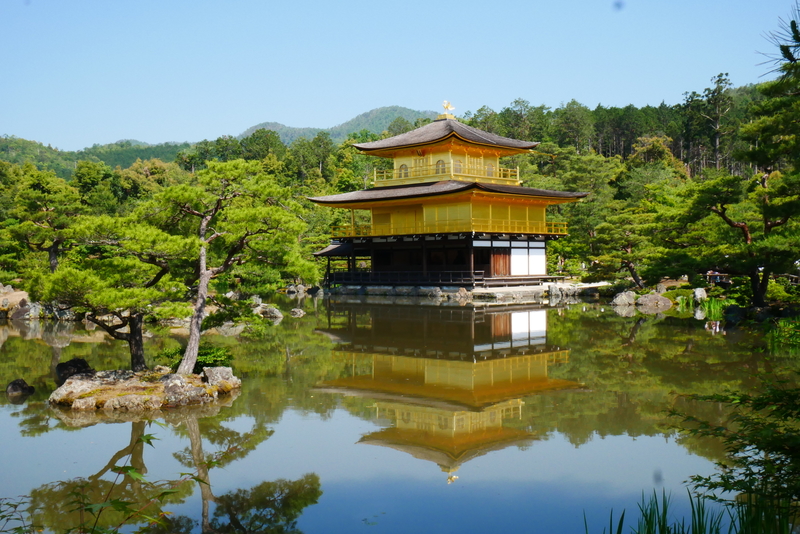
Three Day Kyoto and Osaka Itinerary
Last modified on March 3rd, 2023 at 17:46
Japan’s Kansai Region represents the country in a nutshell.
Home to atmospheric temples and colorful flashing billboards, the beautiful region on Honshu Island contains both the modern comforts and culinary delights of urban Japan, as well as the nostalgic charm of the country’s hinterland.
Kansai’s two largest cities—Osaka and Kyoto—offer the perfect introduction to Japan. Together, the cities reveal a country of quirks and contrasts, while showcasing the rich history and modern impulses that contribute to Japan’s layered and widespread appeal.
Though I only had a short weekend to spend in Japan, my three day Kyoto and Osaka itinerary revealed some of the country’s most spectacular highlights and caused me to fall in love, once again, with the Land of the Rising Sun.
Table of Contents
Our Three Day Japan Itinerary
Dan and I spent three days in Japan, excluding travel time. Due to the brevity of our visit, we chose to skip Tokyo and focused our itinerary on Kyoto and Osaka instead.
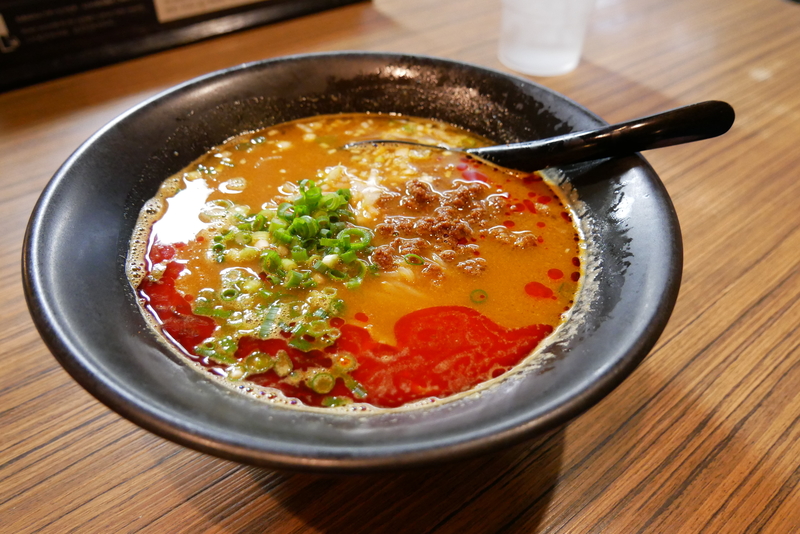
I’d visited Kyoto once before, during a high school exchange in 2007. Since my exchange, I’d hoped to return to the city to revisit its temple-laden streets and peel back its history.
Yet travel plans always seemed to bring me elsewhere. It wasn’t until twelve years later, over a long holiday weekend in May, that I finally took the opportunity to return to Kyoto with Dan.
Dan and I split our three day Japan itinerary between Kyoto and Osaka—spending two days temple-hopping in the former, and a day indulging in the culinary delicacies of the latter.
While in Kyoto, we stayed at the Nagomi Ryokan-Yuu in order to experience a traditional Japanese-style guesthouse. The ryokan was centrally located, clean, affordable and within spitting distance of the delectable Ginjo Ramen Kubota.
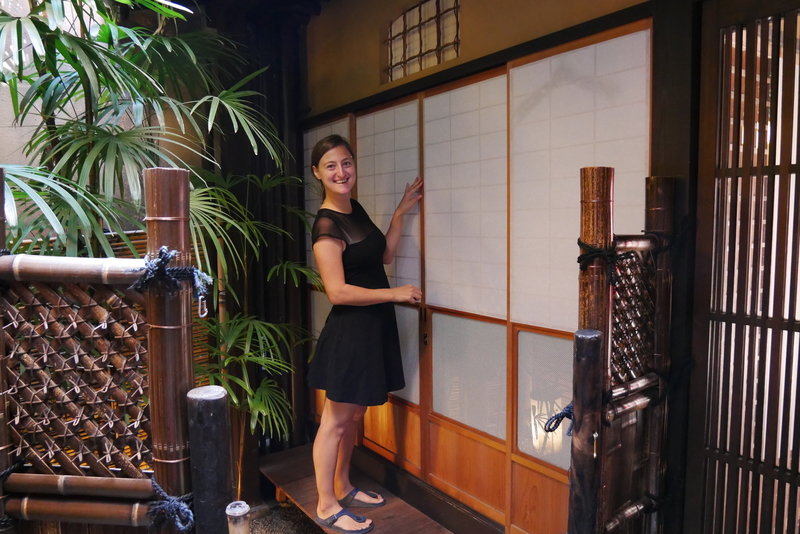
For the last day of our whirlwind itinerary, we stayed at the Yamatoya Honten Ryokan, near Osaka’s buzzing Dotombori district. It, too, contained everything we needed for a relaxing and enjoyable stay.
Kyoto Itinerary Day 1: Highlights of Japan’s Cultural Capital
There is no doubt that Kyoto is Japan’s cultural capital and spiritual heart. It is a city in which geisha shuffle between appointments, prayer chants resonate through peaceful gardens, and picturesque streets hearken back to the days of old.
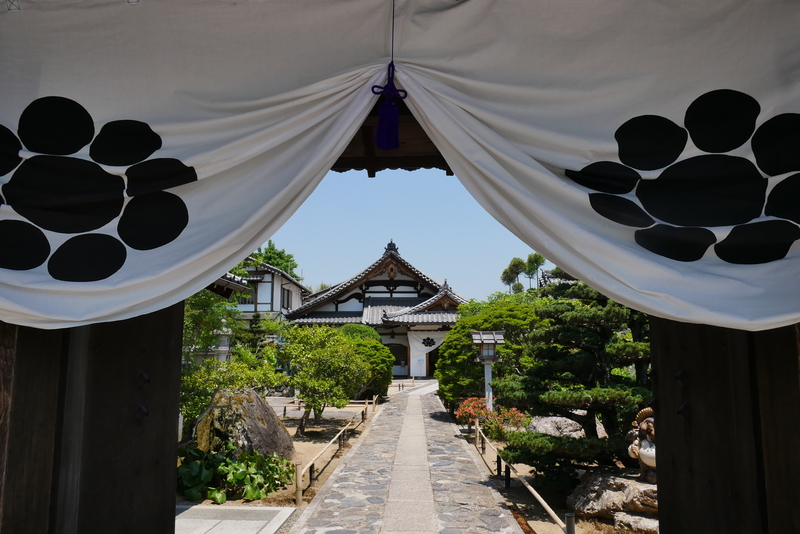
While the rest of Japan has adopted modernity with abandon, Kyoto still celebrates its heritage and clings to its past. The elegant imperial city is one of the most beautiful in Asia. It houses an unparalleled wealth of monuments, including a whopping 17 UNESCO World Heritage Sites and many of Japan’s most beloved icons.
The Golden Pavilion
The Kinkaku-Ji Temple (also known as the Golden Temple or Golden Pavilion) is the symbol of Kyoto and one of the most iconic images of Japan. It is often the highlight of Kyoto tourist itineraries.
The Golden Pavilion lies in the northwest corner of Kyoto, tucked amongst a verdant forest. The main hall of the temple complex, covered in brilliant gold leaf, casts its shimmering reflection onto an adjacent pond. At once splendid in its opulence and simple in its design, the pretty pavilion wows visitors with its delicacy
Since the Golden Pavilion is one of Kyoto’s most popular temples, I wanted to arrive early to beat the crowds. From the Kyoto Station, Dan and I hopped on bus #205 and arrived shortly after the temple’s opening time. When we arrived, however, the line already wrapped down the street. Though we were early, we realized that visiting the temple crowd-free would be an impossible feat.
Reluctantly, we joined the end of the queue and waited to pay the Y400 entrance fee.

The temple was certainly worth the wait.
The Golden Pavilion is simply stunning. Not even the crowds of tourists—numbering in the thousands—could detract from its shimmering brilliance.
The Arashiyama Bamboo Grove
Arashiyama is one of Kyoto’s most popular sightseeing districts. Filled with temples and shrines and a popular bamboo forest, the pretty district in western Kyoto merits a half day of exploration.
When I visited Kyoto in 2007, I did not stop in Arashiyama. In fact, I didn’t even know the place existed. Yet in recent years, I began seeing images of the swaying bamboo stalks everywhere—in Instagram feeds, in travel brochures and even in advertisements.
The Arashiyama Bamboo Grove has exploded in popularity over the recent years thanks, in large part, to social media.
And while I try not to let Instagram trends influence where I choose to travel, I dragged Dan to Arashiyama in order to see what all the fuss was about.
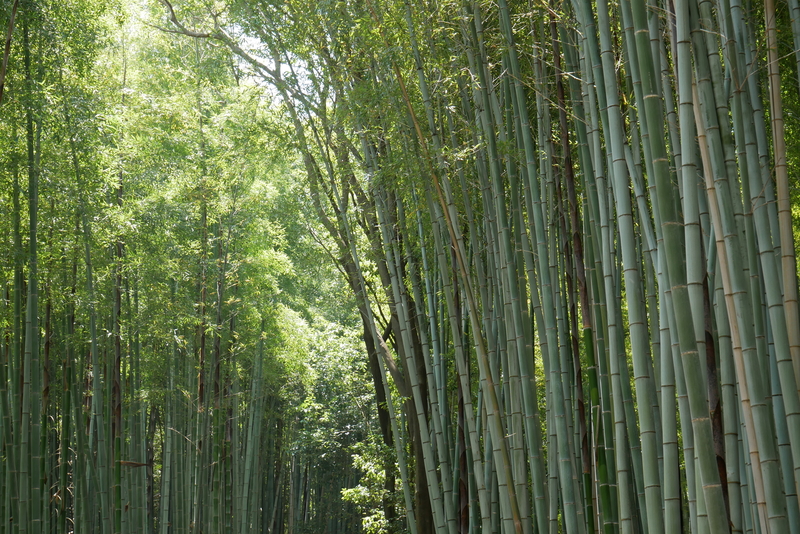
Like the Golden Pavilion, Arashiyama is worthy of its renown. The grove’s graceful bamboo pillars stretch toward the sky, rustling back and forth in the breeze and casting patterns of dappled light on the area’s pathways.
If I could go back, however, I would have stopped at Arashiyama early in the morning, en-route to the Golden Pavilion. The Arashiyama Bamboo Grove is best explored at dawn, before throngs of visitors inundate the forest with their selfie sticks and curated poses.
While Arashiyama’s bamboo forest is undoubtedly the most popular thing to see in the area, it certainly isn’t the only notable destination in Arashiyama. One could spend an entire day in the area—exploring its maze of temples, floating down the Katsura River by boat, and watching life unfold from the Togetsukyo Bridge.
The Nijo Castle
The Nijo Castle dominates a large part of Northwest Kyoto. Built in 1603 as the official residence of the city’s Tokugawa shogun, the imposing structure was meant to demonstrate prestige.
The most noteworthy attraction on the Nijo Castle grounds is the spectacular Karamon Gate. Intricately adorned in golden motifs, the wooden gate is one of Kyoto’s finest examples of artisanship.
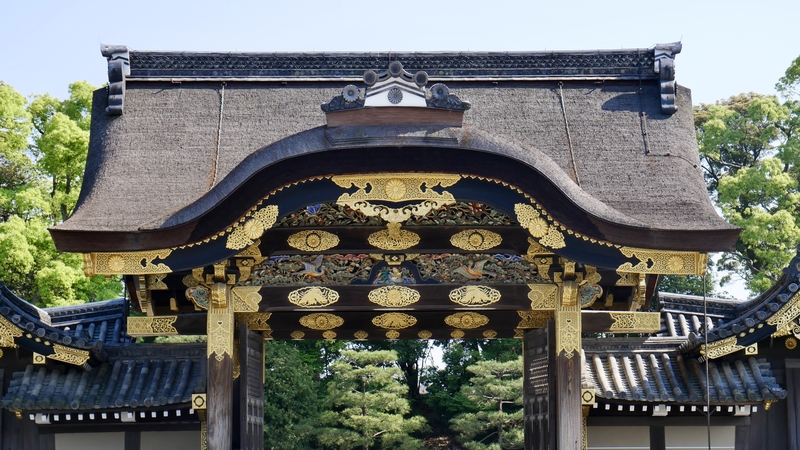
The Nijo Castle complex is divided into five principal buildings. The fourth chamber contains spectacular golden screen paintings that showcase the delicate sophistication of Japanese art.
Photography of the screen paintings is, unfortunately, prohibited.
The Nishiki Market
After soaking in three of Kyoto’s most important sites and completely skipping out on lunch, Dan and I were ravenous. We decided to take a bus from the Nijo Castle to the Nishiki Market for dinner.
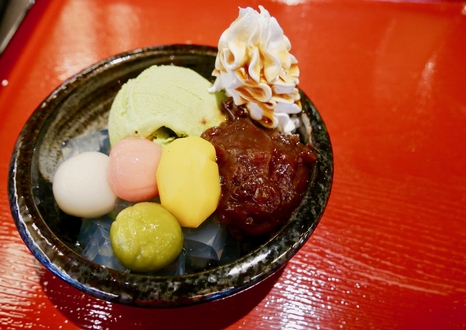
The Nishiki Market—also known as Kyoto’s Kitchen— is a favorite spot for locals and tourists alike. Filled with souvenir stalls, street food, cafes, restaurants and matcha shops, the sprawling covered market is Kyoto’s top foodie hotspot and a great place to sample the city’s local delicacies.
Kyoto Day 2: A Taste of Traditional Japan
On the following day, Dan and I continued our quest to discover Kyoto’s most beautiful religious monuments. We began our day with a hike around the grounds of the sprawling Fushimi Inari Shrine. In the afternoon, we explored the traditional streets and alleyways that serve as a peephole into Kyoto’s past.
The Fushimi Inari Shrine
With a seemingly endless string of orange torii gates spread across a thickly wooded mountainside, the Fushimi Inari Shrine represents a one-of-a-kind temple-going experience. The shrine is, quite simply, one of the most impressive places to visit in Japan and a must-see staple of any Kyoto itinerary.
And better yet, the Fushimi Inari Shrine doesn’t cost any money to visit.
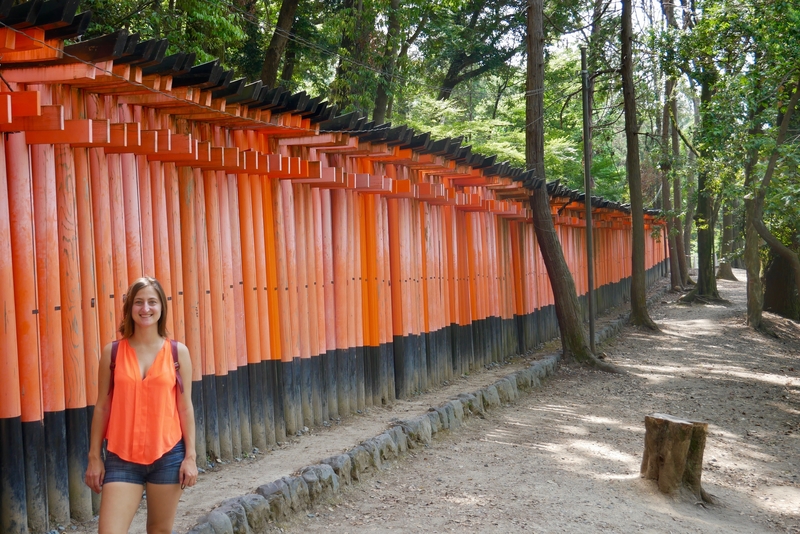
The entire religious complex sprawls across the wooded slopes of Inari Mountain. A path wanders 4 kilometers up the mountain, sheltered by thousands of vermillion archways. It is a beautiful shaded area that consists of dozens of trails, alters and small sub-shrines.
We spent a few hours exploring Fushimi Inari during the morning of our second day in Kyoto. And, had we not decided to proceed to some of Kyoto’s other must-see attractions, we could have probably spent the whole day hiking around Inari’s orange-speckled slopes.
Kyoto’s Gion District
From the Fushimi Inari Shrine, we took the Keihan Main Line to Gion. There, we turned back the clock and found ourselves meandering down the narrow lanes of Medieval Japan.
Gion is one of Kyoto’s most beautiful neighborhoods. The picturesque district dates back to the Middle Ages. It is one of the top places to visit in Kyoto and, by far, the most famous geisha district in Japan.
In Gion, it is not uncommon to see geisha shuffling along narrow streets, flitting to and from their latest appointments.
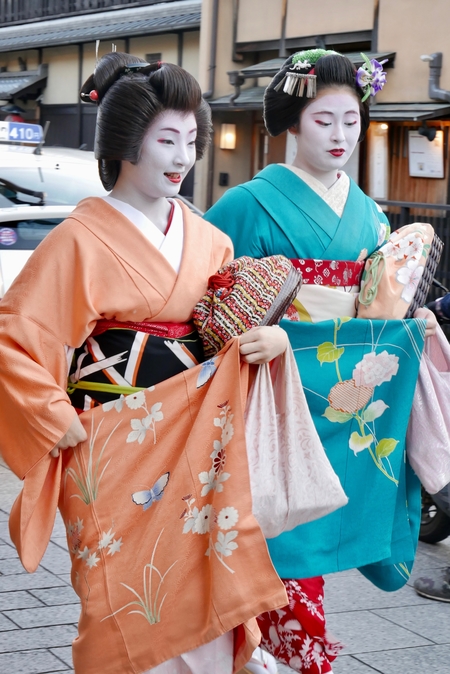
Packed with bars, restaurants and traditional teahouses, Gion lies between the Nishiki Market and Yasaka Pagoda. Some of Gion’s most picturesque strolling spots include Hanami Lane, Shijo Dori and the Shirakawa Canal.
A visit to the area is best combined with a walk through the nearby Higashiyama District between the Yasaka Shrine and Kiyomizu-dera Temple.
The Higashiyama District
The Higashiyama District lies along the lower slopes of Kyoto’s eastern mountains. Like nearby Gion, it is one of the city’s best preserved historic districts.
Small shops, cafes and restaurants line Higashiyama’s pretty streets. Its businesses retain their centuries-old designs and entice customers with delectable sweets, local handicrafts and Japanese curiosities.
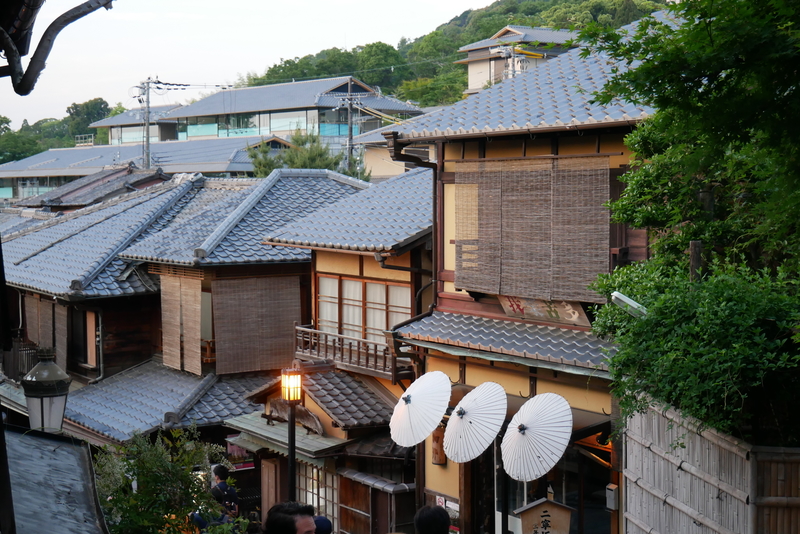
The Yasaka Pagoda is a defining landmark that lies between Gion and the Higashiyama District. From the pagoda, a well-preserved walk leads to the sprawling Maruyama Park in one direction, and the iconic Kiyomizu-Dera temple in the other.
The Kiyomizu-Dera Temple
A buzzing hive of activity perched on a hill overlooking Kyoto, Kiyomizu-Dera is one of the city’s most important temples. As with the impressive Orthodox cathedral in Karakol, Kyrgyzstan , the temple was built without the use of a single nail.
Kiyomizu-Dera’s main hall contains a verandah that juts out over the hillside. Below its main hall is a fountain from which visitors can drink water and pray for longevity and good fortune.
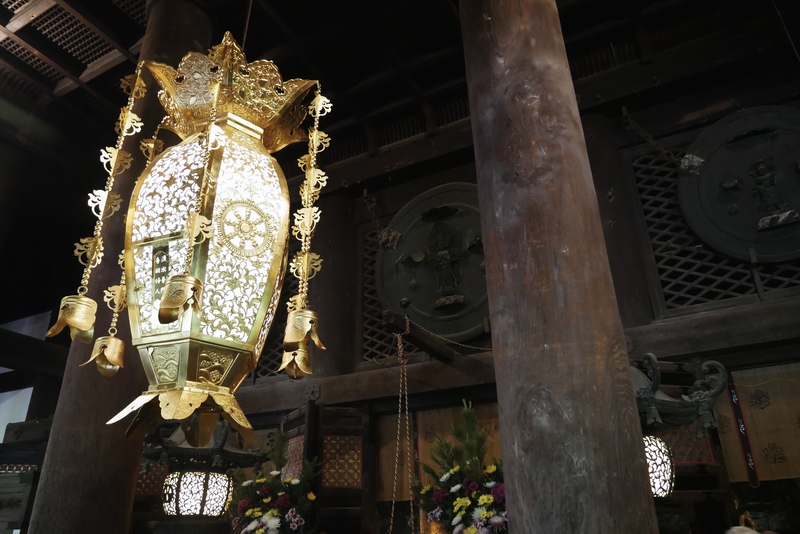
I distinctly remember visiting Kiyomizu-Dera twelve years ago and soaking in the aerial views of Kyoto from its reinforced wooden balcony.
When I visited the temple on my most recent trip to Kyoto, however, the main temple structure was unfortunately wrapped in scaffolding.
Nonetheless, visiting Kiyomizu-Dera was well worth the Y300 entrance fee.
Japan Itinerary Day 3: Exploring Osaka
Osaka is the second largest city in Japan. While it doesn’t have the same high concentration of UNESCO sites and cultural gems that can be found in Kyoto, the cosmopolitan city is well known for its nightlife, business districts and incredible street food. Osaka is Japan’s food capital writ large, boasting an overwhelming number of mouthwatering culinary delicacies.
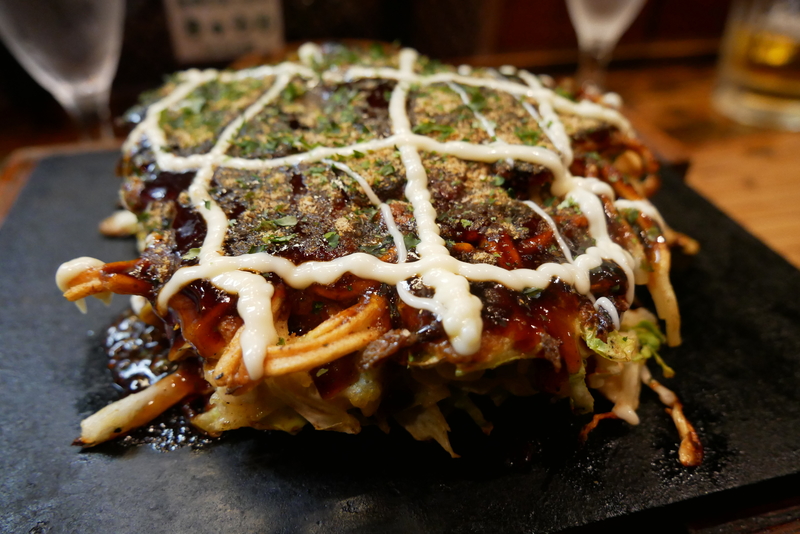
Osaka is not pretty in the conventional sense, but it packs more color than most cities—exhibiting vibrant pedestrian walkways and concrete buildings blanketed in flashy neon signage.
As with Kyoto, I could have spent the entirety of my Japan vacation in Osaka and still found plentiful things to do and foods to eat. With only one day, however, I decided to divide my time between the colorful foodie paradise of Dotombori, and the magnificent Osaka Castle in the Chuo-Ku District.
The Osaka Castle
The Osaka Castle has become a symbol of Japan. It is, without a doubt, the top place to visit in Osaka.
After unifying Japan in the late 1500s, General Toyotomi Hideyoshi built this grand castle alongside 100,000 workers. And though the present structure is a 1931 concrete reconstruction of the original, the current castle is nonetheless an impressive site to behold.
The five-story building sits in the middle of a large park and looms dramatically over Osaka’s surrounding cityscape.
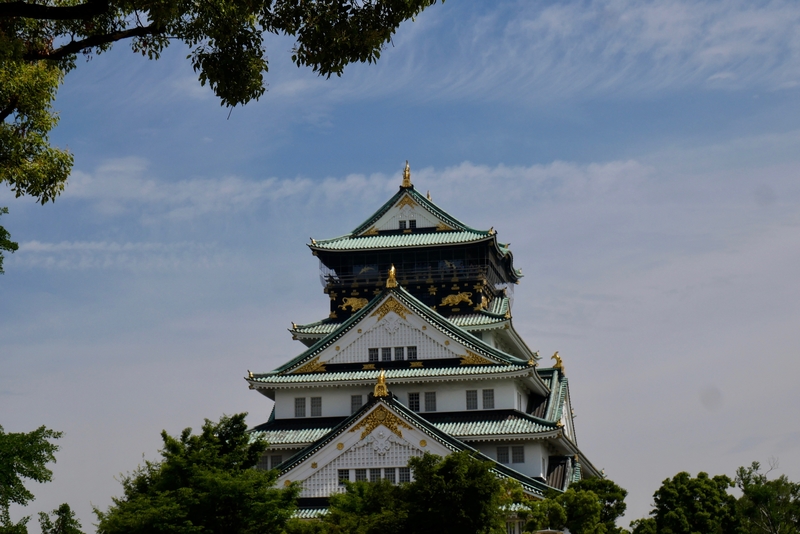
The entire Osaka Castle Park covers about two square kilometers in the northern part of the city. The park contains sports facilities and vast areas of green space. During the springtime, it is one of Osaka’s most popular places for hanami-viewing .
Street Food and Neon Lights in Dotombori
Dan and I ended our Kyoto and Osaka itinerary with a stroll through the dynamic Dotombori District.
Highly photogenic Dotombori contains a large concentration of Osaka’s foodie hotspots. It is a lively area, made all the more atmospheric at night, when it is illuminated in flashing neon signs that resemble parts of Tokyo, Hong Kong , New York and Seoul.
A 400-year-old canal cuts through the flashy district. At night, illuminated billboards (including that of the famous Gilco Running Man) emit a show of lights that glitter off its waters.
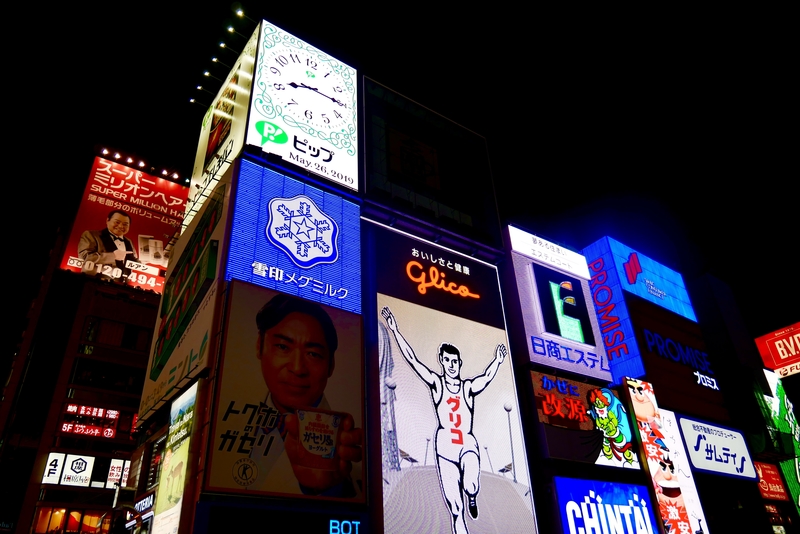
Heeding the advice of multiple blogs and travel guides, we explored the district with empty stomachs and put our taste buds to work. We ate okonomiyaki along one of Dotombori’s hole-in-the-wall side streets, sampled takoyaki from kukuru and snacked on an assortment of Osaka-style skewers at Kushikatsu Gokakuya.
I wish I could have eaten without getting full, because the food options in Osaka kept my mouth watering long after I’d stuffed my stomach to the brim.
My three day Kyoto and Osaka itinerary allowed me to experience some of Japan’s best offerings in limited time. From iconic landmarks and world heritage sites to tantalizing food and vibrant culture, Kansai’s two largest cities gave me insight into the contrasting forces at play in this modern, yet deeply traditional, country.
And in doing so, they all but convinced me to begin planning my return trip to the area.
___________________________
Additional Kyoto and Osaka Itinerary Tips
- There are multiple ways to travel between Kyoto and Osaka. The shinkansen (Y1420) is the fastest option, taking approximately 15 minutes. Other options include the JR Train (Y560, 30 minutes) and a bus that travels between Kyoto Station and Osaka’s Universal City Station (Y900).
- Visiting Kyoto and Osaka is best in the Spring and Fall, when weather is pleasant and mild. Summers in Japan can get unbearably hot, while winters tend to be quite cold.
_______________________________
Like this Osaka and Kyoto Itinerary? Pin it!
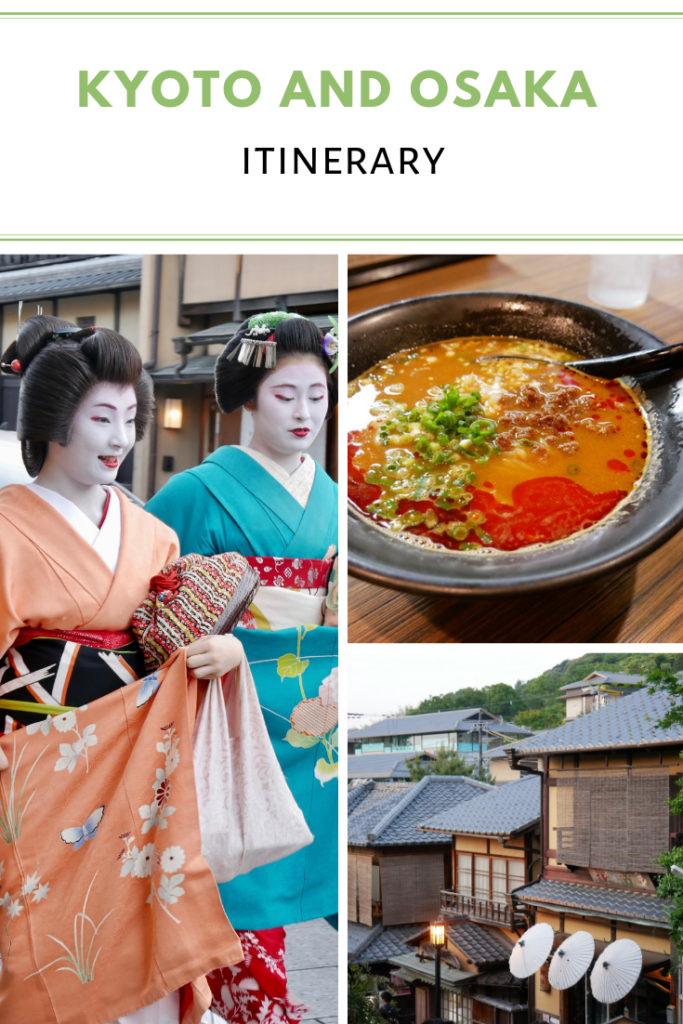
Inside Kyoto
A Kyoto Travel Guide
Your Osaka Travel Guide
If you’re looking for information on visiting Osaka, see our sister site InsideOsaka.com for a comprehensive travel guide to the city – what to eat, what to see and do, where to stay and how to get there.

At InsideOsaka.com you’ll find a comprehensive travel guide for Osaka in the same format as this website covers Kyoto. There’s also our other city guide website, TrulyTokyo.com
Osaka Itineraries Make the most of your time in Osaka with my carefully planned itineraries for trips from 1 to 5 days.
Osaka Restaurants Here is our list of the best restaurants in Osaka, divided by type of cuisine, with location and price range too.
Osaka Hotels Osaka has great hotels in all budget classes. Here are the best Osaka hotels in each budget class, all personally inspected.
Osaka Ryokan Osaka has few true ryokan (traditional Japanese inns), so here are our Kyoto and Nara picks.
See also our Japan itineraries that feature Osaka:
Osaka – Kyoto 1-Week Itinerary If you’ve got one week in Japan and don’t want to travel much, an Osaka-Kyoto itinerary is a great way to see both modern and traditional Japan. Here’s how to do it.
Osaka-Kyoto-Tokyo 10-Day Itinerary Ten days is the perfect amount of time to spend in Japan. Here’s a great Tokyo/Kyoto/Osaka itinerary that will allow you to see the best places efficiently and easily.
Kyoto Vacation Checklist
- For all the essentials in a brief overview, see my First Time In Kyoto guide
- Check Kyoto accommodation availability on Booking.com and Agoda.com - often you can book with no upfront payment and free cancellation
- You can buy shinkansen (bullet train) tickets online from Klook - popular routes include Tokyo to Kyoto , Kyoto to Osaka and Kyoto to Tokyo
- Need tips on where to stay? See my one page guide Where To Stay In Kyoto
- See my comprehensive Packing List For Japan
- Buy a data-only SIM card online for collection when you arrive at Kansai International Airport (for Osaka and Kyoto) or Tokyo's Narita Airport . Or rent an unlimited data pocket wifi router
- Compare Japan flight prices and timings to find the best deals
- If you're making frequent train journeys during your visit, you might save money with Japan Rail Pass – see if it's worth it for you
- A prepaid Suica card makes travelling around Kyoto easy – here's how
- World Nomads offers simple and flexible travel insurance. Buy at home or while traveling and claim online from anywhere in the world
Kyoto District Map

- Central Kyoto
- Northwest Kyoto
- Northern Higashiyama
- Southern Higashiyama
- Downtown Kyoto
- Kyoto Station Area
- South East Kyoto
Disclosure: InsideKyoto.com is a participant in the Amazon Services LLC Associates Program, an affiliate advertising program designed to provide a means for sites to earn advertising fees by advertising and linking to amazon.com and amazon.co.uk. World Nomads provides travel insurance for travellers in over 100 countries. As an affiliate, we receive a fee when you get a quote from World Nomads using this link. We do not represent World Nomads. This is information only and not a recommendation to buy travel insurance.

- 2 Weeks for Couple
- 2 Weeks for Family
- Thailand Lantern Festival
- Indonesia(Bali)
- South Korea
- China (HK, Taiwan)
- Itinerary Ideas
- Asia Highlights Travel Reviews
- Thailand Travel Reviews
- Vietnam Travel Reviews
- Cambodia Travel Reviews
- Japan Travel Reviews
- Myanmar Travel Reviews
- China Travel Reviews

Kyoto vs Osaka: Which is Better to Visit in One Week in Japan?
If you are planning to travel Japan for one week, and Tokyo is definitely on your list, then which city should you visit for the rest of the time? Kyoto or Osaka?
- If you're keen on the most traditional aspects of Japan, Kyoto comes to the forefront. Kyoto is the ancient capital of Japan and has a history of over 1,000 years. With a great number of old shrines and temples remaining, its unique Geisha culture, classical tea ceremonies…, it's a historical haven!
- If you're more interested in modern and vibrant highlights of a trade city, Osaka wins the contest. Osaka was an ancient transport hub and is now the second-largest bustling commercial city in Japan. Its lively downtown, modern skyscrapers, Universal Studios, and Osaka Aquarium are popular attractions for families or couples.
Still hard to make a choice? You could visit both in one week, after Tokyo, with 3 days in Kyoto and 1 day in Osaka. The Shinkansen (bullet train) takes less than 30 minutes between Kyoto and Osaka, and it is quite convenient and doable.
- Top Experiences: Kyoto vs Osaka
- Accommodation: Kyoto vs Osaka
- Food: Kyoto vs Osaka
Transport: Kyoto vs Osaka — Ease of Getting Around
Top experiences: kyoto vs osaka — tradition vs progress.
Both Kyoto and Osaka have many high-quality attractions and interesting things to do.
Top Things to Do in Kyoto
Kyoto is an amazing city featuring shrines, geishas, ryokans (traditional inns), tea ceremonies... It's a city worth visiting at a slow pace.
Stay at a ryokan to experience traditional Japanese accommodation.
See geishas in Gion District and watch them performance or have an afternoon tea with them.
Try on Japanese clothing: kimono wearing is perfect for couples and families with kids.
Feed the friendly deer in Nara.
Experience a traditional tea ceremony at a tea house.
Go to the Samurai Museum and try on the armor for a samurai photo.
Sample a local variety of sake at a brewery.
Top Things to Do in Osaka
In Osaka, the bustling trade city, you can feel a friendly atmosphere and authentic Japanese style.
Visit historic Osaka Castle, the center of Japanese unity in the 16th century.
Taste authentic street food at lively Dotonbori.
Enjoy the bustling night views from Umeda Sky Building.
Admire famed Ukiyo-e artwork at Kamigata Ukiyo-e Museum, and have the chance to make your own woodblock print.
Make cup noodles with your kids at the Cup Noodle Museum.
Enjoy family fun at Universal Studios or Osaka Aquarium Kaiyukan.
Discover real reviews of Highlights Travel Family 's best-rated service across trusted platforms.
Accommodation: Kyoto vs Osaka — Traditional Japanese Inns vs Luxury Modern Hotels
Service in Japan is well-known around the world for being attentive and courteous. Whether you stay in a star-rated hotel or a ryokan in Japan, you can enjoy excellent service.
Staying in a ryokan is a worthwhile thing to do in Japan. Kyoto is the best place for you to experience a traditional Japanese-style inn with your family. In a ryokan you can sleep on a tatami bed, try on yukata robes, and sample a high-class kaiseki feast. Some ryokans also have onsens (hot springs), which are simply the perfect place to enjoy a relaxing family time.
However, a good ryokan easily becomes fully-booked, we recommend booking at least 6 months in advance. Contact us and we can arrange a ryokan for you according to your preferences.
You enjoy 100% refund of any payments made to Asia Highlights prior to 3 weeks before departure ( detail⇒ ).
Osaka offers a range of modern choices, from 5-star luxury hotels to 3-star affordable hotels. No matter what hotel you choose, you can enjoy spotlessly-clean accommodation, comfortable beds, and perfect service.
We suggest you to stay at a hotel near a station or favorite attraction so that you can get around easily.
Both cities are quite family-friendly destinations, you can learn more about How to Plan an Incredible Family Trip to Japan >>>
Food: Kyoto vs Osaka — Kaiseki vs Street Snacks
Japanese cuisine is famous all over the world — sushi, ramen, tempura, etc. Many people come to Japan just to eat authentic Japanese food.
More than other cities, food in Kyoto reflects the exquisiteness of Japanese food.
- Kaiseki generally uses seasonal ingredients. This traditional feast has small portions and is well-displayed. Kaiseki is a famous high-class cuisine that's elegant and luxurious. Experiencing the pinnacle of classical Japanese food culture through Kaiseki promises to be a fond memory of your trip.
- Tofu soup (yu-dofu) is a typical food of Kyoto. It is mild in taste with kelp being the main additional ingredient, but as such you can really taste the sweetness of the tofu. You could add a little soy sauce or use a dipping sauce to add flavor.
- Matcha: Don't miss matcha tea in Uji in Kyoto, because it is the famous birthplace of matcha. You can also enjoy a variety of rich matcha desserts there, like ice cream, cakes, and jelly.
On the streets of Osaka, you can find many delicious and affordable specialty snacks. Dotonbori is the cuisine center of Osaka, where you can satisfy your taste buds.
- Okonomiyaki (Osaka yaki) is a Japanese vegetable pancake with vegetables, sliced pork, seafood, and seasonings grilled on a plate. Also known as Japanese-style pizza, it's so tasty that you should definitely try it when you in Osaka.
- Takoyaki (octopus dumplings): Octopus tentacles and vegetables are mixed in a batter and baked together to form spheres. Mayonnaise is often used to add flavor while eating. It's not only popular in Osaka, but also all over Japan … even around the world.
Japan has a very developed transportation network. The Shinkansen (bullet train network) is a well-known travel highlight, which most travelers want to try when they go to Japan. Whether you're in Kyoto or Osaka, it's a convenient way to get to the attractions or nearby places you want to visit.
Kansai International Airport, Japan's third busiest, is located in Osaka. You could spend the last half a day or day in Osaka and then depart Japan from Kansai. Of course, it's also easy to get to Osaka's airport from Kyoto: it's only 75 minutes away.
Why Asia Highlights (10,000+ reviews & 98.8% 5-star rating)
- Save Your Time:
- Less research, more enjoyment!
- Real-time 1V1 expert planning
- Maximize Your Flexibility:
- Personal local guide and ride
- Explore at your own pace
- Celebrate Your Journeys:
- Specially-crafted family adventures
- Celebrate milestones with style!
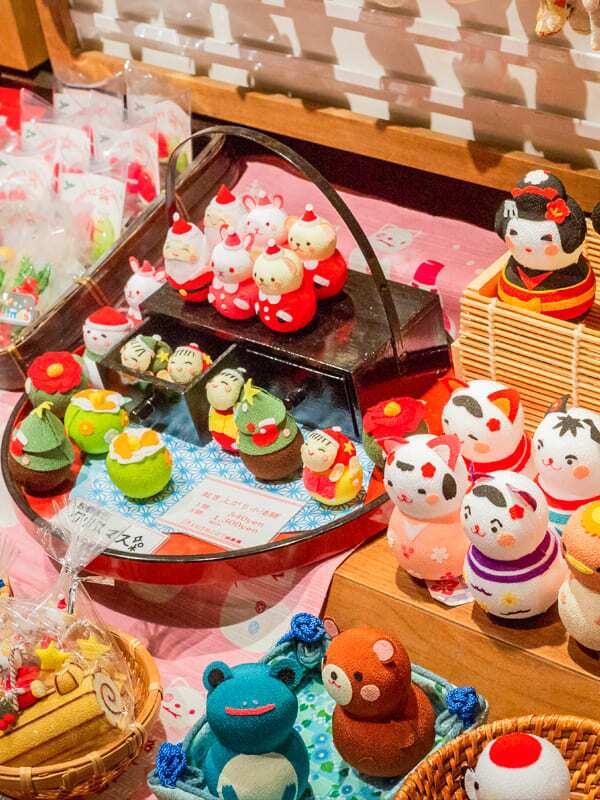
- 7-Day Japan Cherry Blossom Tour 2025: Essential Springtime Mini-Group Tour
- 7-Day Tokyo, Kyoto and Osaka Tour
- 8-Day Tokyo, Hakone, Kyoto, Hiroshima and Osaka Tour
- 9-Day Japan Highlights Tour
- 10-Day Japan Cherry Blossom Spring 2025 Mini-Group Tour
- 10-Day Tokyo, Yokohama, Hakone, Kyoto, Nara and Osaka Tour
- 11-Day Traditional Japan Tour
- 12-Day Classic Japan Tour
- 12-Day Tokyo, Hakone, Kyoto, Osaka and Himeji Tour
- 2-Week Highlights of Japan in the Cherry Blossom Season
- 16-Day South Korea and Japan Cultural Adventure Tour
- 16-Day Japan and China Discovery Tour
- How to Plan a Trip to China and Japan
- Plan a Japan Cherry Blossom Trip 2024/2025, Dates and Avoid Crowds
- Plan a Family Trip to Japan 2024/2025: Experiences and Itineraries
- How to Plan a Luxury Trip to Japan in 2024/2025
- Best (and Worst) Time to Visit Japan 2024, Cherry Blossom Time
- 1 Week in Japan: Top 5 Itineraries for First Visit 2024/2025
- 8 Days in Japan: Top 5 Itineraries for First Visit 2024/2025
- 10 Days in Japan: Top 5 Itineraries for First Visit 2024/2025
- 12 Days in Japan: Top 4 Itineraries for First Visit 2024/2025
- 2 Weeks in Japan:Top 5 Itineraries for First Visit 2024/2025
- 3 Weeks in Japan: Top 3 Itineraries for First Visit 2024/2025
- How to Plan a 2-Week Itinerary in Japan and South Korea
- Japan Weather in January: Travel Tips for First-Timers
- Japan Weather in February 2024: Travel Tips for First-Timers
- Japan Weather in March 2024: Travel Tips for First-Timers
- Japan Weather in April 2024, Travel Tips (for First-Timers)
- Japan Weather in May 2024: Travel Tips for a First Visit
- Japan Weather in June 2024: Coolest Summer Month, Travel Tips for First Visit
- Japan Weather in July 2024: Full of Festivals, Travel Tips for First Visit
- Japan Weather in August 2024: Travel Tips for First Visit
- Japan Weather in September, Travel Tips (for First-Timers)
- Japan Weather in October 2024: Travel Tips for First-Timers
- Japan Weather in November 2024: Best Autumn Month, Travel Tips
- Japan Weather in December 2024: Travel Tips for First-Timers

Jessie was amazing ! Everything from her level of English to her understanding of what we valued .
We had a good time exploring the city with Selinda!
Our guide lele is a wealth of information, Lele is very professional and very attentive to our needs. Lele is amazing. Lele got everything spot on. It probably helps that Guilin is a brilliant place to visit so Lele has great material to work with but that doesn't take anything away from how much Lele helped make it a great trip.
Our guide for Beijing was super knowledgeable and experienced and able to help us to achieve as much as we wanted within the time given. We had a fun time guided by him as he is also super humorous and you can see how he interacts with the vendors and people whom he comes by. Thank you for a very enjoyable time in Beijing and accommodating to all our needs!
Our China Highlight guide. Michael, was attentive, thoughtful and knowledgeable. He narrated many interesting historical events about Chengdu while touring around the city and having afternoon tea with us. He was thoughtful to provide us with snacks during long hikes at Leshan or walks around the city.
She was very flexible and added extra time when we needed it and we felt extremely well taken care of. She also chose the best restaurants for us,
Our tour guide Helen, was excellent, she was very kind, professional and passionate for her work and she also loves Pandas! She will take you to take the best panda photos and to know more about Chengdu city. Our tour was great, she took us to all our destinations always with the best spots: Temples, pagodas, famous streets, theaters, pandas...you name it! Everything was great.
He picked up our pre-booked boat/other excursions tickets so we were able to avoid all the long lines and chaos. He is knowledgeable of the places we visited, courteous, fun to travel with and well-versed in Chinese classics.
Tom is the guide that will take you to where no other guide will. We pushed for the experience and Tom and the team delivered more than what we could have ever asked for. His English speaking ability and his Chinese history knowledge is second to none.
More reviews
Get Inspired with Some Popular Itineraries
At Asia Highlights, we create your kind of journey — your dates, your destinations, at your pace. You can have any trip tailor made for your travel.
More Travel Ideas and Inspiration
Sign up to Our Newsletter
Be the first to receive exciting updates, exclusive promotions, and valuable travel tips from our team of experts.
Why Asia Highlights
Where can we take you today.
- Middle East
- African Safari

- Travel Agents
- Our Differences
- Privacy Policy

Address: Building 6, Chuangyi Business Park, 70 Qilidian Road, Guilin, Guangxi, 541004, China
- Itineraries
- Tours and Activities
- Travel Guides
- Best of Japan
JRailPass.com » Japan Travel Blog » How to go from Osaka to Kyoto
How to go from Osaka to Kyoto
August 1, 2023

Traveling between Osaka and Kyoto is easier than ever. The two cities are well-connected and there are numerous ways of making the journey.
The fastest way to travel from Osaka to Kyoto is by rail. Using your JR pass you can catch a Shinkansen bullet train which only takes around 15 minutes to travel a distance of 56.4km . There are also bus routes but they can’t match the trains for time or comfort.
Kyoto is one of Japan’s best-preserved cities and it’s worth taking the time to visit. There’s an astonishing number of shrines, temples, palaces, and gardens and it’s one of the best places to witness authentic Japanese traditions such as geisha dancing and Zen meditation.

Osaka to Kyoto by train
Osaka and Kyoto are very well-connected by train as there are 4 different lines you can take. The best rail line to use depends on where you’re traveling from in Osaka and which part of Kyoto you wish to visit.
The best connected stations are Shin-Osaka, Osaka Station and Kyoto Station. But don’t worry: whichever way you go the journey is quick (between 15 and 5 minutes) and the fastest routes are covered by the JR Pass .
JR Tokaido Shinkansen
Covered by JR Pass
The Shinkansen service which runs from Shin-Osaka Station to Kyoto Station is the fastest way and it’s covered by the JR Pass. The bullet train time is only 15 minutes . If you don’t have a JR Pass, the Shinkansen price for this journey is 1,420 yen. The available train services between Shin-Osaka and Kyoto Station by the Tokaido Shinkansen are Nozomi, Hikari and Kodama .
From October 2023, JR Pass holders can ride on a Nozomi service if they pay a supplemental fee.
There are Shinkansen departing from Shin-Osaka to Kyoto Station from 6:00 a.m to 08:01 p.m., one every 10 minutes approx. If you only count those covered by JR Pass, there is one every 25 minutes approx.

JR Kyoto line
Although there are 16 stations along this line, only local trains stop at all of them. The Special Rapid is the fastest and most convenient service in this line since it only stops at Osaka, Shin-Osaka, Takatsuki and Kyoto.
The Special Rapid trains run between Osaka Station (departing from platforms 8, 9 and 10) and Kyoto Station and they take between 24 and 29 minutes (depending on the train schedule ). Though they are slower than the bullet trains it’s the quickest way if you’re close to Osaka Station. Tickets are only 560 yen (or free with a JR Pass ).

As well as Special Rapid Trains, you can take the Limited Express Thunderbird fully covered by your JR Pass (without it, the price of the ride is between 1210 and 1930 yens). This train runs from Osaka Station to Kyoto Station passing only by Shin-Osaka, the journey takes 30 minutes .
Book your Japan Rail Pass now
The Hankyu Kyoto Line
Not covered by JR Pass
Hankyu Railway is a private company which is not covered by the JR Pass. It goes from Hankyu Umeda Station to central Kyoto in 44 minutes . Though it’s not the quickest, it only costs 400 yen so it’s a good option if you haven’t got a JR Pass. It also provides easy access to attractions in western Kyoto.
The Keihan Main Line
A limited express train takes you from Yodoyabashi Station to Sanjo Station in 55 minutes and costs 410 yen. It’s a handy option for sightseeing as stops close to many of Kyoto’s most iconic sights . It’s run by a private company not covered by the JR Pass.
Osaka to Kyoto by bus
As an alternative, there is a bus that covers the trip between Universal City Station, in Osaka, to Kyoto Station.
There are 3 bus stops in Osaka from which to go to Kyoto by Bus: Hotel Keihan Universal Tower, Universal Studios Japan and Namba (OCAT). There are 5 daily buses that cover this route.
Kansai International Airport to Kyoto
The journey from Kansai International Airport (KIX) to Kyoto takes longer than from central Osaka. The fastest option is the Haruka Express (limited express) which takes 70 minutes to get to Kyoto Station. It’s covered by the JR Pass but costs 1,880 yen if you don’t have one.

There’s also a slower, cheaper option (covered by the JR Pass). You can take JR Kansai Airport Rapid Service train (for Kyobashi) to JR Osaka Station, then transfer to JR Special Rapid Service train (for Nagahama) to JR Kyoto Station.
Kansai Airport to Kyoto by Bus
There are ‘ limousine buses ’ which run twice an hour from the arrival lobby. The journey takes around 2 hours . You can buy tickets at the airport or online.
Related posts
Related tours & activities.
Hi, i am having a JR Kansai Hokuriku area pass. Can I use it on the Shirasagi Limited Express train from Fukui to Nagahama?
Hi there, My JR pass is Hokuriku arch pass type, can I use it for Hikari or Kodama train? From Kyoto to Osaka station.
Thank you, Rein
Plan to visit Kansai area focus in kyoto , osaka , nara and kobe in 5 days . Stay at Kyoto . Which JR pass will be recomnended? Any JR pass cover rount from tokyo to kyoto? ?
Hi Irene! Should you need to cover both Kansai area and Tokyo the only pass that will cover all your trips will be the Japan Rail Pass .
Hello, how to travel to Kyoto from Yotsubashi (Osaka)? If I have JR Pass I checked google before, that I must get on Osaka Metro Yotsubashi Line. Do JR Pass cover the Osaka Metro?
Hi Jane! The Japan Rail Pass covers the Osaka Loop Line , but not Osaka Metro. Happy travels!
How do i take the JR from Tsuruhashi station to get to Kyoto? How long does the trip take? Do I need to transfer between trains. I have the JR pass.
Tsuruhashi station is on the Osaka loop line , so you should take this line to Osaka Station, and then transfer to the Tokaido main line towards Kyoto Station. Travel time should be around 50-55 minutes.
Happy travels!
Comments are closed.

The Ultimate 9-Day Japan Itinerary: Osaka, Kyoto and Tokyo
Japan is the perfect destination for anyone who loves nature, vibrant city life and unforgettable good food. One of the best ways for first timers to see Japan is to embark on a multi-city trip to Osaka, Kyoto, Hakone and Tokyo to get a diverse experience. This could be the trip of your life!
Starting in Osaka , also known as the kitchen of Japan, you will be amazed by the bustling food streets that have a wide array of delicacies.
After Osaka, enjoy a laid back time in Kyoto as you explore castles, shrines and bonsai gardens. You also get to see how Japanese design and architecture is embraced throughout the city.
Further north in Hakone , nature lovers will love the serenity of this Onsen town around Lake Ashinoko. Aside from various museums and exhibitions, you can even see Mount Fuji in the distance on a clear day.
Lastly, enjoy a bustling time in Tokyo as you go shopping, izakaya-hopping, and discovering the best food in the country.
Day 6: Fushimi Inari Shrine, Sake Tasting, Shopping
Day 7: go to hakone via shinkansen, pirate cruise on lake ashinoko, onsen experience, day 9: explore asakusa’s traditional yet trendy streets for shopping and food.
This article uses affiliate links where I make a small commission if you make a purchase through my links, at no additional cost to you. As an Amazon Associate I earn from qualifying purchases.
Best pass to buy to travel Japan
The new “klook jr pass” released in 2024.
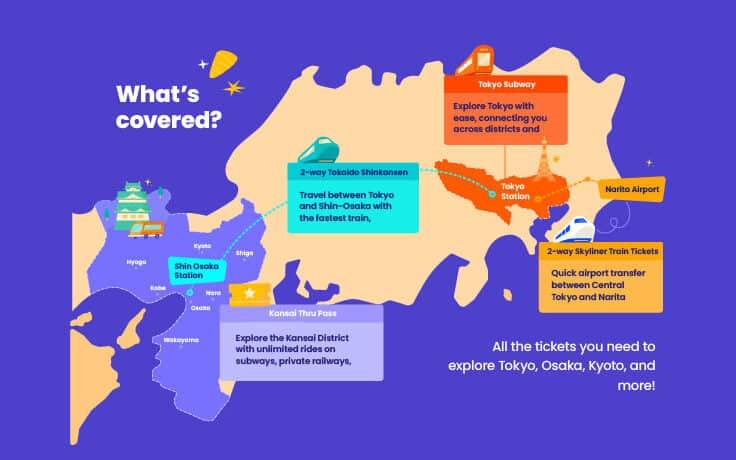
What’s covered :
- Round trip ticket between Narita Airport and Tokyo
- 3 days of unlimited rides on the Tokyo Metro
- 2x Shinkansen Tickets on the Nozomi (fastest line) between Tokyo and Osaka
- Kansai Thru Pass valid for 3 days
Instead of getting the Whole Japan JR Pass (7 days) which has an extra charge for the Nozomi Train ticket, why not save US$130 and get the Klook Value Rail Pass ?
I wish we had this option when we were going to Japan! This is probably the cheapest way to get around, while having access to the fastest Nozomi line when you take the Shinkansen.
To avoid fumbling for tickets at the station booths, I recommend booking this pass online to get e-tickets. This makes it super convenient and fuss-free especially for a foreigner.
Osaka and Kyoto 6-day itinerary
It can sometimes be cheaper to fly in to Osaka than Tokyo. This means that you could start your trip in Osaka and Kyoto, then travel up via Shinkansen bullet train to Tokyo. After that, you could either fly straight out of Tokyo or take the Shinkensen train back down to Osaka for your return flight.
Don’t forget to buy a SIM card, or eSIM so you can stay connected and continue to navigate with ease. We got our eSIMs from Airalo previously as it was convenient to buy via their app, affordable and easy to use.
Read more: The Best Places To Stay in Osaka For Food Street s
Day 1: Arrive in Osaka, Travel to hotel
Most flights to Osaka and Kyoto will be via Kansai International Airport (KIX), and it takes around 1 hour to get from KIX to the heart of Osaka. You can buy a ICOCA card (prepaid transport card) from the airport station, and this will come in handy throughout your Japan trip. We added 2,000 Yen to our card as a start as the ride to the city only costs 930 Yen.

If you are arriving in the evening, you should let the accommodation staff know your estimated arrival time as some budget accommodations have a cut-off time for check-ins. That happened to us as our flight landed at 9pm, and we arrived at our hostel at 11:30pm. Even though there was a phone we could use to call, we did not manage to reach anyone.
At that point we were really hungry so we just left our bags at the reception area and went out to Dotonburi for our first meal in Osaka. Thankfully when we returned at 1am and tried calling again, the hostel owner came down to meet us.
We can’t really complain though, since we are only paying about 6,000 Yen per night. We even saw prices dip to 3,000 Yen in off-peak season, so if you’re looking for a decent budget stay, check out 1.2.3 Guesthouse in Nipponbashi on Agoda .
Day 2: Visit Osaka Castle, Explore trendy streets, Umeda ferris wheel
Before anything else – breakfast and coffee! Heading out from our hostel, we walked about 5-10 minutes to Pan-kobo Champignon . This small and almost hidden bakery is popular among locals, and they have a selection of French-style baked goods including croissants and caneles.
Afterwards you can go to SAKImoto Coffee for your daily caffeine. There are outdoor benches for you to sit and drink your coffee as you watch people walk by.

Osaka Castle and nearby food
After fuelling up, head to Osaka Castle via train. It will only take 30 minutes to get there. Osaka Castle is one of the many important historical and cultural landmarks in Japan, and you get to learn interesting things like how they use huge stone slabs to build the fortress walls.
This is one of the must-sees during the cherry blossom season as the pink flowers are set against the gorgeous green colours of the Osaka Castle roof tiles. From time to time, you will see buskers performing in front of the inner castle entrance, adding to the lively atmosphere. Even if you are not a fan of historical sites, this is still worth visiting as the walk is very relaxing.

Food options near Osaka castle are likely to be more expensive and catered to tourists. Instead, let’s walk 20 minutes out to look for a hearty Udon meal. Check out Udama 谷町base for their signature chicken tempura and udon that can be served with hot soup or as cold noodles.
Crepe Aimer is just 2 minutes’ walk away from the Udon shop, where you can enjoy various types of Japanese-style crepes for dessert. We tried the Choco Banana flavour, and really enjoyed the soft texture of the crepe.
Nakazakicho and Umeda for cafes and shopping
Next we head to Nakazakicho , where you will find photographic streets lined with cafes, artistic shops, vintage clothes stores. It is a nice place to walk around post-lunch without much of an agenda.

Umeda shopping area is also nearby, and you can head up to the Hep Five Ferris Wheel (above Hep Five mall) for just 600 Yen. It is one of the main attractions of Umeda, and highly accessible. You should go up at around sunset time to enjoy the best panoramic views of the city. Within the Hep Five Mall , check out various Gashapon shops where you can pick up capsule toys as souvenirs.

Dotonburi feasting
The good thing about staying near Dotonburi is that you can take your time to eat and explore the food options over a few days. The large food displays on top of the stores such as the crabs, dumpling, octopus and noodles are sure to make your mouth water. Set aside some time to try Takoyaki, Yakisoba, Crab sushi, 10-Yen Cheese Waffle, Ramen, Dorayaki, Yakiniku, and more! When in doubt, just join the queue wherever you see locals.

Day 3: Nara Deer Park, More food hunting in Osaka
We went to SAKImoto Coffee again on this day, and also bought some bread from SAKImoto Bakery which was just opposite the cafe. If you are looking for something warm for breakfast, check out Chitose Udon in Namba, where locals start forming a line more than 1 hour before the opening time.
Nara Deer Park – a possible day trip from either Osaka or Kyoto
Let’s slow down today and head to Nara to visit the deer park. It only takes 40 minutes from either Osaka or Kyoto to get to Nara, and is an ideal day trip for first-timers. We wanted to spend at least 2 nights in Osaka, hence we came here before our Kyoto part of the trip.

Once you get there, walk towards the deer park where you will find vendors selling nutritious crackers that are designated for visitors to purchase to feed the deer. The deer are free roaming in the parks and it was a very new experience for us to interact with these cute animals up close. Some of them seemed to be full and did not react to us offering them the snacks.
Lunch and shopping in Higashimuki Shopping Street
As with most touristy places in Japan, you will need to get to the popular restaurants early to avoid disappointment. We went to Soba-dokoro Kitahara , a cozy traditional soba restaurant, at 1:30pm and waited for 2 hours to get seated as they were short-handed.

Despite that, it was a good dining experience as we got to try soba-yu, a type of rich and savory soup made with your remaining soba dipping sauce. We also enjoyed the tempura and sake that complemented our soba meal perfectly.
If you have more time you can make a visit to the other iconic shrines like Todaiji and Kasuga Taisha , where you will find beautiful historical architecture and gardens. Before you head back to Osaka, drop by the Higashimuki Shopping Street . It is also a great place to have lunch as you have many options.

There are also stores selling Japanese sweets like dango and mochi. There is a small shop called Nakatanidou where you can watch them demonstrate the traditional Japanese method of pounding mochi, and buy some freshly made mochi topped with nutty powder.
A special Yakiniku dinner
Finally, we head back to Osaka to rest before a lovely dinner at Matsusakagyu Yakiniku M . It is a premium yakiniku restaurant with enclosed 2-person rooms where you can enjoy delicious barbecue and excellent service. There is a minimum order of 1 set per person with prices starting from around 7,800 Yen before tax. You can be assured of the best meat quality and a cosy atmosphere.

The cherry on top was the delicious Matsusaka Beef garlic rice served in a stone pot. It was the perfect meal to conclude the Osaka portion of the trip. Do make reservations ahead of time, especially if you are planning this for a special celebration.
Day 4: Travel from Osaka to Kyoto, explore Nijo castle and Gion district
Morning trip from osaka to kyoto via train.
After checking out, the journey from Osaka to Kyoto will take around 1-hour. I recommend staying at Piece Hostel Sanjo because of the good service (English-speaking), great location, and affordability given the quality of the rooms. We paid around 6,000 Yen per night for a double room with shared bathroom. Check the latest prices for Piece Hostel Sanjo on Agoda , and you might find a great deal for your Kyoto accommodation.

They have female-only and all-gender bathrooms and showers, a well-renovated open kitchen for shared use, and cosy lounges to hangout with your takeout food. If you arrive early before the check-in time, they can help to store your luggage as you head out to explore the city.
Obanzai-style brunch
When we arrived in Kyoto at around 10:30am, we decided to grab a healthy brunch at Obanzai Nomura Nishiki , which was on the way from the station to our accommodation. Obanzai is a traditional Kyoto style of cuisine with small dishes served along with rice and soup. The ambience is nice and quiet, and some seats are on tatami mats in rooms with traditional interior design.

You can also make a visit to the nearby Nishiki Market where you can find various types of seafood. It is a great place to shop for souvenirs as well. After filling our stomachs, we dropped off our bags at the hostel and went to HUMAN MADE 1928 Cafe by Blue Bottle Coffee .
Nijo Castle

Similar to Osaka, there are many cultural sites to visit in Kyoto. Nijo Castle is the one you should not miss. It has great significance in Japan because it is the former residence of the Shogun. A Shogun is essentially a very important military leader in that era. Here, you get to tour inside the castle and imagine how times were like in the past. The beautiful architecture and gardens are also quite therapeutic. There is even a cherry blossom park with rows of these trees for those who are here in Spring.
Wandering Gion District, getting dinner and dessert
Next, we head on to the famous Gion district to try catching a glimpse of Geishas and their apprentice Maikos. Aside from that, visiting at sunset has a magical feeling as you walk along the cobblestone paths.
There are excellent photo opportunities where you can capture the Hokan-ji Temple in the backdrop of these streets. Locals and foreigners like to dress up in kimonos when they visit Kyoto, which helps to add colour to the crowd. I recommend wandering along Yasaka-dori , Nineizaka , Sanneizaka .

If you are a matcha-lover, you will be happy to know that there are tea ceremonies you can join. One of the highly rated places is Tea Ceremony Camellia FLOWER in Gion. They offer both private and group sessions, though you will likely need to book and pre-pay before the actual day. Other tea shops include Tsujiri Tea House where you can buy souvenirs.

After a long day, we sat down at Tokkyu Ramen for a hearty bowl of ramen. There are vegan options here as well. The service was fast and we thoroughly enjoyed the authentic simplicity of this shop. To end the day, we crossed the Kamo River to get a Matcha ice cream cone at BABBI GELATERIA KYOTO . We walked and talked the remaining 15 minutes of the way back to the hostel.
Day 5: Arashiyama Bamboo Forest, Bonsai garden tour
We set off early today to arrive at Arashiyama Bamboo Forest by 8am, which is located 45 minutes away from central Kyoto by train. There were barely any shops open at that time, so you might want to pack a snack before you go.
Strolling through Arashiyama Bamboo Forest and breakfast
The famous Arashiyama Bamboo Forest is just a short stretch of walking path. It is better to arrive early as it will be more serene. By the time we were done taking photos and turned back, we saw that there was barely any space for people to take a photo without others in the background. Aside from that, I still recommend first-timers to visit and witness the majestic bamboo trees.

If you want to escape the crowd that will be pouring into Arashiyama town, head over to BREAD, ESPRESSO & ARASHIYAMA GARDEN . This cafe serves delicious breakfast sets and coffee, and is situated within tranquil Japanese gardens. We got a seat easily when we were there at 9:30am, which is another advantage of starting the day early.

Food and sights outside the Bamboo Forest
Continue on toward Togetsu-kyo Bridge , where you can cross towards the Arashiyama Monkey Park Iwatayama . We chose to give this a miss because we have seen monkeys multiple times in Singapore. Nonetheless, the scenery here is very calming and you can also go on a boat tour along the river. Coffee lovers will be thrilled that % ARABICA Kyoto Arashiyama is located at the river shore.

For lunch, we head out to Otsuka steak which is another 15-minute walk away. That’s right, it’s good to exercise before your meals. It is often described as a hidden gem where you get high quality beef at a good price. A short plate beef bowl set costs just around 2,000 Yen. As usual, try to make a reservation before heading over. In our case, we had an early lunch so there only a queue outside when we were leaving.
Visiting the star-studded Bonsai Garden in Daitokuji Temple
Next, we head to North Kyoto where you can visit the famous Kinkaku-ji Temple and Daitokuji Temple . Located just 40 minutes away from Otsuka, we chose to visit the Bonsai Garden in Daitokuji Temple as we wanted to spend unhurried time here. It is the first bonsai garden established within a zen temple, and houses an impression collection of old bonsai.
The entrance fee to this garden is only 1,000 Yen, yet the richness of the bonsai here is immeasurable. The oldest bonsai is an 800-year-old Japanese yew, and there are many others that are 250 years old. I cannot imagine the amount of work generations of families put in to shape each tree to its current form. It is truly a living art that celebrates patience and years of devotion.

Fushimi Inari Shrine has thousands of vibrant red torii gates that lead up the trail towards Mount Inari. Aside from being excellent for photos, they offer a unique atmosphere of serenity as they wind upwards through the forest. We decided to climb all the way to the top for the full experience. We started our day at Fushimi Inari Shrine at 7am, giving us sufficient time to walk at our own pace before a bigger crowd arrived. I enjoyed being able to take photos slowly and create memories without the pressure of people waiting behind.

Thankfully, the path down was a gentler slope down the looped trail. Stores begun to open by that time, selling souvenirs, drinks and snacks for visitors to get an energy boost. We continued out of the shrine area to get breakfast at Komeda Coffee . Originating from Nagoya, this coffee chain offers a charming setting for coffee and sandwiches.
Visiting Gekkeikan Sake Museum in Fushimi
Next, we head to South Kyoto to visit the Gekkeikan Sake Museum , which is only about 15 minutes away by train. Fushimi area is one of Japan’s leading sake-producing regions, and Gekkaikan played an important role. For just 600 Yen per person, you will receive a sake cup and 3 sake-tasting tokens. Sake enthusiasts will enjoy learning about the process of sake brewing and its history. Another interesting place to visit in Fushimi for sake tasting is Fushimi Sake Village . This is a multi-room style restaurant with over 100 types of sake you can try.
Shopping in Kyoto
As you come back to the city, check out the malls around the main station. Uniqlo is one of our favourite brands, and we purchased some of their clothes that we could not find online. There are also interesting items at Tokyu Hands such as a Black Pine starter growing set. Other interesting shops to check out include this Columbia Factory Store that embraces the traditional Japanese architecture. Be sure to bring your passport along if you want to make tax-free purchases. This usually requires a minimum purchase amount of 5,000 Yen.

Hakone Day-Trip Itinerary
Finally, we will be leaving the Kansai region of Osaka and Kyoto, and heading towards Hakone and Tokyo. Hakone is a scenic area near Mount Fuji that is accessible to Tokyo via day trips. Hence it is the perfect stopover for an immersion into the vast natural landscape of Lake Ashinoko .

Tips for transporting your luggage from Kyoto to Tokyo
One of the best tips for such a trip is to have your luggage transported from your hotel in Kyoto to your final destination in Tokyo. This is a service that is commonly offered by the hotels, and has become increasingly popular. I highly recommend this so that you can have a comfortable journey on the trains and buses. You will also not have to worry about the baggage size restrictions onboard the trains.
If you need extra confirmation, you could enquire with the hotel staff about this service upon booking. Most established hospitality chains will be able to help you with this. Otherwise you could head to convenience stores to get this done, though I have heard of people having difficulty this way due to a language barrier.
During our check out process at Piece Hostel Sanjo , we requested for this luggage forwarding to be done. The hotel staff got us to write down our hotel details and measured our luggage dimensions. They also made a call to the hotel that we wanted to send our luggage to in order to confirm our reservation. Finally, we paid about 2,000 Yen for each bag and the hotel staff handed us our delivery receipts. The actual price may vary depending on your luggage size.
That’s it – and all we did from then was track the luggage locations via our Apple AirTags for peace of mind. We could even see when they arrived in our Tokyo hotel.
After settling the luggage forwarding with the hotel, we brought our day bags and made our way to Kyoto Station to purchase our Shikansen train tickets.
Purchasing Shinkansen bullet train tickets for Kyoto to Odawara
We had not bought a JR Pass as we are not planning to make another long trip back. That meant that it was more economical for us to buy stand-alone tickets. Besides, the ICOCA cards made it very convenient for us to just tap in and out. I recommend arriving to the station 1 hour ahead of your scheduled ride if you need to purchase a ticket at the station.
The Shinkansen bullet train ride from Kyoto Station to Odawara only takes 2hr 5min via the Hikari train type. Remember to check the schedule for these Hikari trains, and make it for the correct timing. Do also look out for the train type before boarding so that you do not take the slower train by accident. Even though you might see other trains with the same destination, they might stop at several intermediate stops. This extends the travel time substantially.
Trying Ekiben bentos from the train station
Eating Ekiben bentos on a Shinkansen bullet train ride was something we looked forward to on this trip. They are traveller meals that are sold in the major train stations. In Kyoto, you can find them either before or after you enter the paid area. They are inexpensive and high quality nonetheless. If you have some time as you transit through the station, I highly recommend looking out for shops that sell Ekiben bentos and try one for your journey. There are also bakeries in the station if you are not too hungry.

Buying the Hakone Free Pass at Odawara
The easiest way to get around in Hakone is via the Hakone Free Pass . You can purchase it from a Tourist Service counter at Odawara, and it costs 5,000 Yen for 1 day. This gives you access to the Hakone Tozan Railway, cable cars, ropeways, and boats. This helps you to save on hassle and cost.
From Odawara, head onward to Hakone-Yumoto Station , the main entry point for the Hakone area. From there you can hope onto the bus service that will take you to your first stop.
Enjoying nature in Hakone and Onsen
We arrived in Hakone after lunch time, which meant that we did not have the full day to visit the exhibitions or museums in Hakone. For reference, it takes about 1 hour to get from the Hakone-Yumoto station to Lake Ashinoko via bus.

If you have more than one day in Hakone, here are some attractions to check out:
- Hakone Open Air Museum
- Owakudani Valley via the ropeway
- Hakone Shrine
- Lake Ashinoko
My favourite experience was the pirate cruise along Lake Ashinoko. With the Hakone Free Pass, we could go from Togendai port to both Motohakone and Hakonemachi port. As you travel along the lake, look out for Mount Fuji in the direction of Togendai port. You might be able to see it on a clear day, perhaps even snow-capped. Closer to Motohakone and Hakonemachi, you can also catch a glimpse of the bright red Hakone Shrine .
Dinner and breakfast options in Hakone
Booking an accommodation near the lake gives you the chance to take a walk by the water during sunset. Hotel Musashiya is an affordable option located near Motohakone port, and just a stone’s throw away from the lake. You get to enjoy the lake view from your room and opt to stay indoors instead. There is also an Onsen on the top floor of the hotel which overlooks the lake. You can also check out other unique ryokans in Hakone on Agoda .

There is an option to have both dinner and breakfast provided by the hotel, though it will not be cheap. This could be a good option for dinner because the restaurants tend to close early before sunset. Alternatively you can grab a cheap meal from the nearby convenience stores.
As for breakfast, I would recommend getting the hotel breakfast. They usually serve traditional Japanese breakfast which will be a unique experience.
Tokyo 2-Day Itinerary
The next day, we made our way back to Odawara Station via bus, and continued on to Tokyo via the Shinkansen bullet train. The journey will take between 1.5 to 2 hours depending on where you plan to go in Tokyo.
There are no rules about the type of activities you should do and places to visit in Tokyo. Here are some ideas for first-time visitors to Tokyo.

- Shopping for collectibles and electronics in Akihabara
- Admire the modern design of Odaiba
- Experience the thrill of the Shibuya road crossing
- Breakfast and coffee at Tsukiji Market
Where to stay in Tokyo
Best for skyline view and famous attractions: odaiba ($$$).
Odaiba felt like an upscale area because of the international name hotel chains there. The trains were different, and the streets feel much less crowded. It is a great place to stay if you want to have a breather from the busy city center.
You can enjoy the skyline across the sea during sunset and watch the city lights come on. It is a popular choice with families as well because of the nearby attractions like the Rainbow Bridge, the giant Gundam, and Tokyo Disneyland. Those who love shopping will also be happy to know there are many huge malls here.
We stayed at Hilton Tokyo Odaiba and highly recommend it for the ocean view and balcony area. The lobby was also very bright and inviting.
Best for food, shopping with connectivity to Mount Fuji: Ikebukuro ($) or Shinjuku ($$)
If all you care about in Tokyo is eating and shopping, look no further than the Shinjuku to Ikebukuro area.
Although Shinjuku is a little bit more expensive due to its popularity, you save a lot of time and energy just because it’s a major transport hub. It also connects you easily to Mount Fuji area with the highway bus services. You can browse Shinjuku hotels here on Agoda .
Ikebukuro is also a great choice for budget conscious travellers, and you can also spend a lot of time at the Sunshine City mall. If you love anime and all kinds of cartoon (like Disney and Sanrio), I think Ikebukuro will be a hit.
We stayed at the Sunshine City Prince Hotel in Ikebukuro for 5 nights and love that there’s a convenient store just downstairs. It also happens to be in the same building as Sunshine City hotel, hence the name. You can grab a quick breakfast in the mall before heading off for your adventures. Check the latest prices and deals for Sunshine City Prince Hotel on Agoda .
Best for cultural scene and connectivity to Nikko and Narita airport: Asakusa ($)
There are many affordable accommodations here including the APA hotel chain . You can easily find a room that enjoys the river view and is near the train station. It’s also a popular place for culture and good food without too much crowds, and is also a convenient place to get to Nikko National Park for a day trip. You can also take a direct train to Narita airport from Asakusa.
I share more about what you can do in Asakusa later on in this post. Meanwhile you can check out hotel options in Asakusa on Agoda.
Day 8: Shinjuku and Ikebukuro shopping, dining and bar-hopping
Shinjuku is one of the best places to stay because of its transportation connectivity, especially if you plan to make other day trips to the Mount Fuji area. There is so much to do in Shinjuku and you can find a wide variety of shopping and food options. My personal favourites are shopping at flagship stores, exploring izakayas, and searching out the best Japanese cuisine.
Shop for anything and everything in Shinjuku
One of the shops that blew my mind here was Alpen Tokyo . This flagship store in Shinjuku spans 8 floors, and has a huge range of outdoor gear. They carry gear made in Japan as well as all kinds of popular international brands. The best part is tax free shopping! Whether you are a solo hardcore camper, a casual outdoor person, or a family tripper, Alpen Tokyo will definitely have something for you.
Another cool shop to explore is Shinjuku Hands . You can find almost anything you need there, be it travel supplies, home decor, toys, plant items, and more. It is easy to get lost in the various sections and also a great place to shop for practical gifts and souvenirs.
Shinjuku izakaya, yakitori and bar hopping
Omoide Yokocho is one of the unique alleys in Tokyo that exude a uniquely Japanese charm. As the sun begins to set, store lights and lanterns turn on, making it a cool place to walk through and take photos. It is not a big area, and you will see small yakitori shops with 4 to 7 customers seated in each shop.
We went there in summer and sitting directly in front of the grill was like sitting in a sauna. There was also a minimum order of 2 skewers per person, and we took the chance to try a variety of items. Overall, it was a fun experience drinking whisky highball and enjoying some beef and fatty pork cheek skewers.
Afterwards, we went to Bar Composition to chill in air conditioning and enjoy some cocktails. This is one of the many bars you can explore in Shinjuku, and you could even sign up for bar hopping tours. The interior decor mimicked a forest environment with spa-type nature atmospheric sounds playing in the background. Our cocktails incorporated Japanese ingredients and were visually appealing, and the bar snacks were so tasty. I recommend this place for a quiet evening of chill drinks.

Visit Sunshine City in Ikebukuro if you love Studio Ghibli, Disney, Sanrio, and anime
Ikebukuro , slightly north of Shinjuku, is also a fun place to be with Sunshine City as one of the popular shopping complexes there. Did you know that there is an aquarium, a planetarium, as well as a museum there? Studio Ghibli lovers will also be delighted to find one of the official Ghibli stores, Donguri Kyowakoku , in Sunshine City. At the same time, you can visit the Disney store and Sanrio cafe all in the same mall.
Dine at a standing sushi bar at Ikebukuro station
Standing-only sushi bars are small cosy stores that people go for a quick sushi meal. I highly recommend Midori Sushi Echika Ikebukuro which is located in the underground linkway of Ikebukuro station. We spent about $27 SGD per person and tried so many different kinds of high quality sushi. The atmosphere was quiet and service was efficient. There are people eating alone as well, which seems to be quite a common thing here in Japan.
Asakusa is a charming area in Tokyo that embraces its traditional culture. You can find people dressed in Kimonos (including tourists), and rickshaw pullers taking people around for sightseeing and photo taking. It reminds me a little bit of Osaka and Kyoto, with a lot more dining options in the same area. If you are flying from Narita Airport, Asakusa station offers a direct train ride there.
Shopping in the Senso-ji area
Senso-ji is the famous shrine in Asakusa that most people come to see. There is a shopping street called Nakamise-dori where you can find souvenirs and street snacks. We bought Japanese Ukiyo-e art inspired postcards and also tried some red bean filled doll cakes (ningyoyaki).

Aside from walking down this crowded street, I recommend checking out Asakusa Menchi for their tasty fried pork croquet. If you need a break from walking all day, Coffee Tengoku serves pancake and coffee sets that will satisfy your sweet tooth. We also enjoyed the espresso based coffee at Sukemasa Coffee .

Try the famous Asakusa Gyukatsu
You have probably seen this hyped up on social media before – a restaurant where customers can grill beef steak cutlets on stone plates. There are several outlets in Tokyo, and this one is near the Asakusa station.
The best part is, prices are quite affordable despite its popularity. Set meals start from 1,930 Yen ($19 SGD) for a 130g portion of beef, and 3,060 Yen ($29 SGD) for 260g. They come with 3 side dishes – grated yam, spicy cod roe, and warabi mochi. You can even request for a free one time refill of barley rice. It was a really enjoyable experience and I highly recommend this as a must-try.
The waiting time can get quite long, so you should come here at off peak times. This might be because they like to seat all the customers at the same time and clear out the venue completely before letting in the next batch of customers. The restaurant space is also pretty small, but it gives you a sense of exclusivity. Like “wow, I managed to get a seat in this Gyukatsu restaurant to enjoy such exquisite cuisine!”

Which cities did we like the most – Osaka, Kyoto, or Tokyo?
Personally, Osaka and Kyoto really blew me away. I love that I can get amazing food anytime in Osaka, and that Kyoto showcases Japanese culture and aesthetic. If you need a peaceful getaway, I highly recommend Kyoto.
Hakone would make a nice nature-filled weekend trip for anyone who lives in Tokyo, though it can be a little expensive. Last but not least, Tokyo is a vibrant place with excellent food, service and efficiency. There is something for everyone in this city, no wonder it’s such a popular destination.
I hope you enjoyed this first-timer’s itinerary for Osaka, Kyoto, Hakone and Tokyo. Let me know what you think in the comments, and if you need a trip planner I’d be happy to help! Drop me an email at [email protected]
If you liked this post, check out:
- Amazing Japan Hiking Trips For Mountains, Lakes and Islands
- How To Explore Asakusa and Ueno For First-Timers
- A First Timer’s Guide To Hokkaido: Daisetsuzan & Furano
- 3 Days In Hokkaido Lake Camping & Onsen Hopping
- Sapporo 1 Day Itinerary (Fun Guide To Bicycle Sightseeing)
- 9 Unique Souvenirs To Buy From Japan That You’ll Actually Want
- Nikko 2-Day Itinerary: The Best Way For Nature Lovers
- Unforgettable Food You Need To Try in Tokyo
- Beautiful Tokyo Hiking Day Trips You Need To Try In Summer
- How To Go Hiking In Mount Takao: 8 Trails To Explore

You May Also Like

10 Amazing Things To Do In Point Reyes You Need To Check Out
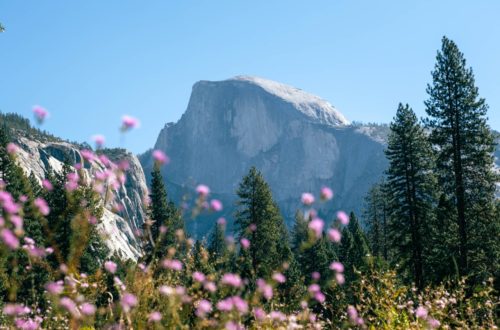
How To Choose The Best Places To Stay At Yosemite

The Ultimate 10-Day Road Trip You Need: Best Of Highway 1, Yosemite, Lake Tahoe
Love this article ! Thanks for sharing and where did you stay in Tokyo?
Hi! We mainly stayed in Prince Hotel Ikebukuro (Sunshine city)
Thank you so much for sharing your itineraries with so many details and explanations. We’ll be landing on Osaka on 20/02 and departing from Tokyo on 01/03. Thus we have full 9 days of touring from Osaka – kyoto – Tokyo. Will go nara, hakone if time is enough. Mt fuji is a must for us.
Hi Alan, I’m glad this was useful! 🙂 Sounds like a super fun trip! Hakone is close to Fuji, great choice! Seems like you’ll see snow on Mt Fuji during that time
Hi Janice, when was this trip done? I plan to go in Dec, would this itinerary be applicable in winter?thanks
Hi! We went in March, but I believe winter should be fine too! Just take note to check the closing times for various places during winter as they typically have shorter hours. Otherwise, winter time onsen and seeing Mount Fuji would be really nice!
Leave a Reply Cancel reply
Make planning your Japan trip that little bit easier
Stay in Kyoto or Osaka? 9 Questions to Help You Decide
Sharing is caring!
- Latest Posts
- How to Get From Haneda Airport to Asakusa - 2 April 2024
- 56 Tips For Your First Tokyo Disney Visit - 30 March 2024
- Kurobe Gorge Railway Is Partly-Closed. Here’s What That Means - 25 March 2024
If you’ve decided to visit both Kyoto and Osaka on your Japan trip but have to decide which to stay in and which to visit for a day trip or how to best split your time between the two, this is the post that can help. It explains the differences between Kyoto and Osaka – and helps you choose the perfect one for you.
Many people, on their first, or second, trip to Japan, decide to follow what’s known as the Golden Route. This means staying a few days in Tokyo and then taking the bullet train down the country to visit Kyoto and Osaka.
But, if you don’t have time to stay in both cities, where should you base yourself? Which is better – Kyoto or Osaka? And, if you do have time to visit both, should you spend more time in Kyoto or Osaka?
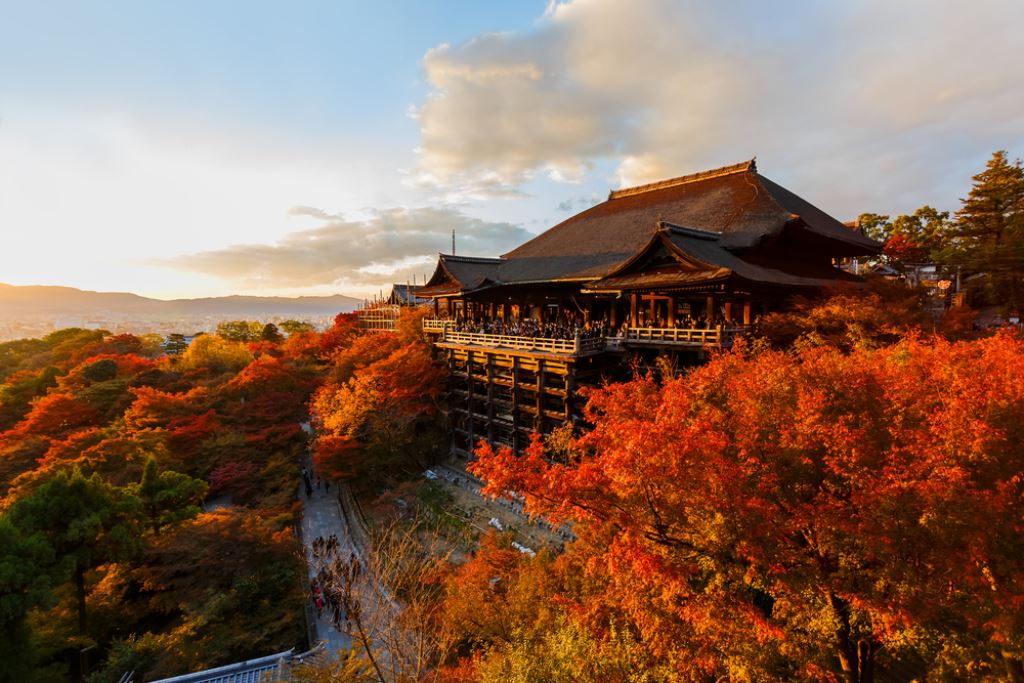
Article by Helen Foster. Disclosure: Some links in this post are affiliate links. See our Affiliate Disclosure.
Well, there’s no one right answer as it depends on your personality and what you want to get out of your trip – which is why we’ve come up with nine questions to ask yourself when considering Kyoto vs Osaka to find the best spot for you. But in a quick summary…
Differences Between Kyoto and Osaka
We’ll go over these in detail below, but, in a nutshell…
- Kyoto is the traditional Japan of your dreams. Osaka is more modern.
- Osaka is big on bars, restaurants, and partying. Kyoto is more refined.
- Osaka feels less touristy, Kyoto can get crowded
- Kyoto sights are more spread out, Osaka sights are compact
- Osaka is kitsch and fun while Kyoto is beautiful, spiritual, and serious.
Ideally, Consider Both
Questions to help you decide between kyoto and osaka, my choice of kyoto vs. osaka…, day trips to osaka or kyoto.
If you have 5-7 days to spend in the Kyoto and Osaka areas, we’d firmly consider splitting your time between Kyoto and Osaka.
Here’s what you need to know if you’re considering it.
How Far is Kyoto from Osaka (and Vice Versa)?
The distance between Kyoto and Osaka is just under 60km. That means that the two cities are just 15 minutes away from each other by bullet train, or 50 minutes on the far cheaper local service, so it’s easy to swap between the two without wasting valuable time traveling or spending a lot of money.

How Many Days in Kyoto and Osaka?
To see both, you need at least five days, ideally six or seven.
You can do a split trip in fewer than five days, but allowing for traveling to and from Tokyo and then getting to your hotel and settling in, I think five days is the minimum to do both places – and six or seven is better, especially if you want to add in a day trip to Nara or Hiroshima while you’re down there.
If you’d like a better idea of how long you should spend in each city, check out our guides that help you decide – and give a short itinerary.
Here’s where to find how long you should spend in Osaka , or, if you’re wondering about Kyoto, you can see how long to spend in Kyoto here .
Should I Spend More Time in Kyoto or Osaka?
The answer to this question, and how many days of a split trip you spend in each, will probably depend on your answers to the questions below, but I would say to see Kyoto properly, you need at least three days, ideally four, but you could do Osaka’s main sites in two days if you had to.
However, keep reading as the type of person you are will change whether Kyoto or Osaka is better for you.

Should You Stay in Kyoto or Osaka First?
Again, there’s no right answer – but, if you’ve already been to Tokyo, then Kyoto is a nice change of pace, so I’d probably stay there first and then go to Osaka.
If you’re planning on partying, then you might want to go to Osaka first and spend the time recovering in Kyoto! Although my karaoke night out in Osaka lasted until 4 am this time. It took me about three days to get the energy back to throw myself into sightseeing again!
The above assumes you have enough time in your itinerary to visit both Kyoto and Osaka, however, if you prefer to stay settled in one place, or need to decide whether to spend more time in Osaka or Kyoto as part of a split trip, here’s what you need to think about…
Okay, I’ve tried to be as unbiased as possible here, even though I do have a favorite from the two cities, which I’ll reveal at the end, but these are the questions I think you need to ask yourself to decide whether Osaka and Kyoto is the perfect base for you.
1. What Do You Want to Do During the Day?
Kyoto has the big ticket items that you’ve probably seen on Instagram or every list of Japanese must-see sights – it’s full of jaw-dropping temples like the golden temple of Kinkaju-ji or Fushimi Inari with its hundreds of scarlet tori gates.
In town, there are winding alleys lined with homes, restaurants, and teahouses from years ago, and there’s always the enticing thought that you might see a geisha or maiko popping out from behind a curtained doorway of one of the small wooden buildings.
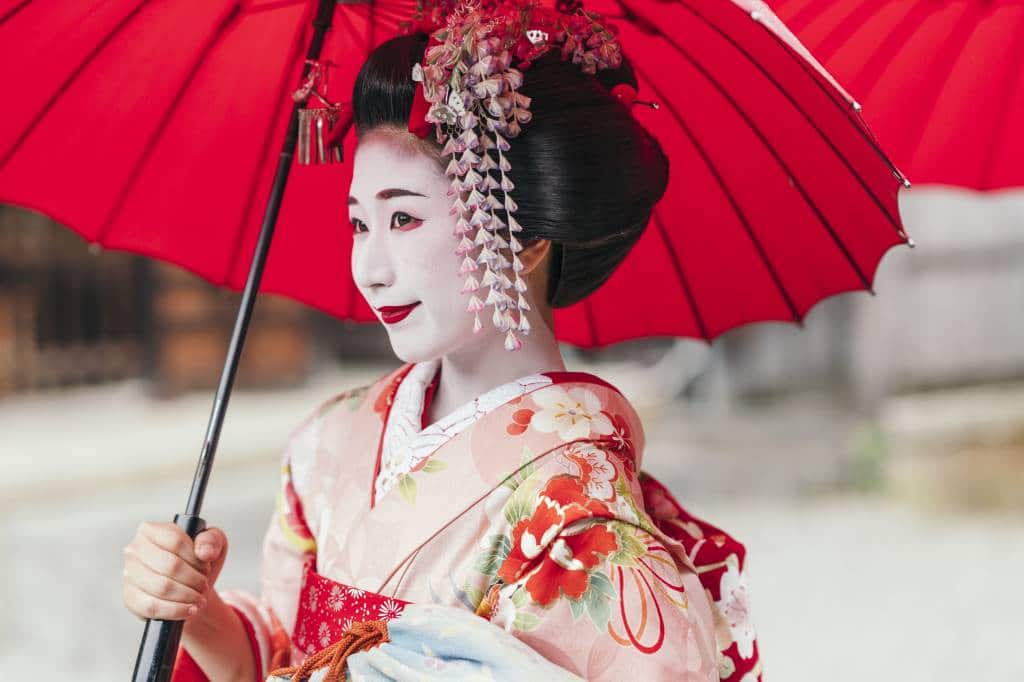
Take a train for the short trip to Arashiyama and you’re spoilt for sights with the famous Bamboo Forest, the Stone Man temple (officially known as Otagi Nenbutsu-ji), and the pretty views from the Sagano Romance train.
And I haven’t even touched on the full list of Kyoto attractions here, there are hundreds more.
You’ll find our list of the top 10 Kyoto attractions here.
If you love temples, Kyoto is your happy place – there are 1600 of them from the majestic to the tiny or quirky.
If you get templed out in a day or two, though, you might want to look at Osaka instead.
Osaka doesn’t have so many ‘wow’ sites (unless you’re traveling with kids – but more on that later). It actually has more temples than Kyoto, but they are small and subtle – like Hozen-ji with its interesting moss-covered sculpture or Namba Yasaka with its lion’s head design.

The biggest ‘historical’ site in Osaka is Osaka Castle.
But even though it doesn’t have the big wow sights, wandering around Osaka is more varied than Kyoto.
Each distinct district carries its own vibe – one minute you’ll be wandering around kitsch Shinsekai (above) with its garish signs and cute Billiken statues then a short walk will lead you to Amerikamura and a few hours of wandering around vintage shops, checking out Japanese street fashion and maybe catching a live band or two.
Find our list of the Top 10 Sights in Osaka here.
Verdict: So, Which is Better in Daytime?
If you like your days jam-packed with noteworthy sights to tick off, then Kyoto is the place for you. You can’t possibly do it all in a day trip. It’s huge.
If you can’t get enough of big showy temples and shrines and want somewhere with a sense of history, staying in Kyoto is absolutely your best bet.
But, if you love to wander and just absorb the feeling of different areas, I think Osaka fits the bill more than Kyoto.
2. What Do You Want to Do in the Evening
Osaka comes alive at night. Not only are the bright lights of Dotonbori one of the most famous – and fun – sights in Japan, the backstreets of every area team with bars and restaurants. Shops open late, and there are people everywhere.
You can spend each evening of a week-long trip wandering around a different area of the city at night and find heaps of places to eat and drink.
Osaka also has a great live music scene – look for clubs called Livehouses if you want to find local bands

Kyoto is not a great nighttime town – at least in the central area where most tourists spend their time. And that’s also been my experience so far.
Don’t get me wrong, there are hundreds of restaurants to choose from, you won’t starve, but it’s hard to just wander around trying to find something you like. I’ve never just stumbled across anything great in the center, and it tends to feel a bit hard.
One reason for this, for me at least, is that many restaurants in Kyoto, particularly in Gion and the very pretty Pontocho Alley have closed-in fronts so it can be a bit hard to work out what’s going on inside and whether you’ll feel comfortable there – or that the bill isn’t going to come to hundreds of dollars.
One of the words I use to describe Kyoto quite often is impenetrable.
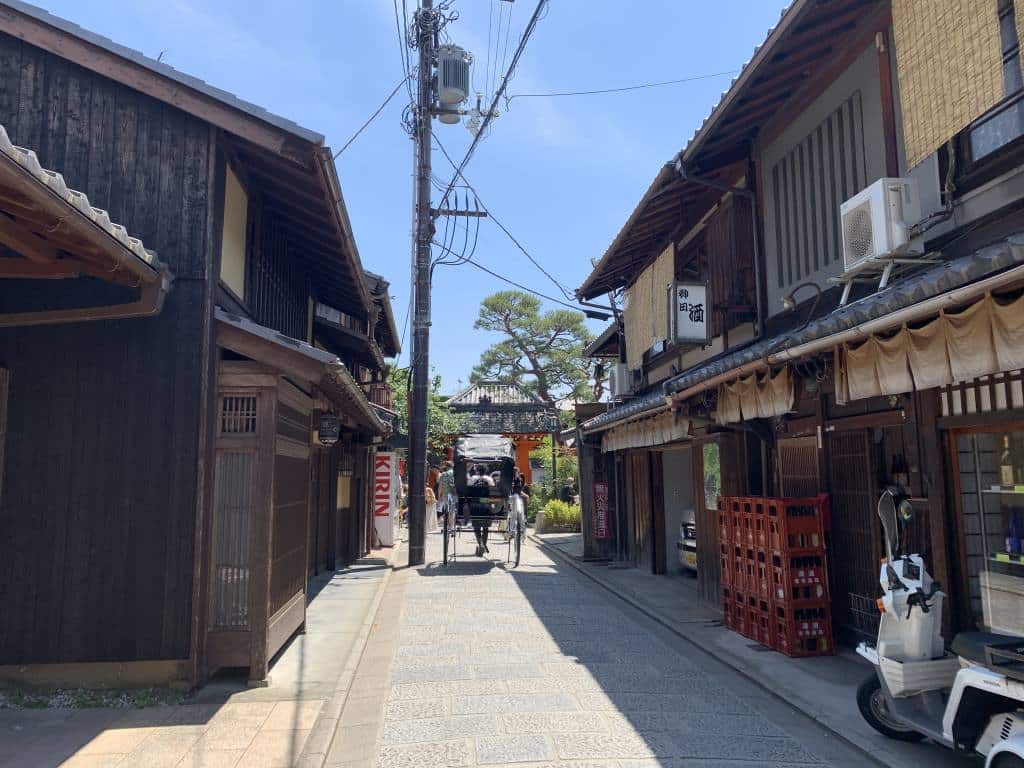
The downtown area is a little more open, it’s where I usually end up finding somewhere to go on my budget – but nowhere that’s blown my socks off yet.
I did like the area of Karasuma behind my hotel, though. It’s not in the center, but you can wander looking in windows – and with no plan, we found some appealing bars and a good dumpling restaurant to visit.
In Osaka, though we didn’t just find places to go we found people to talk to and stories to tell when we got home.
Verdict: Which is Better at Night?
Osaka is the pick for those who want to party properly. I also think Osaka is a town for wanderers, for those who just want to see what takes their fancy as the night unfolds.
Kyoto at night is a town for planners – you need to do your research and find out where you want to go – although, considering how packed the days are that might not be a bad thing for your feet!
3. Are You Planning Lots of Day Trips?
Osaka has slightly more direct transport routes to most of the major places you might want to see in this area than Kyoto. Here are some examples…
Getting from Shin-Osaka to Hiroshima is a direct journey of about 90 minutes. If you travel from Kyoto, you’ll need to change at Shin-Osaka and it takes at least 15 minutes longer.
Getting to Nara from Kyoto is a simple 43-minute journey on the JR Nara Rapid Line. From Osaka, it takes 50 minutes from Osaka station (not Shin-Osaka) or 36 minutes from Osaka Namba to Kintestu Nara Station.
Getting to Kobe takes 25 minutes from Osaka station – and 55 minutes from Kyoto (via Osaka)
Getting to Himeji and its famous castle takes 30 minutes from Osaka station – and 56 minutes from Kyoto.

Verdict: Osaka is Slightly Better for Day-trippers
It’s not going to make much difference if you’re doing one trip, or if your trip can be taken directly from both Osaka and Kyoto, but if you’re going out and about a few days from Kyoto, it can get tiring to keep changing trains at Osaka.

Need Extra Planning Help?
Our Japan trip planners can help. Choose from our 62-page Japan Super Planner, which includes tips on everything from picking hotels to sightseeing. Or, try a specific planner like Tokyo Tips, Kyoto Tips, or the Rail Pass Planner. Find them at our Etsy Store . Use code BLG25 at checkout to get 25 per cent discount.
Where to Stay in Osaka if You Are Day Tripping
Do pick your accommodation in Osaka carefully if you’re going to base your stay on this, though and decide if you’d prefer to be near the stations for early departures or the more fun areas to go out at night.
Shin-Osaka, where the Shinkansen departs, is about 20 minutes from the touristy Namba district.
Osaka station, which has the local JR Lines, is a bit nearer, and while that might sound okay while you’re reading this, it can seem eternal when you just want to get back to your hotel for a quick nap before going out exploring Osaka at night (as you can tell, I learned that the hard way).
If you’re staying in Namba, see if you can get to your destination via the lines from Namba station and book a hotel close to that.
4. What’s Your Hotel Budget?
I have always thought that Osaka was much cheaper than Kyoto for accommodation; every Japan group I belong to says the same thing – but on paper, at least, it seems I – and they – might be wrong!
If I directly compare the two hotels I had previously stayed in in each city (the Citadines Kyoto Karasuma Gojo in Kyoto or the Fraser Residence Nankai in Namba in Osaka) for the same night in November (five months after I’m typing this), the Fraser Residence is slightly cheaper.

I also compared apples with apples and looked at the Citadines Namba (that’s the room above) where I stayed on my last Osaka trip and that too is slightly cheaper than the Citadines in Kyoto.
I also looked at the other hotel I stayed in on my last trip to Kyoto. Because I was traveling solo on this part of my trip, I didn’t need such a big room, so I picked to more budget, Sotetsu Fresa Inn Kyoto Karasuma Gojo .
I checked that for the same date in November as the above and found that this was about AU$50 cheaper than the Osaka equivalent Sotetsu Fresa Inn in Shinsaibashi .
Oh, and BTW, after I mentioned I’d also stayed with the chain in Tokyo, they upgraded me at the Sotetsu Fresa in Kyoto to a nice big double room that would easily work for two, so you might want to look at this even if you aren’t traveling solo.
That’s the room below, and there’s also a desk and a chair out of shot!!
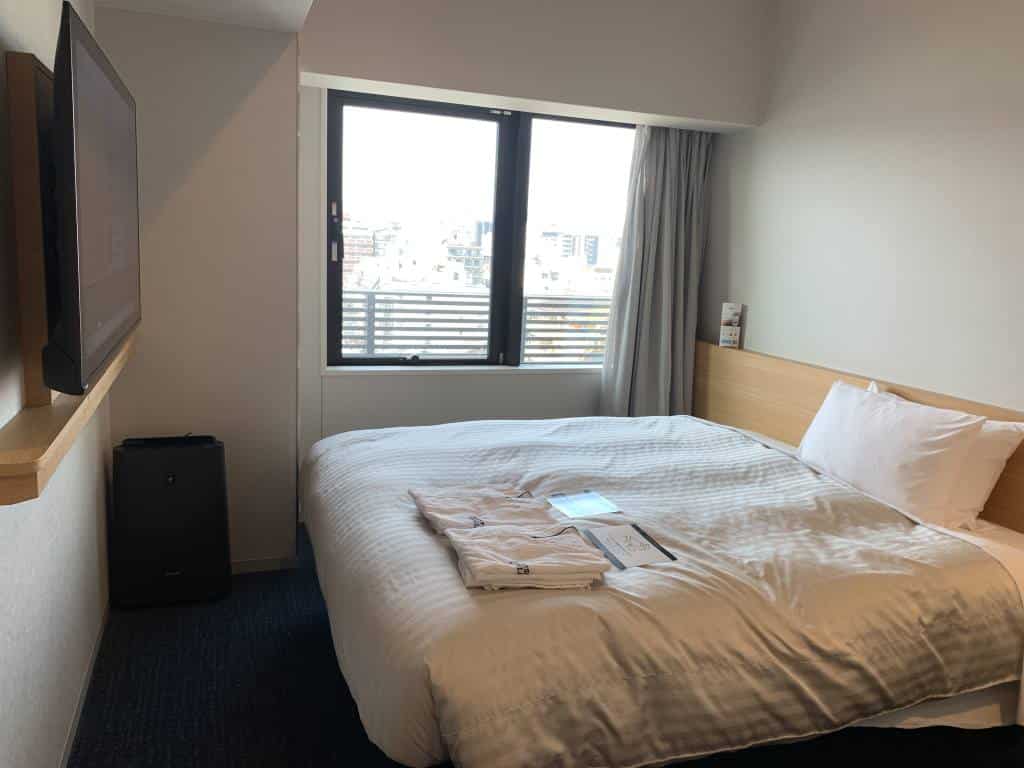
Because my opinion isn’t the only one that counts, I also checked out what Lonely Planet had to say about hotel prices, and the Capsule Hotel they recommend in Osaka is more expensive than the one they recommend in Kyoto.
A general business hotel in Osaka was around 3000 yen more than a hotel in Kyoto from the same chain.
The 5-star Hyatt Regency Kyoto is also listed at about 8000 yen a night less for a double than the 4-star Hotel Nikko in Osaka .
While this might seem to make it a clear-cut decision on whether to stay in Osaka or Kyoto if budget matters, do watch out as Osaka is a business town, and prices can really vary if there’s a large conference in town.
Looking for some extra space in Osaka? Have a look at our guide to Osaka hotels with larger rooms.
Verdict: Kyoto Can Be Cheaper Than Osaka
It does vary slightly depending on exactly which hotel you want to stay in, and, if you’re booking early, you could probably find something to suit your budget at any price.
Kyoto is also more tuned to tourist seasons as to when prices rise (check our guide on when to visit Kyoto for more details on what’s on when).
If you’re traveling in cherry blossom season, autumn leaf season, or Golden Week (end of April, beginning of May), you might find that it’s cheaper to stay in Osaka.
You may also find that the cheaper rooms in Kyoto sell out faster as tourists tend to book more in advance than business people.
Osaka, however has more hotel rooms than Kyoto – including this fun-looking one below!

So, unless cost really is a deciding factor, decide on Osaka vs Kyoto by determining how you are going to spend your time and which you think you’d enjoy most, and then try and find a hotel that fits your budget rather than picking where to stay on cost.
If cost is the main concern, then pick two comparable hotels and look at your dates, as it really will come down to where you’re staying, how long you’re there, when you’re staying, how many things are going on in town – and how far in advance you need to book.
Be Careful on a Budget in Osaka
Do watch the location of some of the very cheap hostels in Osaka. While Japan is generally very safe, an area called Nishinari (south of Dobutsuen-Mae metro) in Osaka is possibly not what you’re expecting to find there.
It has a high percentage of homeless and is a bit run down – but it is also where you’ll find some very cheap hotels. Admittedly, they are trying to gentrify this area a bit.
If you find somewhere you want to stay around here, just check the reviews and maybe ask around on some forums – especially if you’re a solo female.
5. Do You Like Old or Modern?
Osaka is modern – all shiny lights and big glass buildings. It’s brash and busy and fun.
Kyoto, on the other hand, reflects the more traditional side of Japan – it was one of the few cities in Japan not bombed in the war, so a lot of it is original and has a more elegant, sedate feel to the center.
If you’ve already been to Tokyo, you might love the change of feel and pace you get from staying in Kyoto.
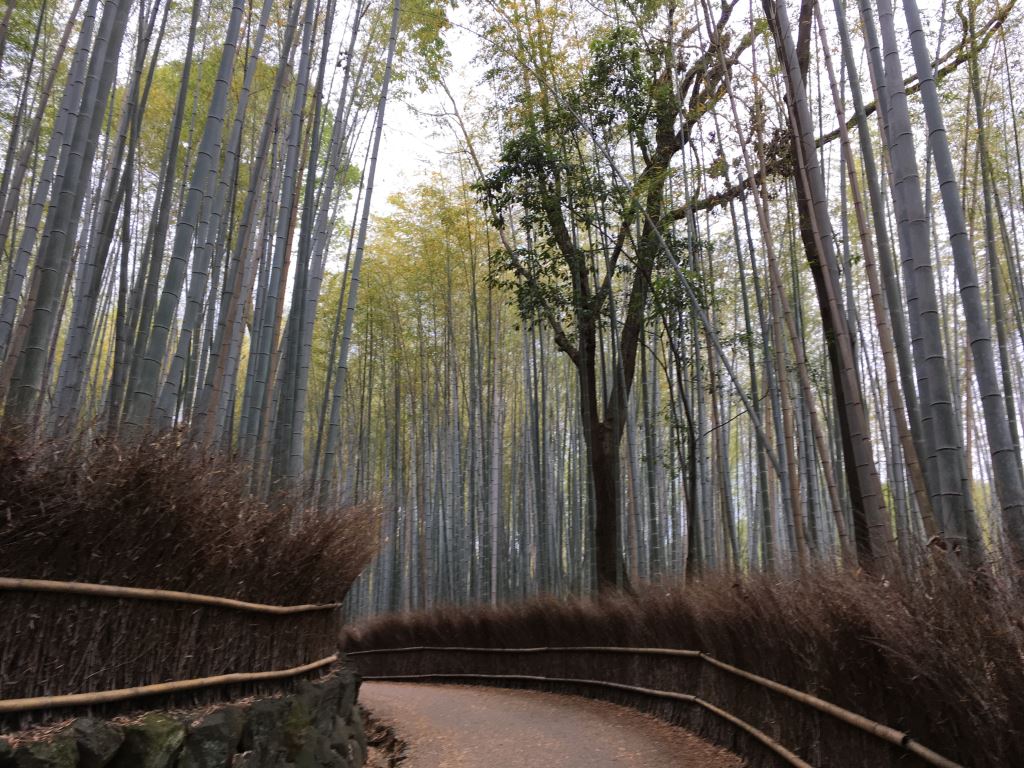
It also has more natural sights than Osaka, so if you need some greenery to recharge after Tokyo, it’s the perfect choice – but if you love the buzz of cities, crowds, and nightlife, Kyoto is going to feel like staying in a small town.
Verdict: They both do what they do very well!
6. are you a foodie.
Then you’re going to be in your element, whichever you pick! However…
Osaka is said to be the foodie capital of Japan. If you want to nibble your way around a city, then Osaka is the one to pick.
Dishes you shouldn’t miss include takoyaki (octopus balls), and okonomiyaki (a pancake you cook yourself).
Also, try kushi-katsu, which is basically deep-fried food on sticks that you dip into sauce. Lastly, definitely visit Kuramon Market and just try whatever looks good from the stalls.
Go here next for the full list of the 9 foods you absolutely must try in Osaka, and where to try them.

Kyoto is probably less renowned for specific dishes than Osaka, but you’ll still eat well there.
If you’re looking for high-end dishes – the Michelin Guide includes a few more restaurants in Kyoto than in Osaka – but it’s close.
The World’s 50 Best lists 10 bars and restaurants in Osaka. And has 12 listings for Kyoto.
You can also spend a very happy afternoon wandering around Nishiki Market in Kyoto and leave pretty full!
Verdict: Osaka is Foodie Central, Kyoto Comes Close
Neither will disappoint, but Osaka offers more specialty dishes and, from my experience, has better food at a lower budget. I also find it easier to find places to eat in Osaka.
7. Do You Have Kids With You?
All kids are different, but Osaka has more obvious child-friendly attractions than Kyoto, not least because it’s home to Universal Studios with its minions, Super Nintendo World, and the Wizarding World of Harry Potter .
You’ll also find the Cup Noodle Museum, a huge aquarium, two skyscrapers with viewing decks, and the smaller but still cool Tsutenkaku Tower.
You’ll also find cat cafes, dog cafes, and even reptile cafes in Osaka.

This doesn’t mean Kyoto doesn’t have things for children – the Arashiyama Monkey Park is incredibly popular with children of all ages, the stone men at Otagi Netunbusi temple, will entertain kids, and Yokai Street, which is full of models of Japanese monsters can be fun, still Osaka has the big ticket items.
Nara is also a great place to take children because of its ‘friendly’ deer – but as it’s just as easy to get to from Osaka as Kyoto, either destination works there.
Verdict: Osaka is Great For Kids
Osaka has more obviously child-friendly attractions and, as they aren’t all right in the center of town, if you’re going to do more than one of them, you’re probably going to want to base yourself in Osaka to see them, or you’ll waste too much time traveling.
Oh, if you are going to Universal Studios, booking your tickets in advance is a good idea. Have a look at buying those here.
If you aren’t sure how the Universal ticketing and express pass system works, then you need to take a look at our guide to USJ tickets as it can get confusing.
8. Do You Hate Crowds?
You’re not going to get away from people in either city, but while the crowds in Kyoto tend to be speaking 15 different languages and peering at maps, the crowds in Osaka tend to feel more local. It doesn’t always feel as much like a tourist town as Kyoto does – I spent an afternoon in Spa World in Osaka and was the only foreigner there.
If you want to get to the Kyoto sights away from the crowds, you are better off staying in Kyoto and visiting first thing in the morning, or, after the day trippers have gone home (see more tips on avoiding the crowds in Kyoto here).
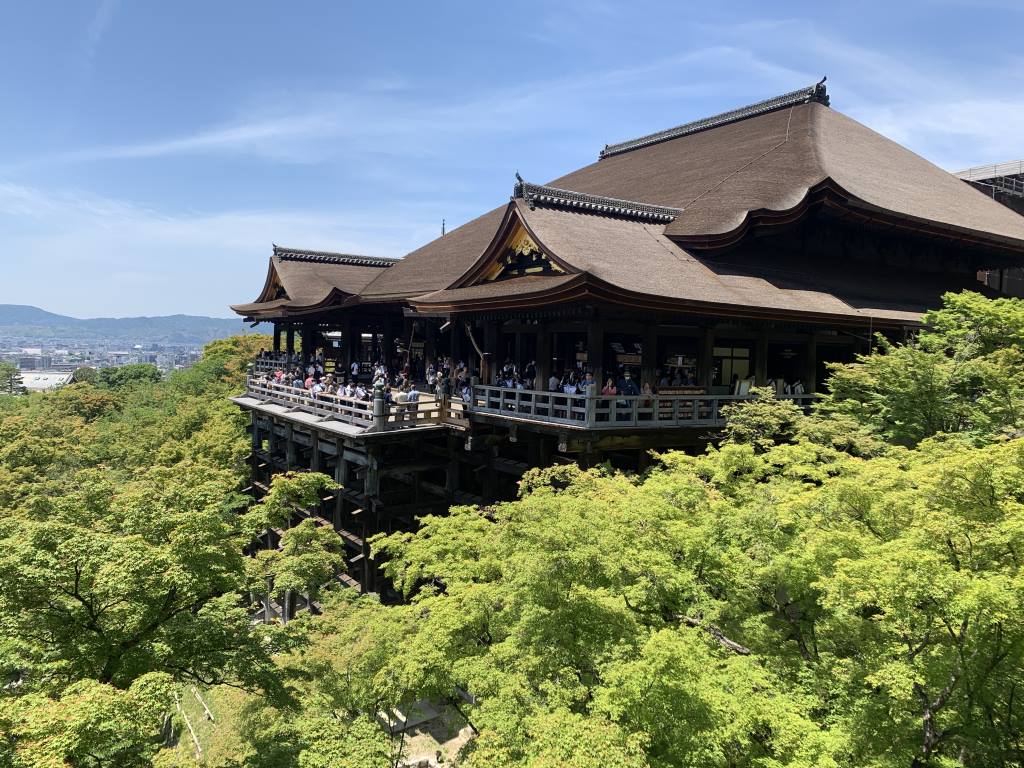
Verdict: Stay in Kyoto to Beat the Crowds
Staying in Kyoto helps you see some of the biggest attractions before or after the day trippers arrive, but it can feel like there are no locals around in the center of town.
9. What Season Is It?
You might think this is weather-related, but the weather isn’t going to be a major factor in whether to stay in Osaka or Kyoto as the general temperatures in both cities are likely to be very similar on any given day, but if you’re still undecided about which place to stay in, I think which season it is might play a part in that final decision.
If you’re not sure when to travel, find our guide to the best time to Visit Kyoto here.
During busy times like the cherry blossom season of the peak of the autumn leaves, prices will rise in Kyoto.
Staying in Kyoto when these are on may be considerably more expensive than Osaka – but there again, you might want to be in town to beat the crowds.

If you’re day-tripping to Kyoto and want to see as much as possible, it needs to be a long day so you can get to some of the big sights early in the morning or later in the evening.
That’s going to be easier if it’s light outside.
If the only daylight you have is between 7 am and 5 pm as it is in December, you’re not going to see as much as in the height of summer when the sun is up at 5am and out until 7pm.
In summer, it’s therefore easier to stay in Osaka and take one, or two, long day trips to Kyoto than it would be in winter.
Conversely, Osaka is more of a late-rising, late-night town, and you want it to be dark to see the lights, so if you’re traveling in winter, you might want to base yourself in Kyoto to catch as many sights as you can in daylight and head to Osaka later in the day.

Verdict: Differs for Staying vs Day Trips
I’ve traveled to both Osaka and Kyoto three times each, and I have to admit, I have a favorite. I love Osaka and haven’t quite found my happy place in Kyoto yet so, right now, Osaka would win for me. Why?
I’m a wanderer. I don’t really like to tick off big sights but instead find small details.
I love photographing old Japanese buildings and not knowing what I’m going to find around the corner and despite all the history in Kyoto, I prefer the neighborhoods of Osaka.
I also love anything kitsch and garish – so while I like Kyoto’s Nishiki Market, it was Osaka’s Kuramon Market with its giant prawns hanging from the ceiling that stole my heart.
The sight of the giant waving crab and the bright lights of Dotonbori make my heart sing and I’m a big fan of wandering around Shinsekai.

Osaka also has Den Den town – its equivalent of Tokyo’s Akihabara. While it’s not at the same scale, it’s also somewhere I can send my partner, who loves all things electronic, while I go and indulge my love of aimless meandering.
Don’t get me wrong, the temples in Kyoto are beautiful – but I can only do two or three a day before temple fatigue sets in – and I really dislike the crowds.
I don’t quite get Kyoto. So far, I’ve not really found anywhere that feels comfortable there for me. It’s either too touristy or too high-end. The closest I’ve come to enjoying Kyoto at night was Karasuma.
I have also never had a truly memorable night out in Kyoto (although I did spend an evening in a bar run by a monk that was interesting, if eye-wateringly expensive).
Plan Your Day With Our Notepads
Our Japan-themed notepads are perfect for noting down your Japan plans – or, your memories once you touch down.
There are many designs to choose from – from cute to classic.
Check them out at our Japlanease shop on Amazon

In Osaka, though, I ended up going to a karaoke bar where we got talking to an English teacher, who invited us to an underground bar where we stayed until the sun came up.
She then invited us to an S&M bar the next night where she was performing (we sadly had to decline as I had nothing to wear for that little outing in my holiday capsule packing).
I do intend to keep visiting Kyoto, though in an attempt to develop the same love for it as I have for Osaka (well that’s my excuse anyway).
One of the nicest things about the Kyoto va Osaka question is that even if you do pick one city to base yourself in, you don’t need to completely ignore the other city entirely.
Trains between Kyoto and Osaka are very regular, and as I said, they are only 14 minutes apart by Shinkansen, and that’s covered by your JR Pass if you have one, and if you don’t, the local trains take less than 50 minutes for just 410 yen one way.
You can find a list of all the routes from Osaka to Kyoto here – and we’ve even pinpointed which might be best depending on where you want to end up in the city (or what pass you’re using).
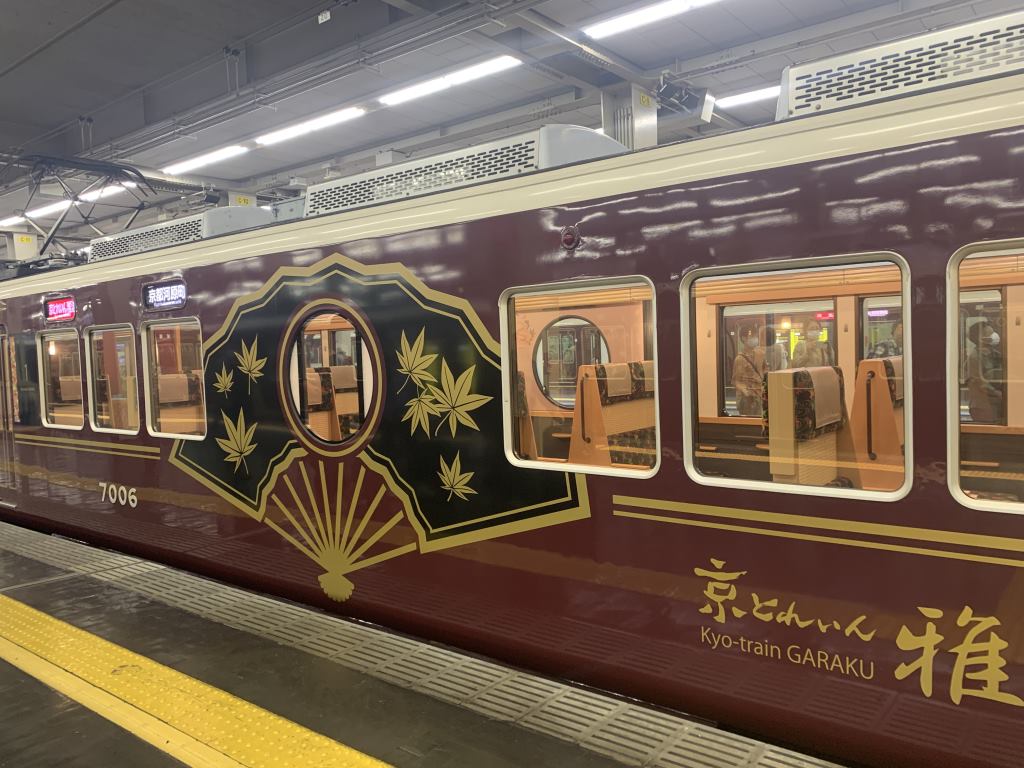
If you’re taking your day trip at the weekend, you might also want to travel on the very pretty Kyo Train Garaku, which even has a zen garden in it – and only costs 820 yen for a return ticket between Kyoto and Osaka – see more about the train with a zen garden here .
It’s therefore totally possible to base yourself in one city and visit the other one for a day. And here are some tips if you do…
Visiting Kyoto for a Day
If you do try to do Kyoto in a day, you’ll need to be organized and plan a very long day to see even just a fraction of the main sights as they are very, very spread out.
My advice would be to pick no more than 3-4 of the big sites to see and plan how you’re going to get from A-B carefully.
You may need to get some taxis and the odd bus as trying to get around the big sites in Kyoto solely by train is going to chew up a lot of time – and unless you’re just focusing on the center itself, it’s impossible to do it by walking.
Another option would be to hire a bike if you don’t mind cycling.
Or, look at the Hop on Hop Bus, which goes to most of the big sites and can save you walking – but you will have to time your visits to the sights carefully.
Or choose one area like Arashiyama or Higashiyama and see as much as you can – you can always come back another day if you decide that you wish you’d had more time – for this reason, I’d suggest visiting Kyoto early in your Osaka stay just in case.

Head to either Arashiyama Bamboo Forest or Fushimi Inari first or last in your day – both are open 24 hours and so if you can get there at first light or a little before dusk, you can spread out your day that bit further.
If I’m being very honest, the Bamboo Forest is not quite as impressive in the flesh (leaves) as it is in photos.
If your day is jammed and you have to cut something (and you don’t need the Instagram likes), you might want to cut that.
Saying that though, if you’re in Kyoto for a while, do visit it and the rest of Arashiyama as the surrounding area has lots and lots to do.
As mentioned above, you might want to have a plan for where you want to visit for lunch or dinner so that you’re not wasting precious time wandering around trying to find somewhere that looks good.
Osaka in One Day
You can get a lot done in Osaka as a day trip from Kyoto, as generally, once you get into the main tourist areas, the distances between the sites aren’t as great.
You can easily walk between them if you don’t mind racking up some steps, or Osaka does have a pretty good metro system (and the Enjoy Eco card gets you free travel for a day, so you can make the most of it).

If you like to wander, then you could start at the Namba Yasaka shrine (easily accessed from Shin Osaka on the Midsuji line), which opens early, then jump back on the Midsuji line to Abeno Harkus, Japan’s tallest building, arriving for when it opens at 10 am.
After admiring the view, walk to Shinsekai to admire the decorations and grab lunch. Wander up through Den Den town, head to Kuramon Market to see what’s on offer, or head straight to shop and see what’s going on in Amerikamura, hitting Dotombori once it gets dark.
If you want to see Osaka Castle, go here first as it opens at 9 am. Then, pick your other favourite sights from the list above.

It is harder to combine all of the more child-friendly activities into one day trip as they are more spread out – plus, Universal Studios will take pretty much a whole day on its own unless you get very lucky with the crowds.
If you’re coming to town with children, you might have to decide between the Cup Museum and the Aquarium so that you’re not spending lots of time on trains.
And, talking of trains, find the best routes from Kyoto to Osaka – the lines are the same as in our other post, but you might want to use a different one depending on where in Osaka you’re trying to get to.
So, there you have it – my guide on choosing whether to stay in Kyoto or Osaka. Did it help? Or do you have any more questions? Then, join our Facebook group and ask them there. I’ll do my best to help you out.
Who Writes This Blog?
My name is Helen Foster, and I’m a journalist and author. My travel articles have appeared in publications including The Australian, RAC Horizons, Jetstar Magazine, Sainsbury’s Magazine, and more.
I’ve traveled to Japan five times before- solo and with my partner – and I’ve just returned from trip six in June 2023. So, everything here is pretty up to date.

2 thoughts on “Stay in Kyoto or Osaka? 9 Questions to Help You Decide”
Thanks for great descriptions and advice. Third time in Japan so we have done Mount Fuji, Hiroshima and Kyoto. This time we plan to base in Osaka for a week, explore the city specifically for 2/3 days and travel around the area during the other days. Hotel booked. I can’t find a guide to tell me day trips, just ones including overnights. I love what you describe about Osaka but is there something more specific to what we want to do anywhere?
I haven’t done a specific Osaka day trips post (yet), but here’s a list of possible things to do in Osaka itself – https://japlanease.com/best-things-to-do-in-osaka/ As for possible day trips. Kyoto and Hiroshima are the obvious choices but you’ve done those, so other suggestions include Nara and Kobe (I will be doing posts on both of those when I get back from my next trip) and Himeji to see the castle. I’m going on a day trip to Wakayama on my next trip – I’m going to see the cat stationmaster at Kishi, but it might be worth you seeing if there’s anything interesting for you around the town. Nachi Falls is the big attraction but it is probably a bit far in a day. If you’re interested in Ninja history, then look at Iga – which I now want to add to my own itinerary! Going a bit further afield, If you like art, then you can do Naoshima as a (long) day trip from Osaka – this is from my other blog https://differentville.com/naoshima-pumpkin-art-island-in-one-day/ If you like animals, you might want to try Bunny Island – https://differentville.com/bunny-island-japan-guide/ Again it’s doable as a day trip but slightly long. That might help to be getting on with. If nothing appeals from that lot though, tell me a bit more about what interests you and I’ll see what comes to mind.
Comments are closed.
40 Things to Do in Kyoto, Nara, Osaka & Where to Stay
Marking the border of western and central Japan, the cities of Kyoto, Nara and Osaka are all firmly established as popular destinations for international visitors. The proximity of the three cities allows for easy day-trips from one to the other and as such, many travellers group them together on their itinerary but perhaps wonder what’s on offer in each. On this page you will find the following information:
— Best Things to Do in Kyoto
— Best Things to Do in Nara
— Best Things to Do in Osaka
— Best Places to Stay in Kyoto & Nara
— Best Places to Stay in Osaka
— How to Get to Kyoto, Nara & Osaka
— Private Charters & Tours in Central Japan
As the former capital of Japan and seat of imperial power for more than one thousand years, Kyoto is the most historically important city in country boasting numerous grand temples, shrines and palaces. A stylish and refined city, visitors to Kyoto will also encounter some of Japan’s best shopping, dining and endless charm.
Lying to the south of Kyoto, Nara preceded it as the imperial capital and to this day, retains much of its historic legacy as attested to by Japan’s largest temple, Todai-ji and its grand Buddha. Small and easy to navigate, the story of Nara and its powerful temples is inextricable from that of Kyoto.
Osaka stands apart from Kyoto and Nara, a big, brash and bold city known for its shopping, nightlife and some of Japan’s best food. Osaka is all about having a good time with many international visitors finding it notably more open and welcoming than more reserved cities like Tokyo. While your days in Kyoto and Nara will be full of temples, shrines and history, time spent in Osaka is all about indulging your taste buds with some great street food, having a drink and chatting to the locals.
This page includes 5 TIPS FOR GETTING THE MOST OUT OF YOUR TIME IN KYOTO before introducing our recommendation of the forty best things to do in Kyoto, Nara and Osaka. All destinations and activities on this page can be enjoyed all-year-round:
BEST THINGS TO DO IN KYOTO
As the residence of Japanese emperors from 794 to 1868, Kyoto – once called ‘Heian’ – served as the imperial capital for more than one thousand years. Thankfully saved from bombing during WWII, today the city retains much of its historic grandeur with numerous temples, shrines and palaces spread throughout the city. For most first-time visitors to Japan, Kyoto is a must-visit destination but it takes a little planning to get the most out of your time there.
Kyoto Station is the city’s major station with tourist buses running to all the well-known temples. A stop on the Tokaido Shinkansen line running from Tokyo to Osaka, many visitors choose accommodation in and around the station due to its convenience and large range of hotel choices. To start planning your visit, it’s worth noting a couple of things to avoid some common mistakes that first-time visitors make.
Here are our 5 top tips for getting the most out of your time in Kyoto:
Kyoto is a big, modern city : before first visiting the city, many visitors are under the misapprehension that Kyoto is a small city made-up of only historic neighbourhoods, temples and shrines. This is wrong. Kyoto is a large modern city with its many temples and other historic sites adjoining or within business, shopping and residential precincts. Be prepared to cover large distances and lots of people.
The temples are often far apart so make a plan : Kyoto has so many temples to see you won’t be left wondering where they are, however it’s important to note that many of the most famous temples are far apart therefore it pays to check which ones are close together and visit them at the same time. For that reason in our suggestions below, (when possible) we have grouped two temples in close proximity together , allowing you to visit them one after the other and saving you from wasting a lot of time with long bus or taxi rides back-and-forth across the city.
If it’s famous, it will be crowded : expect the most famous temples to be crowded – always. Kyoto attracts millions of visitors – both Japanese and from abroad each year – with most heading to same temples including Kiyomizudera, Ginkaku-ji, Ryoan-ji, Fushimi Inari Taisha and others. If you want to see these temples, go as early as possible to beat the large tour buses and don’t be afraid to aim for some of the less well-known temples. They are often equally beautiful and with notably fewer visitors, can be a much better experience.
Don’t try to see too much : many first-time visitors come with plans to see numerous temples but find that after three or four they are a little ‘templed-out’ and left wondering what to do. Our suggestion is aim to see two temples in the morning and then enjoy Kyoto’s other great things to do – including food, cafes, antique shopping, museums and galleries – in the afternoon and evening. If you allow for two days doing this you’ll see a handful of great temples with the energy to appreciate each one. We particularly recommend this in summer, when the city will be very hot and humid. Aim to see a couple of temples early and then head for lunch and an afternoon indoors to avoid the worst of the heat and humidity.
Kyoto looks beautiful in spring and lots of people will visit at that time : many visitors also aim to visit during Japan’s stunning ‘sakura’ (cherry blossom) season. While it’s certainly true that seeing Kyoto while the blossoms are in bloom is spectacular, this is no secret and you’ll be sharing the city with a ridiculous number of people. Streets and temples can be so crowded it’s near-on impossible to enjoy so if you do plan to go at this time, be prepared, go as early as possible and aim for some of the less famous temples.
Having said that, here’s our suggestion of things to do in Japan’s most historic city:
1 / KIYOMIZUDERA & SANJUSANGENDO
Translating as ‘Pure Water Temple’, Kiyomizudera is one of the most famous temples in Japan. As a World Heritage-listed site, the temple attracts a huge number of visitors each day, who come to enjoy the expansive temple precinct including its large wooden decking that sits 13 metres above the ground and affords a fantastic view looking back toward central Kyoto.
Most visitors heading to and from Kiyomizudera do so along the picturesque streets of Higashiyama – see below for details – adding to the crowds. To get the most out of your visit to the area, go early or late in the day to avoid large tour groups that tend to fill the streets and dominate the temple.
Most commonly referred to as ‘Sanjusangendo’ , the properly named Rengeo-in is the longest wooden structure and second largest temple in Japan. Housing 1001 golden ‘Kannon’ statues – the bodhisattva of mercy – the interior of the temple is one of Kyoto’s most spectacular sights. Often overlooked, Sanjusangendo should not be missed as is only 25-minutes walk from the more famous Kiyomizudera.
2 / HIGASHIYAMA DISTRICT inc. YASAKA PAGODA
Located between Kiyomizudera and Yasaka Shrine, Higashiyama is one of Kyoto’s best-preserved historic districts. An enclave in which ‘old Kyoto’ lives on, the area retains the majority of its historic character with traditional buildings, including numerous stores, restaurants and residences lining the narrow streets.
Walking the streets of Highashiyama visitors can enjoy delicacies including ‘matcha’, sweets, pickles and more while enticing craft stores sell pottery and other traditional goods. Along the way, you can also enjoy another of Kyoto’s most iconic structure, the Yasaka Pagoda, which looms over the streets below. Always popular, the streets of Highashiyama will be crowded during the middle of the day. Most stores open between 9-10AM and close between 5-6PM. Try to avoid the middle of the day when large tour groups and masses of other visitors fill the streets.
3 / YASAKA (GION) SHRINE & MARUYAMA PARK
Also within walking distance of Kiyomizudera – approximately 20-minutes heading through the Higashiyama district – Yasaka Shrine , sometimes called Gion Shrine, is one of Kyoto’s most famous Shinto sites. The shrine complex is comprised of multiple structures including the ‘romon’ (gate), ‘honden’ (inner sanctuary), ‘haiden’ (offering hall) and dance stage bordered with hundreds of lanterns. A beautiful sight when lit a night, the shrine and central dance stage are the focal point the ‘Gion Matsuri’ held each year in July.
Adjoining the shrine, Maruyama Park is one of Kyoto’s best cherry blossom-viewing spots and always busy once the blossoms are in bloom each spring. Easily combined with a visit to Kiyomizudera and Higashiyama, be prepared for huge crowds if visiting when the blossoms are in bloom. The park is equally beautiful in October and November when its many trees are awash with autumn colours. Both the shrine and park are accessible at all times of day and admission is free.
Between Yasaka Shrine and Kamogawa (Kamo River) – which runs north to south through the city – you can wander into Gion – one of Japan’s most historic and famous neighbourhoods. Another of Kyoto’s best preserved historic areas, Gion is famous for its traditional ‘ochaya’ (teahouses) and attendant ‘geisha’. Whether or not you have visited Japan, chances are you will have a strong image in your mind of the fabled geisha. Beautiful yet other-worldly in appearance, the charm and gracefulness of the geisha seduce many and it is here, in Gion, that many still ply their trade.
Gion is home to many teahouses and traditional restaurants, offering some of Japan’s best ‘kaiseki’ and the chance to be entertained by geisha or their attendant ‘maiko’ (geisha apprentices) – see below for details. A common sight on the streets of Gion and Higashiyama around sundown as they head toward their evening engagement, geisha and maiko are an enchanting sight to behold but do not stop them for photographs. They are on their way to entertain and cannot risk being late. Please be respectful of their space and do not trouble them.
5 / NANZEN-JI & HIGASHIYAMA JOSHI-JI inc. GINKAKU-JI
Located at the base of the Higashiyama mountains, Nanzen-ji lies on the eastern outskirts of the city. One of the most important Rinzai sect temples in Japan – an important school of Zen – the temple complex is large and includes multiple historic buildings, stunning gardens and unique brick aqueduct that runs through the grounds. Approximately 2km / 25-minutes walk to the north of Nanzen-ji, the Higashiyama Joshi-ji temple complex includes another of Kyoto’s most famous temples – Ginkaku-ji or the ‘Silver Pavilion’ . Modelled on the Kinkaku-ji or the ‘Golden Pavilion’ – see below for details – Ginkaku-ji served as the retirement villa of shogun Ashikaga Yoshimasa until his death in 1490, and then converted into a Zen temple. Visitors wishing to visit both temples can do so by following the ‘Philosopher’s Path’ – a stone-paved trail along a canal and under cherry trees – between the two, a walk of 30 to 45 minutes.
6 / NIJO CASTLE & KYOTO IMPERIAL PALACE
Built in 1603 as the Kyoto residence of the famous shogun Tokugawa Ieyasu, Nijo Castle is an expansive historic precinct in the heart of Kyoto. As a World Heritage-listed site, Nijo is another of the city’s most important and historic destinations, providing a different experience to the many temples of the city due to its heavy fortification including moats and imposing stone walls. More than twenty historic structures – including the beautiful Ninomaru Palace – exist within the grounds demanding that you allow several hours to enjoy Nijo Castle completely.
Approximately 20-minutes walk from the castle, Kyoto Imperial Palace was the main residence of the Imperial Family until it was relocated to Tokyo in 1868. Located within the expansive Kyoto Imperial Park, the precinct also includes the Sento Imperial Palace with the current Imperial Palace dating to 1855.
7 / FUSHIMI INARI TAISHA & WALKING IN MOUNT INARI
Heading a little out of central Kyoto, Fushimi Inari Taisha is another of Kyoto’s most iconic spots. Famous for its thousands of ‘torii’, the famous gates lead visitors into the forest of Mount Inari, a sacred mountain in Shinto belief. Most visitors come to witness and photograph the gates but should you wish to walk the trails that ascend the mountain, the hike to and from the summit takes between 2 to 3 hours. With multiple shrines and ‘inari’ statues (mythical fox-like creatures) along the trails, exploring a little deeper into the precinct offers and escape from the crowds of the city.
8 / KINKAKU-JI & RYOAN-JI
Kinkaku-ji or the ‘Golden Pavilion’ is perhaps Kyoto’s most iconic temple. Located in the north of Kyoto and quite distant from some of the other famous temples located in the central/eastern Kyoto, the distinctive gold-leaf exterior of the temple is a beautiful sight set against a large pond and traditional garden. Dating back to the 15 th century, the current temple is a relatively recent 20 th century reconstruction.
Located nearby Kinkaku-ji, Ryoan-ji boasts Japan’s most famous rock garden. Originally the residence of an aristocrat, the villa was converted into a temple in 1450 with the exact origins and designer of its famous garden now unknown.
9 / ARASHIYAMA inc. TOGETSUKYO BRIDGE, BAMBOO GROVE & IWATAYAMA MONKEY PARK
Lying to the west – approximately 20 to 30-minutes from Kyoto Station by train or bus – Arashiyama attracts plenty of visitors, especially in spring and autumn when it is blessed with some of Kyoto’s best cherry blossom and autumn colours.
The area’s Togetsukyo Bridge is iconic and a popular photo spot for visitors while the Arashiyama Sagano Bamboo Grove – located between Tenryu-ji and Okouchi Sanso Garden – is one of Japan’s most photographed locations. A beautiful sight any time of year, walking through the bamboo in summer offers welcome relief from the heat, as the bamboo sways and a cool breeze refreshes the body and soul.
Not to be mistaken with the snow-bathing monkeys of the Jigokudani Monkey Park in Nagano, Arashiyama is home to the Iwatayama Monkey Park. While the monkeys found here are the same as those in Nagano – ‘nihon-zaru’, a type of macaque – the experience is completely different. In contrast to the monkeys of Jigokudani in Nagano, the monkeys of Iwatayama in Kyoto can be fed by visitors making them aggressive and with no hot spring for them to relax and unwind in, the experience can often by far more enjoyable.
10 / KYOTO NATIONAL MUSEUM
Located nearby Sanjusangendo, Kyoto National Museum is one of Japan’s most distinguished institutions. The museum displays are wide variety of collections and artefacts through both permanent and special exhibitions with many important cultural properties including sculptures, ceramics, calligraphy, paintings, and archaeological artefacts housed within the museum.
Special exhibitions are held on a regular basis, with the theme to each varying widely. Open daily – other than Mondays and over the New Year period – from 09:30 to 17:00, a visit to the museum can be easily combined with visits to Sanjusangendo, Kiyomizudera, Higashiyama, Yasaka Shrine and / or Gion.
11 / ’KAWADOKO´ DINING ON KAMOGAWA RIVERSIDE
Need a break from the temples or just want to sit, unwind and have a drink and a meal? Enjoying ‘kawadoko’ dining is the perfect way to do just that! Running along the banks of Kamogawa (Kamo River), numerous restaurants face onto the river, most of which erect large outdoor decks from May to September , allowing diners to eat and drink outside while cooled by the air moving off the river and up and around the decks. Below the restaurants and their stilted decks, the riverside walking trail is always busy, with families, friends and couples strolling the river or stopping to sit on its banks for a snack, drink or meal. Always popular, ‘kawadoko’ offers relief from the heat and humidity on summer nights when hundreds of diners sit on the outside decks enjoying some good food, plenty of cold drinks and lots of chatter.
12 / KYOTO STATION AREA
If you’re visiting Kyoto, chances are that at some point you’ll pass through Kyoto Station . The area in and around this large, modern station is worth allowing time for as it boasts some fantastic restaurants, shopping and plenty of hotels. It’s one of the most convenient places to stay in the city, allowing visitors to disembark the Shinkansen and quickly check-into their hotel and drop-off their luggage with all popular tourist sites accessible using bus or train services from the station.
13 / NISHIKI MARKET
Kyoto is a great shopping city and there’s no better place to start than its famous Nishiki Market . Running five blocks of the city, the market is one narrow arcade with all manner of vendors, shops and restaurants lining the tight street. One of Japan’s best markets, Nishiki is always busy but that just adds to the atmosphere, as visitors move along the arcade and between vendors selling traditional food, vegetables, fruit, meat, seafood and more. Regarded as ‘Kyoto’s Kitchen’, Nishiki is an excellent place to buy high-quality kitchenware including knives.
When visiting Nishiki make sure to take an appetite with you and hit-up as many vendors as you possibly can! The market is open every day from 09:00 to 18:00 with individual stores on their own chosen days.
14 / ANTIQUE & VINTAGE SHOPPING IN TERAMACHI-DORI
Intersecting with Nishiki Market, the Teramachi-dori precinct is home to many high-end antique stores and an increasing number of younger dealers selling more contemporary collectibles and hipster wares. As such, there are plenty of good cafes popping-up in the area, enticing visitors into the pleasant streets of the area in search of that special souvenir or keepsake from their time in Japan.
15 / ‘GEISHA’ & ‘MAIKO’ EXPERIENCE
While in Kyoto, visitors can enjoy a range of experiences that further their understanding and appreciation of Japanese history and culture. Following on from our description of Gion – see above – many visitors to the historic district take the chance to be entertained by a ‘geisha’ or ‘maiko’ for an afternoon or evening. While you need to be introduced to a geisha in order to acquire her time and a booking comes at considerable cost, it is one of Kyoto’s signature experiences and a rare chance to meet and be entertained by a practicing geisha or maiko.
16 / TEA CEREMONY EXPERIENCE
Geisha and maiko entertain their guests in several ways and one of the most essential is by performing a tea ceremony. Referred to as ‘sado’ or ‘chado’ in Japanese, tea ceremony is a true performance provided in honour of the guest. While acquiring the entertainment of a geisha or maiko for an evening will come at considerable cost, the good news is enjoying a tea ceremony is far more accessible with multiple venues spread throughout the city.
17 / SAMURAI & NINJA EXPERIENCE
Another fun experience for guests of all ages is trying your hand as a fully-fledged ‘samurai’. Japan’s fabled warriors have almost mythical status both at home and abroad, but they were very much real and the skills they honed can still be practiced today in Kyoto with tour providers providing samurai experience tours throughout the year. Another place to enjoy both samurai and ‘ninja’ experiences in the heart of the city, the Samurai & Ninja Museum combines a guided tour of their engaging samurai and ninja exhibitions followed by samurai and ninja training. Family-friendly and great fun for adults too!
18 / STAY AT A ‘RYOKAN’ OR ‘SHUKUBO ‘
As Japan’s cultural capital, Kyoto is a great place to enjoy a stay at a ‘ryokan’ (traditional guesthouse) or ‘shukubo’ (temple or shrine lodging). Spread through the city, prices range widely from sky-high to more reasonably priced, with the most famous guesthouses booking out far in advance. Often set among beautiful gardens or adjoining temples and shrines, both ryokan and shukubo offer refuge from daily life and a chance to truly unwind, relax and breathe in the history and tradition of the city. For more information, see our ‘Where to Stay in Kyoto & Nara’ page.
19 / ENJOY SOME OF JAPAN’S BEST ‘KAISEKI’
When staying at a ryokan, you’ll almost certainly be served ‘kaiseki’, a traditional multi-course dinner. With menus designed to promote the culinary heritage of the area and typically based around local seasonal ingredients, no two kaiseki menus are the same between guesthouses nor even the same guesthouse as the seasons change. Kyoto is also home to some of Japan’s best kaiseki restaurants, many of which also book-out far in advance. If you have your eye on a particular one, make sure to book it early and get ready to indulge your senses. For more information about the range of accommodation available in the city, see our ‘Where to Stay in Kyoto & Nara’ page.
20 / OHARA inc. SANZEN-IN
Heading out of Kyoto but still within the boundaries of the city, Ohara is a picturesque rural area approximately 60-minutes to the north of Kyoto Station. This tranquil enclave is often missed by international visitors but can be easily included in any itinerary when heading from Kyoto toward Fukui and Kanazawa or the other way around. Sanzen-in is the most famous attraction in the area. Founded by Saicho – a 9 th century monk who brought the Tendai school of Buddhism to Japan from China – the temple is set within beautiful gardens, at its most spectacular each autumn. Multiple temple buildings are connected by corridors with buildings housing multiple important artefacts. One of several important and beautiful temples in the area, a visit to Ohara offers an escape from the crowds at the famous sites in the central city.
21 / ENRYAKU-JI
Located in the forests of Mount Hieizan, Enryaku-ji is a historically important temple that will be immediately familiar to any devoted student of Japanese history. Headquarters of the Tendai sect of Buddhism, Enryaku-ji was founded in the 8 th century – also by Saicho – and at the height of its powers led as many as 3000 sub-temples and army of warrior monks. One of the most powerful institutions during the Heian Period, the monks of Enryaku-ji caused great problems for the emperors and court regularly threatening or invoking insurrection against them. Destroyed the powerful warlord Oda Nobunaga in the 16 th century, the complex and its many buildings were reconstructed during the Edo Period. Another temple often overlooked by international visitors, Enryaku-ji is well-worth the visit.
BEST THINGS TO DO IN NARA
Located to the south of Kyoto – approximately 45-minutes by train – Nara was the seat of power in Japan from 710 until 794 – when the emperor and court were relocated to Kyoto. The city boasts some of Japan’s oldest and most important temples and shrines, including the largest Buddhist temple in the country. Conveniently nearby both Kyoto and Osaka, many visitors choose to make a day-trip to Nara from either of those cities. Significantly smaller than Kyoto, Nara is easy to navigate with some of its most appealing attractions include:
22 / TODAI-JI – JAPAN’S LARGEST TEMPLE
The largest Buddhist temple in Japan, any visit to Nara surely starts with Todai-ji . Construction of the temple was completed in 752, Todai-ji and its attendant monks became so powerful that capital was soon moved from Nara to Kyoto in 794. The current temple is a reconstruction dating to the late-17 th century and houses the ‘Daibutsu’ – one of the largest and most revered Buddha statues in Japan. The seated Buddha measures 15 metres in height, a remarkable and inspiring achievement in craftsmanship.
Nearby the statue at the base of one of the temple’s supporting pillars, a hole is the same size as the nostril in the statue, a space that visitors try to pass through furthering them along the path to enlightening (and at the risk of getting stuck – it does happen!). Outside of the temple, the immense Nandaimon Gate with its fierce ‘Nio’ – two guardians of the temple – is equally impressive and acts at as the entrance to the temple and the surrounding Nara Park.
23 / NARA PARK
Nara Park is an expansive public area surrounding Todai-ji and other important cultural sites. Most famously, the park is populated by more than one thousand deer that have become a symbol of the city. Visitors are allowed to feed them and the official line is that some deer have learned to bow in asking for food – feel free to question how that might have come about. While some visitors find this experience enjoyable, the deer can be aggressive and intimidating for children and are known to bite the buttons of peoples’ clothing, mistaking them for food.
24 / KASUGA TAISHA
Located within the grounds of Nara Park, Kasuga Taisha is the most important Shinto shrine in the city. Founded in the same period as the city itself, the shrine is dedicated to the protector spirit or deity that is believed to reside there. Much-like the Grand Shrine of Ise – Japan’s most important Shinto site – sections of the shrine are deconstructed and then reconstructed every twenty years in order that the knowledge and skill required to maintain and build such shrines is retained. Famous for the hundreds of bronze lanterns that hang from buildings within the shrine, Kasuga Taisha is highly photogenic and a colourful contrast to the grand but more austere exterior of nearby Todai-ji.
25 / NARA NATIONAL MUSEUM
Also located within Nara Park, Nara National Museum is primarily dedicated to Japanese Buddhist art across both permanent and temporary collections. Holding many important cultural properties from Todai-ji and other temples, a visit to the museum aids in understanding the development of Buddhism in Japan and Nara’s pivotal role in that story.
26 / KOFUKU-JI inc. KOFUKU-JI NATIONAL TREASURE MUSEUM
Once of one of the most grand temples in Nara, Kofuku-ji was originally the family temple of the powerful Fujiwara clan – who effectively ruled Japan by dominating essential court positions through the Nara and Heian Periods. Today, the temple includes buildings of huge cultural importance including two pagodas, the Central Golden Hall, Eastern Golden Hall and Kofuku-ji National Treasure Museum housing some true treasures of Japanese Buddhist art.
27 / HORYU-JI
Declared a World Heritage site in 1993 and another of Japan’s most important Buddhist temples, Horyu-ji was founded by the semi-mythical Prince Shotoku – a hugely important figure in the establishment of Buddhism in Japan – in 607. One of the oldest temples in Japan, Horyu-ji is home to the world’s oldest surviving wooden structure built sometime in the Asuka Period (538-710). The extensive grounds are divided into two main precincts, the ‘Sai-in Garan’ (Western Precinct) and ‘Toin Garan’ (Eastern Precinct) with multiple historic buildings including gates, main halls, sub-temples and pagodas of great beauty found throughout.
BEST THINGS TO DO IN OSAKA
In close proximity to Kyoto and Nara, Osaka is one of Japan’s true metropolises and third largest city, behind Tokyo and Yokohama. With a reputation for being more brash and loud than Tokyo, Osaka has long been a merchant city and one of the few areas of Japan that maintained some contact with the outside world through trade during the country’s long, self-determined isolation.
As Japan’s third largest city, Osaka has several huge stations including Shin-Osaka Station on the Tokaido Shinkansen line running to Kyoto, Nagoya and onto Tokyo. A thriving city, Osaka is all about having a good time boasting some of Japan’s best food, shopping and nightlife. Though it may not have the historic attractions of Kyoto and Nara, if you’re asking whether it’s worth visiting, the answer is definitely yes! Friendly, fun and plenty to do other than visit temples, Osaka is just the tonic many visitors are looking for, starting with:
28 / THE FOOD – SOME OF JAPAN’S BEST!
Anyone who has visited Osaka will know all too well, it’s one great city for food! You’ll find fantastic food throughout the city starting and there’s no better place to start than the city’s famous Dotonbori precinct . Forget the fine dining of Kyoto, Osaka is all about eating on the street and packed, lively restaurants serving its famous:
OKONOMIYAKI
Often referred to as ‘Japanese pancakes’, ‘okonomiyaki’ originated in Kansai and therefore is more-or-less synonymous with Osaka. Cooked on hot plates, okonomiyaki most commonly combines flour batter and shredded cabbage and with an endless array of ingredients including pork or bacon, octopus, squid, shrimp, other vegetables, cheese… basically, whatever you can think of. Coated in a healthy doze of glazed sauce, ‘kewpie’ mayonnaise, and/or ‘bonito’ (fish flakes), enjoying okonomiyaki is basically a must-do while in Osaka. Local variants also include ‘negiyaki’, another savoury pancake including lots of Japanese leek.
‘Takoyaki’ or ‘octopus balls’ are another of Osaka’s tastiest street foods. Generous chunks of octopus are dipped in batter and cooked to a crispy texture on the outside and then topped with ‘takoyaki’ sauce, mayonnaise and bonito. Pickled ginger is often also included creating one tasty, tasty dish.
KITSUINE UDON
This hot bowl of ‘udon’ (wheat noodles) is served in a light ‘usukuchi’ soy sauce with simmered ‘aburaage’ tofu on-top. Served throughout Japan, Osaka’s kitsune udon is known for its light, sweet taste. Simple, filling and delicious!
‘Kushikatsu’ refers to batter and deep-fried meat and vegetables on skewers. The perfect beer food or snack to round-out a big night on the streets of Osaka, the appeal of kushikatsu is pretty apparent.
‘Kaisen’ or ‘seafood’ is an essential part of the Japanese diet and without doubt, one of the most enticing things to eat on the streets of Osaka. Everything is on offer from some of Japan’s best sushi and sashimi and local delicacies including crab – just look for the huge crabs along Dotonbori… they won’t be hard to spot.
29 / THE FOOD… AND THEN THERE’S ALL THE REST!
Osaka doesn’t just boast some of the best ‘washoku’ (Japanese food) in the country, it’s also home to some of the best international cuisine. Starting with food from Japan’s closest neighbours Korea and China, to Taiwanese, Vietnamese, Thai and beyond, Osaka offers the chance to eat some fantastic international cuisine and without having to pay too much for it!
Indian, Sri Lankan, Middle Eastern onto African cuisine, there’s plenty to choose from and while it might seem like an odd recommendation of something to do in one of Japan’s largest cities – one known for its local delicacies – if you’re looking for a break from washoku or just want to sample some tasty other treats, the many international eateries of Osaka are real highlights.
30 / THE NIGHTLIFE
In Osaka, food and nightlife go hand-in-hand. The city is brimming with bars, clubs and plenty to do at night, with friendly locals always ready for a chat and greeting you with a smile. Osaka is known to be a very open and welcoming city, with local residents often very keen to chat to international visitors and ensure they enjoy their time there. Unlike Tokyo, which at times can be somewhat reserved and hard to access, Osaka is noisy and a little more brash.
Wandering the streets you’ll spot plenty of places to have a drink – whether its beers stands on the street, bars or clubs you’ll receive a friendly welcome upon entry. If this is what you’re after, start with the areas around Dotonbori – see below – along with Shinsaibashi-suji , Namba and Amerika-mura and make sure to book your accommodation nearby – or risk missing the last train back!
31 / DOTONBORI
Boasting what are arguably Osaka’s most recognisable landmarks, Dotonbori is a hugely popular restaurant and shopping precinct that runs parallel to Dotonbori canal. On the bridge crossing the canal, visitors gather to photograph the city’s famous ‘Glico Man’ and other huge neon billboards while just along the road, the ‘Kani Doraku’ crab sign beacons diners inside to eat. Always busy, Dotonbori hums with activity and nightlife and is every way, one of Osaka’s most charismatic and famous enclaves.
The areas running along the sides of the canal itself have seen a lot of development recent years. Visitors can walk at length under the neon lights and past the hum and hustle of the city, with plenty of eateries and bars to choose from. Hectic and lively, this is the very heart of Osaka and for many people, is one of the most iconic areas of any city in Japan.
32 / SHINSAIBASHI-SUJI
Running north from Dotonbori, the covered Shinsaibashi-suji is a seemingly endless covered shopping, dining and entertainment arcade. It is the best-known shopping area in the city with everything imaginable on sale along its 600 metre stretch – from official brand stores to cheap knock-offs, excellent restaurants to quick and cheap eateries. The street’s eclectic mix of stores, restaurants and entertainment ensure an equally odd variety of people walking through the arcade. Often crowded and noisy, you might quickly need to escape from Shinsaibashi-suji but it is worth visiting for a snapshot of life in Osaka.
33 / NAMBA & AMERIKA-MURA
Within walking distance of Dotonbori and Shinsaibashi-suji in the direction of Osaka-Namba Station and JR Namba Station, the lively area of Namba is home to plenty of great little bars, eateries, clothing and record shops, and small clubs. One of the city’s youth culture hubs, time spent in Namba is always entertaining with plenty of young Japanese in the area guaranteeing an energetic atmosphere.
Most famously, the area adjoins Osaka’s famous ‘Amerika-mura’ (America village), a centre of youth culture known for its second hand clothing stores, independent galleries and cafes, music bars and shops, street art and plenty of nightlife. Located within easy walk of Yotsubashi Station or Shinsaibashi Station, Amerika-mura is worth the visit even if you feel too old to really get it.
34 / NAMBA PARKS
Located to the south of Namba Station, ‘Namba Parks’ is a shopping and office complex designed to mimic a natural canyon in the heart of one of Japan’s largest cities. Housing 120 stores, numerous restaurants serving all manner of cuisine, a cinema, terraced rooftop gardens and 3-storey office tower, Namba Parks acts as a refuge from the congestion of the surrounding city (and possibly much-needed relief from the noise and effects of the night before) and offers particularly welcome relief from the often oppressive heat and humidity of summer. Beautifully designed, you can easily spend a morning, afternoon, evening or entire day strolling through one of Osaka’s most enjoyable shopping and entertainment precincts.
35 / NIPPONBASHI ELECTRIC ‘DEN DEN TOWN’
An area equivalent to Tokyo’s Akihabara, Nipponbashi or ‘Den Den Town’ is something of a hub for Osaka’s ‘otaku’ culture. Located between Ebisucho Station to the south and Nipponbashi Station to the north, the streets of Den Den Town are full of shops selling all things ‘anime’, ‘manga’, electronics and all things pop-culture. Basically, it’s a nerd’s delight! Shops are concentrated along two main streets – Nipponbashi-suji / Sakai-suji and the parallel-running Ota Road – making it fairly easy to navigate and less crowded than Tokyo’s otaku neighbourhood of Akihabara, a visit to Den Den Town is typically good fun.
36 / UMEDA SKY BUILDING
One of Osaka’s most distinctive buildings, Umeda Sky Building is a 173 metre tall pair of towers connected by a ‘Floating Garden Observatory’ on the 39 th floor. From the observatory, visitors are afforded fantastic views of the sprawling metropolis, best enjoyed from the open-air viewing deck. Open daily from 09:30 to 22:30, admission is a rather steep JPY1500.
37 / OSAKA CASTLE PARK
Osaka Castle Park occupies a huge area in the heart of one of Japan’s largest cities including expansive public gardens, historic structures, along with multiple cultural and sports facilities. Centred around the reconstructed Osaka Castle – one of Japan’s largest castles – and surrounded by the original foundation walls and large moats, the park is in many ways the historic and public heart of the city.
First constructed in the late-16 th century, the castle was the largest in Japan at the time before it was destroyed in 1615. Rebuilt in the 1620, the castle was again destroyed in 1665 when struck by lightning and set alight. It was not until 1931 that the castle would be reconstructed again, miraculously surviving the heavy bombing of WWII the castle enjoyed renewal in the 1990s and remains one of Osaka’s most iconic sights. Open daily form 09:00 to 17:00 – other than December 28 to January 1 – the castle houses artefacts and materials relating to the history of the castle.
It’s important to note that the entire structure is a reconstruction with no original features inside, which can leave some visitors disappointed. As such, combining your visit to the castle with further exploration of the park is worthwhile. For visitors heading there in spring, Nishinomaru Garden is one of the city’s best cherry blossom-viewing spots while the rest of the park includes numerous shrines, temples, museums, restaurants and more.
38 / OSAKA AQUARIUM KAIYUKAN
Moving away from the heart of the city and to the Osaka Bay area, Osaka Aquarium Kaiyukan is another of the city’s most famous and popular destinations. The spectacular central tank is nine metres deep and home to the aquariums most famous attraction, a whale shark and other marine life from the Pacific Ocean. Other tanks display sealife from the Gulf of Panama, the Great Barrier Reef, the Tasman Sea, Antarctica along with other marine ecosystems. In addition to the main tanks, the aquarium includes interactive displays and special experiences including evening events along with multiple restaurants and shops.
39 / TEMPOZAN HARBOR VILLAGE
Osaka Aquarium is part of the larger ‘Tempozan Harbor Village’ precinct, a modern development on Osaka Bay also including LEGOLAND ‘Discovery Centre Osaka’, the boarding point for the ‘Santa Maria’ cruise ship, and ‘Tempozan Giant Ferris Wheel’.
At 100 metres in diameter and 112.5 metres tall, the ferris wheel is one of the largest in the world, taking 15-miuntes to ride and providing great views of Osaka Bay. In addition to these attractions, the ‘Naniwa Kuishinbo Yokocho’ is a food-based theme park modelled on 1960s Osaka streetscapes while the ‘Tempozan Marketplace’ is a modern dining and shopping complex including around 80 restaurants and stores.
40 / UNIVERSAL STUDIOS JAPAN (USJ)
Finally, located across from Tempozan Harbor Village – over the Tenpozano Bridge – Universal Studios Japan (USJ) is one of Japan’s most popular attractions. Divided into themed areas, the park brings the films of Universal Studios to life including Jurassic Park, Spiderman, Minions, Harry Potter and the newest area – Super Nintendo World. Rides range from gentle but fun kids amusements to rollercoasters and immersive simulators. The huge precinct also includes hotels, restaurants and shops and as one of not just Osaka’s but Japan’s most popular destinations, USJ is always busy but great, great fun.
BEST PLACES TO STAY IN KYOTO & NARA
As Japan’s most historic cities, Kyoto and Nara attract millions of visitor each year. As such, it is no surprise that there is plenty of accommodation of choose from, ranging from high-end hotels and traditional guesthouses, to mid-range and budget options dotted in and around the city. Our ‘Where to Stay in Kyoto & Nara?’ page listed the best areas including accommodation listings.
BEST PLACES TO STAY IN OSAKA
Osaka offers travellers a huge range of accommodation dotted throughout the city. To make your time there as easy as possible, we recommend choosing a hotel or guesthouse nearby a major train station, allowing you to move around the city and beyond with ease. Our ‘Where to Stay in Osaka & Kansai International Airport?’ page listed the best areas including accommodation listings.
HOW TO GET TO KYOTO, NARA & OSAKA
Kyoto Station and Shin-Osaka Station are stops on the Tokaido Shinkansen line making them easy to reach from Nagoya, Tokyo and beyond, while other shinkansen and express train lines running from the cities to regions throughout Japan. Within easy reach of both Kyoto and Osaka, Nara is under an hour away using local trains services allowing travellers to move easily to, from and between all three cities. For more information, see our pages: How to Get to Kyoto / How to Get to Nara / How to Get to Osaka .
PRIVATE CHARTERS & TOURS IN CENTRAL JAPAN
Based in Nagano and operating all year round, we are a No.1-rated tour and charter operator , offering a range of services including group tours, private tours and charters. We can arrange transport including a private vehicle and driver, to transport you to, from and between any destination in Central Japan.
Our drivers and vehicles are fully certified , allowing us to transport you to and from your preferred destinations , in combination with any activity that suits your interests and schedule including transport to and from any destination in Central Japan. All vehicles are fitted with a protective screen – separating the driver from passenger and luggage area – and our drivers wear protective masks , allowing you to move between your destinations in comfort and safety.
We can arrange both private tours with an English-speaking guide or a private charter, including a private vehicle and driver but without a guide. We’d love to be part of that experience and help you discover even more!
Why choose us?
Awarded a 2022 TripAdvisor Travelers’ Choice Award for our 1-Day Snow Monkeys, Zenko-ji Temple & Sake Tour – recognised as one of the Top 10 Experiences in Japan – we have the local knowledge and experience to help you get the most out of your time in Nagano and Central Japan.
Got a question about arranging a charter or tour in Central Japan? Contact us and let’s get planning together!
Kyoto, Nara & Osaka
How to Get to Kyoto
How to Get to Nara
How to Get to Osaka
10 Best Places to See Autumn Leaves in Kyoto
Where to Stay in Kyoto & Nara?
Where to Stay in Osaka & Kansai International Airport?
1-Day walking tour in Osaka:Castle, temples and Ukiyoe
Kyoto Heritage Path - From Fushimi Inari's Mystery to Kiyomizu Temple Majesty
1-Day Walking Tour in Nara: Palace, Deer and Inkstick
1-Day Walking Tour : Traversing Kyoto's Scenic West - Arashiyama to Kinkakuji
1-Day Walking Tour around Kobe : Mountains, Sea and Sake
1-Day Walking Tour in Himeji : Castle, Garden and Aizome (Indigo Dyeing)
Kiyomizudera
Higashiyama District inc. Yasaka Pagoda
Yasaka (Gion) Shrine
Maruyama Park
Higashiyama Joshi-ji inc. Ginkaku-ji
Sanjusangendo
Fushimi Inari Taisha
Nijo Castle
Kyoto Imperial Palace
Kyoto National Museum
Arashiyama Sagano Bamboo Grove
Togetsukyo Bridge
'Kawadoko' Dining on Kamogawa Riverside
Nishiki Market
Antique & Vintage Shopping in Teramachi
'Geisha' & 'Maiko' Experience in Kyoto
'Sado' (Tea Ceremony) Experience in Kyoto
Samurai & Ninja Museum with Experience
Ohara inc. Sanzen-in
Kasuga Taisha
Kofuku-ji inc. National Treasure Museum
Nara National Museum
Shinsaibashi-suji
Amerika-mura
Namba Parks
Nipponbashi Electric 'Den Den Town'
Umeda Sky Building
Osaka Castle Park
Osaka Aquarium Kaiyukan
Tempozan Harbor Village
Universal Studios Japan (USJ)
Kyoto: Kyoto Station Area
Kyoto: Sanjo Station Area
Kyoto: Kiyomizu-Gojo Station Area
Kyoto: Arashiyama Station Area
Nara: Kintetsu-Nara Station Area
Nara: JR Nara Station Area
Osaka: Umeda Station Area
Osaka: Namba Station Area
Osaka: Shinsaibashi Station Area
Kobe: Arima Onsen Area
Osaka: Shin-Osaka Station Area
Osaka: Yodoyabashi Station Area
Osaka: Hommachi Station Area
Osaka: Osaka Castle Park Area
Osaka: Tennoji Station Area
Osaka: Universal City Area
Osaka: Osakako Station Area
Osaka: Kansai Airport Station Area
Kobe: Nankinmachi 'Chinatown' Area
Kobe: Sannomiya Station Area
Kobe: Bay Area
Himeji Station Area
- Media & Industry
- Meetings & Events
- Select Language 简体中文 繁體中文(香港) 繁體中文(臺灣) India (English) Bahasa Indonesia 한국어 ภาษาไทย Tiếng Việt Singapore (English) Philippines (English) Malaysia (English) Australia/New Zealand (English) Français Deutsch Italiano Español United Kingdom (English) Nordic countries(English) Canada (English) Canada (Français) United States (English) Mexico (español) Português العربية Japan(日本語) Global (English)
- India (English)
- Bahasa Indonesia
- Singapore (English)
- Philippines (English)
- Malaysia (English)
- Australia/New Zealand (English)
- United Kingdom (English)
- Nordic countries(English)
- Canada (English)
- Canada (Français)
- United States (English)
- Mexico (español)
- Global (English)
- Fujiyoshida
- Shimonoseki
- Ishigaki Island
- Miyako Island
- Kerama Island
- Tokyo Island
- Koka & Shigaraki
- Hida Takayama
- Ginza, Nihonbashi
- Beppu & Yufuin (Onsen)
- Ginzan Onsen
- Nagasaki Islands

- Kumano Kodo
- Shikoku Karst
- Amami Oshima
- Hachimantai
- Omihachiman
- Aizuwakamatsu

- Diving in Japan
- Skiing in Japan
- Seasonal Flowers in Japan
- Sustainable Outdoors
- Off the Beaten Track in Japan
- Scenic Spots
- World Heritage
- Home Stays & Farm Stays

- Japanese Gardens
- Japanese Crafts
- Temple Stays
- Heritage Stays
- Festivals and Events
- Theater in Japan
- Japanese Tea Ceremony
- Cultural Experiences in Japan
- Culture in Japan

- Local Cuisine Eastern Japan
- Local Cuisine Western Japan
- Local Street Food
- Japan's Local Ekiben
- Japanese Whisky
- Vegetarian and Vegan Guide
- Sushi in Japan Guide
- Japanese Sake Breweries

- Art Museums
- Architecture
- Performing Arts
- Art Festivals
- Japanese Anime and Comics
- Japanese Ceramics
- Local Crafts

- Scenic Night Views
- Natural Wonders
- Theme Parks
- Samurai & Ninja
- Iconic Architecture

- Wellness Travel in Japan
- Japanese Ryokan Guide
- A Guide to Stargazing in Japan
- Relaxation in Japan
- Forest Bathing (Shinrin-yoku)

- Experiences in Japan
- Enjoy my Japan
- National Parks
- Japan's Local Treasures
- Japan Heritage
- Snow Like No Other
- Wonder Around Japan

- Visa Information
- Getting to Japan
- Airport Access
- COVID-19: Practical Information for Traveling to Japan
- Anime Tourism
- Countryside Stays
- Accessible Tourism
- Hokkaido Great Outdoors
- Scenic World Heritage in Tohoku
- Shikoku’s Nature and Traditions
- Southern Kyushu by Rail

- Traveling by Rail
- How to Travel by Train and Bus
- JR Rail Passes
- Scenic Railways
- Renting a Car
- Sustainable Travel in Japan
- Travel Brochures
- Useful Apps
- Online Reservation Sites
- Eco-friendly Accommodation
- Luxury Accommodations
- Traveling With a Disability
- Hands-free Travel
- How to Book a Certified Tour Guide
- Volunteer Guides
- Tourist Information Center

- Japanese Manners
- Spring in Japan
- Summer in Japan
- Autumn in Japan
- Winter in Japan
- Cherry Blossom Forecast
- Autumn Leaves Forecast

- Japan Visitor Hotline
- Travel Insurance in Japan
- Japan Safe Travel Information
- Accessibility in Japan
- Vegetarian Guide
- Muslim Travelers
- Safety Tips

- JAPAN Monthly Web Magazine
- Arts & Cultures
- Nature & Outdoor
- Festivals & Events
- Insider Blog
- Things to do
- Local Guides
- Food & drink
- Traditional
- Hokuriku Shinetsu

My Favorites
${v.desc | trunc(25)}
Planning a Trip to Japan?
Share your travel photos with us by hashtagging your images with #visitjapanjp
Kansai Osaka Bright, gaudy and playful: Osaka provides ample amusement with little pretension
- Destinations
Osaka is a charming, relaxed city best known for its food, fun and nightlife—with some history and culture peeking through
How to get there.
Osaka is an excellent base for exploring the greater Kansai region, which includes Kyoto, Nara, Kobe and Wakayama. Each of these areas is a one-hour train ride from Osaka’s central transportation hubs (Osaka Station in the north, and Namba Station and Tennoji Station in the south). Kansai International Airport (KIX) is rivaled only by Narita Airport in Tokyo in size and scope, and is serviced by all major airlines. There are many direct flights between KIX and many major cities in the US, Europe and Australia.
- The neon lights of Dotombori Bridge and Osaka’s Minami area
- Exploring Osaka Castle Park and Expo Memorial Park, the site of Expo '70
- Partaking in major seasonal festivals including Tenjin Matsuri, Kishiwada Danjiri and Ebessan
- Indulging in famous culinary delights, particularly in neighborhoods such as Tenma and Ura Namba
Recommended for You

Cherry Blossoms
Forecast of first bloom
25 Mar 2024
Forecast of full bloom
02 Apr 2024
Explore Osaka by Area
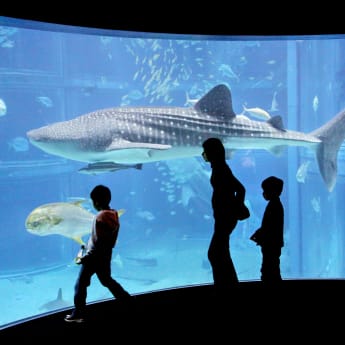
Trending Attractions in Osaka
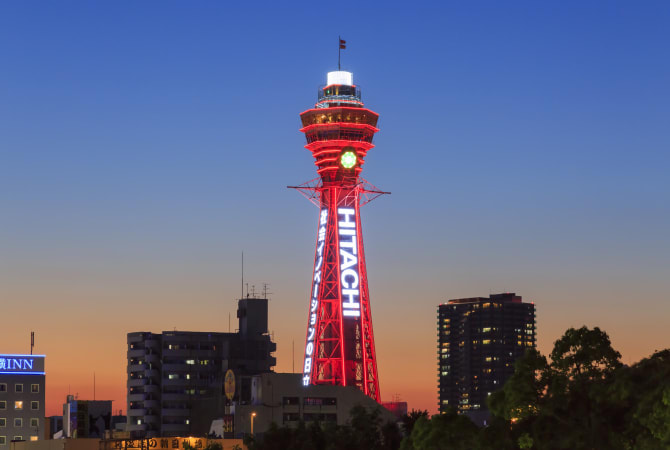
Local Specialties
Iwa okoshi are candied puffs made from millet. They've been produced in Osaka since 1185. Think of them as cereal bars with eight centuries of history behind them.
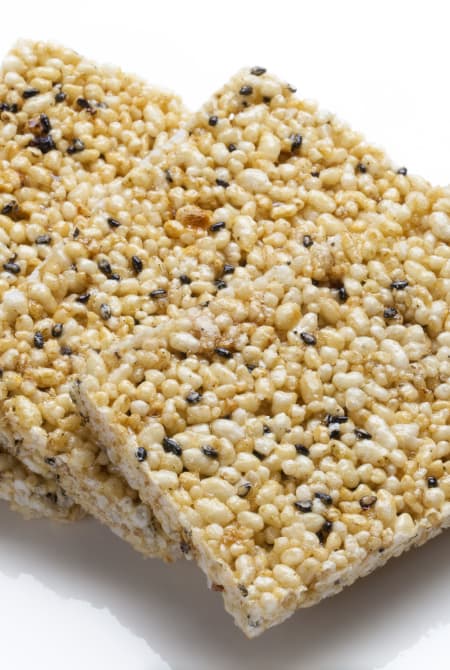
Okonomiyaki
Okonomiyaki are savory pancakes made with shredded cabbage, flour, egg and dashi, and either cooked at your table for you or left for you to cook yourself. The latter option is much more fun. A long list of toppings and combinations are available, with some of the more common ones being pork, shrimp, octopus and cheese.
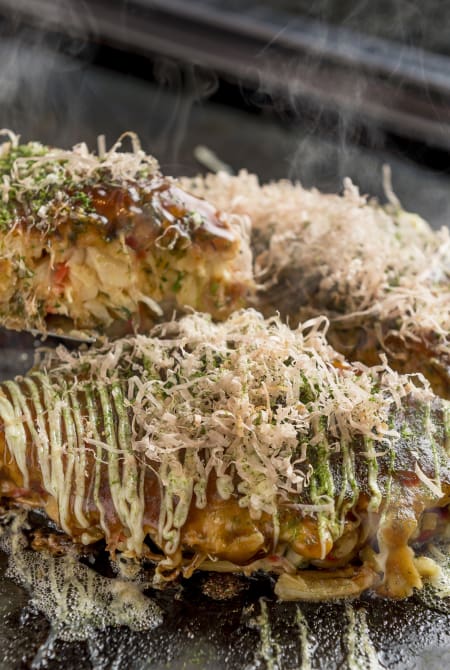
Bits of octopus combined with pickled ginger and green onions, mixed in a batter and grilled in a special mold. The resulting spheres are crispy on the outside and tender on the inside. An Osaka classic topped with Worcestershire sauce, ginger and seaweed flakes.

Osaka Kongo Bamboo Blinds
Bamboo blinds predate the Heian period (794-1185), and were first used inside the Imperial palace and the residences of nobles. Finely crafted and elegant Osaka Kongo sudare, made of quality bamboo from the foot of nearby Mt. Kongo, have a beauty and ambiance that is quintessentially Japanese.
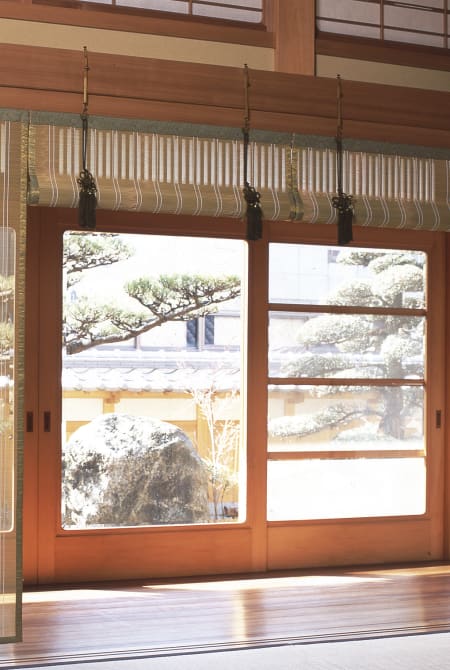
Sakai Forged Blades
Sakai hamono are hammer-forged blades from Sakai and Osaka. Crafted using traditional blacksmithing techniques, these cutting utensils are prized for their strength and edge geometry.
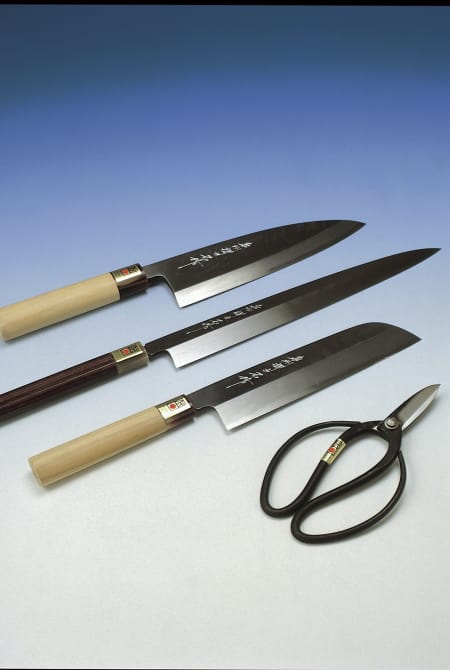
Seasonal Highlights
A sea of pink fills the prefecture's parks and boulevards, and the city comes out in full force to celebrate the gorgeous views at Osaka Castle, Yodogawa Riverside Park and the Osaka Mint.
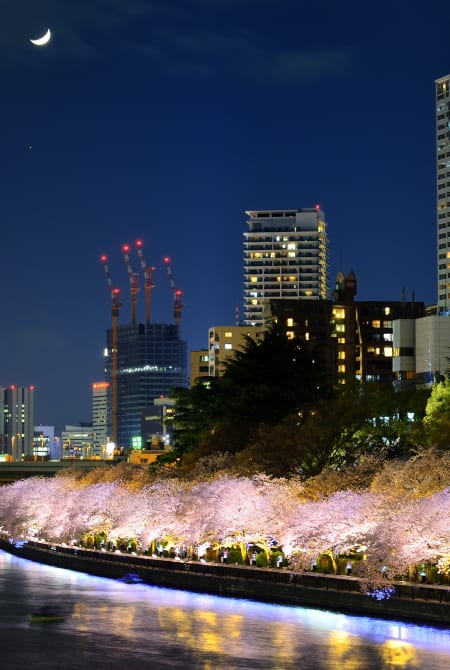
Festive spirits and outdoor amusements take everyone's minds off the stifling heat. Osaka's foremost festival, the Tenjin Matsuri, thrills the crowds and many head for the prefecture's southern beaches. Frequent firework displays brighten the night.
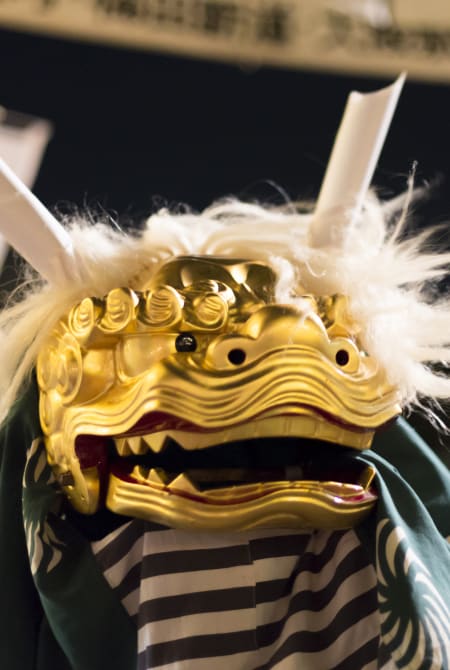
As summer's humidity dissipates, the leaves turn fiery red and provide a striking backdrop for outdoor adventure. The Midosuji Parade brings a vibrant procession and marching bands down Osaka's grand boulevard.
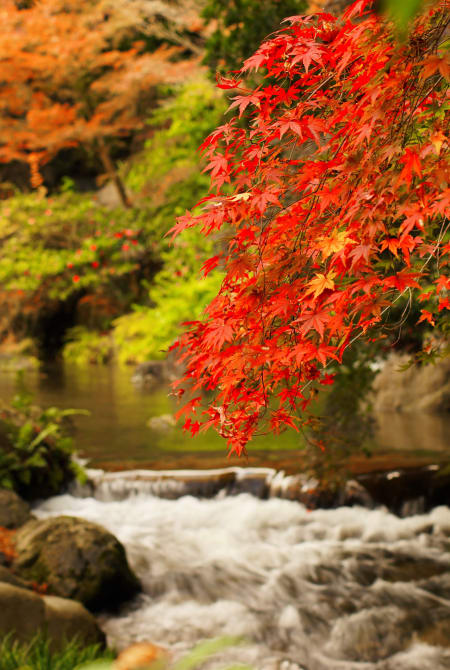
Holiday illuminations light up the urban areas and end-of-year festivities get into full swing. Runners from all over the world gather for the Osaka International Women's Marathon.
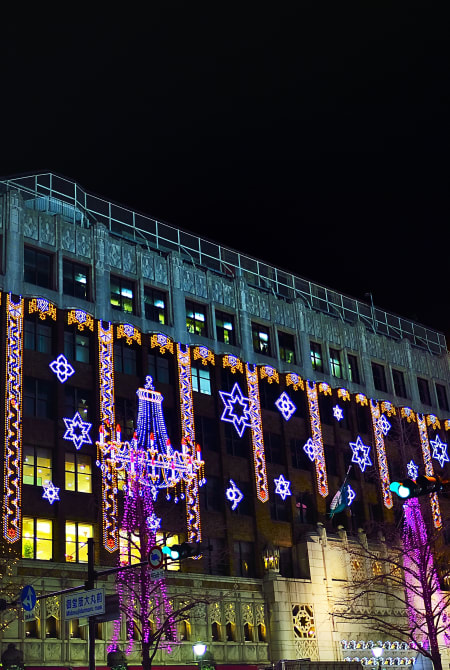
Related Links
Search for accommodation in Osaka
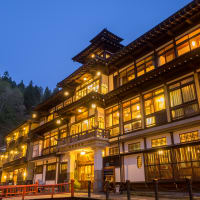
How to get to Kansai International Airport

Explore Nearby Prefectures
Please Choose Your Language
Browse the JNTO site in one of multiple languages
Inside Osaka
Your Osaka Travel Guide
How To Travel From Kyoto To Osaka
It’s very easy to travel between Kyoto and Osaka. The shinkansen is fastest (14 minutes, Y1420). There’s also the private Keihan Line (51 minutes, Y410) and Hankyu Line (44 minutes, Y400).

The Takeaway
- The shinkansen (bullet train) is the fastest way to travel between Kyoto and Osaka (14 minutes, Y1420). It runs between Kyoto Station and Shin-Osaka Station (from there, you can take the Midosuji subway line to downtown Osaka). This is great for Japan Rail Pass holders (just note that you can’t ride the Nozomi trains with this, but you can ride the Hikari, which is just as fast for this leg).
- If you don’t have a Japan Rail Pass, the best way between Kyoto and Osaka is one of the private rail lines: the Hankyu Line or the Keihan Line, both of which run from downtown Kyoto to downtown Osaka.
- Or, if you’re near Kyoto Station and don’t have a Japan Rail Pass, you can take the regular JR Tokaido Line, which runs from Kyoto Station to JR Osaka Station (29 minutes, Y560). Just be sure to take a shinkaisoku (express) as the locals are very slow.
- The Hankyu Line is convenient for people traveling from central/downtown Kyoto. There are stations at Shijo-Kawaramachi and Shijo-Karasuma. From Kawaramachi in Kyoto to Umeda in downtown Osaka, it takes 44 minutes by limited express (tokkyu) and costs Y400.
- The Keihan Line is convenient for people traveling from the east side of Kyoto. There are stations along the Kamo-gawa River at Demachiyanagi, Sanjo, Shijo, Gojo and Shichijo. From Sanjo in Kyoto to Yodoyabashi in downtown Osaka, it takes 51 minutes by limited express (tokkyu) and costs Y410.
Check Osaka Hotel Availability
Destination, check-in date, check-out date.

The Details
Shinkansen (bullet train) between kyoto and osaka.
The fastest way to travel between Osaka and Kyoto is the shinkansen (bullet train). This costs Y1420 and takes 14 minutes. In Osaka, the shinkansen operate from Shin-Osaka Station. In Kyoto, they operate from Kyoto Station. This is a great option for Japan Rail Pass holders. Note, however, that you cannot ride the Nozomi shinkansen with a Japan Rail Pass, but you can ride the next fastest type of shinkansen, which is called the Hikari. Between Shin-Osaka and Kyoto, the Hikari and Nozomi are equally fast, so this doesn’t matter at all – but just make sure you board a Hikari so the conductor doesn’t hassle you.
(See our separate page for details about how the Japan Rail Pass works and how to buy it).
Osaka Holiday Essentials
- Where To Stay In Osaka: See our guide to the best areas and the best hotels to stay in Osaka .
- Things To Do In Osaka: Check this overview of Osaka activities with links to all the key information.
- Flights To Osaka: Find the cheapest flights to Osaka and flight times from scores of airlines with Skyscanner .
- Osaka Packing List: Don’t forget to take any of the essentials with our comprehensive Packing List For Japan .
- Travel Insurance: World Nomads offers simple and flexible travel insurance. Claim online anywhere in the world.
Note that Shin-Osaka is in the north of Osaka, which is a little inconvenient. Luckily, Shin-Osaka is on the Midosuji subway line, which stops in downtown Osaka (Umeda, Honmachi, Shinsaibashi, Namba, Tennoji etc).
You don’t need reservations to ride the shinkansen between Osaka and Kyoto. In fact, reservations are inconvenient since they tie you to a particular train. It’s much better to just show up and jump on the next Hikari or Kodama shinkansen going your way. Even if all the unreserved seats are full, you can stand at the end of the carriage for the short ride between Osaka and Kyoto.
Shinkansen Schedules and Timetables
- English-language shinkansen timetables: JR Central English Site
- English-language timetable and route search: HyperDia
- You can view timetables and buy individual tickets for Kyoto to Osaka online.
Hankyu Line Between Kyoto and Osaka
If you don’t have a Japan Rail Pass, or if you’re in downtown Kyoto and want to get right into downtown Osaka without going via Kyoto Station and Shin-Osaka Station, the private Hankyu Line is probably your best option, especially if you’re near Shijo-Kawaramachi or Shijo-Karasuma (both in downtown Kyoto). From Hankyu Kawaramachi Station in Kyoto to Umeda in downtown Osaka, it takes 44 minutes by limited express (tokkyu) and costs Y400. Be sure to take a limited express as all the other trains are very slow. Also, the limited expresses have comfortable seats, while the slower trains only have limited bench seats. In Osaka, the Hankyu Line operates from Umeda, which is directly next to JR Osaka Station in the Kita District of Osaka. Here’s a tip: If you want to be assured of a seat from Kyoto, get on at Kawaramachi.
Keihan Line Between Kyoto and Osaka
Another good option if you don’t have a Japan Rail Pass is the private Keihan Line. This is great if you’re on the east side of Kyoto. Like the Hankyu Line, this line goes straight into downtown Osaka (Yodoyabashi Station in the Kita District of Osaka) so that you don’t have to bother with transiting Shin-Osaka Station. The fastest trains on the Keihan Line are the limited expresses (tokkyu) which take 51 minutes and cost Y410 from Keihan Sanjo Station in Kyoto to Yodoyabashi Station in Osaka. Don’t take any of the slower trains, as they’re much slower. Like the Hankyu Line, the limited expresses have much more comfortable seats than the slower local trains. In Kyoto, the Keihan Line stops at Demachiyanagi, Sanjo, Gion-Shijo and Shichijo. Here’s a tip: If you want to be assured of a seat from Kyoto, get on at Demachiyanagi.
JR Tokkaido Line Between Kyoto and Osaka
One final option for traveling between Kyoto and Osaka is the JR Tokkaido Line. This operates between Kyoto Station and JR Osaka Station in the Kita District of Osaka. You can ride this train with a Japan Rail Pass or just pay in cash. This is a good option if you find yourself in southern Kyoto (ie, near Kyoto Station) and want to go right into the heart of Osaka without transiting Shin-Osaka Station. The fastest trains on the JR Tokkaido Line are called shinkaisoku, which is written as “express” in English. These take 29 minutes between Kyoto and Osaka and cost Y560. This is our least favorite way to get to Osaka, because the trains are usually packed with commuters, but if you’re traveling offpeak, you might get lucky and snag a seat.
Where Are These Places Located?
- Open the Osaka map
- You will see the list of places on the left hand side. (Click the 3-line icon in the top left corner if not). Scroll down or use the map search (the magnifying glass icon) to find the place you want.
- Click the name of the place in the list. Its location pin will be highlighted on the map.
- Map pins are color coded - BLUE: Hotels / Ryokan / Guesthouses | VIOLET: Ryokan | PINK: Places to Eat | GREEN: Shops | YELLOW: Things to See and Do
- If you're using the map on your phone, open the map and then search for the name of the place. The map will then zoom in on its location.
Osaka Vacation Checklist
- For all the essentials in a brief overview, see my First Time In Osaka guide
- Check Osaka accommodation availability and pricing on Booking.com and Agoda.com - often you can book with no upfront payment and free cancellation
- Need tips on where to stay? See my one page guide Where To Stay In Osaka
- You can buy shinkansen (bullet train) tickets online from Klook - popular routes include Tokyo to Osaka , Osaka to Kyoto and Osaka to Tokyo
- You can buy a Japan SIM card online for collection on arrival at Osaka's Kansai International Airport. Or rent an unlimited data pocket wifi router
- Compare flight prices and timings to find the best Japan flight deals
- If you're visiting more than one city, you might save money with a Japan Rail Pass – see if it's worth it for you
- World Nomads offers simple and flexible travel insurance. Buy at home or while traveling and claim online from anywhere in the world
Osaka District Map

- Shin-Osaka Area
- Central Osaka Area
- Minami Area
- Tennoji Area
- Osaka Castle Area
- Osaka Bay Area

Girl Eat World
A girl's adventure in food and travel around the world, osaka itinerary: how to plan your trip to the kansai region.
Osaka is one of the largest metropolitan cities in Japan, second only to Tokyo . It’s a popular tourist destination due to its strategic location, which allows you to make multiple-day trips to interesting cities, like Kyoto , Nara , and Kobe.
I’ve visited this area three times now, and if you need help planning your itinerary to these cities, then I’ve got the perfect blog post for you! Read on 😉
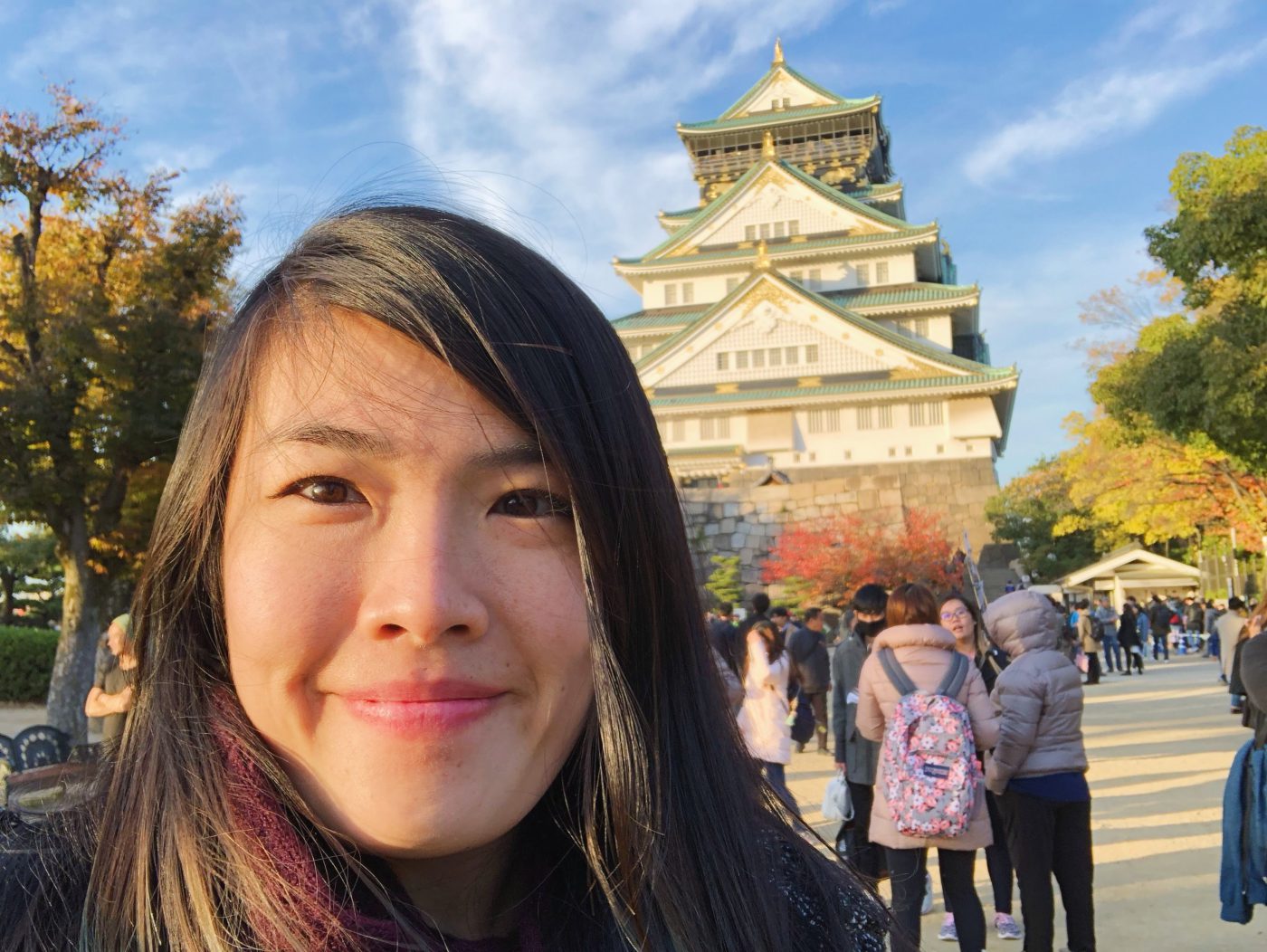
How many days should I spend in Osaka?
- When is the best time to visit Osaka?
- Which rail pass should I get?
How do I get to Osaka?
Where to stay in osaka, osaka itinerary for first-timers.
- Tips for traveling around in Kansai
Getting into Osaka from the Kansai Airport
What to do in the kansai region, fast track your arrival in japan.
You can make your arrival in Japan easier by completing your immigration and customs procedures before your arrival via Visit Japan Web. Read how to do that here
I recommend at least 5 days to see the must-see of the Kansai region, namely Osaka and Kyoto. But it would be better if you could stay for at least 8 days, which will allow you to visit all the best highlights of Kansai: Osaka , Kyoto , Nara , Kobe, Himeji, and Hiroshima.
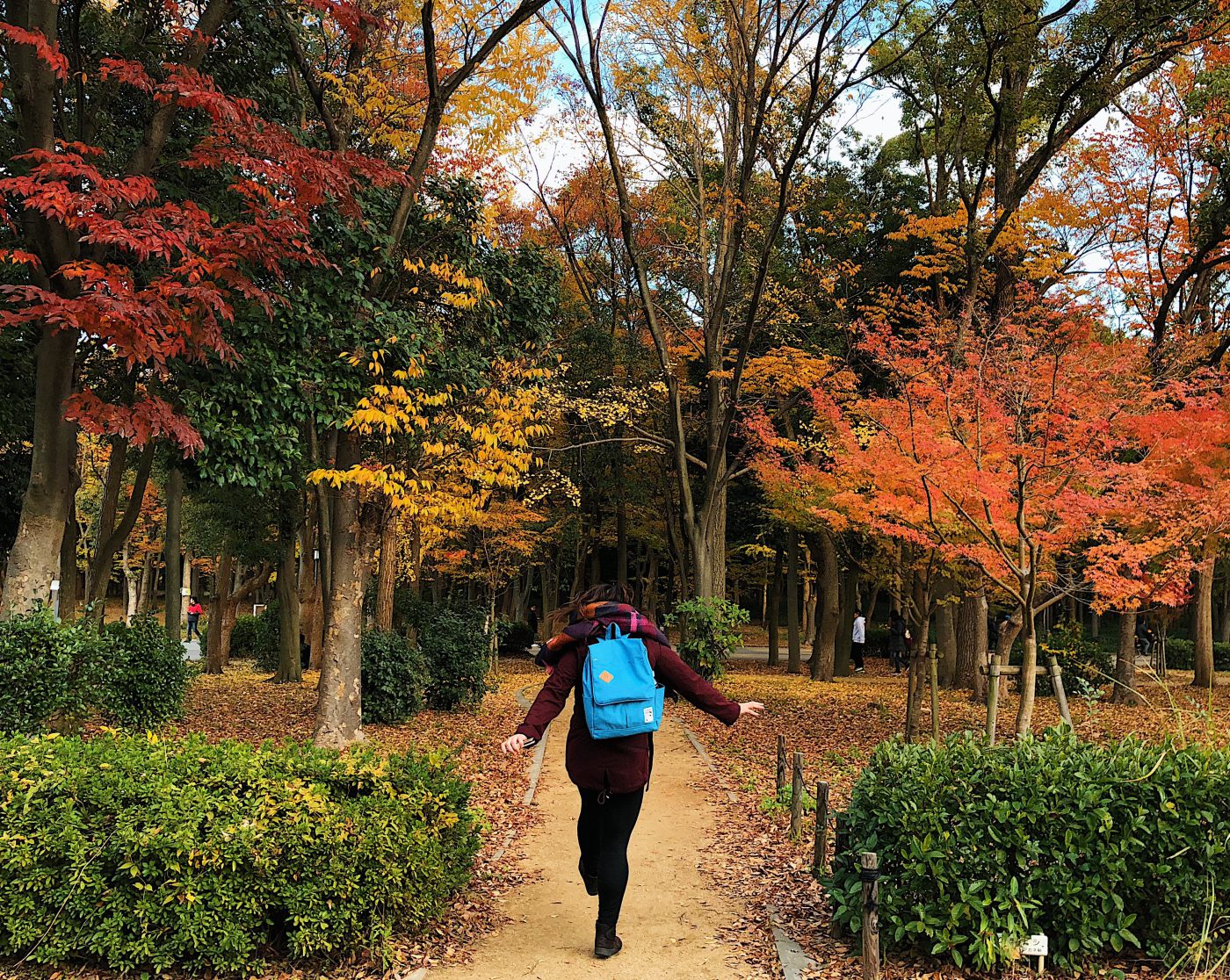
When is the best time to visit Osaka / Kansai region?
Much like the rest of Japan, you can aim to visit during the Sakura season or during the Autumn foliage season . Click on the respective blog posts for predicted times as they change every year. Keep in mind these seasons would be peak tourism time, so it will be very crowded, but beautiful!
Try to avoid the hurricane or typhoon season from August – September. Also avoid Golden Week in the first week of May, which is Japan’s biggest holiday and will drive a lot of domestic tourism.
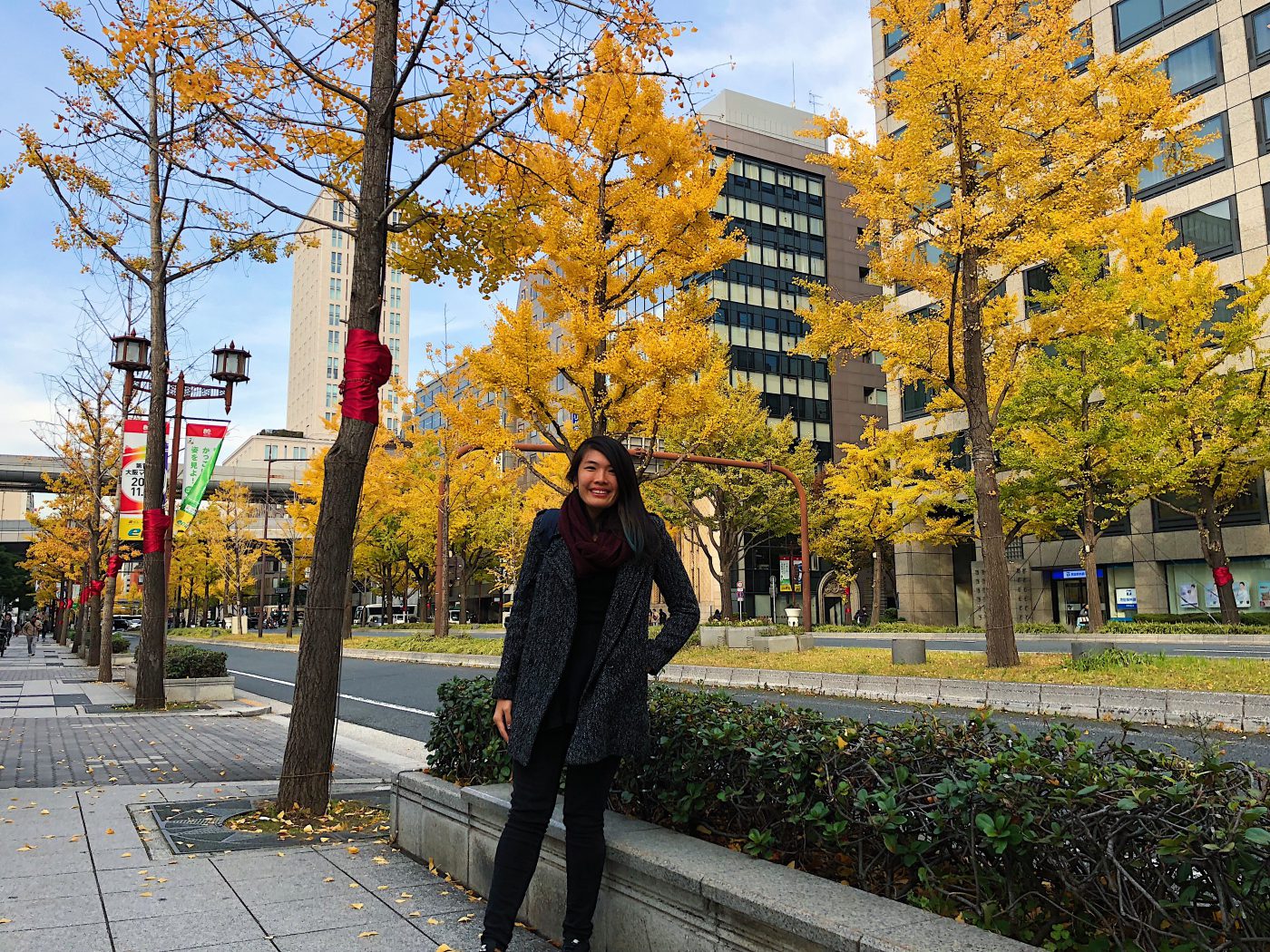
There are two popular ways to get to Osaka:
1. By Shinkansen (Bullet Train)
If you’re coming from Tokyo , most people get to Osaka by train from Tokyo via Shinkansen, Japan’s famous ultra-fast bullet train. You can then get off at Osaka Station, where you will have plenty of convenient local trains to switch to.
If you haven’t bought an Unlimited JR Pass , then I would recommend it since the Tokyo – Osaka train is included with the JR Pass. Buying the Shinkansen ticket separately would already cost almost as much as the JR pass, so it’s definitely worth it.
The price of Unlimited JR Pass has increased by 70% since 1 Oct 2023 . Even though you’ll see many recommendations for buying a JR Pass to save some costs, it could be outdated. Since the price hike, it has become harder to justify the cost of the JR Pass, however regional passes like the JR West Kansai Pass might still be worth it. I am working on updating my blog post to reflect this change.
2. By Airplane + Haruka line
The closest international airport to Osaka is the Kansai International Airport (KIX). If you are flying and landing in KIX and will be staying in Osaka, I recommend taking Haruka line by Japan Rail to get to the city.
This line takes you straight from KIX to the city, stopping at major stations Tennoji and Shin-Osaka before going on to Kyoto. But if you have the unlimited JR Pass, this journey is already included so you do not need to purchase it separately. From there, you can resume with local trains using an IC card .
- If you are staying at a hotel in Osaka, you might be interested in the luggage delivery services from Kansai International airport . Luggage delivery is common in Japan and reliable. It lets you travel without having to carry your heavy luggages!
Which rail pass should I get for visiting Osaka?
The best way to get around Osaka and the rest of the Kansai area is to use the extensive Japanese train system! The cost of train tickets could add up if you’re planning on visiting multiple cities in Osaka. Thankfully, there are a few rail passes you can consider to help with the costs!
1. JR Pass for Bullet Train
JR Pass is a train pass that basically gives you unlimited rides on JR trains for the duration of the pass validity. This includes the Shinkansen bullet trains, which make it easy to travel through different cities in Japan. However, it doesn’t mean that you always need a JR Pass every time you go to Japan.
If you are flying straight to Osaka and only planning to visit Kyoto and Nara , you won’t need a JR pass since you can easily visit these places via the local trains – consider getting the Kintetsu Rail Pass instead.
For going to Kyoto from Osaka, taking local trains is cheaper than taking the Shinkansen with JR Pass, it just takes slightly longer. However, the difference isn’t that much – it’s only 15 mins by JR train vs. 30 mins by local train.
But if you are going to more cities than just Kyoto and Osaka, you should consider getting a JR Pass. The JR pass you need to get depends on the cities you want to visit and how long you are planning to travel around. So I recommend setting your itinerary first and seeing which JR Pass suits your itinerary.
Here are your JR Pass options for exploring Osaka and Kansai
- JR West Kansai Pass (available as 1, 2, 3, or 4-day pass)
- 5 Day JR Kansai Wide Pass (if 4 days are not enough for you)
- JR Kansai – Hiroshima Area Pass (5-day validity)
- Unlimited JR Pass – If you are planning on visiting other areas in Japan that are outside of Kansai prefecture. For example, if you’re flying to Tokyo and want to go to Osaka by bullet train.
Normally, you need to buy JR Pass from outside of Japan and have them mailed to your address, but with Klook you can pick them up at the airport!
What is Klook? Klook is the leading travel and experiences booking website in Asia. And yes, they are legit! I personally always book my activities through them whenever I am traveling. See my review of Klook here .
2. Kintetsu Rail Pass
If you’re mainly interested in going to Osaka, Kyoto, and Nara, then the Kintetsu Rail Pass is perfect for you. They have 1, 2, and 5-day Kintetsu Rail Pass which will save you some money.
Please note that Kintetsu Rail Pass does not include limited express trains. If you ask me though, the limited express train is not worth the price for just a few minutes faster, so just use the Kintetsu Rail Pass and board the regular express trains.
Buy Kintetsu Rail pass online which can be redeemed at the train station
In Osaka, it’s best to stay close to a major train station – anywhere near Shin-Osaka, Namba, Tennoji and Osaka-Umeda stations is a great option.
Here are some recommendations:
- Zentis Osaka in Umeda ($$) – Located within a few minutes walk to Osaka Station. They have studio apartments as well as family rooms for those who want bigger accommodations.
- InterContinental Osaka ($$$) – Also located within a few minutes walk from Osaka station, this hotel is very convenient with many amenities nearby
- Hotel Noum Osaka ($$) – A cute modern hotel located one station away from Osaka-Umeda station.
- Umedaholic ($$) – Small hotel near Osaka-Umeda station and close to the city center.
- Guesthouse Ten-roku ($) – Female-only dorm, perfect for solo travelers who are looking to save on accommodations.
Below I have provided two types of itineraries depending on what type of traveler you are. Some people prefer to squeeze in as much as they can, while others prefer to travel a bit slower.
Itinerary 1: For fast travelers who want to do everything and visit multiple cities (7-9 days)
- Day 1: Arrive in Osaka and explore the city (stay overnight in Osaka)
- Day 2: Take the train to Kyoto (stay overnight in Kyoto / Osaka)
- Day 3: Explore Kyoto (stay overnight in Osaka)
- Day 4: Day trip to Nara (stay overnight in Osaka)
- Day 5: Kobe
- Day 6: Himeji
- Day 7: Hiroshima
- Day 8: Take the train back to Osaka and fly out
The itinerary above assumes you have at least 8 days in Kansai. But if you have fewer days, you can easily tailor this itinerary by omitting some cities. Out of all the cities I listed above, Osaka and Kyoto are definitely the two must-visit places. For other cities, you can choose whether you want to visit them on the same trip or leave it for later, so you have an excuse to come back 🙂
The advantage of this itinerary is of course you get to see a lot more than just the usual Osaka / Kyoto / Nara. On the other hand, the disadvantage is that you’ll need to get a JR Pass, which will cost more. On top of that, you need to be strategic about how to use the JR pass since they are only valid for 5 days maximum. See the “ Do I need a JR Pass ” section for more information. You’ll also need to move around quite a bit with this itinerary, which might be tiring for some people.
Itinerary 2: Slower and shorter itinerary, but still visit all the must-sees in Kansai (at least 5 days)
Another option is to stay put in Osaka, which makes for a more chilled-out itinerary, but you can still get out of Osaka on these day trips:
- Day 1: Arrive in Osaka , explore the city
- Day 2: Go to Kyoto
- Day 3: Go back to Kyoto again
- Day 4: Visit Nara or Kobe , or day trip to Akame 48
- Day 5: Explore Osaka and fly out
The advantage of this itinerary is likely you don’t need to get a JR Pass. All of the destinations above are reachable by local train. You also don’t need to move around much in terms of accommodation – you can choose to stay in Osaka for the entirety of this itinerary. Osaka is a big city so you won’t run out of things to do – I’ve written extensively about Osaka here if you need inspiration!
Below I have outlined each city and what you can expect to see, so you can decide for yourself whether it’s worth visiting or not.
Tips for traveling in Kansai
- If you are visiting Kyoto , Nara , and Kobe, I recommend making Osaka your base instead of staying overnight in those cities. Accommodation options are better (cheaper) in Osaka, there is more to do at night, and the train back takes only 15-30 minutes.
- But if you really want to stay in Kyoto, you can do so for one night. Choose to stay at a Ryokan for that authentic Japanese experience. Please read my Kyoto guide for places to stay.
- If you are getting a rail pass , make sure it will be valid for all of the days that you are traveling between cities , and make sure you also account for the day when you are going back to Osaka.
- Flying out late but having to check out early from your accommodation? You can leave your luggage in a coin locker! Coin lockers are available everywhere in major stations. They are quite spacious and cheap to rent. I was able to fit my 45L backpack into a tiny 300 yen one at the bottom. There is English instruction on the machine. Be sure to come early if you are going from a popular station though. I tried to do this in Kyoto station around noon but could not find any unoccupied locker. In the end, I gave up and had to lug my backpack around all day.
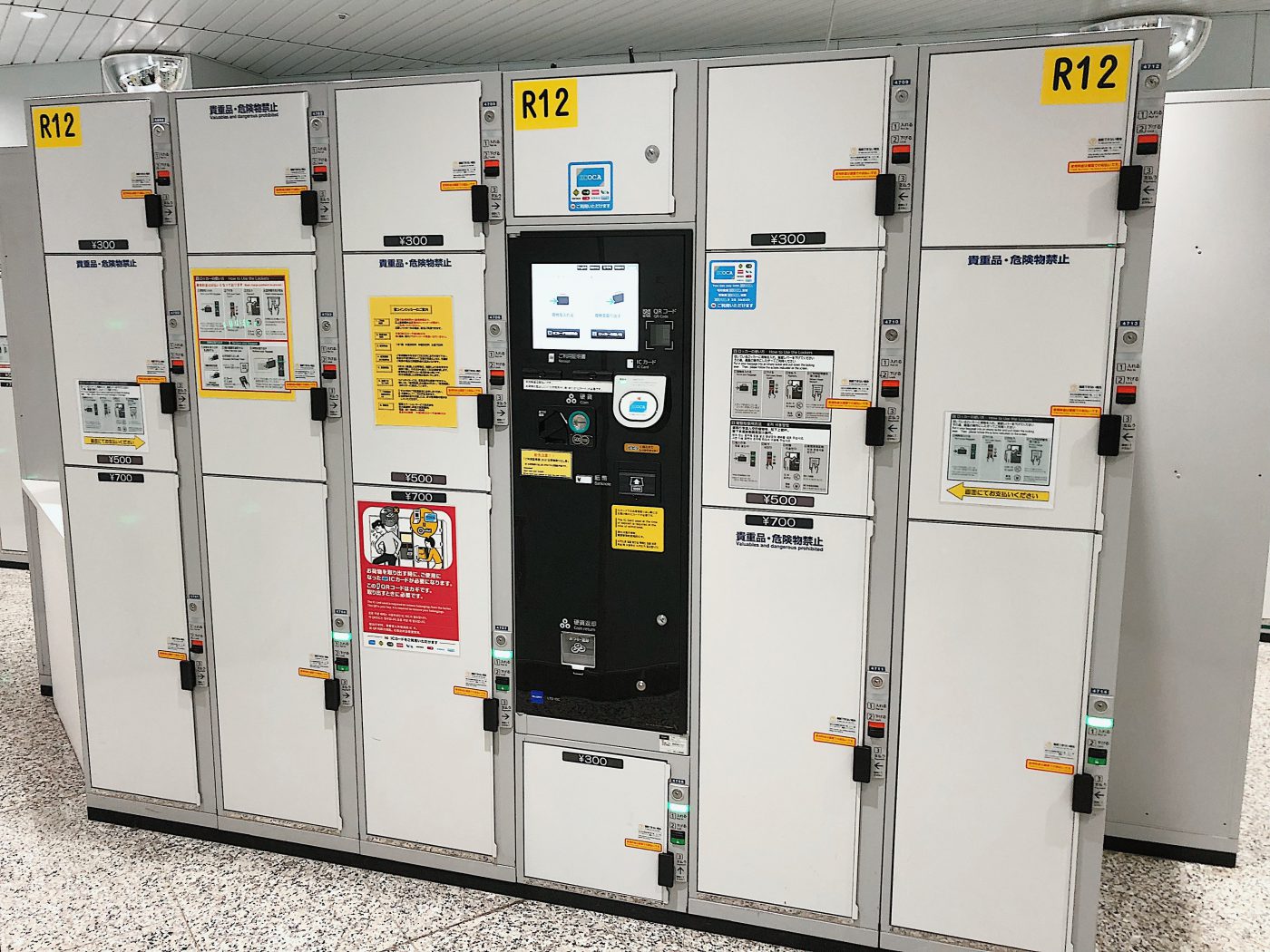
If you don’t have a JR pass, or if you want to delay the validity of your JR pass, you can consider getting the Haruka Airport Express train ticket . This gives you the best price for the express train to town.
Make sure to check ahead if your accommodation is closer to Tennoji or Shin-Osaka as there is a slight fare difference. Tennoji is closer to the airport and it’s a little cheaper.
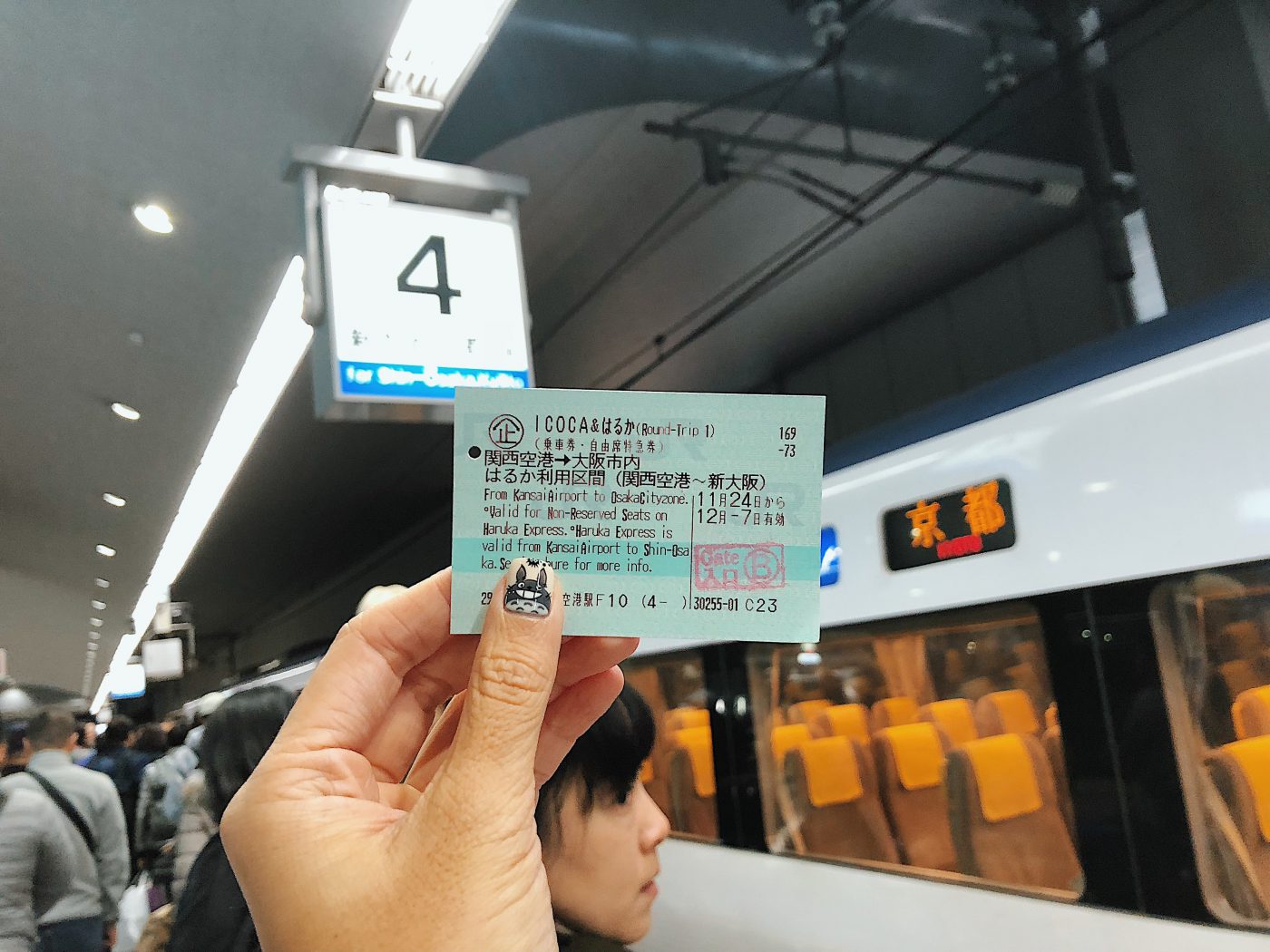
As I’ve said before, Osaka is one of the largest Japanese metropolitan cities, not just in Kansai but in the entire of Japan. I believe they are the second largest city after Tokyo. As with other big cities, you’ll find it very accessible and well-connected, which is why it’s a good idea to base yourself in Osaka while visiting nearby cities like Kyoto, Nara, or even Kobe.
I’ve written extensively about Osaka here , so please check out that blog post if you want to get an idea of what you can do, see and eat in Osaka. I’ve also included general tips on exploring the city and where to stay in Osaka.
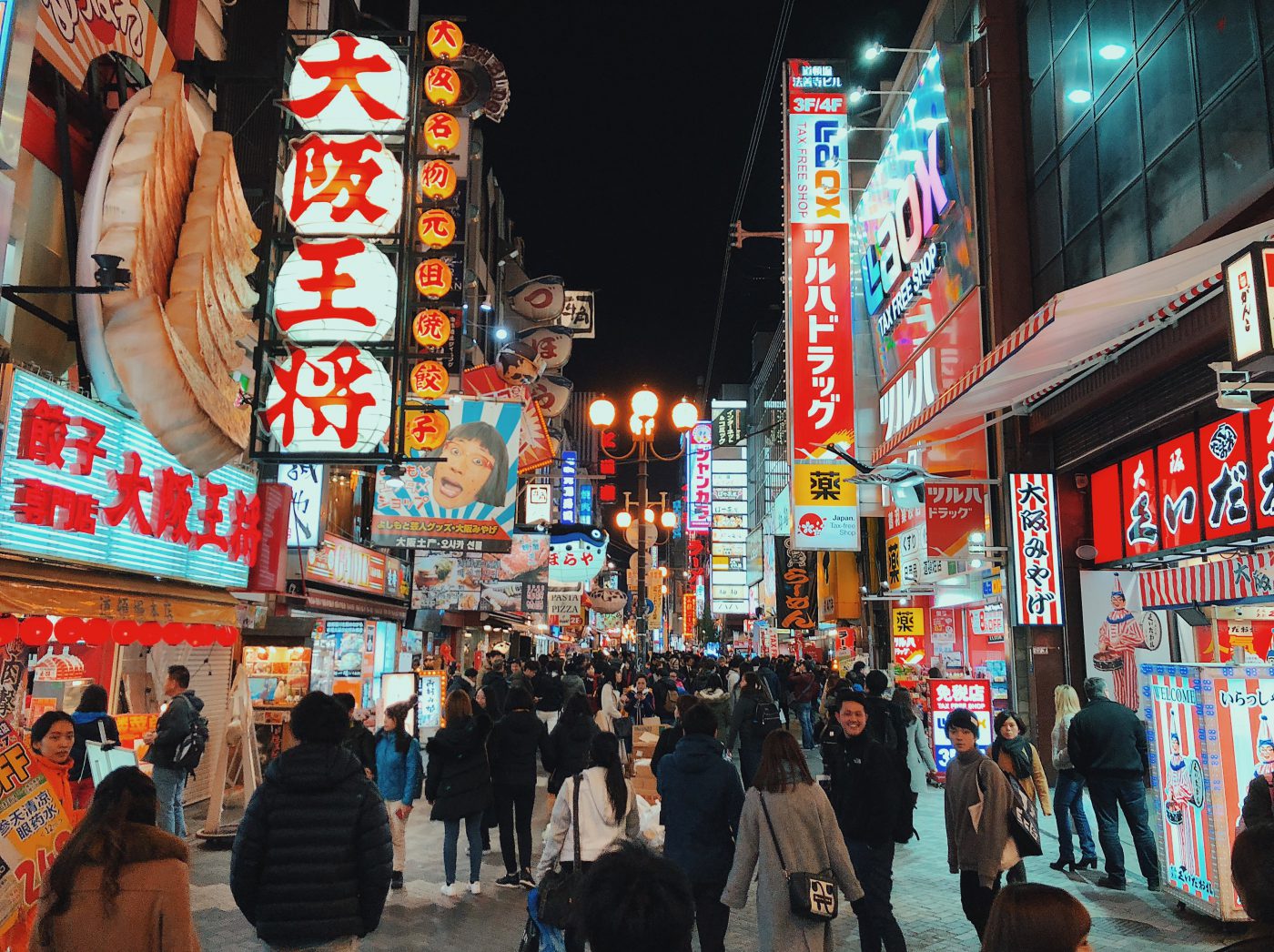
2. Kyoto (2 days)
Kyoto needs no introduction – it is definitely a must-visit when you’re in Osaka. The city is an easy 30 minutes on the rapid local train or 15 minutes on the Shinkansen from Osaka. When visiting Kyoto, I would still recommend staying in Osaka because accommodations are cheaper.
Further Reading: I’ve written a dedicated blog post for Kyoto here: Kyoto Travel Guide , so please check that post on all my recommendations for Kyoto.
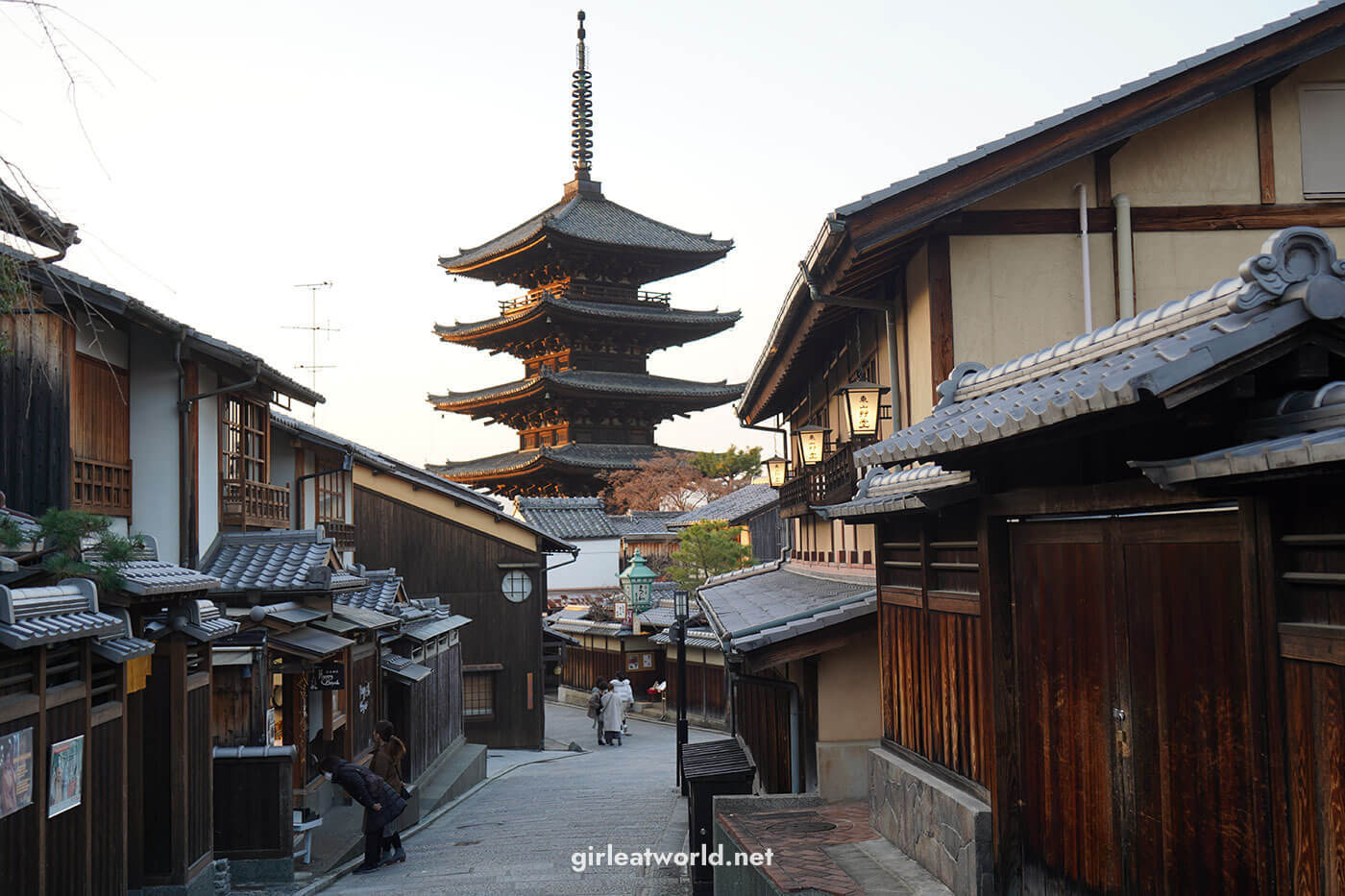
3. Nara (1 day / Day trip)
Nara is another popular trip to take from Osaka due to its proximity – only 30-45 minutes by local train. The city is quite small, but they have many temples and shrines to visit. They also have a huge park where you can walk and interact with the free-roaming wild Sika deer population in Nara.
Further Reading: I’ve written a dedicated blog post for Nara here: Nara Travel Guide , so please check that post for everything I know about visiting Nara!
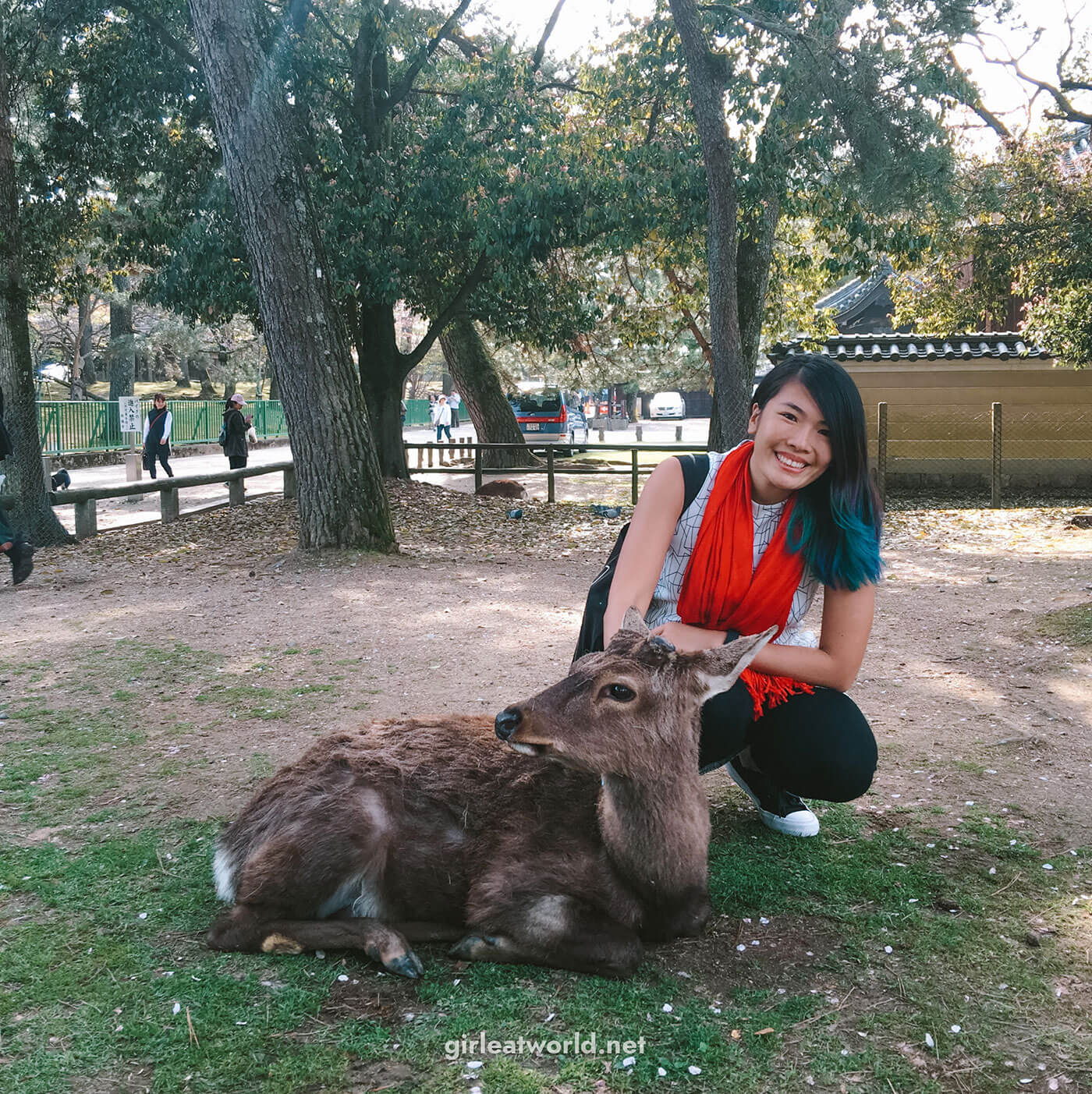
4. Akame 48 Waterfalls (1 day / Day trip)
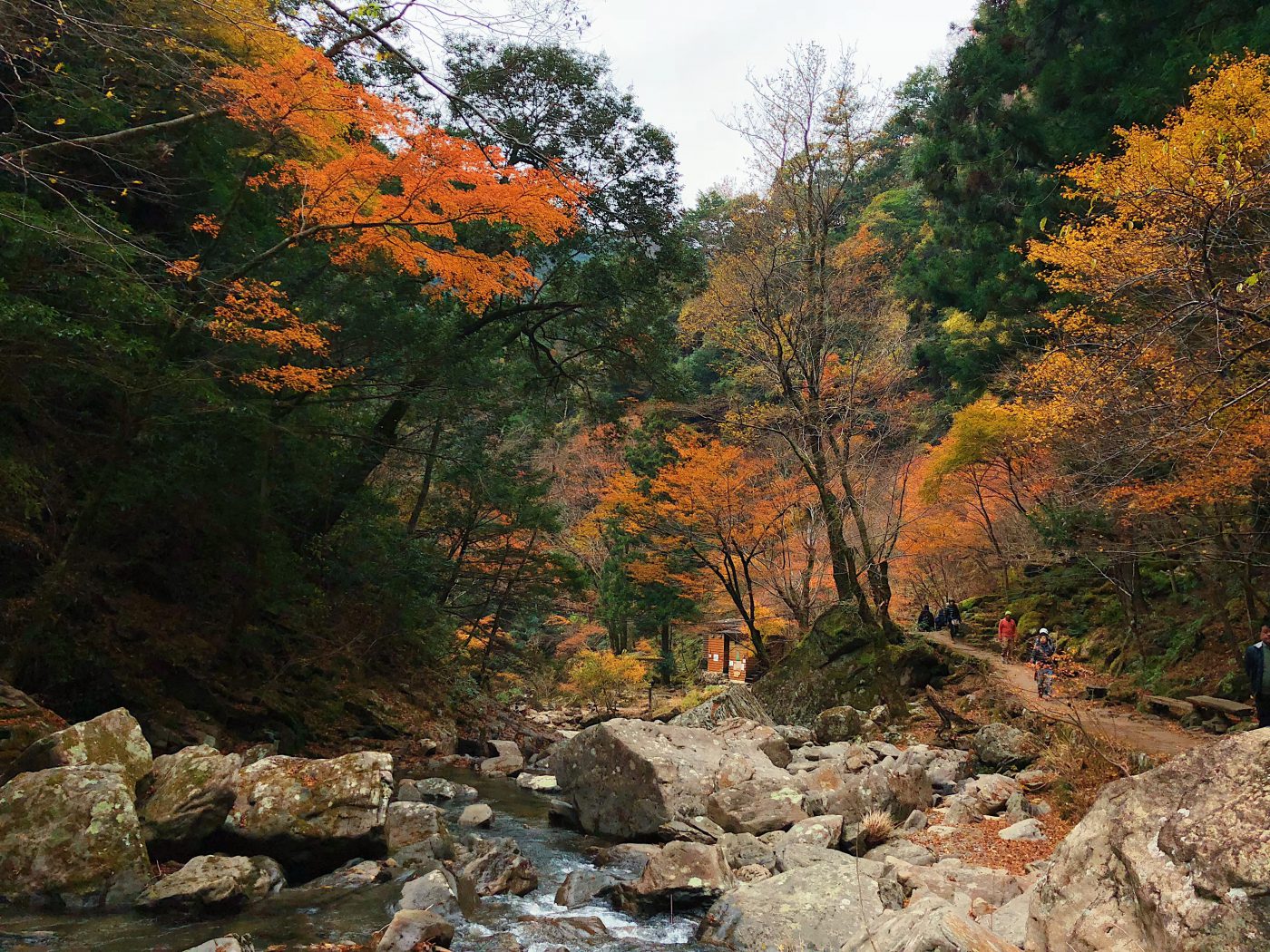
Akame 48 Waterfall is about an hour out of Osaka by train. It’s a short, easy trail following the main river which forms many small waterfalls. Though it’s probably good to visit all year round, I highly recommend visiting during the Momijigari season, which tends to be mid to end of November.
Further Reading: You can read my post about visiting Akame 48 !
5. Kobe (1 day)
Kobe is yet another city that you can easily visit from Osaka. It’s only 30 minutes away from Osaka by train. Kobe is well-known for… well, the delicious Kobe beef. Aside from the beef, Kobe is known for the Chinatown area, the Kobe ropeway, and the Nunobiki waterfall. I think one day will be enough for Kobe.
6. Himeji (1 day)
Himeji is mostly known for the Himeji castle, which is famous for its brilliant white color. Most Japanese castles have white walls and dark roofs, but the Himeji castle’s roofs are light gray, which helps to give it that clean minimalistic all-white look.
This castle is on the way to Hiroshima, so it’s a good stop if you’re heading that way!
7. Hiroshima (1-2 days)
Hiroshima should be a name familiar to those who studied world history in school… which should be all of us. Yes, it is one of the sites of the infamous atomic bomb. At Hiroshima, you can learn about the history of what happened during the world war and how badly it affected the residents. I have to warn you that it could get pretty bleak – not for the faint of heart especially if you’re American, regardless of what your political stance is.
However, aside from its grim past, Hiroshima is also famous for quite a few interesting things: don’t miss out on Miyajima , a shrine that is half submerged in water during high tide. You can visit the shrine during sunset for optimal views. Hiroshima is also famous for Okonomiyaki , so make sure to have some while you’re in the city.
That’s all I have on the Osaka itinerary! If you have any questions, please feel free to comment below . I usually answer pretty fast and to the best of my knowledge.
Until next time folks!
51 Comments
- January 11, 2024
Dear Melissa,
I am happy to find your travel blog. I will be on a 13 days itinerary from Osaka to Kyoto to Nara to Kobe to Himeji to Hiroshima, being Osaka as my base. Which rail pass should I get?
Thanks, Zen
- December 29, 2023
I will be going to Kansai area for the first time and flying domestic from Haneda. I couldn’t exactly find baggage allowance info for domestic flights though I’ve booked them together with my international flight from SG. If you have experience on this could you share if you have any idea if the international flight baggage allowance would apply to the domestic leg too? I’ve tried calling JAL domestic airport but couldn’t get through for some reason. I might have to opt for luggage delivery from TYO to OSA couple of days in advance prior to reaching OSA as I will usually bring 2 big luggage along.
- January 16, 2024
Hey Jen, i just flew JAL domestically and they only allow 23kg per luggage. I am not sure what would happen if the flights are booked under one booking though. Hope you are able to get through to JAL.
- December 27, 2023
Hi Melissa,
Thanks for this great write up! I will be flying into Osaka, but departing from NRT/Tokyo. I think I would probably be following the 7-9 day sample itinerary you provided. Would it make the most sense then to just get the JR unlimited pass since none of the local passes would cover the shinkansen to Tokyo?
Hey Jeremy, to get the shinkansen covered for Tokyo, you would need unlimited JR pass. Unfortunately they have raised the price for that and it is no longer worth while to get the pass. I can only recommend getting the JR west pass to cover your travels within Kansai.
you can try using this calculator to see if it’s worth it https://www.japan-guide.com/railpass/
- December 26, 2023
My family (wife + 2 teenagers + myself) visited Osaka / Kyoto / Nara / Mie from 10 – 19 December 2023. And it was was a very pleasant experience. Yes, some of the entrance fees have since gone up (from the last time you were there) but that is to be expected. Transport was a breeze as the trains / buses were easy to navigate.
We want to thank you for sharing your experience.
PS: And I will leave a note at Kaitlin’s site to thank her for the heads up re: Akame 48 Waterfalls Shuttle Bus. LOL
I am glad to hear you had a good time! Thanks for taking the time to come back and write this comment.
- December 4, 2023
Wow your blog is so informative. It will be our 1st trip to Japan, and we are planning 6D 5N trip around Osaka-Kyoto-Nara/Hiroshima/Himeji (can’t decide which of these 3). However, would like advice from you on the following: 1. Which is the best airport we should land at where we can travel to Osaka city center easier – would it be KIX? 2. Should we stay entire 5 nights in Osaka and travel to/from Kyoto and Nara/Hiroshima/Himeji on day trips? 3. Which should we choose – Nara or Hiroshima or Himeji? Looking at more attractions to visit, with lesser travelling time. 4. What’s the difference between Haruka line by JR with JR West Kansai Pass and JR Kansai Wide Pass and which should we get for our entire trip? Especially from airport to Osaka and to other places and back to airport? Should we also get IC? 5. Would you know roughly how much we would be spending on food in a day? Looks like quite a lot of questions. Thank you in advance.
- December 3, 2023
Hi, it will be my first time in Japan next month. So far the only thing I have planned out is “insert blank here” and so I am now looking while trying to study for my finals hahahaha…. I will by landing on Jan 6 in osaka but need to fly out of tokyo. So I guess the only thing I have book is my flight ticket. Your 8 days in the Kansai region, are you saying to book the hotel in Osaka and just take the train to those other locations? If that is the case, what is a good time to be heading out and heading back? Also the rest of the time after those 8 days will be in Tokyo (any recommendations there?) Basically only thing I have planned out is Jan 6 I will be in Osaka for 8 days (Oct 13/14) then take a train to tokyo until Jan 19 (so about 5 days). Do you have any places I should stop by on my way to tokyo? I will be travelling solo.
- November 30, 2023
Hi Melissa, Thank you for your blog. It has great information. I am planing a 24 day trip to Japan sept next year and I would like to have time to spend in a place instead of rushing around. Also I am a senior and I know Japan needs a lot of walking. Hope you can advise on my itinery and should I just get the kansai pass for the kansai area and which other pass should I get pls. Arrive Osaka and spend 4 nights with day trips to. Kobe and hemeji and spending the rest in Osaka. Then train to Nara for will I spend one or two nights pls. If I spend one night then I hope to go to akame 48 and spend one night there. Nextis 4 nights in kyoto. Kanazawa 3 nights will go to shirawago on way to takayama
Takayama 3 nights. Hakone 3 nights Lake kawaguichi 3 nights Tokyo 3 nights Fly out of Tokyo.
I know I can see a lot more places like Hiroshima but I want to leave that out for the next trip as there is a lot to do in Hiroshima and surrounding area. Hope you can help Thank you
Hello, your itinerary looks great! My only advise would be 4 nights in Kyoto might be too long. But its really up to you and what you like to see, so maybe it is okay.
- November 29, 2023
Hi Mel, I am really glad to have found your blog, it’s really very informative. I’m traveling to Kansai this coming Sunday. However, I am really confuse about the many passes available. If my itinerary is as follow, what would you advise 1. Day 1: Arriving Kansai in late afternoon, and intend to travel to Kyoto straight. I guess it would be night time by then. 2. Day 2: Exploring Kyoto, staying overnight 3. Day 3: Day trip to Nara, from Kyoto 4. Day 4: Exploring Kyoto in the morning, before going off to Osaka 5. Day 4: arriving Osaka late afternoon 6. Day 5: Day trip to Kobe, from Osaka 7. Day 6: explore Osaka 8. Day 7: morning check out and proceed to airport Base on the above itinerary, what kind of pass I should be getting, it’s really confusing. Many thanks.
Regards, Mel
Hey fellow Mel, I think the only pass that covers Kyoto, Nara and Kobe is the JR West Kansai pass. However, if I were you, I would just take the local train to travel between Kyoto and Osaka. It sounds like you only need to activate the pass from Day 3 to go to Nara, so the 4 day pass would work well for you.
- November 17, 2023
Hi Melissa. Your blog is tremendously great and helpful. I have never been to Osaka or even any part of Japan and intend to go in 2024 during peak fall which I hv no idea the dates for peak fall. I was thinking of flying straight to Kansai airport and take a train to Kyoto. Spend 2/3 days in Kyoto. Then travel back to Osaka to spend 3/4 days there and hv a day trip to Nara from Osaka. Does this sound ok or I’m being ridiculous. Thanks in advancr
- August 16, 2023
Thank you for the detail sharing on Osaka & Kyoto. I will be travelling to Osaka, Kobe, Kyoto, Nara and may be to Akame 48 as well from 11-22 Sep 23. As this is my 1st time to Japan, appreciate if you could advise me on the following –
1) Do you have any detail sharing on Kobe & Nara? 2) In your opinion, it is a good time to spend a day to Akame 48 in Sept? Is it worth the time to include in my itinerary since is not during Momijigan ? 3) Which Kansai pass (JR West Kansai Pass or 5 days JR Kansai Wide Pass) will you recommend for the places I intend to go? 4) Can a tourist allow to have multiple Kansai pass be it JR West Kansai Pass or JR Kansai Wide Pass in the same period while in Japan, in my case from 11-22 Sep 2023 but I will only activate either of the pass from different day? For example, can I have 2 sets of 5 days JR Kansai Wide Pass, will activate 1st pass on 11 Sep and 2nd pass on 16 Sep? Or have 1 set of 4 days JR West Kansai Pass and 1 set of 5 days JR Kansai Wide Pass?
Really appreciate your time and if you could advise on my 1st ever Japan trip.
Hi Shirley 1) I have visited but haven’t written a blog post about it. I think both are good as day trips from Osaka, but I would not stay over night 2) I think Akame 48 is still great if you’re looking for an easy nature walk. It probably won’t be as beautiful as during Momijigari, but still a nice relaxing walk 3) These passes both work for your intended places, but I think for Akame 48 it’s better to take the express train which is not covered by JR. So just get the cheapest one and try to group your Nara and Kobe visit together so that they fall within the pass validity (go to Kobe and Nara on consecutive days) 4) I have not done this, but I think it should not be an issue as there is no limit to how many JR pass you can buy
Thank you, Melissa
Any recommendations places of interest (must go) in Kobe and Nara?
Nara is a pretty small area – Todaiji temple and feeding the Shika deer is a must. For Kobe, I really enjoyed the Cable Car and Mount Rokko area!
Thank you so much.
- July 8, 2023
Hi Melissa, Thanks for the excellent information. I will be travelling to Osaka in late August. There are two flight options for me. Option 1 is fly to Narita purchase the 14 days JR pass and travel to Osaka. Option 2 is to fly to Osaka directly. Option 1 with the JR pass is $100 more than option 2. I will base in Osaka for my 10 days since I have free accommodation. I intent to visit Nara(1 day) Kobe (2 days) and Kyoto (4 days) I intend to spend 3 days in Osaka. Would you recommend option 1 or 2 for my flight. I was thinking that with the JR pass I can use it to travel between the cities. Then I can buy the local past for the city commute. Or I should fly to Osaka and buy the Kansai pass for regional travel. Is 4 days in Kyoto too long? What is your suggestion for the itinerary for 10 days. I am not visiting Tokyo , since I did visit Tokyo prior. Is the Osaka amazing pass worth buying?
Hey Colin, I definitely would just fly straight to Osaka and use the regional JR passes, it is usually cheaper overall and saves a lot of travel time. Unless of course, you intend to visit Tokyo during your stay.
- May 25, 2023
Hi Ms. Melissa,
Thanks for the information that you provide, very useful.
We will travel this August, 6 adult and 4 minor. We are looking for a cheap transient house. Is it advisable to hire a van for our 8-day stay there? Do you recommend hiring the services of a tour guide? Where can we have a better foreign money exchange?
Thanks and God bless.
- March 3, 2023
Hey! Lots of love from Germany! Im planning on going to Japan for around 3 Weeks in July. I’ve been therw many years ago in 2006 with my mom and brother and this year i will go with my boyfriend. Its really difficult to decide how long to stay. We have lots of free time, due to university breaks. But staying too long will be too expensive. Its really great that u recommended the amount of times spend in each place! I’ll definitely recommend your blog to my friends and read a lot more here myself.
- March 4, 2023
i’m glad to hear that Lisa!
- January 3, 2023
Very valuable information you shared here Melissa! My wife and I visited Tokyo in Autumn and planning to visit Kansai during cherry blossoms!
- December 20, 2022
I’m going to Osaka, Kyoto & Nara for 10 days in spring, I’ve read up a lot about the commute in Kansai but I’m still very lost… I’m just going around these three places but I’m not sure if I should get the ICOCA, JR pass, or the Kansai Travel Pass?
- December 19, 2022
Hi Melissa, we are planning to visit Kansai around mid April 2023. Am thinking of the following: Day 1 – Arrive at night at Kansai airport. Overnight in Osaka Day 2 – Osaka Day 3 – Osaka Day 4 – Osaka to Kyoto (overnight in Kyoto) Day 5 – Kyoto Day 6 – Kyoto to Nara deer park & Todaij temple, then Nara back to Osaka Day 7 – Osaka to Kobe Mt Rokko, waterfall, herb garden, then Kobe back to Osaka Day 8 – depart Kansai airport
Kindly advise: 1. Should we get the 2days Osaka Amazing Pass? (Is it consecutive days basis?) 2. Which type/s of train pass should we get? 3. Which is the best train option for day 4, 6 & 7? 4. Is half a day sufficient in Kobe if we only visit Mt Rokko area?
- December 16, 2022
Like to ask for your advice on the train pass. I will be staying in Osaka for 7days, if i only plan to go Kyoto, Nara, Kobe Which is the most economical train pass to get Thank you in advance
- December 9, 2022
Hi Melissa!
We’re planning to visit Osaka and Kyoto this spring of 2023. Probably a 2 nights and 3 days itinerary. Plan to go to universal studio the first day and 2nd day is a day trip to kyoto. Would you recommend a hotel in osaka that also makes us easier to go to USJ and the nearest stations? Also, what place in Kyoto would you recommend for a day trip? To see Sakura. Your reply is much appreciated! Thank you!
- December 1, 2022
Hi, I’ve booked a 12 days trip to Japan – both days fly in and out all full days. I’m wondering whether to do both Osaka and Tokyo or just Osaka alone. What do you suggest?
- November 18, 2022
Hi Melissa, Thanks for sharing the information. I will be arriving Kansai Airport and spending my 10days in Osaka, Kyoto, Kobe, Nara, Akame and maybe Himeji. Which JR pass should I get. JR west pass or JR wide area pass? A bit confusing on the Japan trains route. Or should I just go by the day pass?
The main difference between the JR Kansai Wide pass and the JR west kansai pass is that the west pass does not include shinkansen (bullet train) aside of the airport express.
JR west kansai pass could be enough for you if you dont mind the slightly longer travel time (For example Himeji is 30 mins from Osaka on bullet train vs 1.5 hours on local train).
Another thing to consider for whether you want to take the day pass or not depends on your plan. If you’re planning to move around in consecutive days, it might be cheaper to get the 4 day pass.
I personally think it’s only worth it for the Himeji portion of your itinerary, since the local trains to Kyoto/Nara/Kobe is pretty cheap on its own.
Thanks for asking this question! you have inspired me to add more details on which JR pass to get on my post 🙂
- November 7, 2022
Hi, really useful thanks. We want to visit the Hokudanshinsai Memorial Park in Awaji. Will I be able to do this on public transport from Kobe? Thanks
- November 8, 2022
It’s possible to take the local train from Kobe to Maiko station, and then you’ll have to resume via a bus from Maiko station to Hokudanshinsai Memorial Park
- October 19, 2022
Hi Melissa, I was going through your itinerary and found it to be quite useful for planning a trip. I wanted your suggestion if I am planning to incorporate Mt. Koya into this trip. Should I keep 2 days for Mt. Koya? Can I club any other site during my visit to Mt Koya?
- October 9, 2022
Melissa Any adv on how I can spend 16 nights in Japan, arriving abd departing from Kansai airport? In the Kansai region, which city do I make my base for 6-8 day, of which one night in Hiroshima and two nights in Kyoto? We also plan to visit and stay in Tokyo for 6-7 days, what places to visits? Late night in Osaka before departing from Kansai. Question, do we complete our Tokyo trip 1st for 6-7 day and than spend the 8 days in Kansai region? Also adv, which are the most suitable different train passes ( for 3 adults) to get for our16 days stay and which train pass to buy and when to start using to safe cost? I understand the JR train pass will be good for us for 7days when going and coming back from Tokyo
- October 11, 2022
Hey Gill, I would base myself in Osaka for Kansai. Hiroshima might be a bit far (1.5 hours by train) but Kyoto will be very close especially if you have a JR pass.
Whether you want to do Tokyo first or not, it’s up to you but definitely group the Tokyo trips together as it takes 3 hours by train to go from Osaka to Tokyo. You could explore Kansai first upon landing, then go to Tokyo, or you could go to Tokyo straight.
Since you’re going to Tokyo, the only suitable JR Pass option is the unlimited JR pass as it covers the regions you want to go to. You can use JR pass for some local trains too as long as they are run by JR rail. You don’t really need JR pass during your time in Tokyo, but you would need it for the train going from Osaka to Tokyo, so I would see the difference of the cost of Single ticket vs JR pass.
- October 3, 2022
What area of Osaka should I stay, planning day trips to Kyoto, Nara, etc.
- October 5, 2022
Hi Liz, I have an Osaka recommendation post here: https://girleatworld.net/things-to-do-in-osaka/ You can find where to stay in that blog post
- September 29, 2022
Where do you recommend to stay in Osaka with young children? Easily accessible to their train station and food. Thank you!
Hi Hazel, I have written about Osaka on a separate blog post here: https://girleatworld.net/things-to-do-in-osaka/
- July 24, 2021
Thansk for sharing tips, After this pandemic I’m planning to go on vacation to Japan
- February 23, 2020
Hi, great blog. It helps so much. I will be traveling to : hadena to Shibuya to hakone to osaka to kyoto.
I know I need the IC card ( suisa) Do i need the jr pass too? I don’t mind if it takes longer by trains than the JR. Thank u for your input
- February 24, 2020
Hey marilyn, SUICA card is only good for local trains. I would still take the JR Pass for the trains from Tokyo to Odawara (you need to go to this station to reach Hakone, then take odakyu line) and Odawara to Osaka / Kyoto. The cost of trains from these destinations would already cover the cost of JR Pass.
- February 25, 2020
Thank u . That helps a lot. Can u tell me if i shoukd take the local train or the jr rail from the airport to shibuya? Are they both heading that way? Thank u
- December 18, 2019
Make sure not to miss the Toei Kyoto Studio Park. Here in the Philippines, super sentai shows, animés and several other Japanese shows like Takeshi’s Castle are very popular here. Two of my favorite movies related to Japan are the Seven Samurai and The Last Samurai. You can enjoy a wonderful exhibit of those in Toei Kyoto Studio Park.
I also remember how we almost missed our tour to the Golden Pavillion because it closes at 5PM. Among all the countries that we visited, our tour in Japan is our favorite. It’s followed by our tour in India. 🙂
- November 17, 2019
Loved this so much, Thanks for sharing such an useful Information
- February 25, 2023
Hi Melissa you’re blog is so useful for 1sttimers going around Japan specifically in. Osaka. Tho we we’re there last mid 2019 we depend our itinerary to our daughter who is techi enough to use her fone looking for our daily DIY tour. Now my problem is my husband who’s going back this coming June together with his 2 siblngs who are in their prime age(.meaning all the 3 are seniors).Iam worried that it will hard for them to get around without help from tour guide.They will be staying there for a week. Maybe can you(with your kind permission) help us design their tour in these beautiful place. I tried checking their local tour guides but their rates are too much expensive hahaha BTW you might think of my daughter who accompanied us before we can no longer bring her since she got married and have a kid and work to get busied with. I hope I get a useful tip from you before these people get to touch down Osaka. Godspeed and TIA ❤️
- October 28, 2019
Great information. Interesting and valuable read. Any information on Okinawa or other parts of Japan that you had been.
- September 24, 2023
Happend to read your blog and is of great information. I am planning for a trip to Osaka with my son (only 2 of us) and is also my first visit to Japan. Has been looking for info but is like bits and pieces everywhere which made me more confused, yr blog is quite informative.
Can I seek your advise if I have 9D8N in osaka, is it better for me to stay in osaka throughout or stay a few days in Kyoto and explore other cities.
And which is a must to visit? We will go USJ so 1 day gone. Trying to plan my itinerary so that I can book hotel as soon as possible.
- September 26, 2023
Hi Doreen, Most things to do in Kansai is easily reachable from Osaka, so staying in Osaka is not a bad thing. I think for 9 days you can explore to stay at other cities, since you have a lot of time, but it is not a requirement. I would recommend staying maybe 1-2 nights in Kyoto for a change of scenery. My must visit for first timers are definitely Kyoto and Nara. You can also visit Himeji for the white castle.
Leave a Reply Cancel reply
Your email address will not be published. Required fields are marked *
Save my name, email, and website in this browser for the next time I comment.
Osaka to Kyoto Train
Explore the most current information on trains from Osaka to Kyoto
Osaka to Kyoto Trains Information
Travel Time
Approximate
Ticket Cost:
Osaka to Kyoto Trains Schedule
Both Osaka and Kyoto are very popular tourist destinations in Japan, offering a lot to explore. For example, the city of Osaka boasts Universal Studio Japan and the eponymous castle, while charming Kyoto houses the bamboo forest Arashiyama and the famous Fushimi-Inari Taisha Shrine (among other brilliant must-visit sights). As the cities are located nearby, you can easily cross both of them from your travel bucket list during one trip to Japan!
Osaka to Kyoto Train Map
Traveling from Osaka to Kyoto is very easy, as they are connected via the high-speed Shinkansen. Osaka to Kyoto bullet trains are very fast and well equipped, they offer three travel classes and a broad departure schedule (you can find out more and book a train ticket from Osaka to Kyoto on Rail Ninja ), making the high-speed trains the best way to travel between the beautiful destinations.
Book Japanese Train Tickets
Q&a: travel from osaka to kyoto.
HOW FAR IS OSAKA FROM KYOTO BY TRAIN?
CAN I DO A DAY TRIP FROM OSAKA TO KYOTO?
HOW LATE DO TRAIN FROM OSAKA TO KYOTO RUN?
CAN I USE JR PASS TO TRAVEL FROM OSAKA TO KYOTO?
Yes, using JR Pass you are free to travel on some limited express trains and all basic-fare trains , but the legendary Shinkansen railway, unfortunately, is not covered by the pass.
Explore More of Japan
Kyoto to osaka train, tokyo to kyoto train, osaka to tokyo train, tokyo to nagoya train.

16 Japanese Cities To Visit Besides Tokyo And Kyoto
- Osaka: Experience incredible nightlife and outstanding cuisine in this seaside city known for its energetic atmosphere and delicious food.
- Naoshima: Discover the art island with its galleries, sculptures, and installations, and enjoy the tranquil atmosphere and sea views.
- Himeji: Visit the UNESCO World Heritage Site Himeji-jo castle and explore the picturesque Mount Shosha and Kokoen garden for a diverse cultural experience.
As Japan finally opens its borders to eager travelers after one of the strictest lockdowns that the world has seen, most itineraries focus on the shopping districts of Tokyo and the Buddhist temples of Kyoto. Occasionally, the street food of Osaka might make it to the list.
Few consider venturing beyond the big cities of Tokyo and Kyoto, but for those who dare try, thrilling adventures await in Japan's best cities. From former homes of samurai warriors and current cities of geishas, hot springs spas, traditional architecture, and ski mountains — these cities deserve a spot on everyone’s Japanese bucket list.
UPDATE: 2023/10/09 19:32 EST BY MARIA BOU INK
Japan's beauty is not limited to Tokyo and Kyoto. The country is a hub of wonderful towns that are worth a trip. Therefore, this list was updated to include two of the best cities to visit in Japan besides Tokyo and Kyoto.
Related: Beautiful Tourist Pics Showcasing The Best Things Japan Is Known For
If tourists want to sample some of the greatest cuisine and beverages Japan has to offer, they should head over to Osaka , a seaside city famed for its incredible nightlife and outstanding cuisine. Tokyo's big-city energy is also present here but on a little lesser scale. This way, tourists can visit cities in Japan other than Tokyo and Kyoto while having the same vibes and escaping the crowds. Tourists are recommended to visit the Osaka Castle and Park in between all of their eating and exploring. It is one of the most well-known sights in Japan and is definitely worth visiting.
- Some attractions: Tempozan Ferris Wheel, Universal Studio Japan, Osaka Aquarium Kaiyukan, etc.
The island of Naoshima, which is reachable via ferry, is a wonderful location. The area is referred to as the art island, and tourists may find galleries, sculptures, and installations everywhere they go, especially if they stay at the upscale Benesse House, which serves as both a hotel and a museum of modern art. On the island, there are two towns, both of which include charming stores and little restaurants. There are also sea views everywhere, which enhances the tranquil atmosphere.
- Some attractions: The Yellow Pumpkin, Chichu Art Museum, Naoshima Public Bath I Love Yu, etc.
Home to a UNESCO World Heritage Site castle , Himeji is worth a special trip for the Himeji-jo castle alone. Widely considered to be the finest example of 17th-century feudal-era Japanese architecture that still survives, Himeji-jo may be the reason tourists visit this city in Japan, but Himeji gives them several reasons to stay. On the outskirts of the city is the picturesque Mount Shosha, with a Buddhist temple at its peak. And if a hike isn’t someone’s cup of tea, tourists can spend a day at the Kokoen garden, which is made of nine walled gardens connected by a network of streams, waterfalls, and ponds and sits on the former feudal lord’s residence.
- Some attractions: Himeji Castle, Engyoji, Himeji Central Park, etc.
Related: Three Days In Japan: 10 Cities You Can Explore In Only 72 Hours
Matsue’s location on a peninsula by the Sea of Japan with Lake Shinji on its west and Lake Nakaumi on the east has given the city another name: The City of Water. While the water bodies that surround it have given Matsue its second name, there are also water bodies within the city. Canals with boat tours for tourists flow through the city, old samurai houses flank its streets, and Matsue is home to one of only twelve medieval castles that are preserved in their original state in Japan. But that’s not all: the city has long attracted curious travelers with its rich myths and legends related to Matsue being the place where Japanese gods descend.
- Some attractions: Matsue-jō Castle, Yuushien, Yaegaki Shrine, etc.
Yokohama is the second-largest Japanese city and the first to have opened its ports to the world at the end of the Edo Period. The port city quickly transformed from a small fishing village to a major city when foreign trade introduced new cultures to the old Japanese traditions of the village. As a result, Yokohama offers a contrast between old and new, and travelers can explore the streets of Yokohama to see the Western influence on the Japanese way of life everywhere. Tourists can visit traditional Japanese gardens and tea rooms, ramen and instant cup noodle museums, giant ferry wheels reminiscent of the London Eye, and one of the largest Chinatowns in the whole country.
- Some attractions: Shin Yokohama Ramen Museum, Yokohama Chinatown, Yokohama Cosmoworld, etc.
For those who like the crowds of Tokyo but wish for a city just a tad more quite than the Japanese capital, Fukuoka’s contemporary attractions make it the ideal city. Fukuoka is Japan’s eighth most populous city and balances urban life with the natural beauty that is synonymous with Japan. The port city is filled with hot springs, hike trails, tea plantations, and sake breweries. But the best part, perhaps, is the fact that Fukuoka happens to be the city that invented tonkatsu ramen , so for those who’d like to slurp their way through Japan via its ramen, Fukuoka has to be the starting place.
- Some attractions: Ohori Park, Marine World, Uminonakamichi Seaside Park, etc.
Hokkaido is an island region of Japan that is known for its hot springs, ski mountains, and volcanoes. Hakodate — located on the island’s southern tip — is one of the largest cities in Hokkaido and was voted Japan’s most attractive city in 2015. Visitors can hike to Mount Hakodate and enjoy spectacular views of the city surrounded by the sea, soak in the hot springs, go down ski slopes, or take in the views of the Mount Komagatake volcano from the lakes of Onuma Park. The best part of the port city, however, is its food. Surrounded by the sea, Hakodate is famous for its freshly-caught seafood, and the Hakodate Morning Market is the best place to enjoy it.
- Some attractions: Goryokaku, Goryokaku Tower, Old Public Hall of Hakodate Ward, etc.
Related: After Cherry Blossom Season, Here Are 10 Unique Activities To Enjoy In Japan This Fall
Kyoto isn’t the only city in Japan famous for its Buddhist monasteries and temples. Formerly known as Heijo-Kyo , Nara was once Japan’s capital city and is now home to three UNESCO World Heritage Sites . The Horyuji Area of Nara was the first to be on the list and includes 48 Buddhist sites, all of which are of immense importance to the Japanese culture and religion. Also on the list are areas with several temples and historical monuments from ancient times when Nara was still the capital, as well as pilgrimage routes and sites on the Kii Mountain. Tourists can end their tour of the temples and spiritual sites of Nara with a friendly visit to greet the deers at the Nara Park or stroll through Imaicho — a merchant town preserved from the Edo period that will take everyone back in time.
- Some attractions: Today-ji, Nara Park, Kasuga Taisha Shrine, etc.
Nagasaki is most often associated with the atomic bomb and the tragedy that followed. Still, the city has a lot more to offer beyond the Atomic Bomb Museum and the Nagasaki Peace Park, which attract most tourists. Not only is the city home to several stunning islands off its coast, but Nagasaki has consistently ranked on top of the list of places with the best night views in Japan . Travelers can hop onto a ropeway to the peak of Mount Inasa and enjoy spectacular views of Nagasaki as it lights up after sunset. More surprisingly, however, Japan’s first and oldest Chinatown happens to be in Nagasaki, and it has continued to serve Japanese-Chinese fusion foods since the 17th century.
- S ome attractions: Nagasaki Atomic Bomb Museum, Peace Park, Glover Garden, etc.
For those whose idea of a holiday in Japan includes spending hours soaking in hot water springs, Beppu is the place to be. Beppu’s gushes of hot spring water rank second highest in the world and the highest in Japan, gushing more than 100,000 liters of water each minute through thousands of hot springs. Not only does the abundance of hot springs make Beppu the Onsen City of Japan, but Beppu also has several boiling ponds known as Jigoku or hell. Locals use these Jigoku ponds for cooking food as well, giving rise to a culinary custom known as Jigoku-Mushi, or hell-steaming, that is peculiar to Beppu.
- Some attractions: Kannawa Hot Springs, Beppu Ropeway, Shidaka Lake, etc.
Takayama is several things: A city surrounded by the Japanese Alps, Japan’s ski destination, home to bustling morning markets and festivals dating back to the 1600s, and a place where Japanese tradition flourishes through some of the country’s most beautifully preserved villages. Takayama’s Sanmachi area, in particular, houses preserved thatched-roof houses from which antique dealers and artisans sell their wares, and hidden cafes and brewers dish out hot coffees and icy sake to any visitors who manage to spot them.
- Some attractions: Takayama Jinya, Hida Folk Village, Shinhotaka Ropeway, etc.
The city that served as the seat of the second most powerful feudal clan in Japan during the Edo period, Kanazawa has always been a place of great cultural significance in Japan. More importantly, Kanazawa was the second largest city after Kyoto, which managed to remain safe from the bombings of World War II. As a result, most of the city’s old castles, gardens, samurai, and geisha districts have survived the test of time. That being said, Kanazawa also houses the iconic 21st Century Museum of Contemporary Art and is the city where traditional teahouses and crafts, including Kaga-yuzen (a silk dying technique), ohi ware (tea ceremony bowls), and gold leaf production continue to prosper.
- Some attractions: Kenroku-en, Higashi Chaya District, Myouryouji, etc.
Related: Unwind & Relax In Japan: The Best Onsens To Soothe Your Soul
Shirakawa-go
Shirakawa-go is not a city but a traditional Japanese alpine village stuck in time . It is part of a national park and is a great place to visit to see the way things used to be in Japan. Here (and its sister village Gokayama), visitors may feel like they are living in the world of the 2003 movie, The Last Samurai starring Tom Cruise (although it was actually filmed in New Zealand).
These traditional villages are UNESCO World Heritage Listed and are a great example of how Japan works to preserve its heritage.
- Some attractions: Wada House, Gassho-zukuri Minkaen, Myozenji, etc.
Hiroshima is one of only two cities to ever be hit with a nuclear bomb . It is also a testament to how cities can bounce back from destruction, being today a thriving city of over one million people. It was founded in 1589 as a castle town but transformed into a major industrial hub (which made it a target for nuclear bombing).
Today visitors can see the UNESCO World Heritage Listed Hiroshima Peace Memorial and commemorate the bombing wishing for such destruction to never again return to this planet.
- Some attractions: Peace Memorial Park, Hiroshima Peace Memorial Museum, Atomic Bomb Dome, etc.
Sapporo is the capital of Japan's northern island of Hokkaido. It is the largest city north of Tokyo and is considered the cultural and economic center of Hokkaido. The city hosted the 1972 Winter Olympics and is one of the best places in Japan to enjoy the winter season. Come in early February and attend the Sapporo Snow Festival. The festival draws over 2 million visitors from far and wide. Additionally, Sapporo is home to the only beer museum in Japan - the Sapporo Beer Museum.
- Some attractions: Hokkaido Jingu, Moerenuma Park, Sapporo Beer Museum, etc.
Naha is the capital of the Okinawa Prefecture of Japan ( Okinawa is Japan's fifth major island ). The city has a population of around 300,000 and enjoys a humid subtropical climate (quite the opposite of Hokkaido's Sapporo). It is a stunning city and the gateway to Okinawa Island (which Americans may recall from the costly American invasion of the islands in World War Two). One of the top attractions in the city is the restored and rebuilt Shuri Castle (a former royal palace of the Ryukyu Kingdom).
- Some attractions: Shuri Castle, Naminoue Shrine, Okinawa Prefectural Museum & Art Museum, etc.
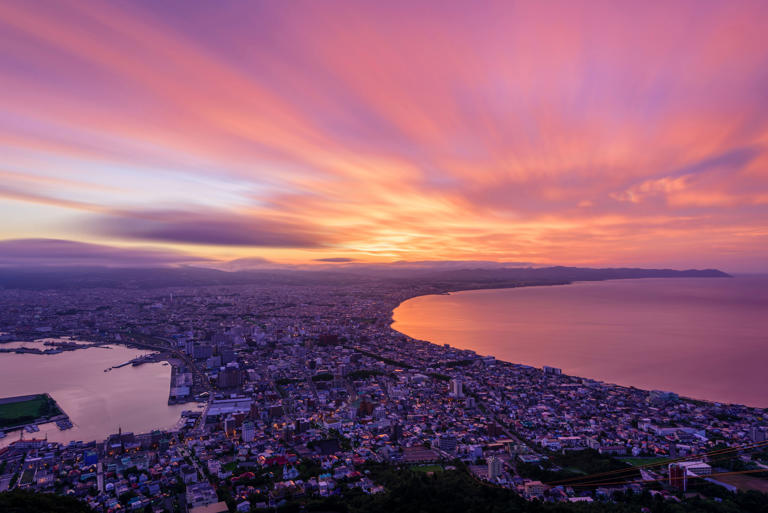
- Japan Tourism
- Japan Hotels
- Japan Bed and Breakfast
- Japan Vacation Rentals
- Flights to Japan
- Japan Restaurants
- Things to Do in Japan
- Japan Travel Forum
- Japan Photos
- All Japan Hotels
- Japan Hotel Deals
- Last Minute Hotels in Japan
- Things to Do
- Restaurants
- Vacation Rentals
- Travel Stories
- Rental Cars
- Add a Place
- Travel Forum
- Travelers' Choice
- Help Center
Buy train tickets in advance? And how? Tokyo --> Kyoto - Japan Forum
- Asia
- Japan
Buy train tickets in advance? And how? Tokyo --> Kyoto
- United States Forums
- Europe Forums
- Canada Forums
- Asia Forums
- Central America Forums
- Africa Forums
- Caribbean Forums
- Mexico Forums
- South Pacific Forums
- South America Forums
- Middle East Forums
- Honeymoons and Romance
- Business Travel
- Train Travel
- Traveling With Disabilities
- Tripadvisor Support
- Solo Travel
- Bargain Travel
- Timeshares / Vacation Rentals
- Asia forums
- Japan forum

4 replies to this topic

I have been advised to stick with japans way of travel booking and wait until you arrive to buy your tickets for the train. Or you can download JR SMARTEX app and buy your ticket 30 days before your journey at the earliest
As noted in your other post, there’s frequent train service between the two cities. No need to purchase in advance.
Thank you so much :)
Should add, i will have just a normal middle sized luggage, a little bit larger than a cabin bag.
Something i need to think about?
- Keio plaza renovation update 10:30 pm
- Luggage forward service 9:44 pm
- Bus transfer or private hire 9:42 pm
- Private Tour Guides 9:38 pm
- Visit Japan Web 9:36 pm
- Kajima Low Tide Experience 9:35 pm
- Planning to spend 4-5 days in Kyoto 9:33 pm
- A Day trip to Senkyaku Banrai / Toyosu Manyo Club 9:33 pm
- Base for Matsumoto, Takayama and Kamikochi? 9:16 pm
- Suica card purchase 9:16 pm
- Nara day trip - tour booked at 530 pm in Osaka 9:10 pm
- Saphir Odoriko: best seats 8:56 pm
- How to secure a taxi 8:51 pm
- Alternative way to purchase Shinkansen tickets... 8:45 pm
- 'semi double' rooms 5 replies
- Pocket WiFi Rental Experience? 315 replies
- kyoto-takayama JR or Lmtd express??? 6 replies
- Best Japan travel guide book? 29 replies
- Best/cheapest time of year to visit?? 3 replies
- Radiation danger in Tokyo? 37 replies
- Best Skiing in Japan? And When? 3 replies
- Japan in 10 days 3 replies
- How far is Nara from Kyoto 8 replies
- how to get to Hokkaido from Tokyo? confused..pls HELP. 5 replies
- 2024 public holiday chart in East Asian countries
- Where can I find more onsen in Japan?
- Driving Information
- Catholic mass in English and other languages
- How can we access tourist attraction from cruise port?
- Pocket WiFi Rental Experience?
- Halal Information
- Tokyo trip report here


IMAGES
VIDEO
COMMENTS
Day 2 - Traveling From Osaka to Kyoto. Unless you plan to go indepth or have an interest in Universal Studios, one day is probably enough for Osaka and your best bet is to catch a train to Kyoto. From Osaka, the cheapest train to Kyoto is one on the Hankyu Kyoto Line. It's just 43 minutes from Umeda to Kawaramachi (Kyoto's main street).
Day 4: Kyoto: Travel to Kyoto and Explore Southern Higashiyama and Downtown. 9am: Travel from Osaka to Kyoto. If necessary, either drop your luggage at your hotel or put it in the lockers or luggage storage office at Kyoto Station. 10am: Visit Kiyomizu-dera Temple. 11am: Walk down Sannen-zaka and Ninen-zaka.
The primary mode of transport in both cities is the subway and trains. Since distances can be longer in Osaka, expect to pay around $8 per day to get around Kyoto or $13 in Osaka. A meal at an average restaurant in either Kyoto or Osaka costs around $10, or $23, on food per day, averaging out affordable street food and more expensive restaurants.
6 Days in Japan: Kansai Region. Day 1: Osaka's famous shrines and streets. Day 2: Osaka highlights and hidden gems. Day 3: Kyoto's top sights. Day 4: Kyoto's cultural hotspots. Day 5: Kyoto like a local. Day 6: Fushimi Inari Shrine and Nara.
Kyoto is one of Japan's most popular tourist destinations, with its rich cultural heritage, beautiful scenery and convenient transportation. Whether you want to explore the ancient temples and shrines, enjoy the seasonal festivals and events, or experience the local cuisine and shopping, you can find useful information on how to get to and around Kyoto from Osaka and other major cities on this ...
Day 5: Osaka. Route: Travel from Kyoto to Osaka - Osaka Castle - Dotonbori . Osaka is just a 30-minute train ride from Kyoto, but can also be done in 15-minutes via the Shinkansen and for ¥1450. If you do not have the JR Pass or don't want to take the Shinkansen, you can also take the Hankyu Kyoto Line from Kyoto-Kawaramachi station to ...
On this journey through Kansai, visit historic sites in the former capital of Japan, Kyoto, with hundreds of ancient shrines and temples. In Nara, see one of the largest bronze Buddha statues in Japan, housed in the world's largest wooden building. In Osaka, wander through the shopping districts and eat to your heart's content.
Kyoto Takoyaki, scroll up and notice the difference between this and the Osaka Takoyaki in terms of size and toppings. Guess the size of this oyster! Check out the answer two images down below. TA-DA! Food to try: Kichi Kichi Omurice (FYI: book in advance!) Day 6: Kyoto. No visit to Kyoto is complete without visiting Arashiyama Bamboo Forest ...
Additional Kyoto and Osaka Itinerary Tips. There are multiple ways to travel between Kyoto and Osaka. The shinkansen (Y1420) is the fastest option, taking approximately 15 minutes. Other options include the JR Train (Y560, 30 minutes) and a bus that travels between Kyoto Station and Osaka's Universal City Station (Y900).
Osaka - Kyoto 1-Week Itinerary. If you've got one week in Japan and don't want to travel much, an Osaka-Kyoto itinerary is a great way to see both modern and traditional Japan. Here's how to do it. Osaka-Kyoto-Tokyo 10-Day Itinerary. Ten days is the perfect amount of time to spend in Japan.
Day 1: Explore the enchanting temples and shrines of Kyoto. Day 2: Embrace Japanese tradition. Day 3: Nara's Wonders and Timeless Beauty. Day 4: Kyoto to Osaka Adventure. Day 5: Thrills and Magic at Universal Studios Japan. Day 6: Illuminating art at TeamLab Botanical Garden. Day 7: Reflection and Farewell - Travel Day.
You could visit both in one week, after Tokyo, with 3 days in Kyoto and 1 day in Osaka. The Shinkansen (bullet train) takes less than 30 minutes between Kyoto and Osaka, and it is quite convenient and doable. Content Preview. Top Experiences: Kyoto vs Osaka. Accommodation: Kyoto vs Osaka. Food: Kyoto vs Osaka.
Traveling between Osaka and Kyoto is easier than ever.The two cities are well-connected and there are numerous ways of making the journey.. The fastest way to travel from Osaka to Kyoto is by rail. Using your JR pass you can catch a Shinkansen bullet train which only takes around 15 minutes to travel a distance of 56.4km.There are also bus routes but they can't match the trains for time or ...
Osaka and Kyoto 6-day itinerary. Day 1: Arrive in Osaka, Travel to hotel. Day 2: Visit Osaka Castle, Explore trendy streets, Umeda ferris wheel. Day 3: Nara Deer Park, More food hunting in Osaka. Day 4: Travel from Osaka to Kyoto, explore Nijo castle and Gion district. Day 5: Arashiyama Bamboo Forest, Bonsai garden tour.
Osaka is more modern. Osaka is big on bars, restaurants, and partying. Kyoto is more refined. Osaka feels less touristy, Kyoto can get crowded. Kyoto sights are more spread out, Osaka sights are compact. Osaka is kitsch and fun while Kyoto is beautiful, spiritual, and serious. Table of Contents.
22 / TODAI-JI - JAPAN'S LARGEST TEMPLE. The largest Buddhist temple in Japan, any visit to Nara surely starts with Todai-ji. Construction of the temple was completed in 752, Todai-ji and its attendant monks became so powerful that capital was soon moved from Nara to Kyoto in 794.
Osaka is an excellent base for exploring the greater Kansai region, which includes Kyoto, Nara, Kobe and Wakayama. Each of these areas is a one-hour train ride from Osaka's central transportation hubs (Osaka Station in the north, and Namba Station and Tennoji Station in the south).
Kyoto is one of Japan's most popular travel destinations, and is frequently travelled to alongside Osaka thanks to the close proximity of both cities. While we'd highly recommend spending at least a night in Kyoto , it's also doable as a day trip from Osaka and can be reached within just 15 minutes via the Shinkansen bullet train.
The fastest way to travel between Osaka and Kyoto is the shinkansen (bullet train). This costs Y1420 and takes 14 minutes. In Osaka, the shinkansen operate from Shin-Osaka Station. In Kyoto, they operate from Kyoto Station. This is a great option for Japan Rail Pass holders. Note, however, that you cannot ride the Nozomi shinkansen with a Japan ...
Day 2: Take the train to Kyoto (stay overnight in Kyoto / Osaka) Day 3: Explore Kyoto (stay overnight in Osaka) Day 4: Day trip to Nara (stay overnight in Osaka) Day 5: Kobe. Day 6: Himeji. Day 7: Hiroshima. Day 8: Take the train back to Osaka and fly out. The itinerary above assumes you have at least 8 days in Kansai.
The Special Rapid Train will get you to Osaka Station in 28 minutes for 560 yen. To get to Shin-Osaka Station: The high-speed shinkansen (bullet train) will get you from Kyoto Station to Shin-Osaka Station in 12 minutes for 1,420 yen. This is the fastest and most comfortable way to get into Osaka.
Kyoto, Japan. Kyoto, officially Kyoto City, is the capital city of Kyoto Prefecture in Japan. Located in the Kansai region on Japan's largest and most populous island of Honshu, Kyoto forms a part of the Keihanshin metropolitan area along with Osaka and Kobe., the city had a population of 1.46 million, making it the ninth-most populous city in Japan.
Both Osaka and Kyoto are very popular tourist destinations in Japan, offering a lot to explore. For example, the city of Osaka boasts Universal Studio Japan and the eponymous castle, while charming Kyoto houses the bamboo forest Arashiyama and the famous Fushimi-Inari Taisha Shrine (among other brilliant must-visit sights).
This way, tourists can visit cities in Japan other than Tokyo and Kyoto while having the same vibes and escaping the crowds. Tourists are recommended to visit the Osaka Castle and Park in between ...
3 reviews. Buy train tickets in advance? And how? Tokyo --> Kyoto. Apr 6, 2024, 3:02 PM. Save. Gonna visit Tokyo this summer but id like to book 2 days in kyoto as well. Going through all the different railway websites im confused and dont know which ine to use. Is it even recommended to buy the tickets in advance?